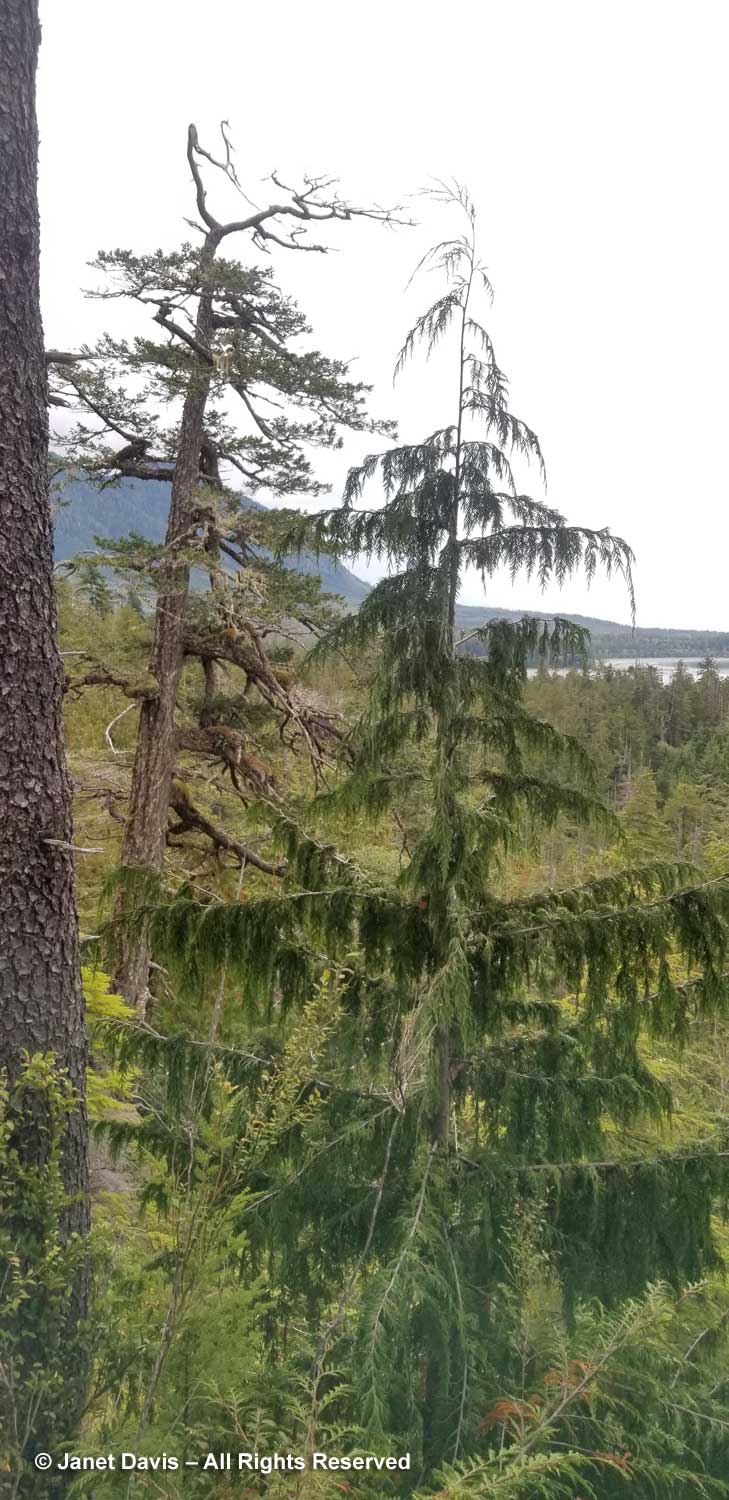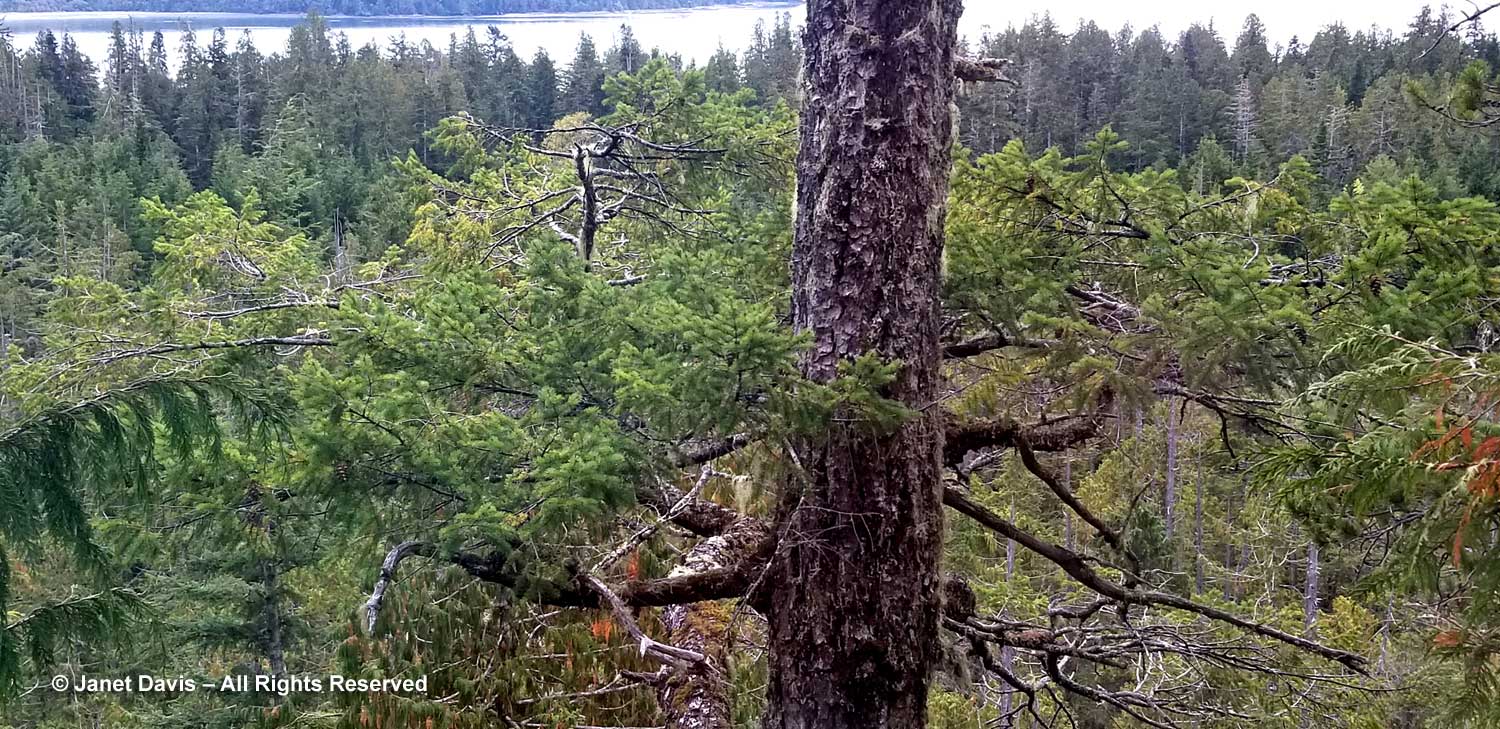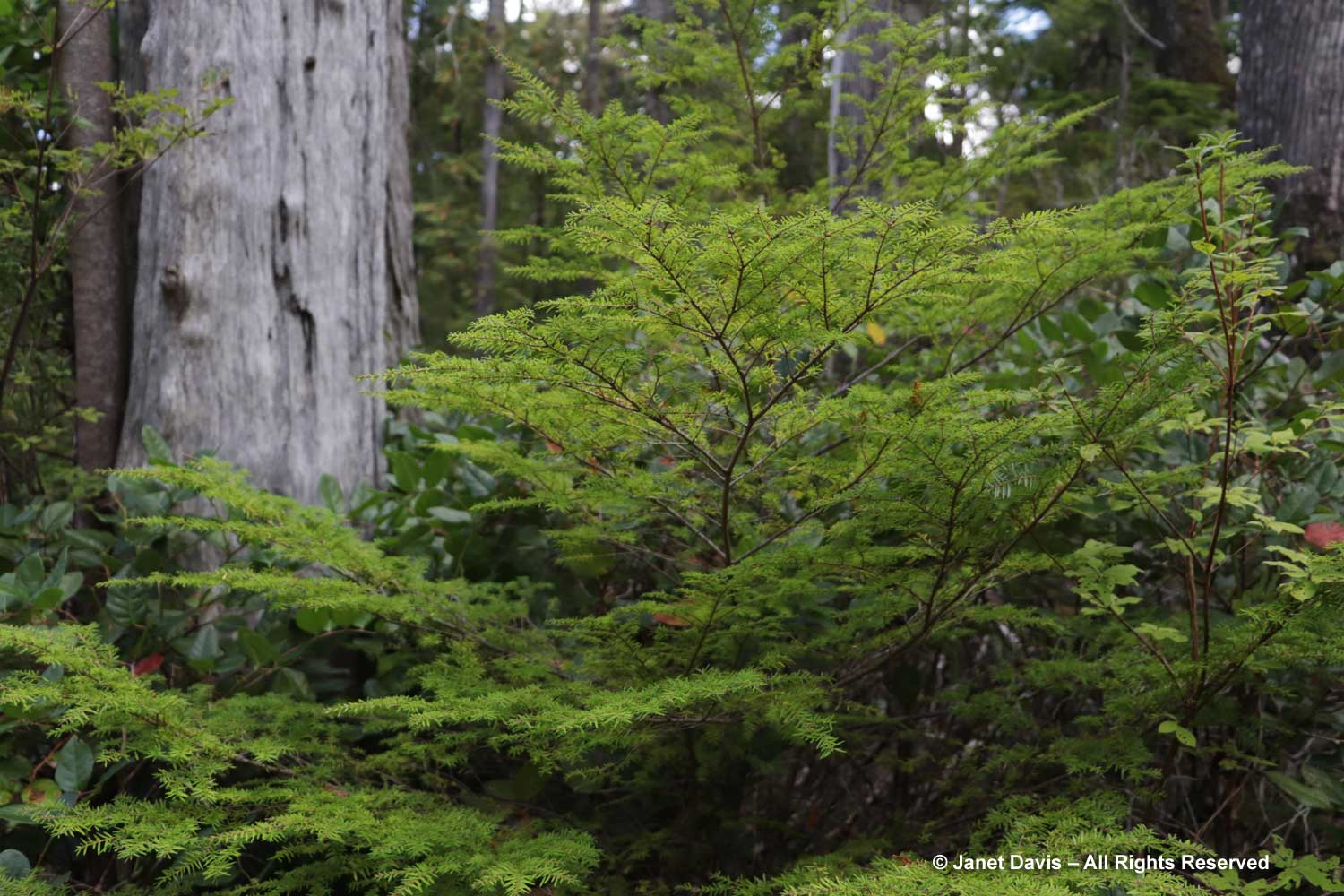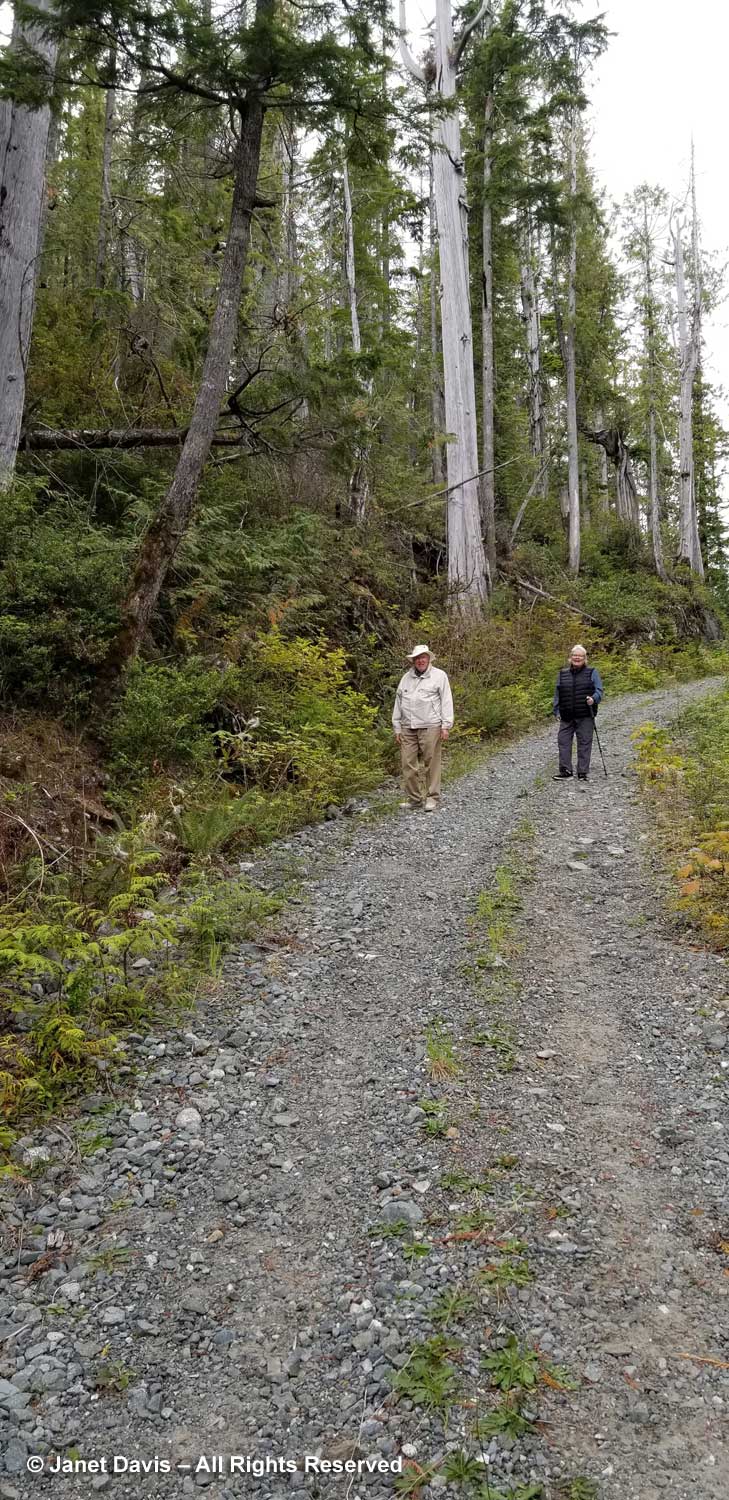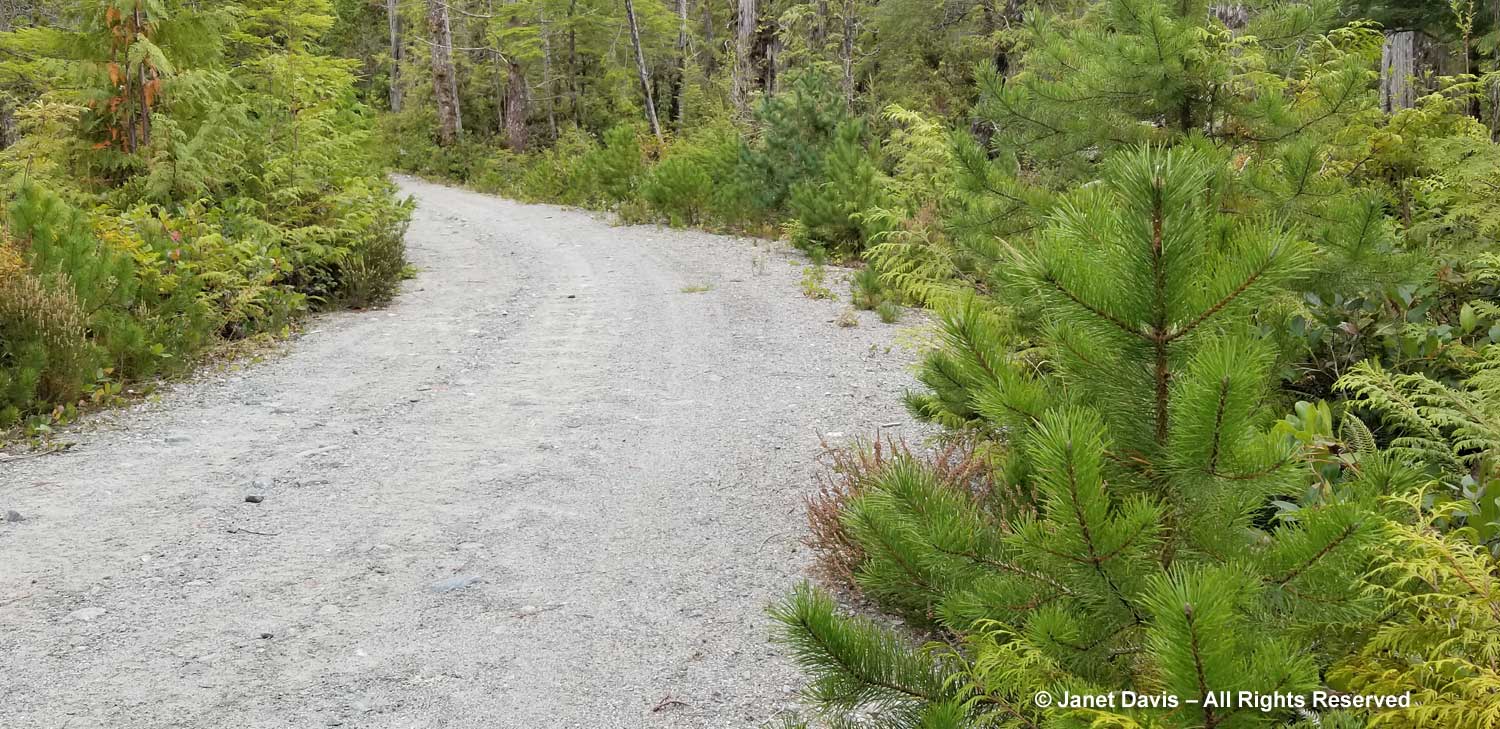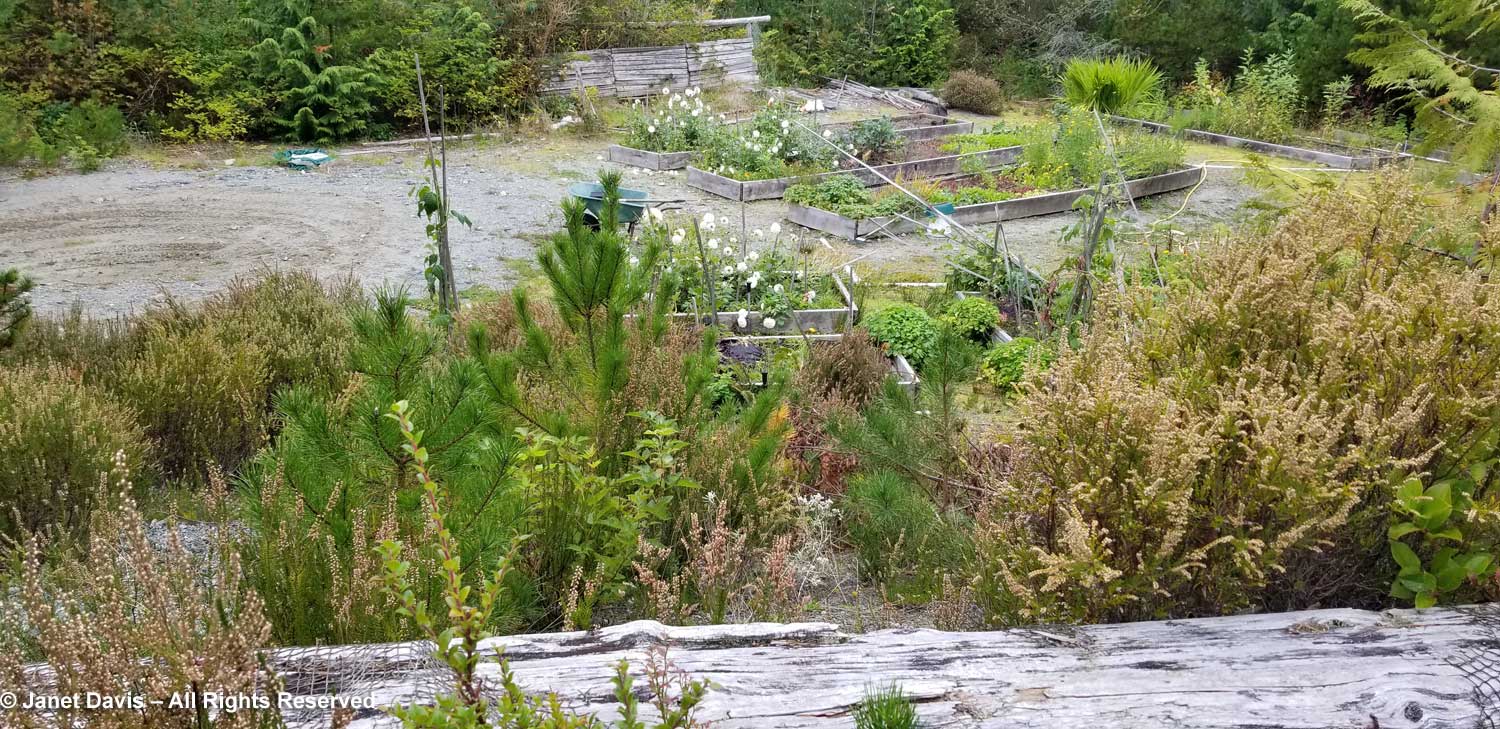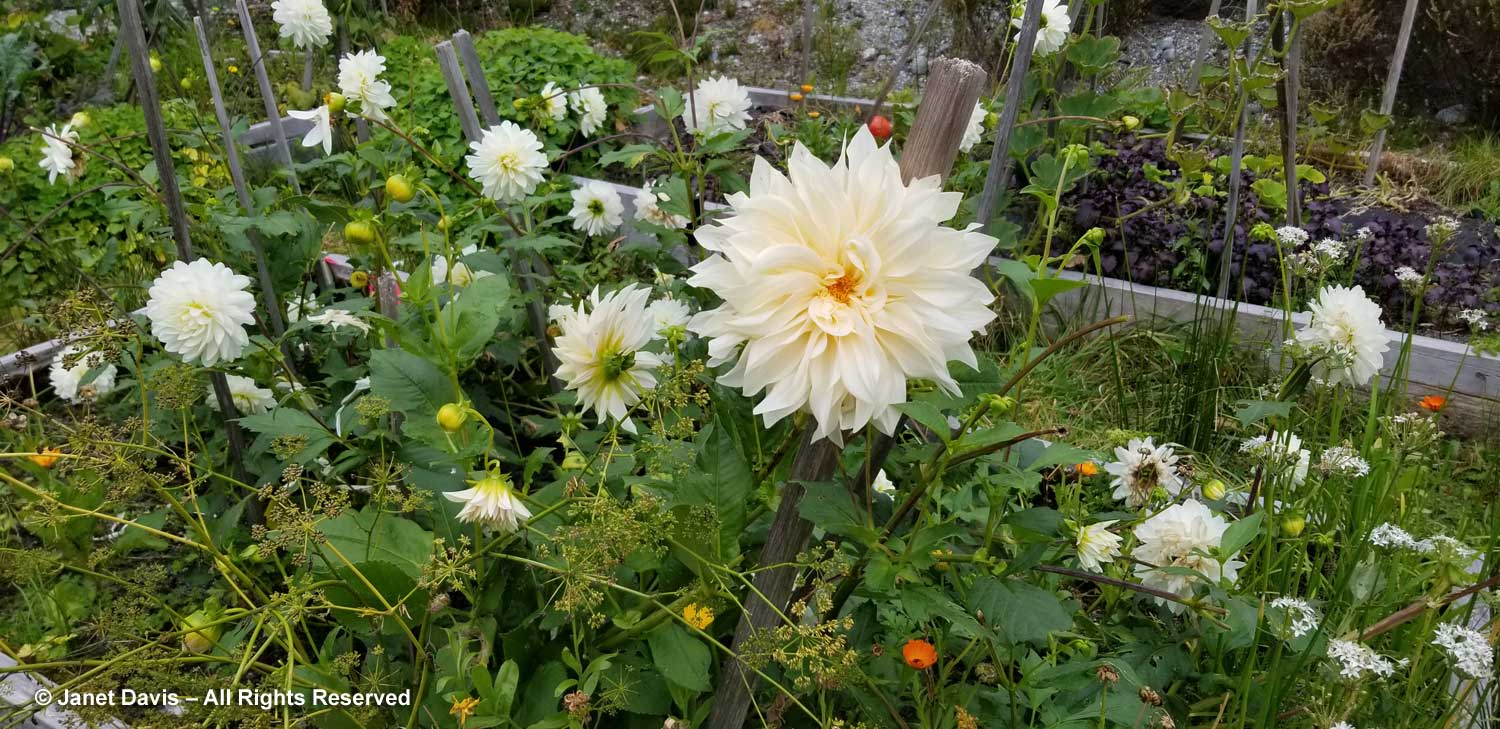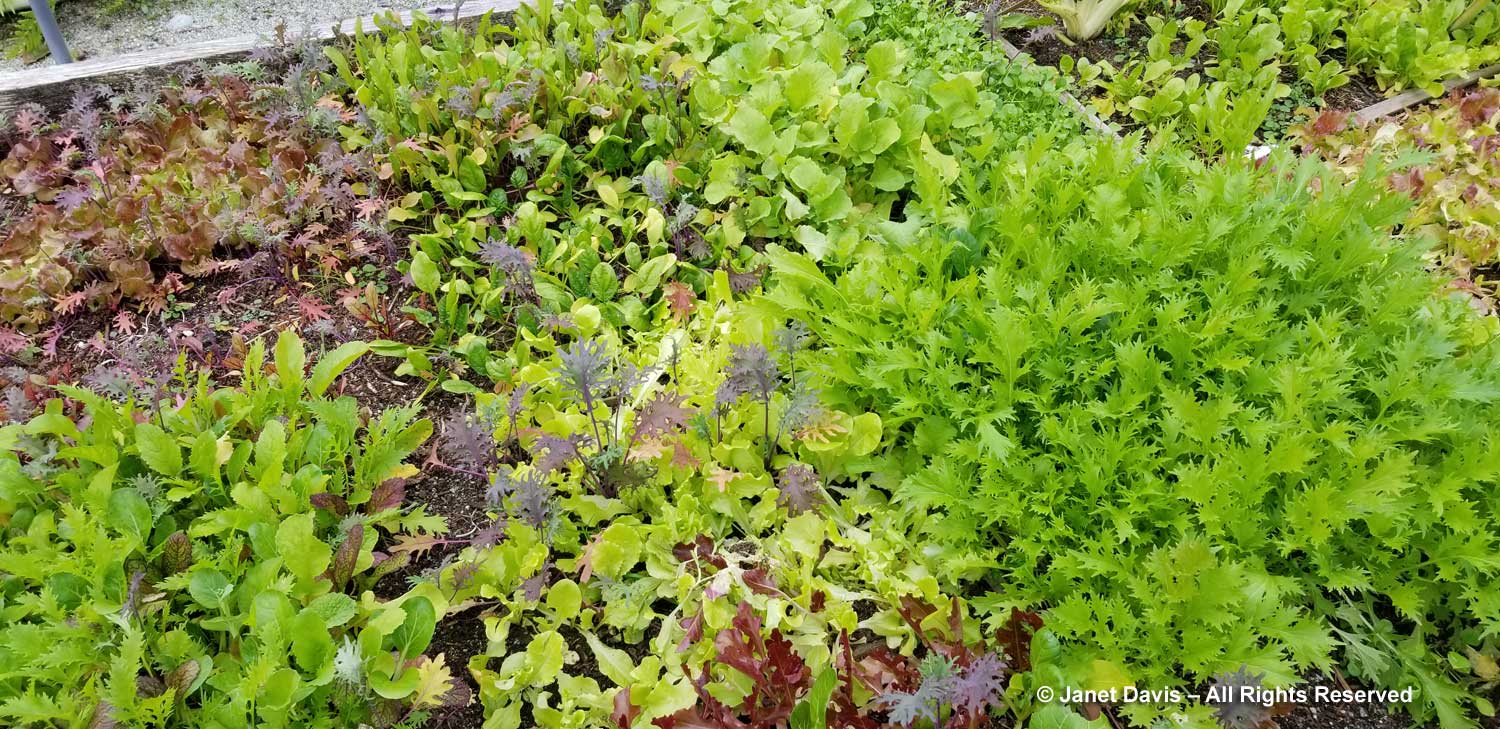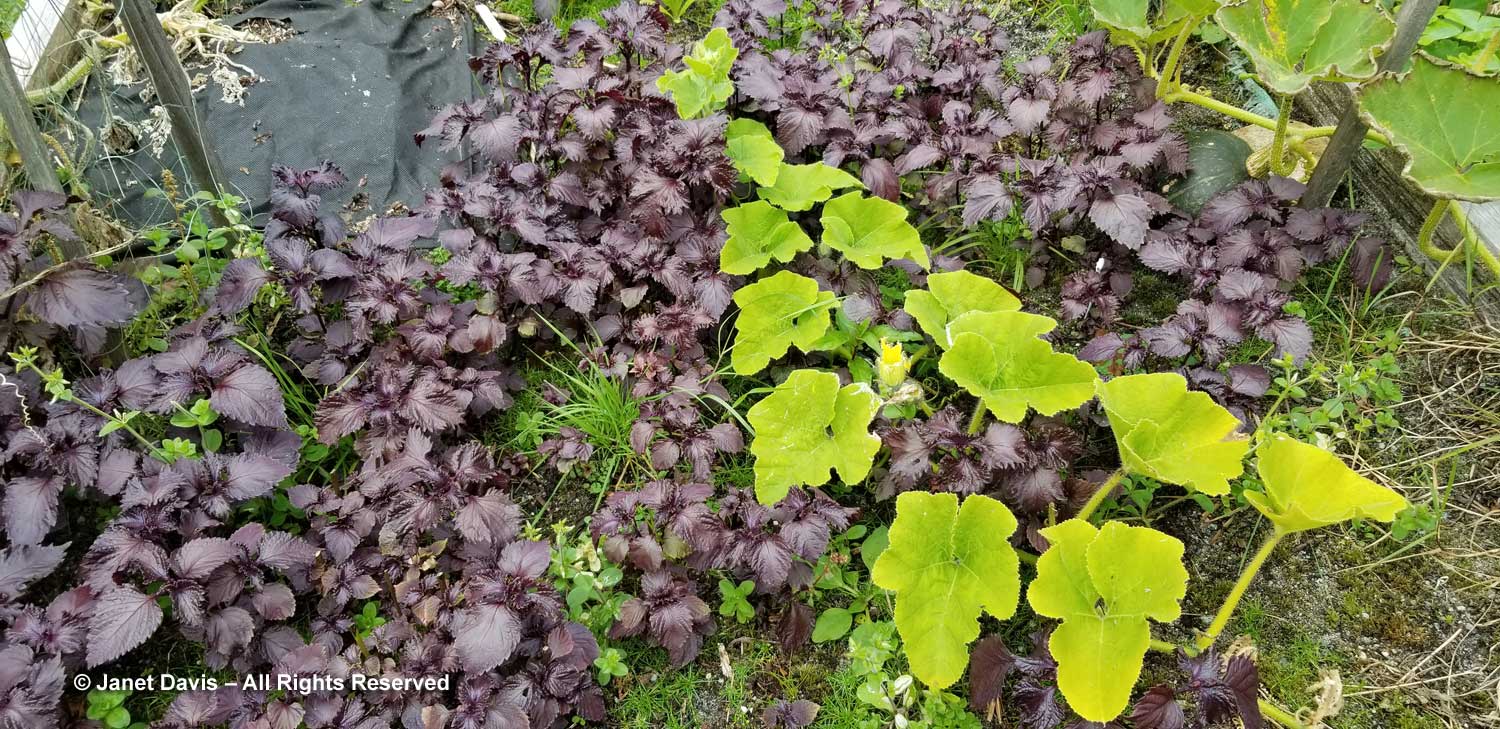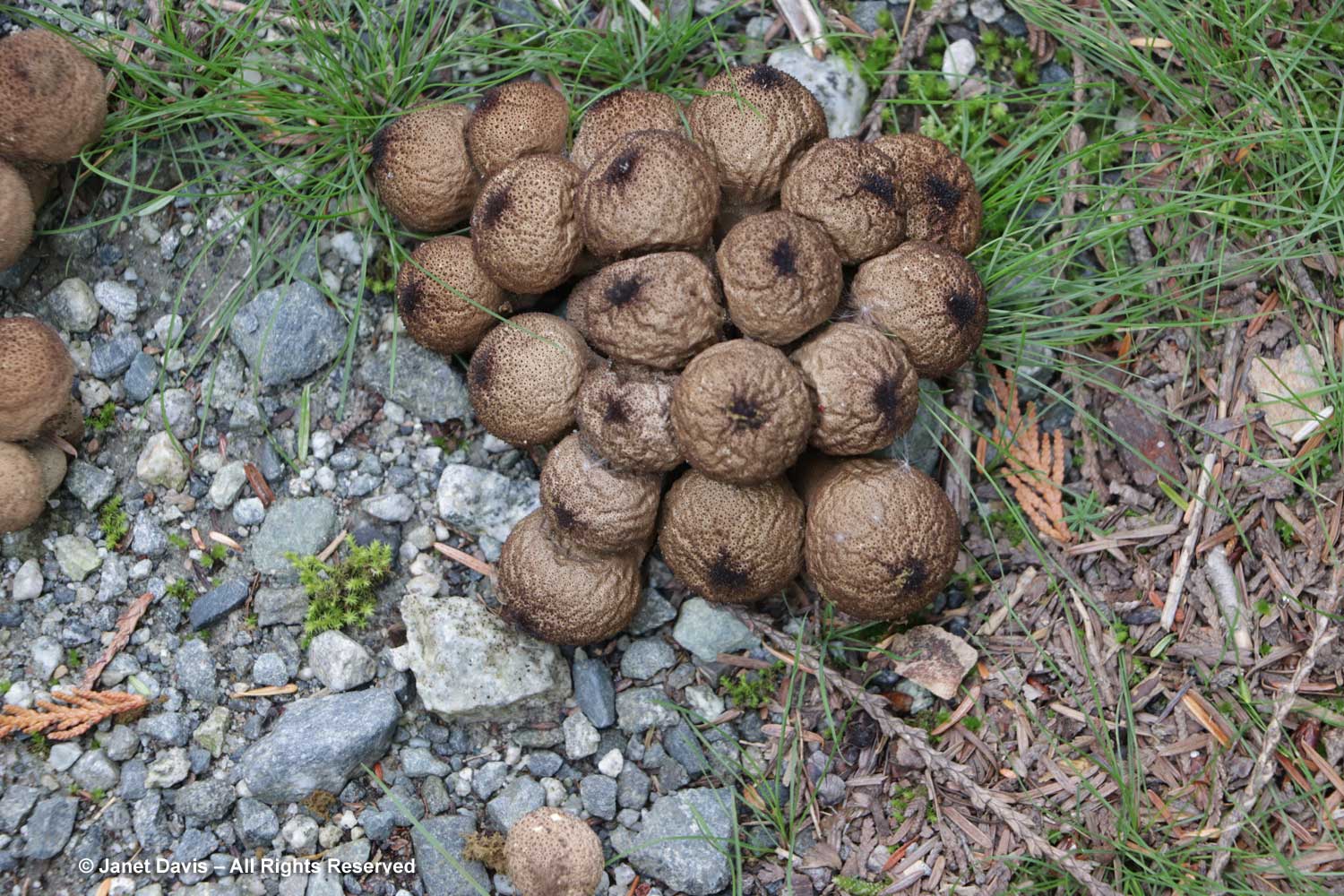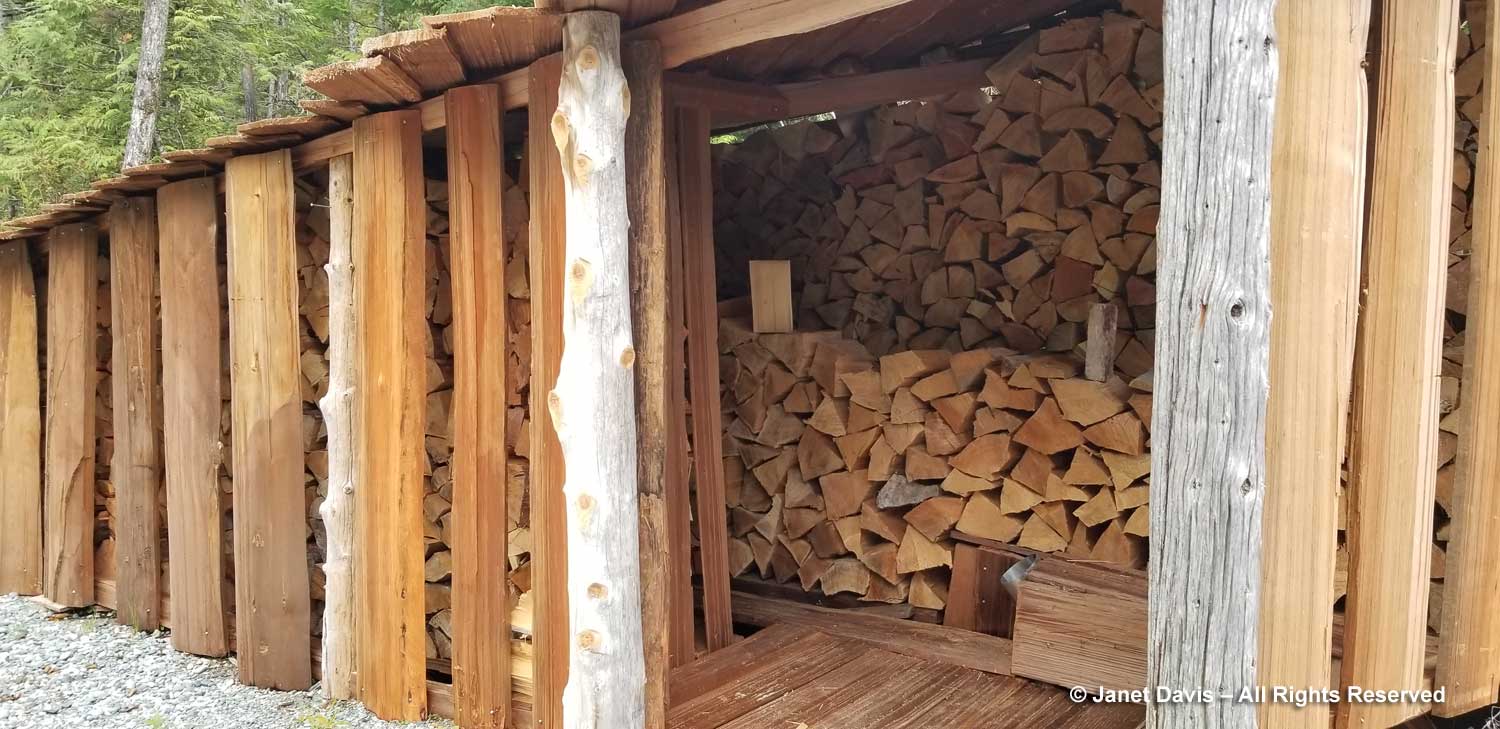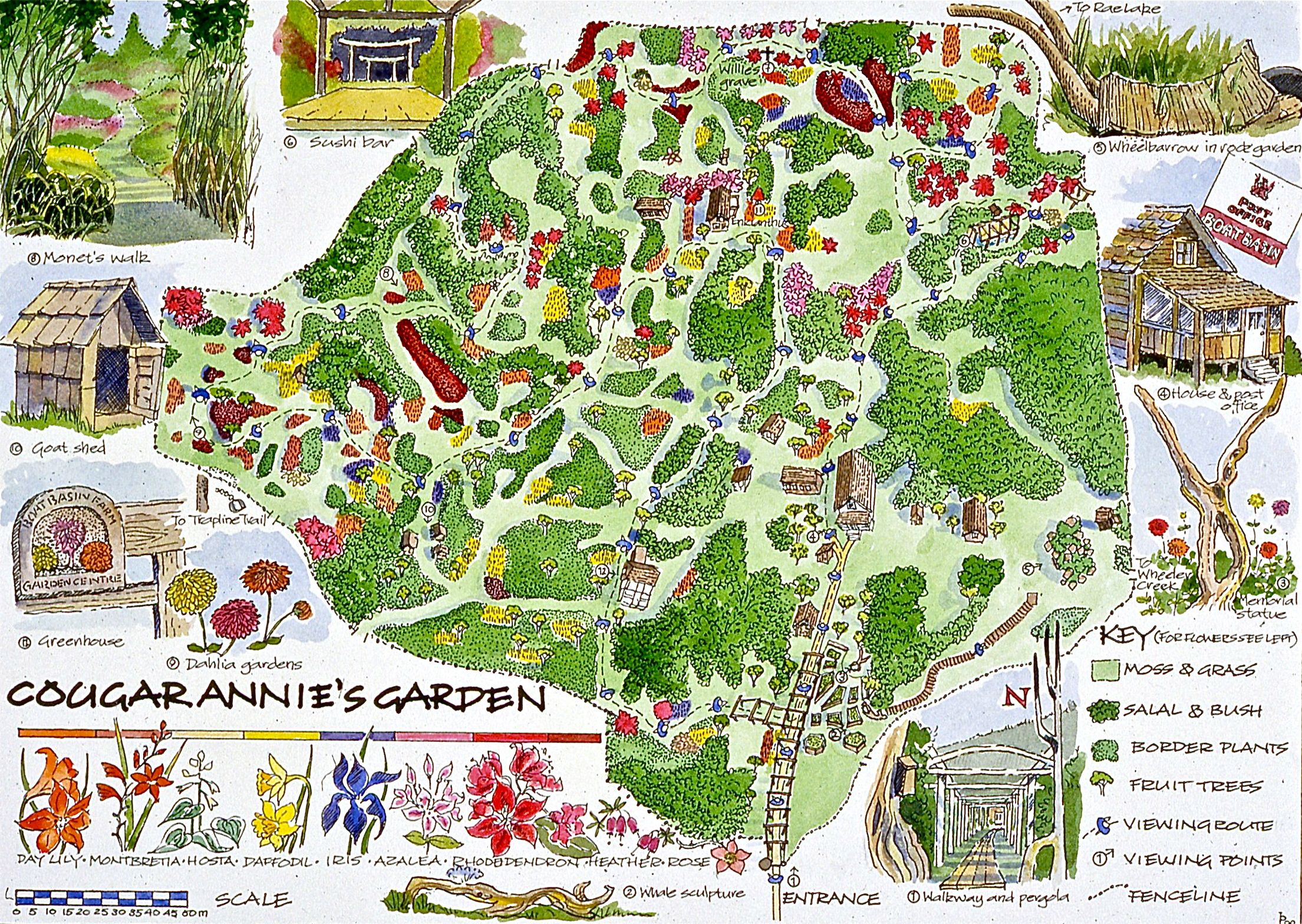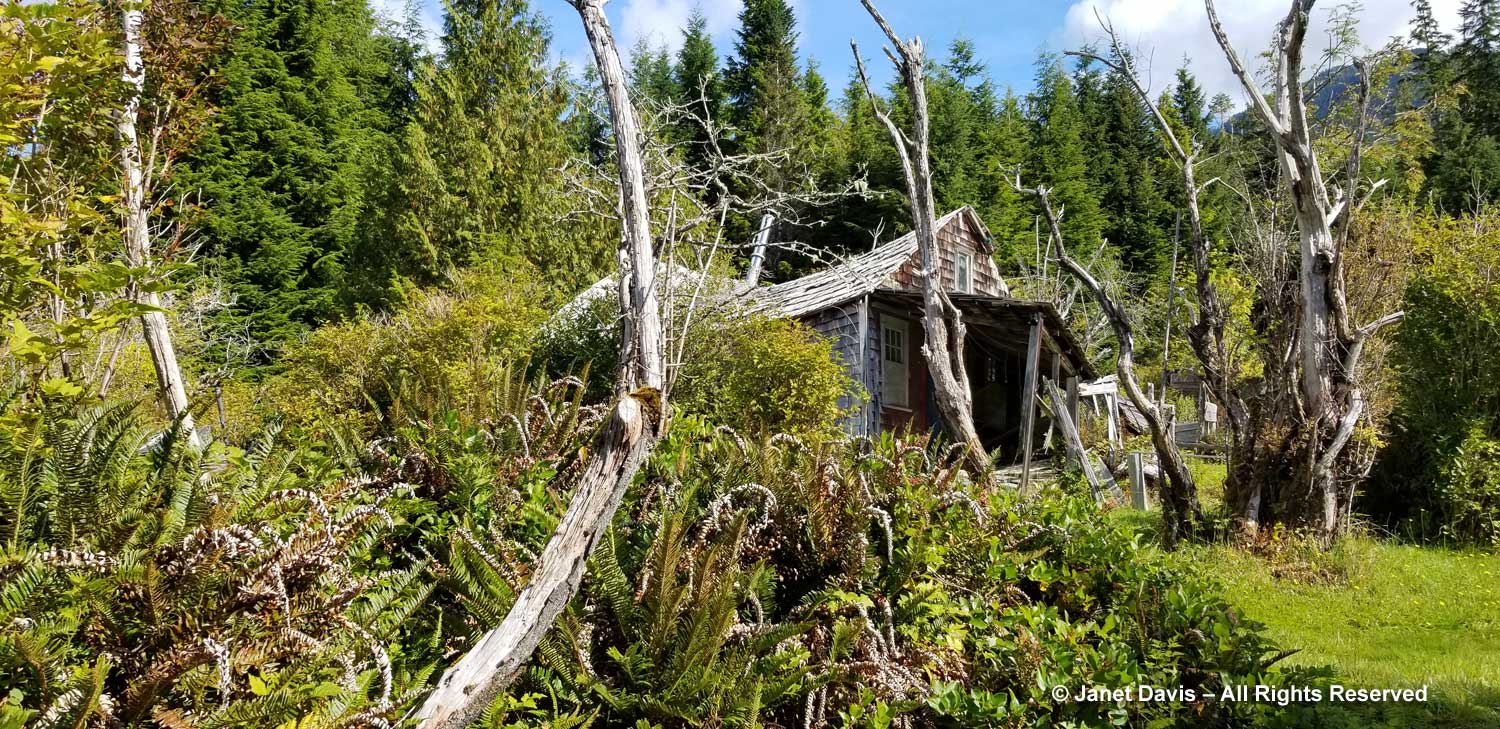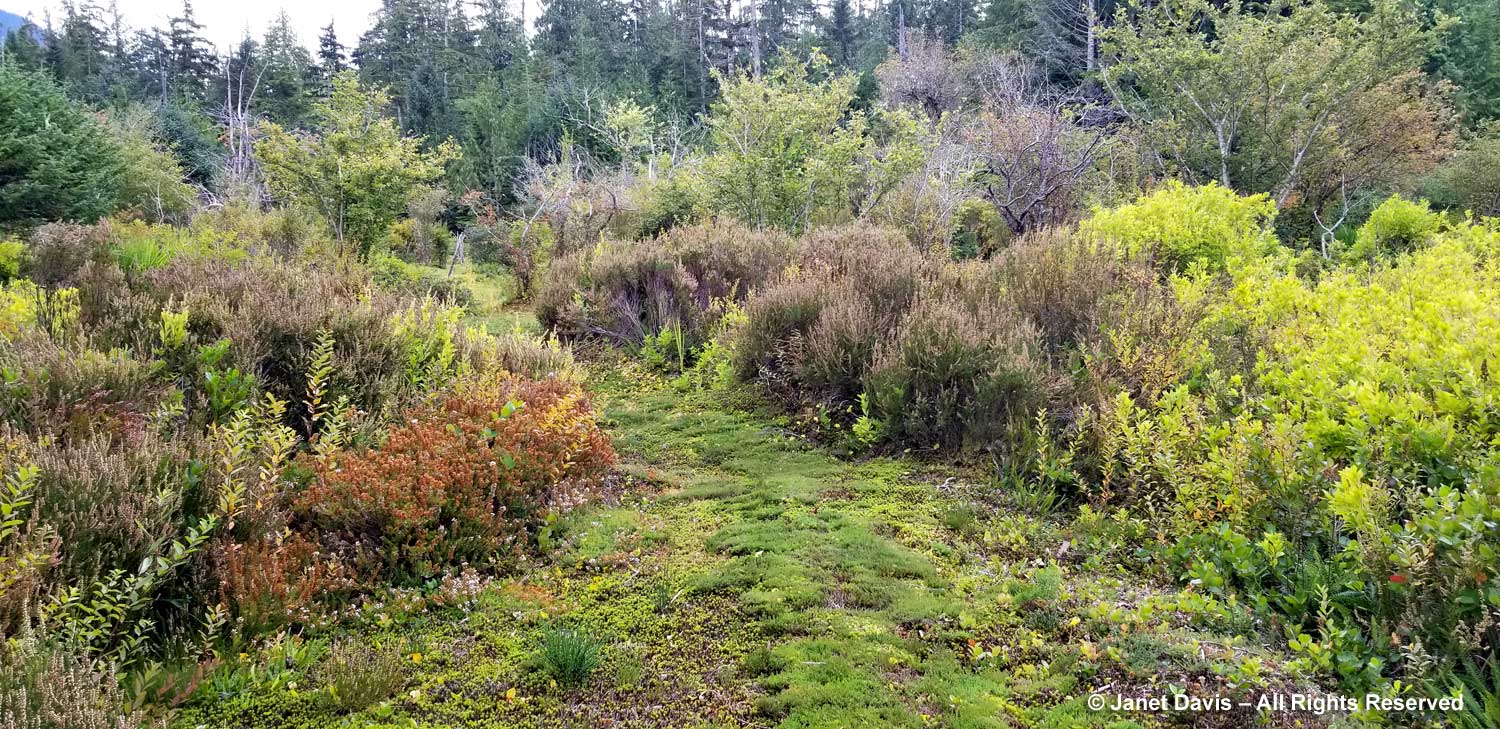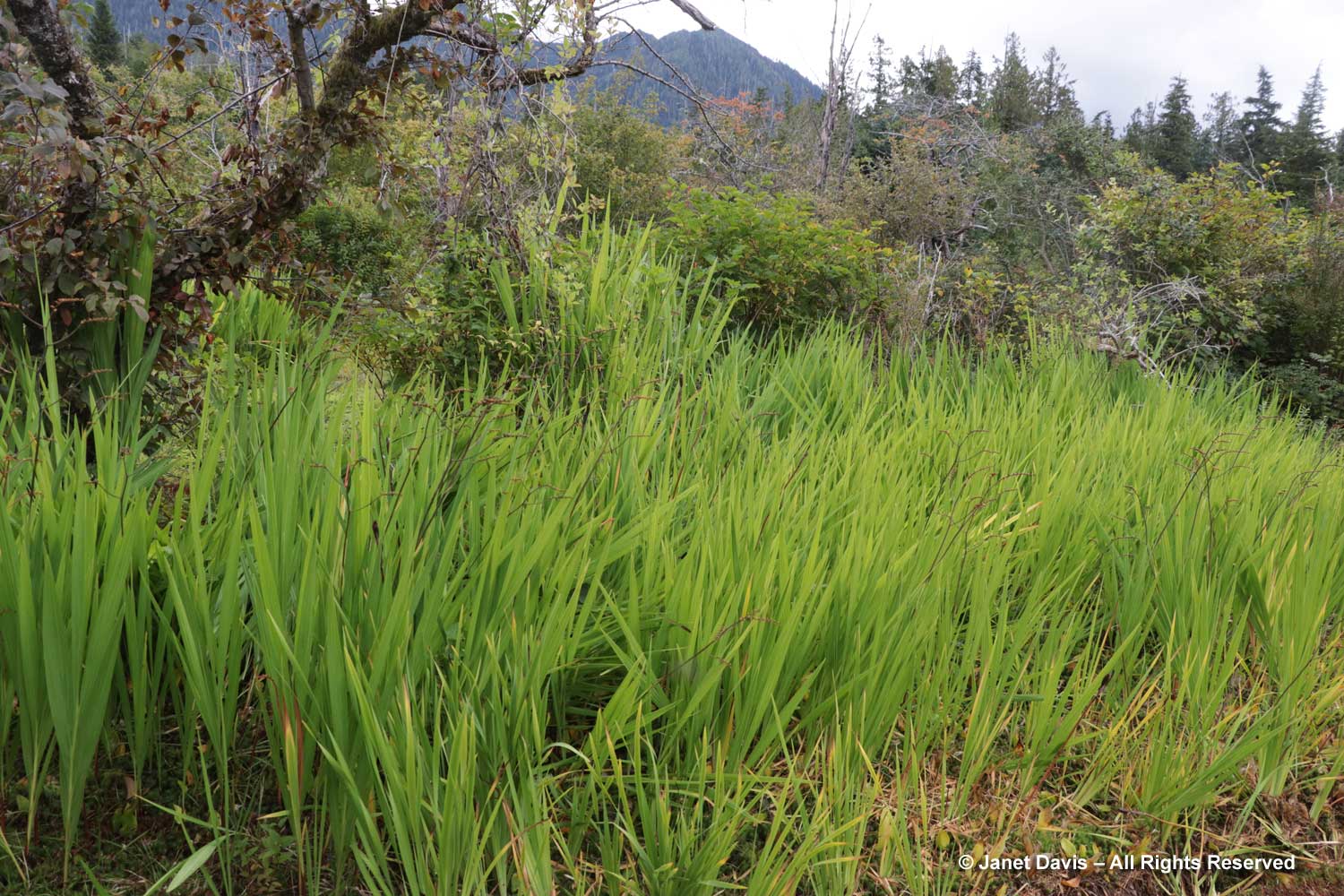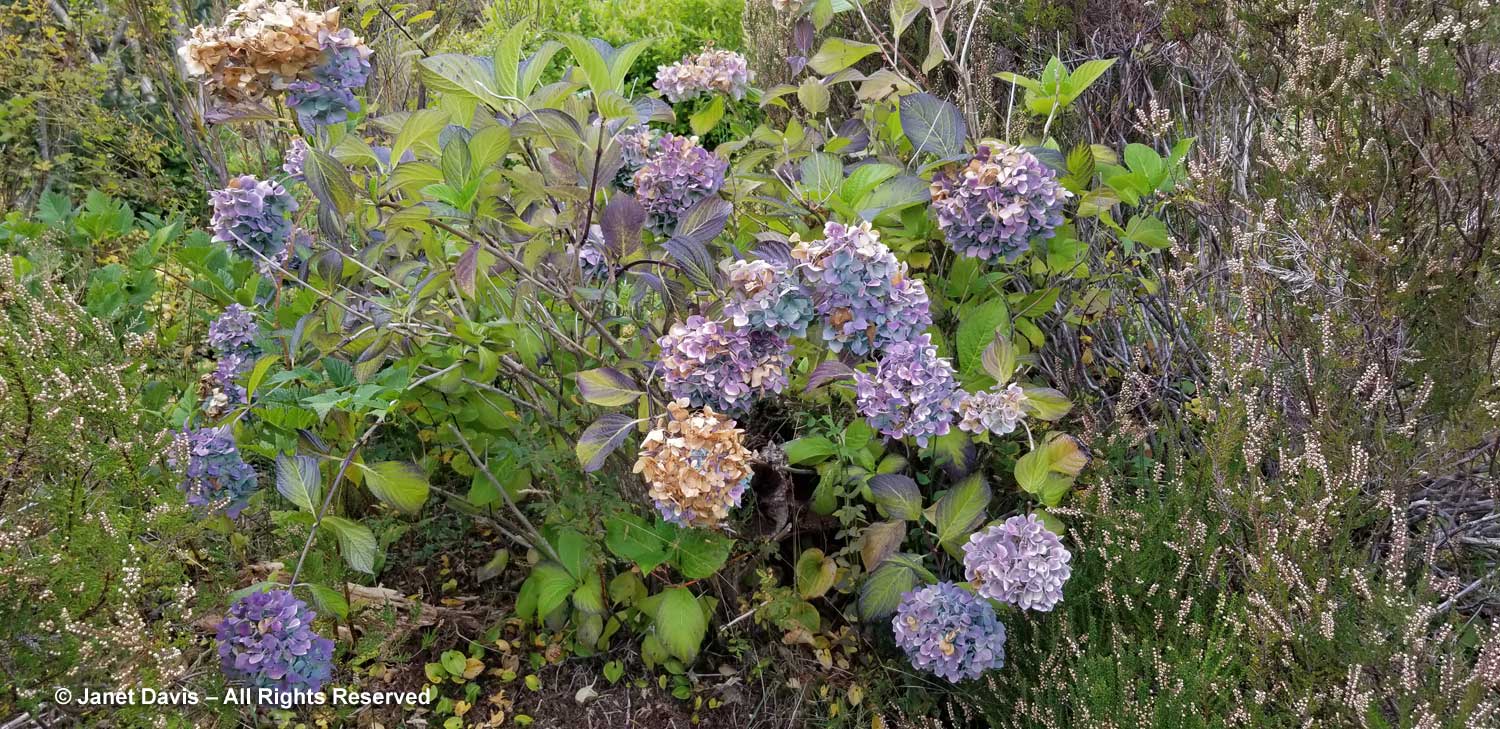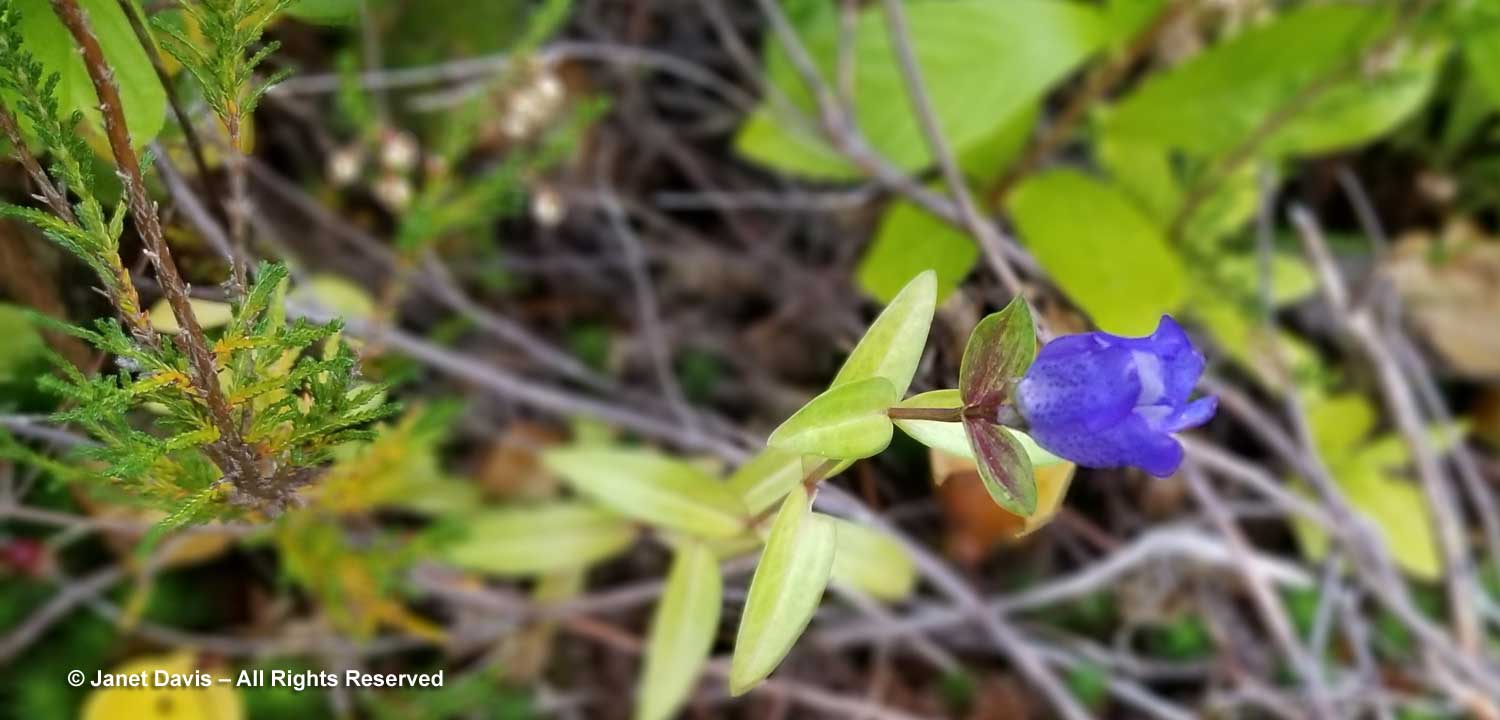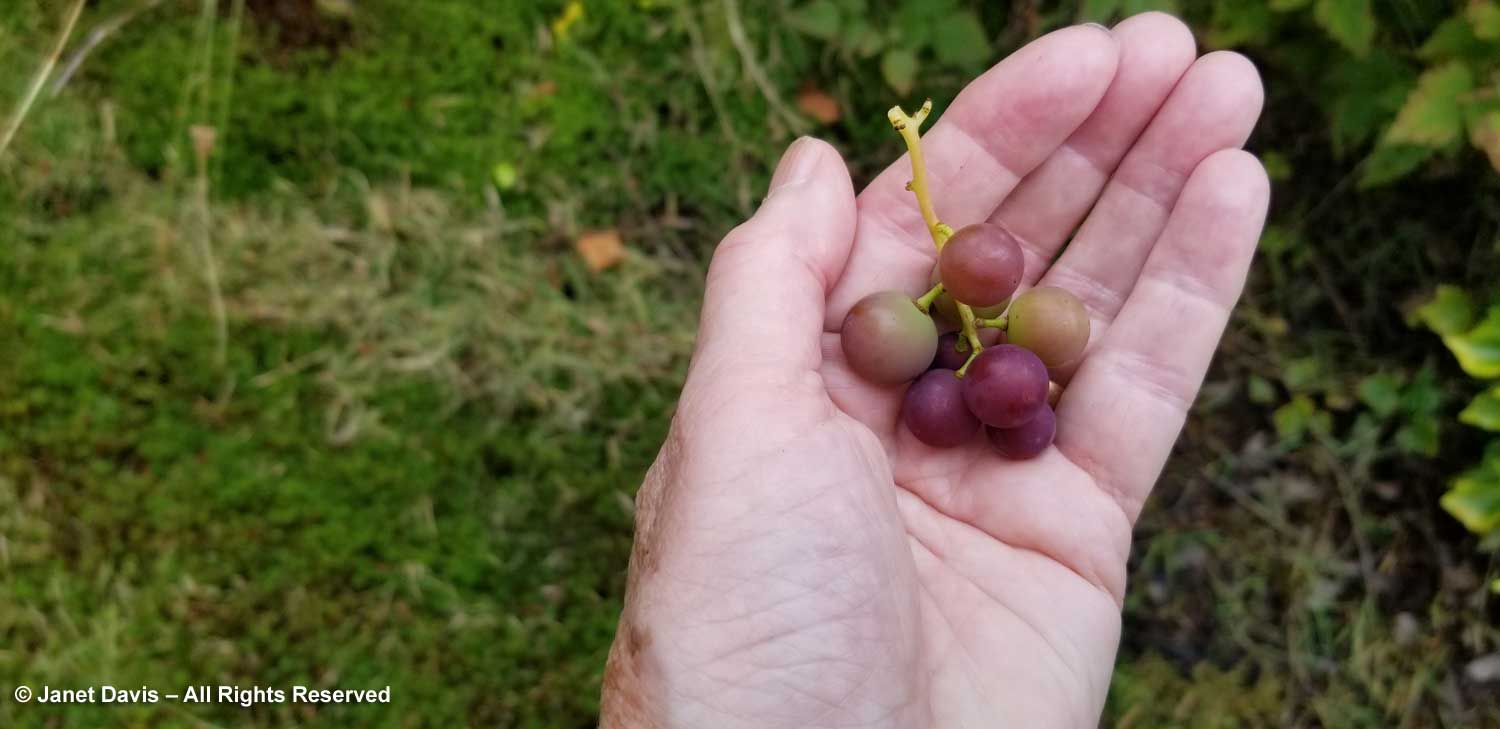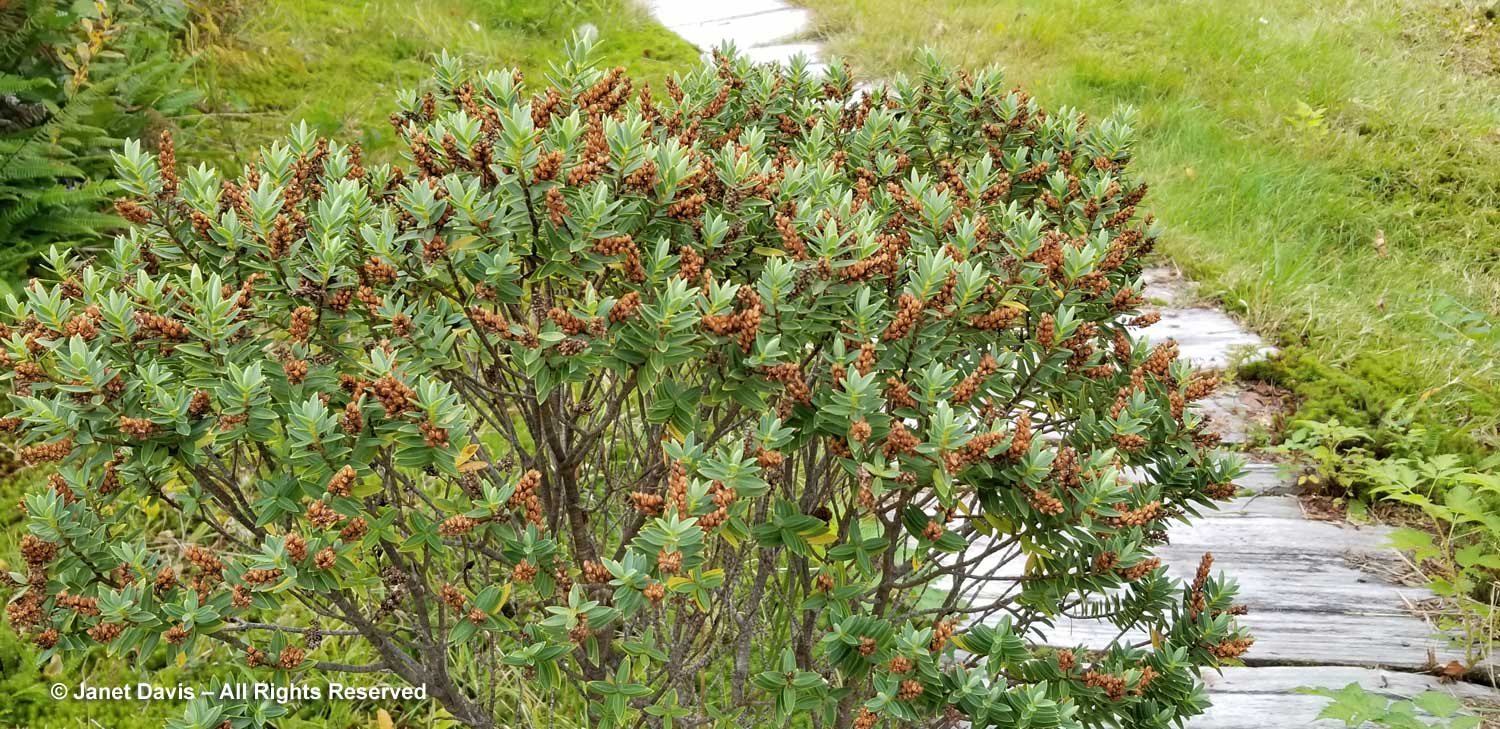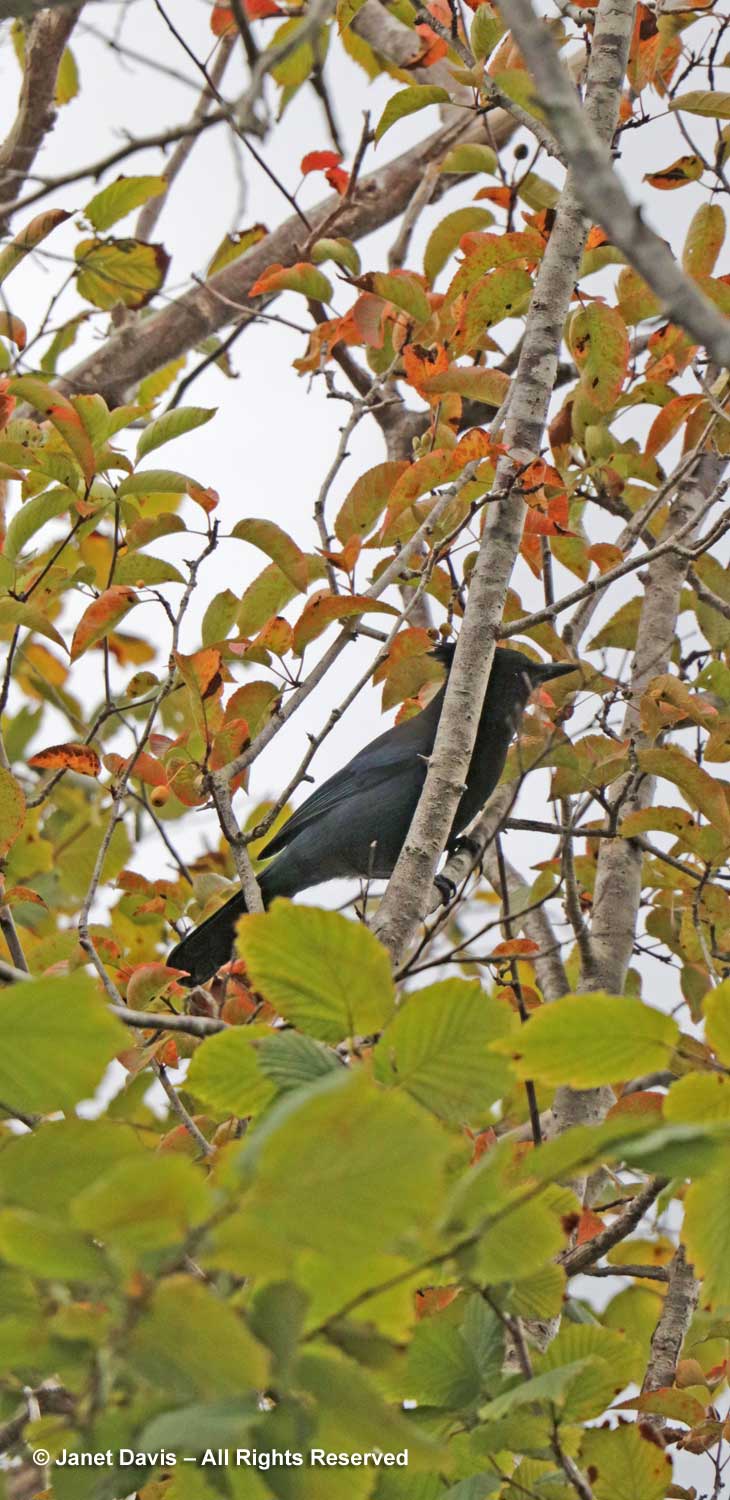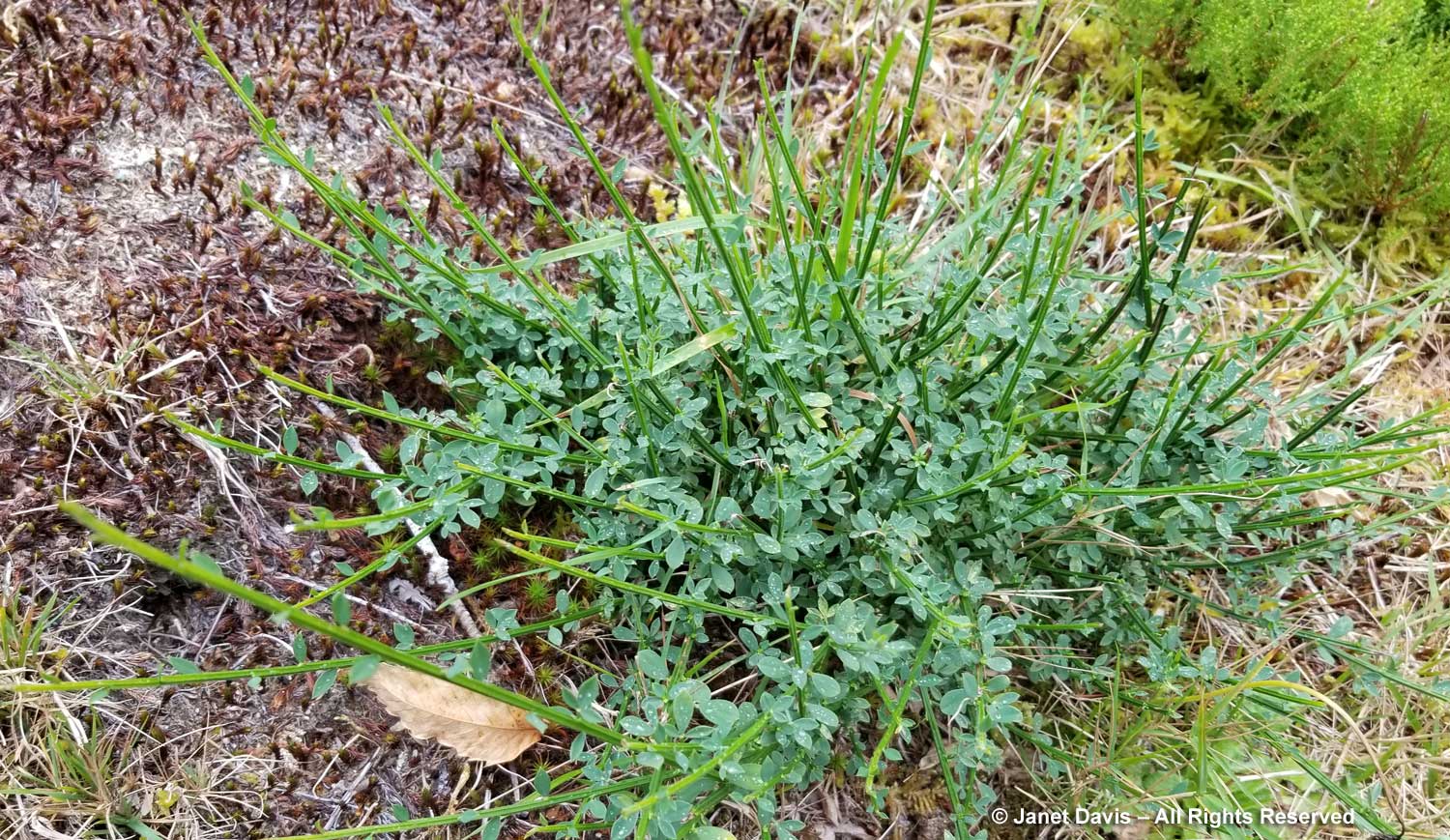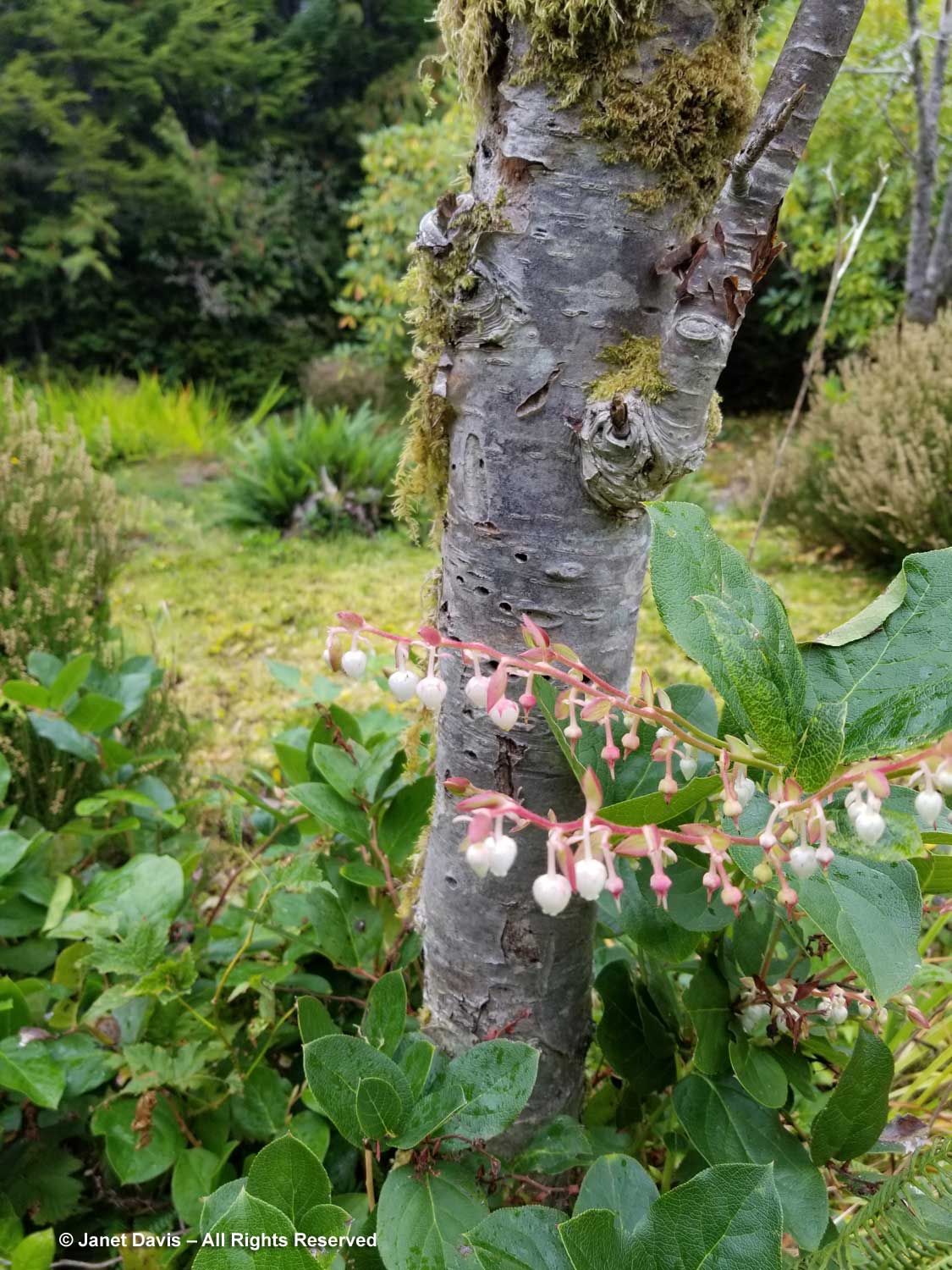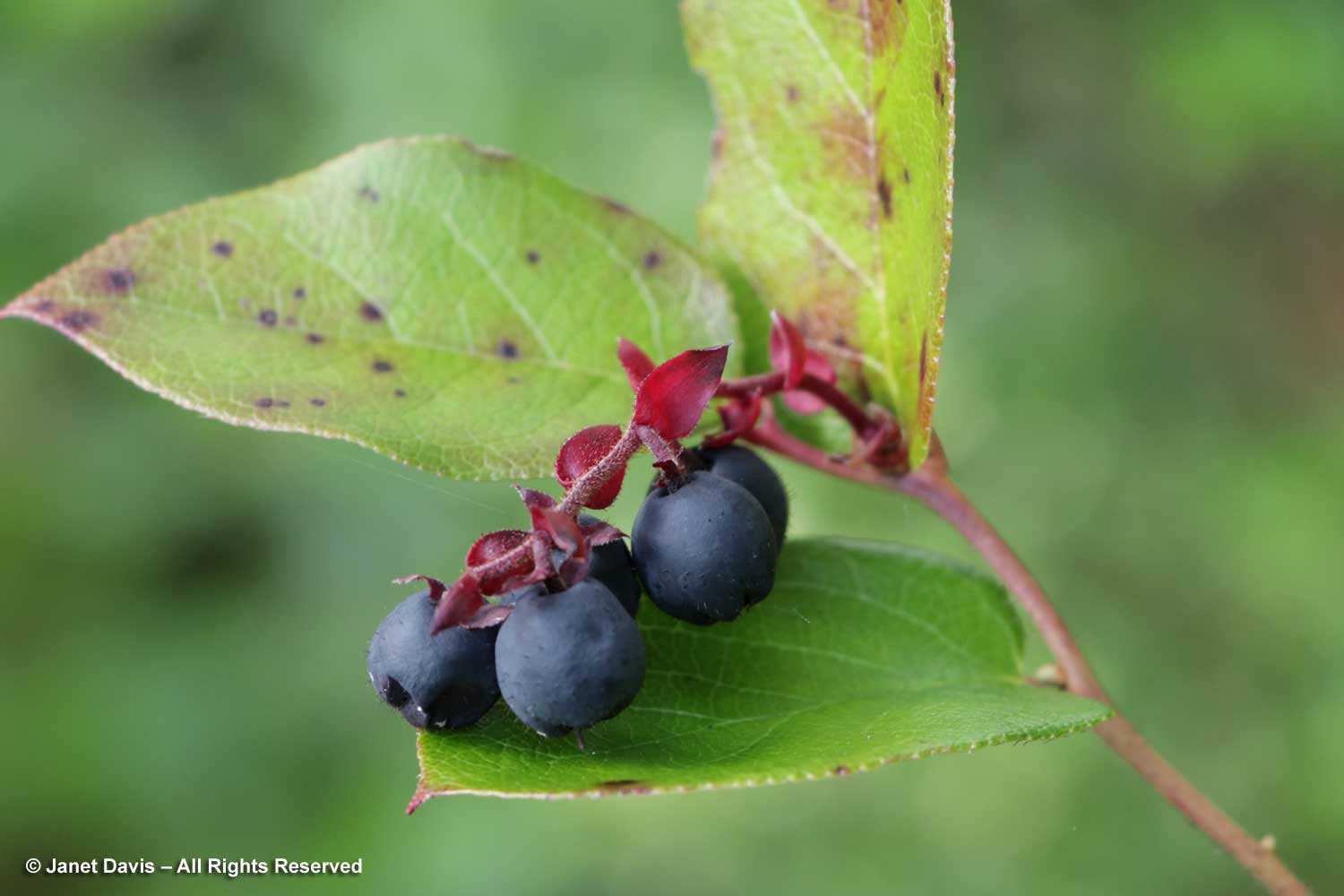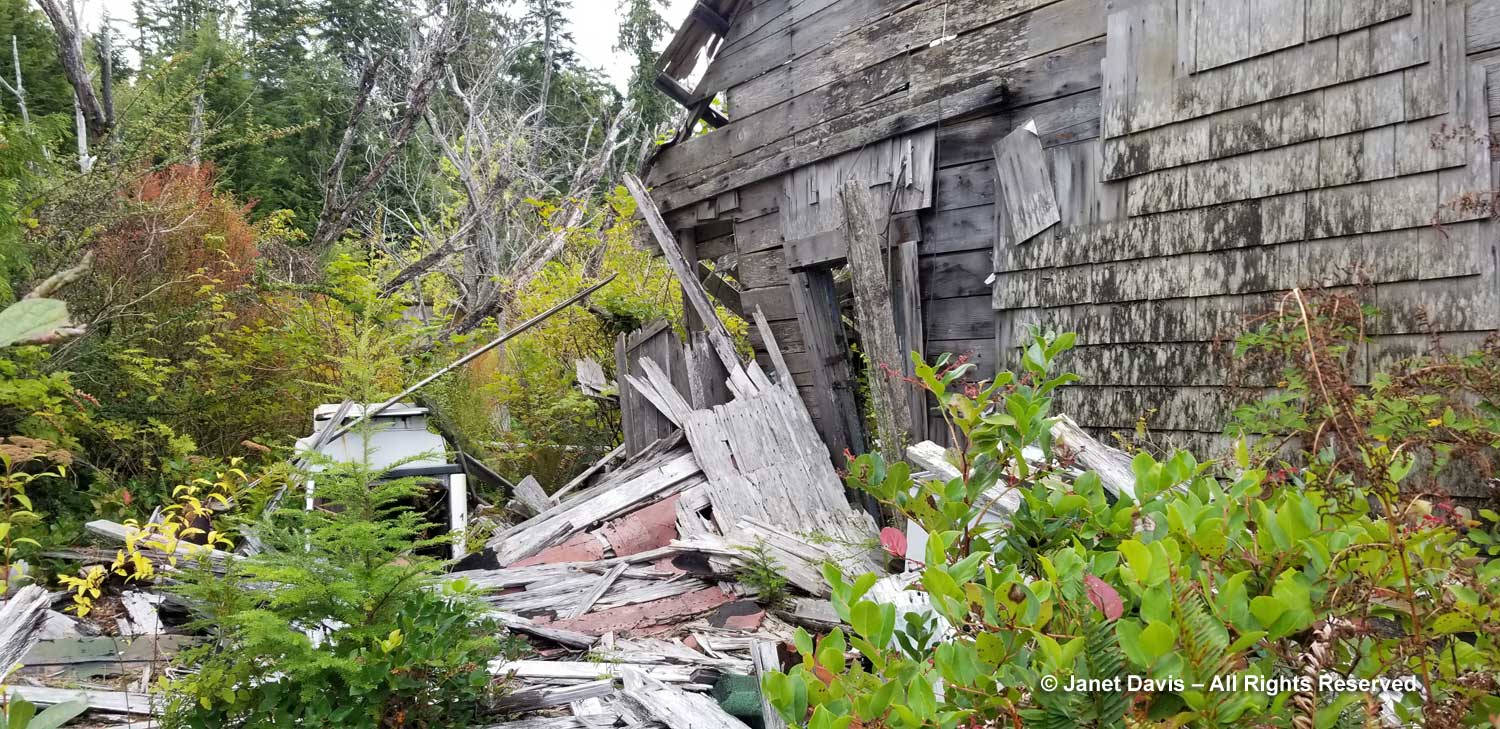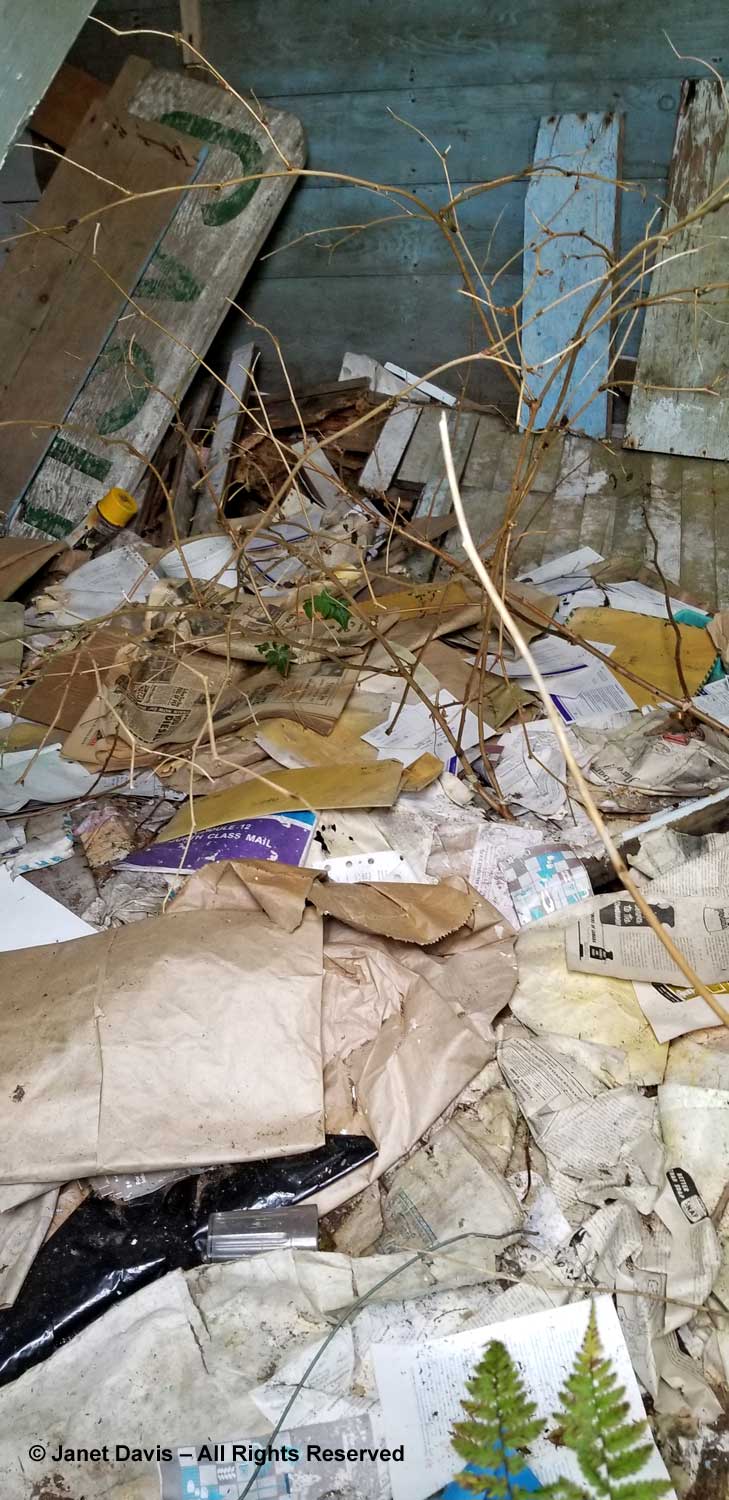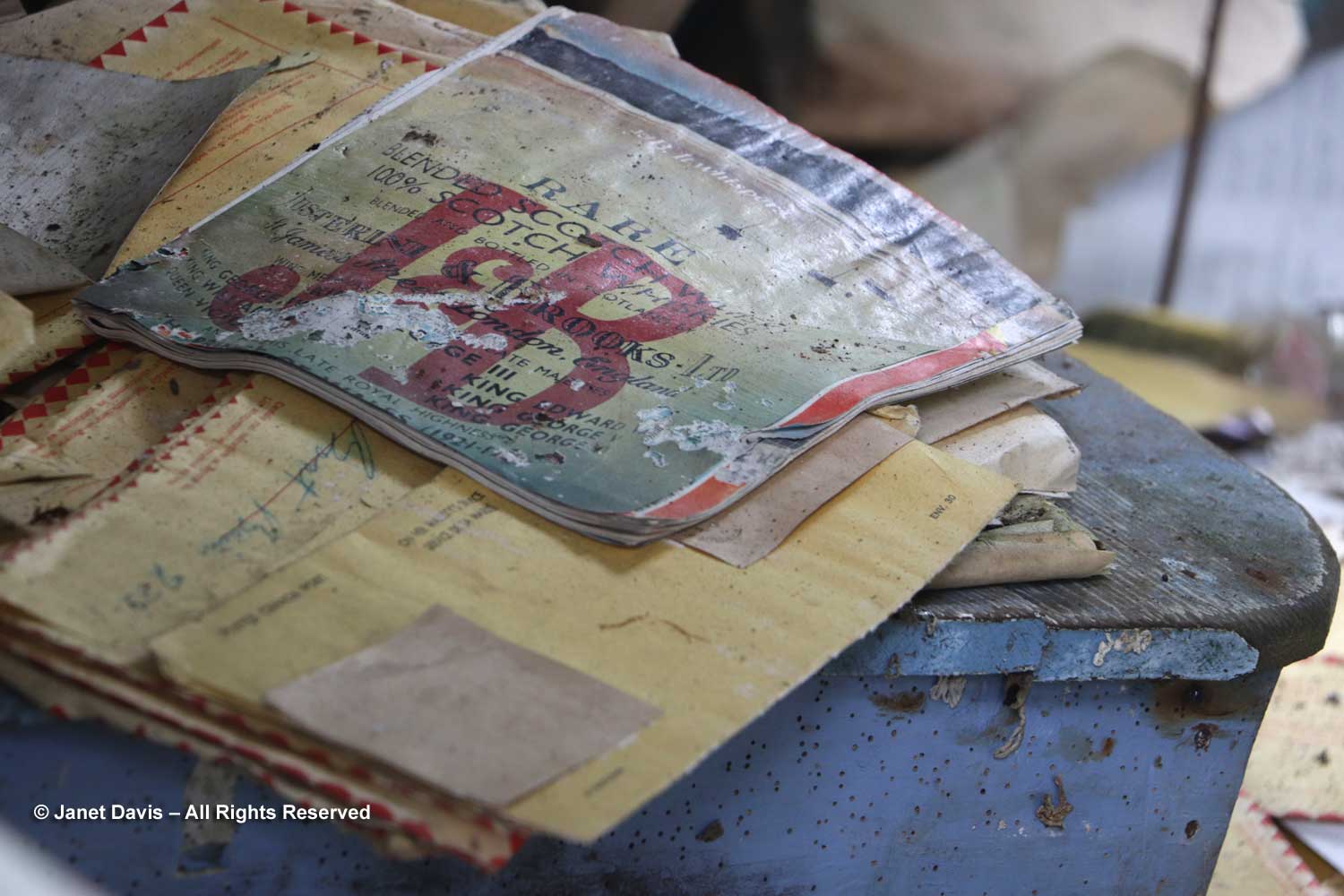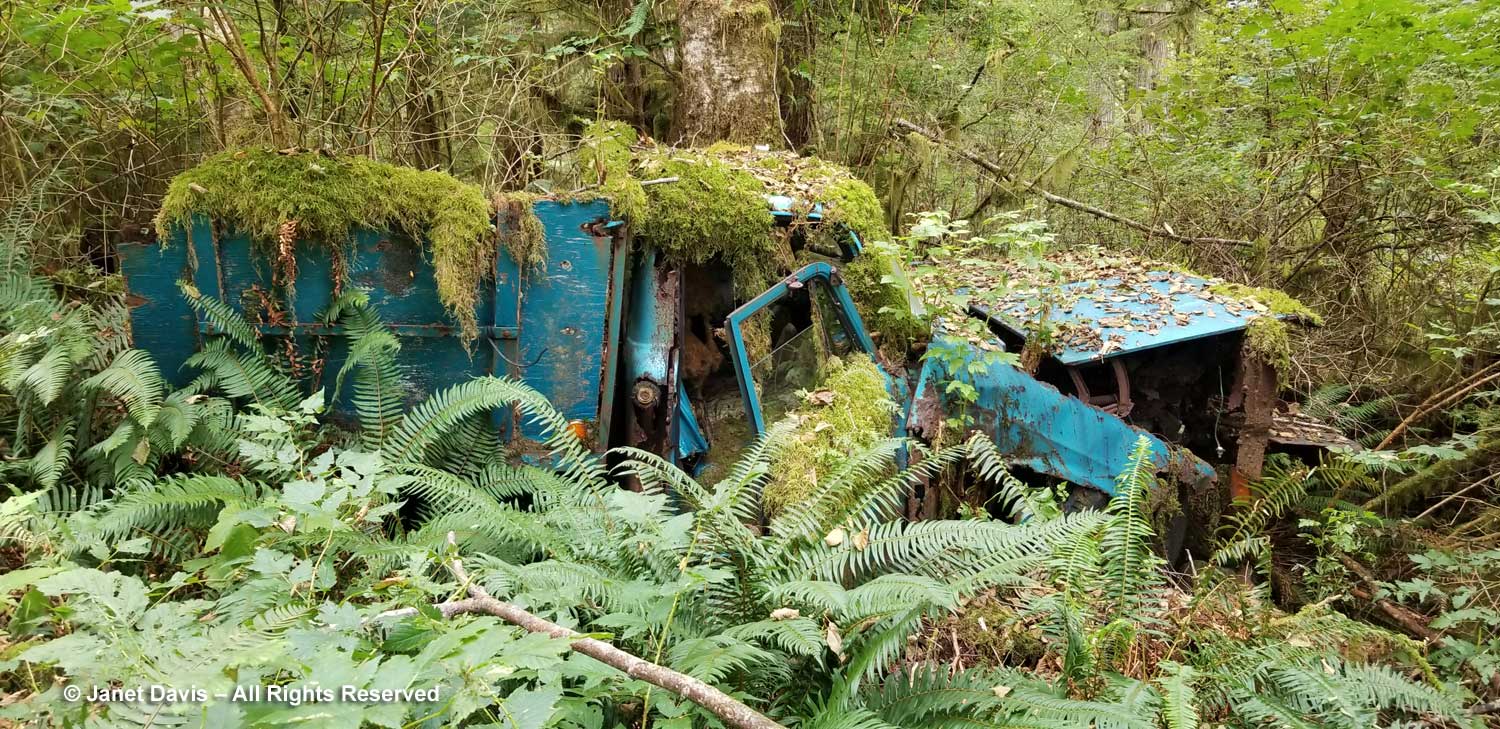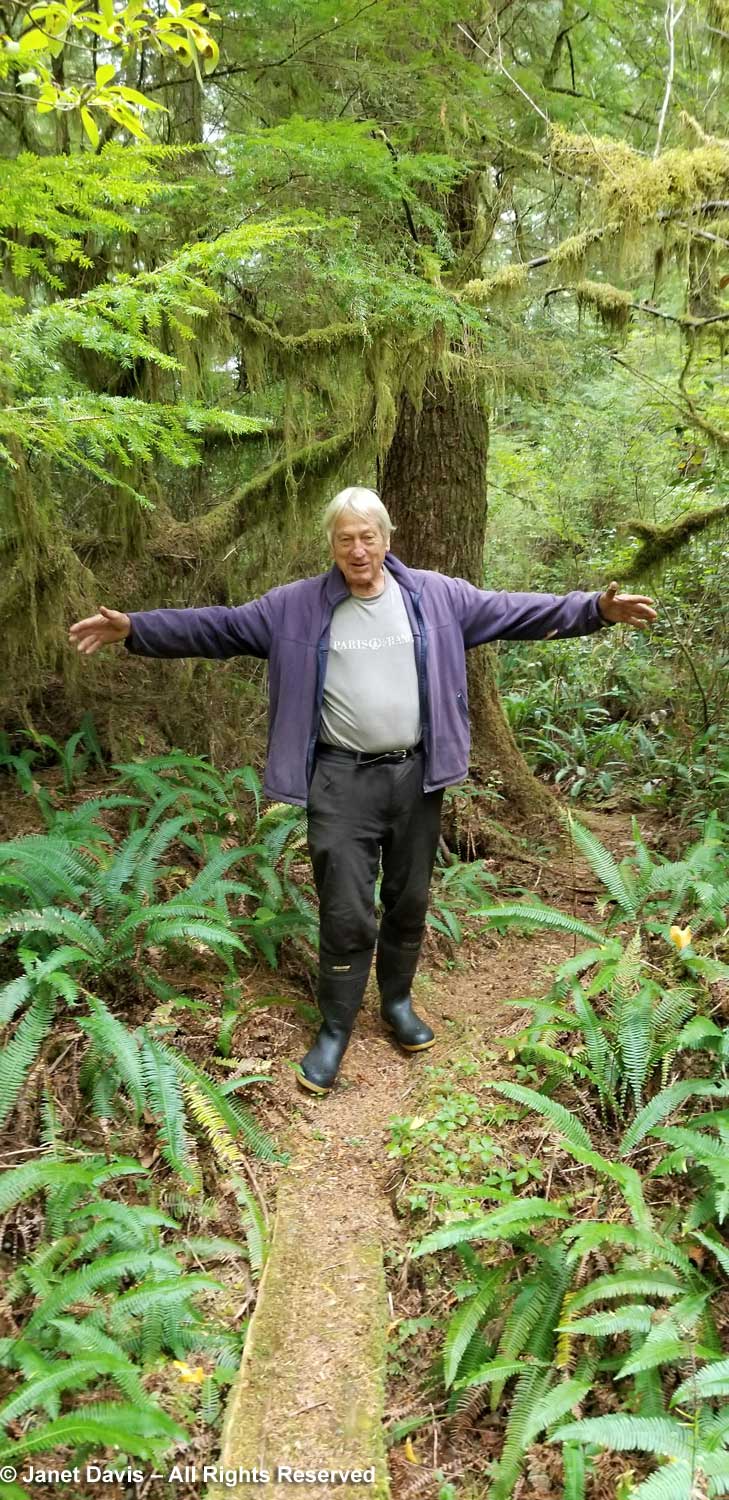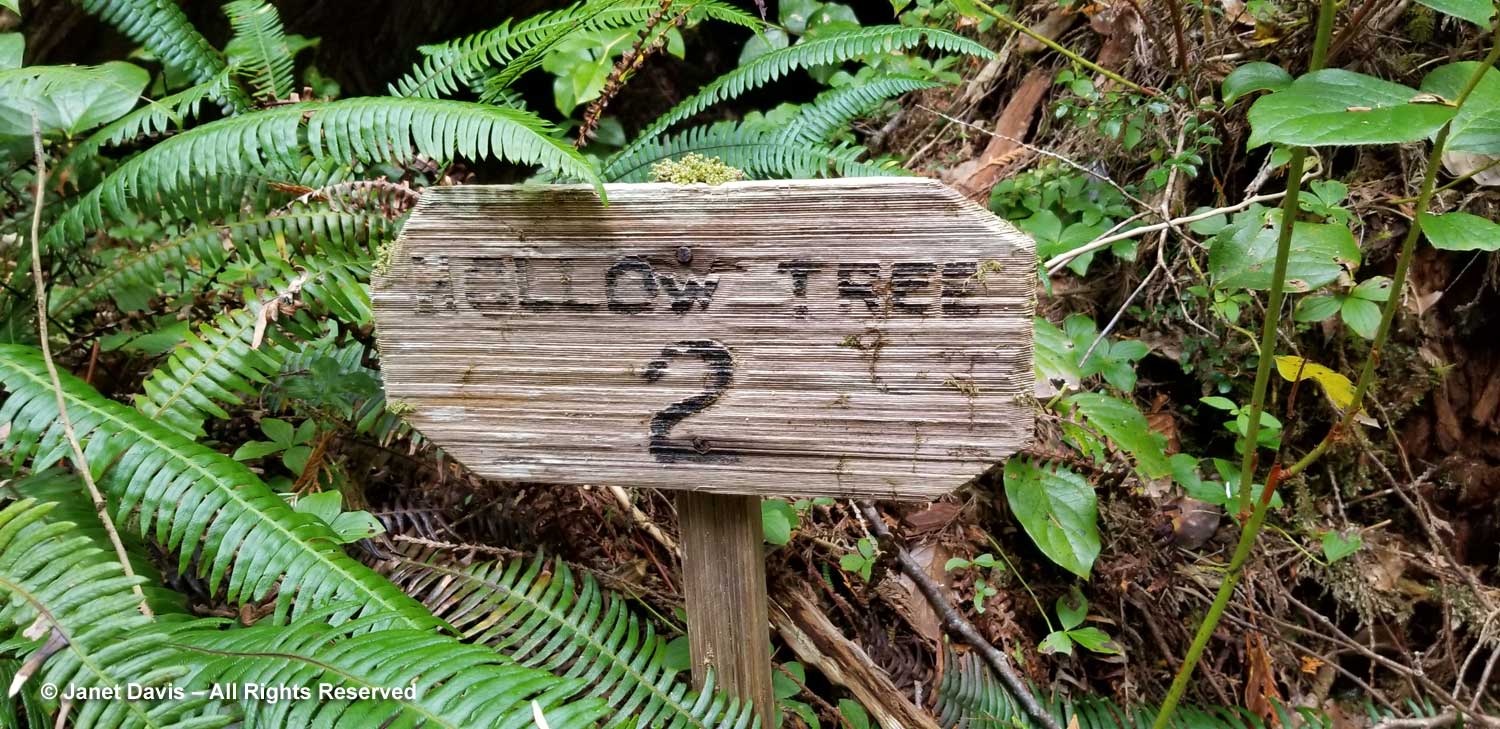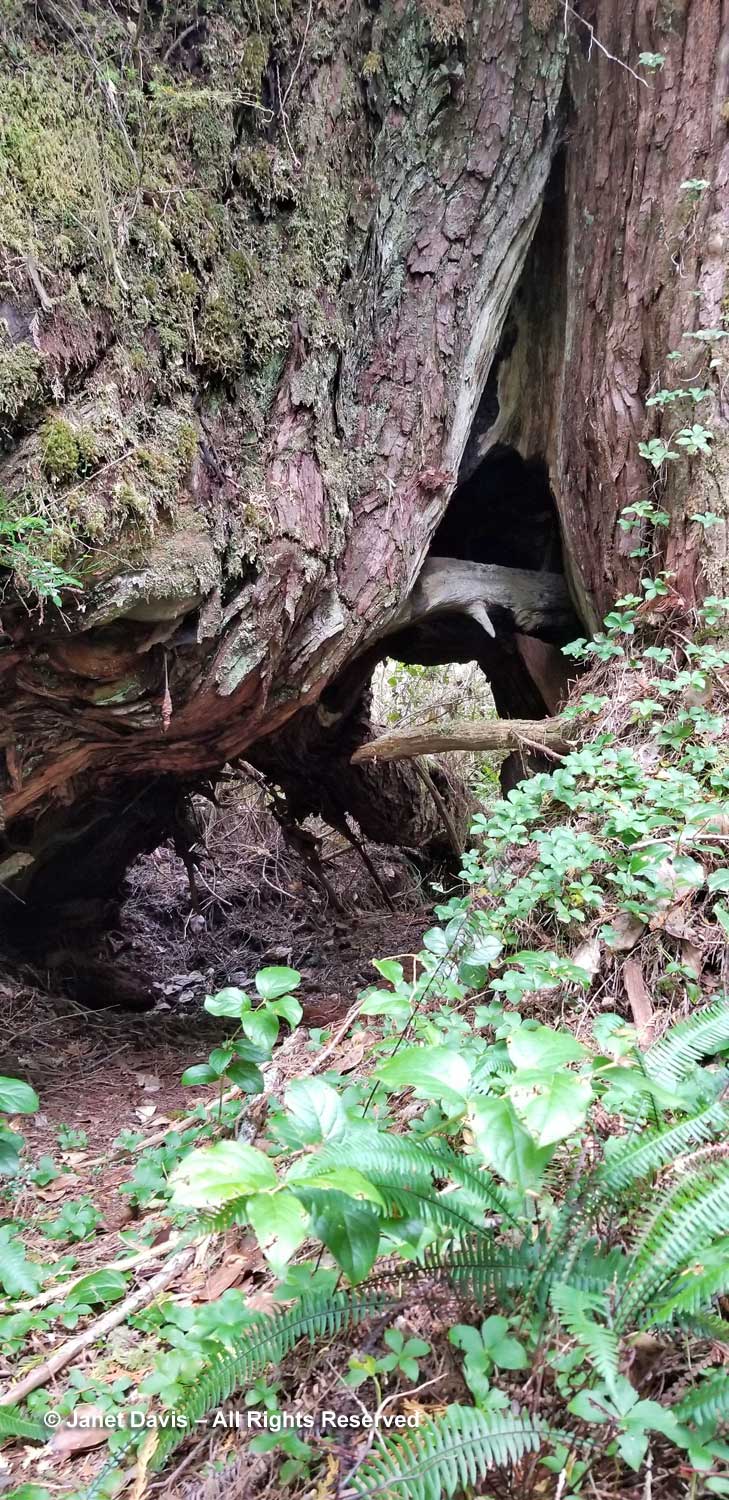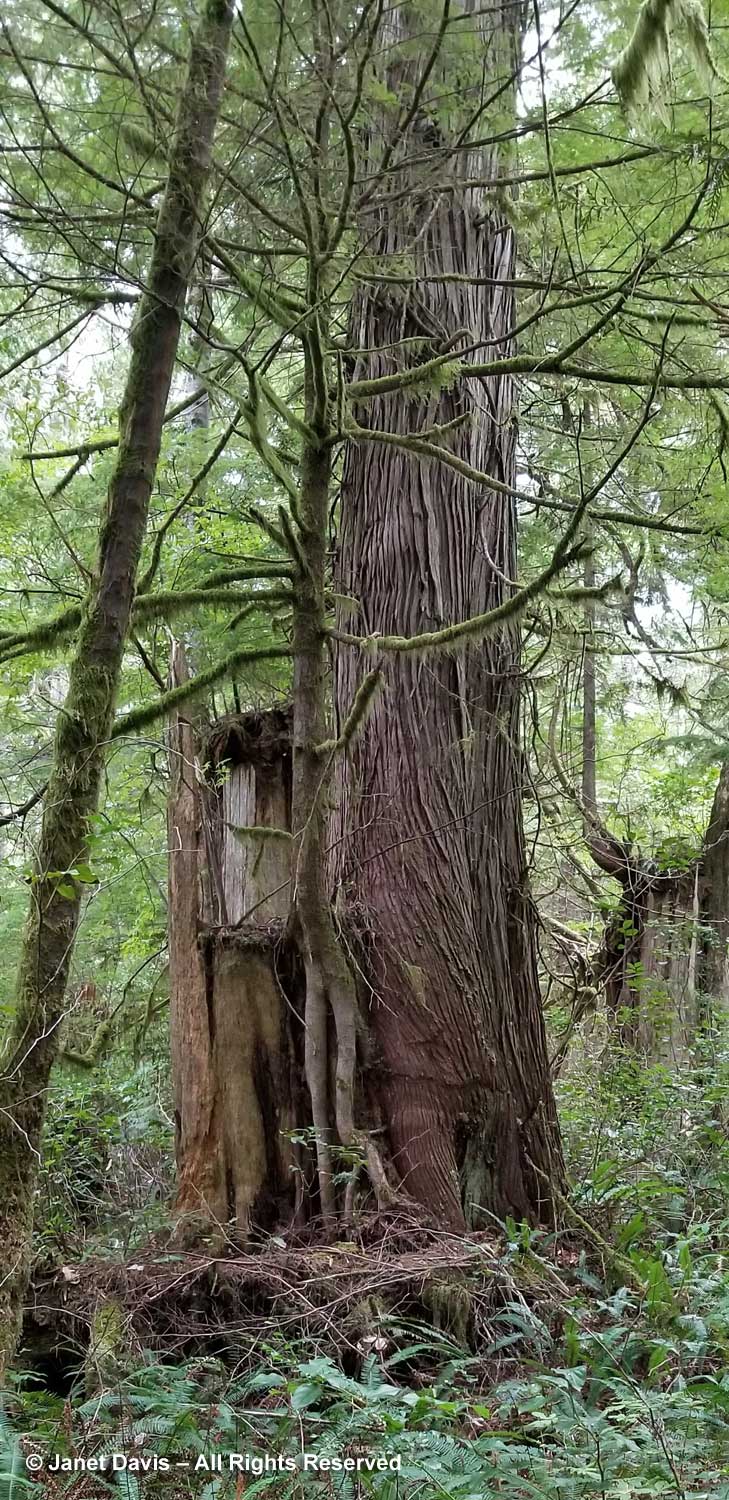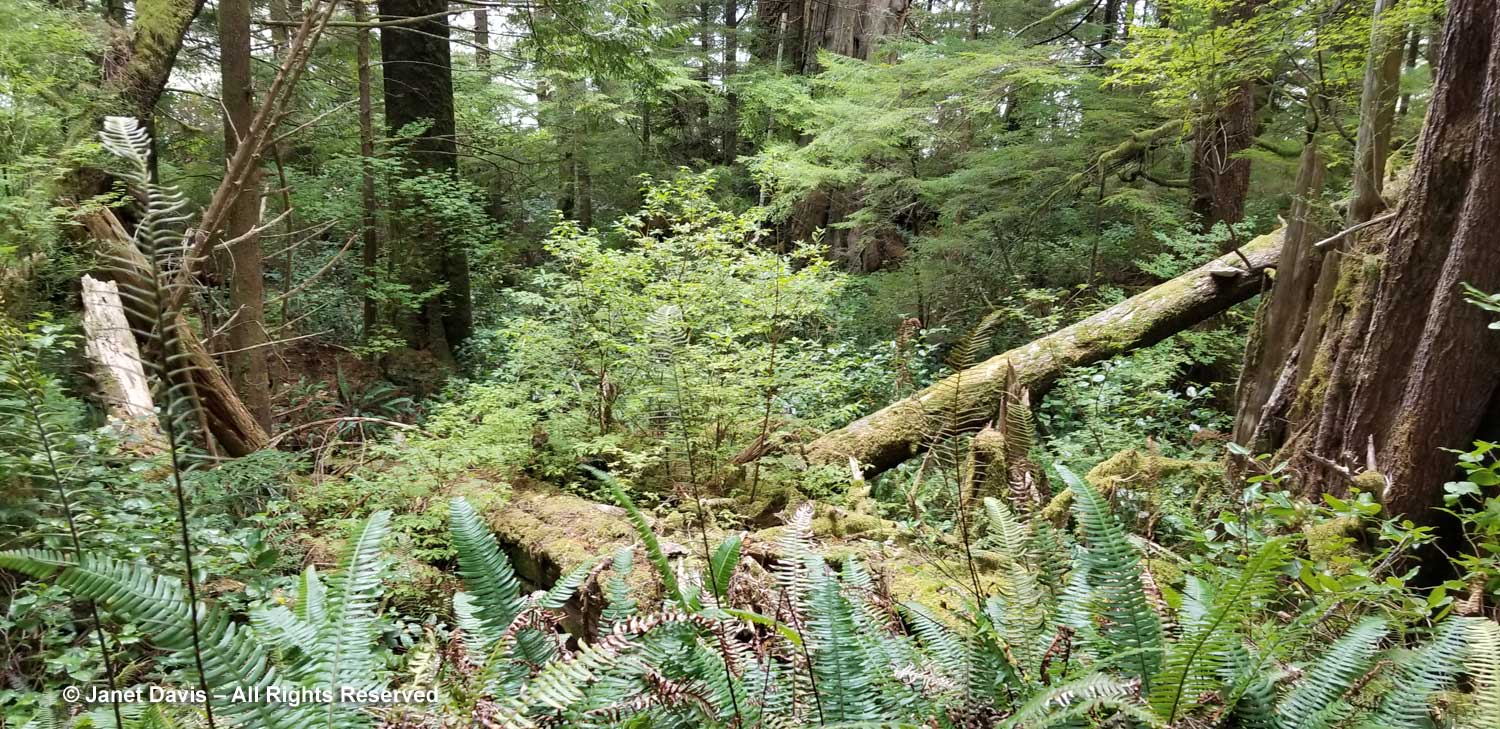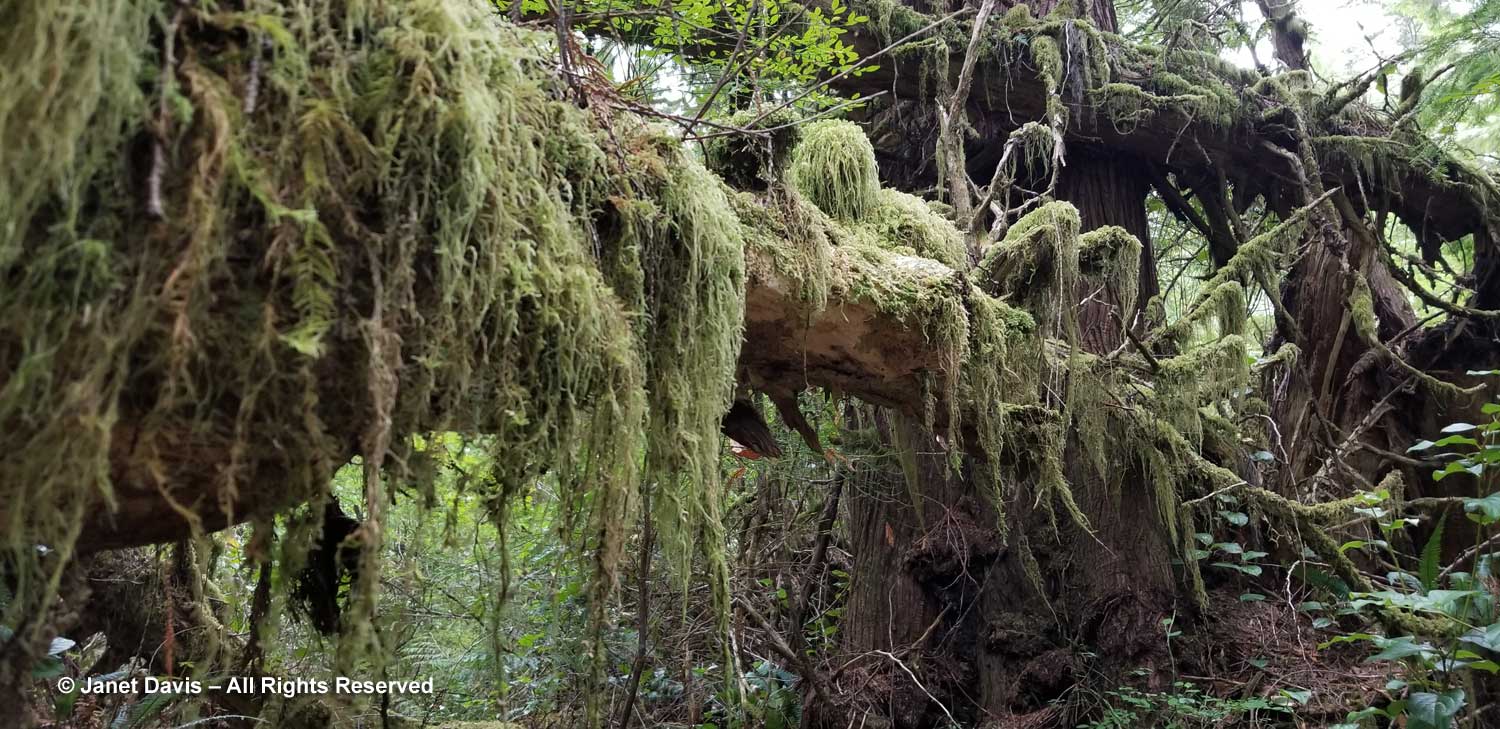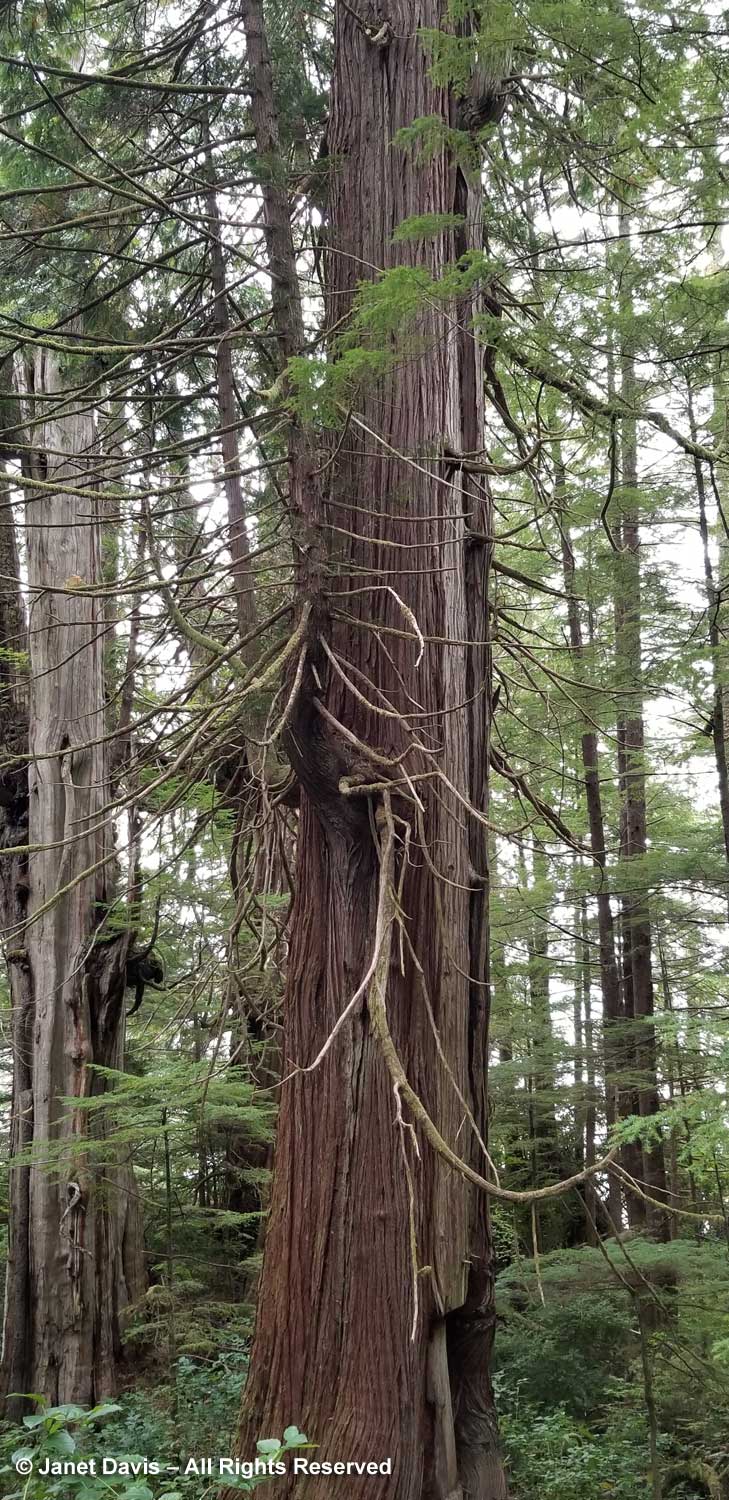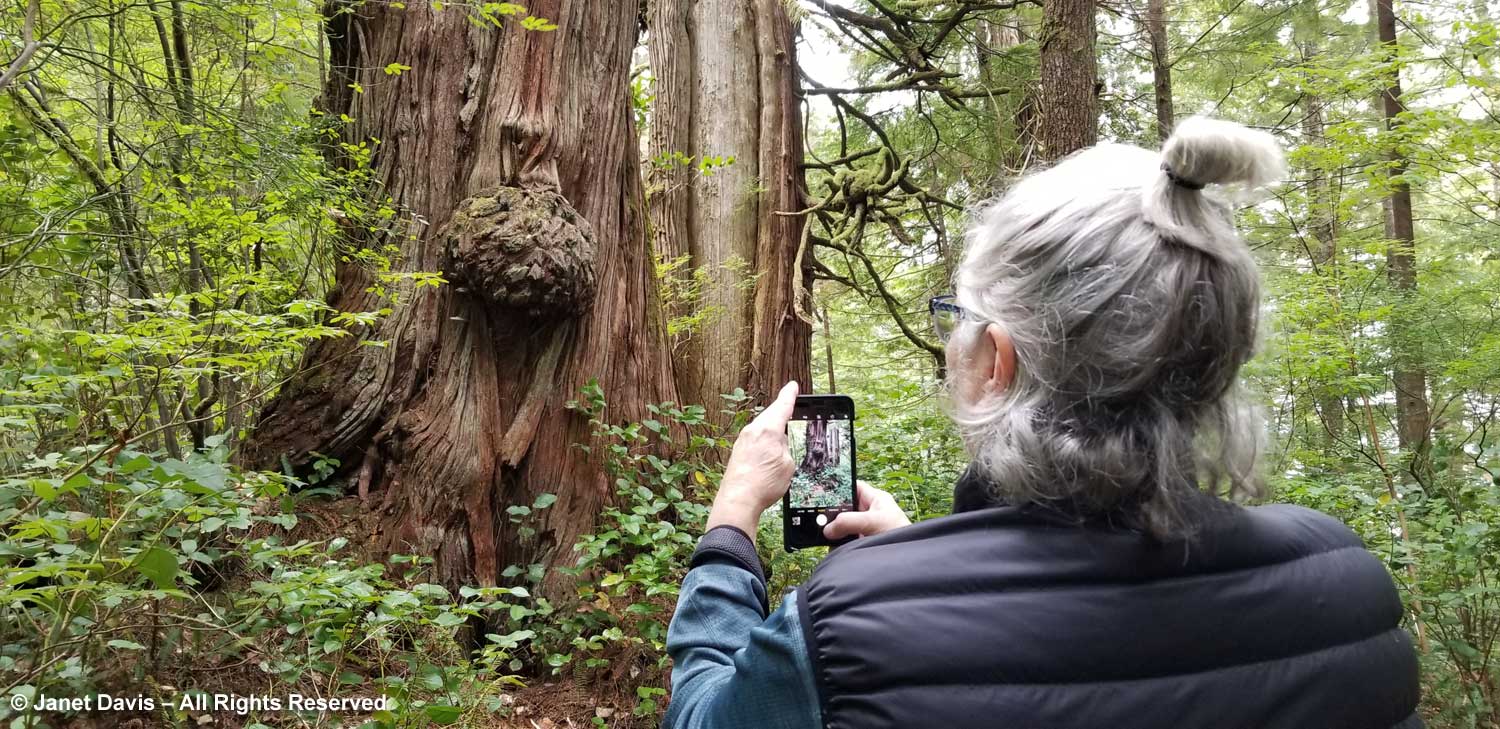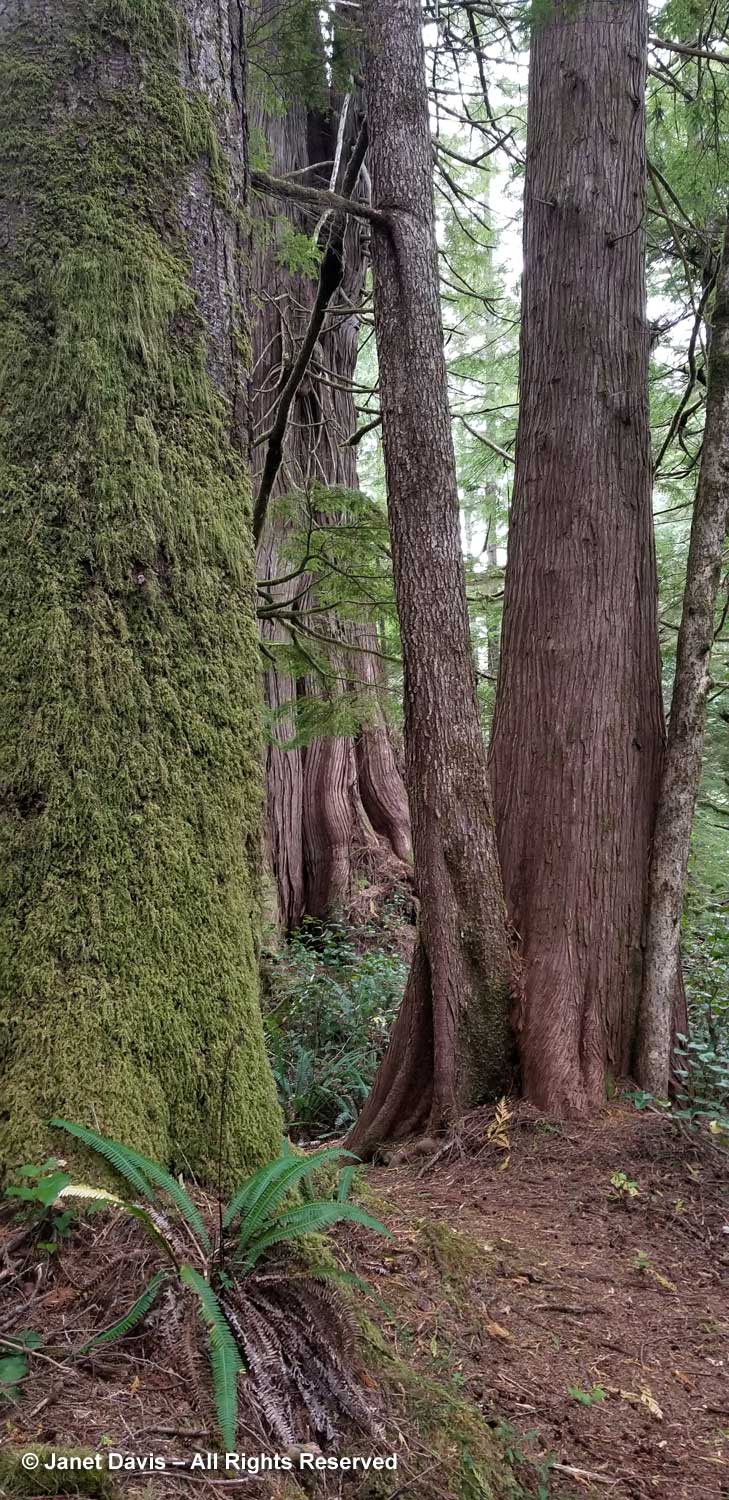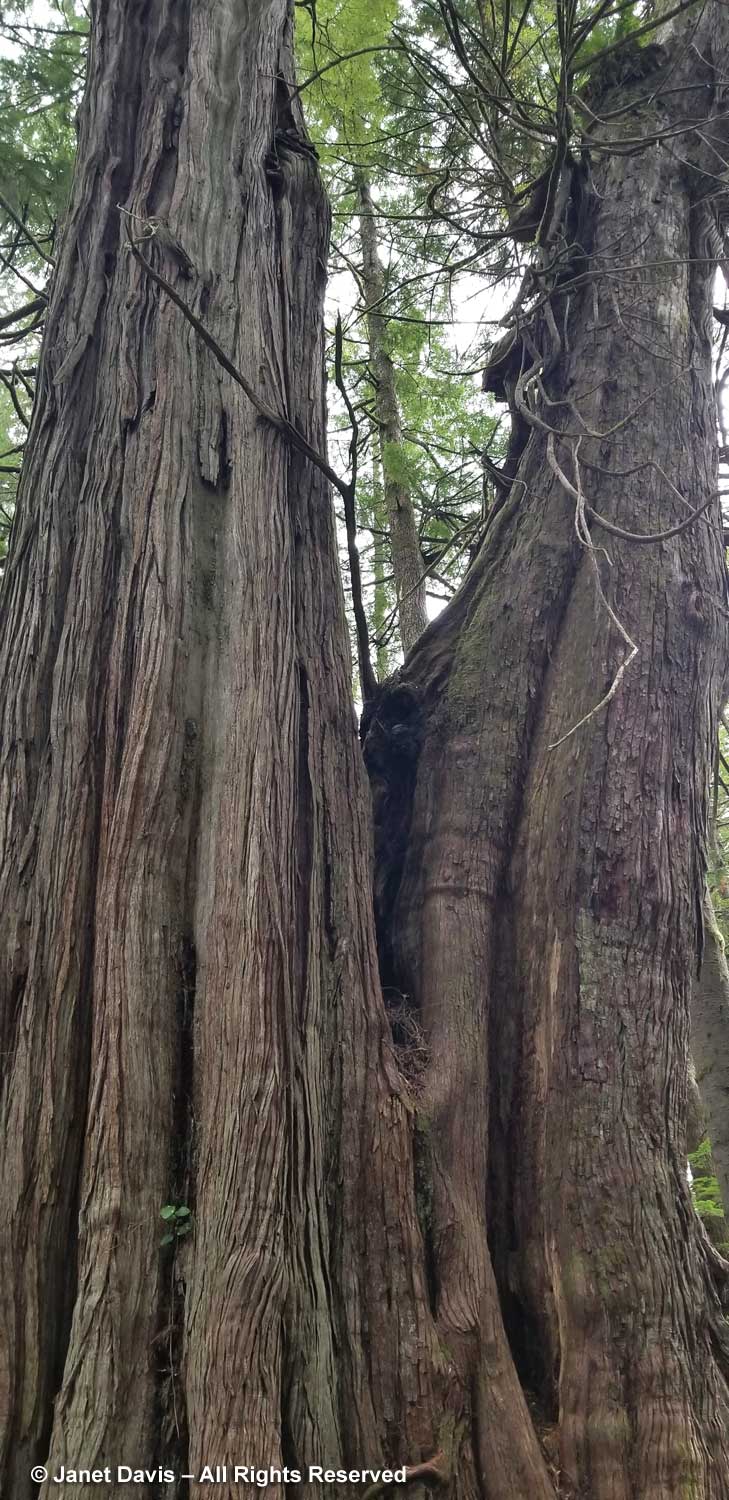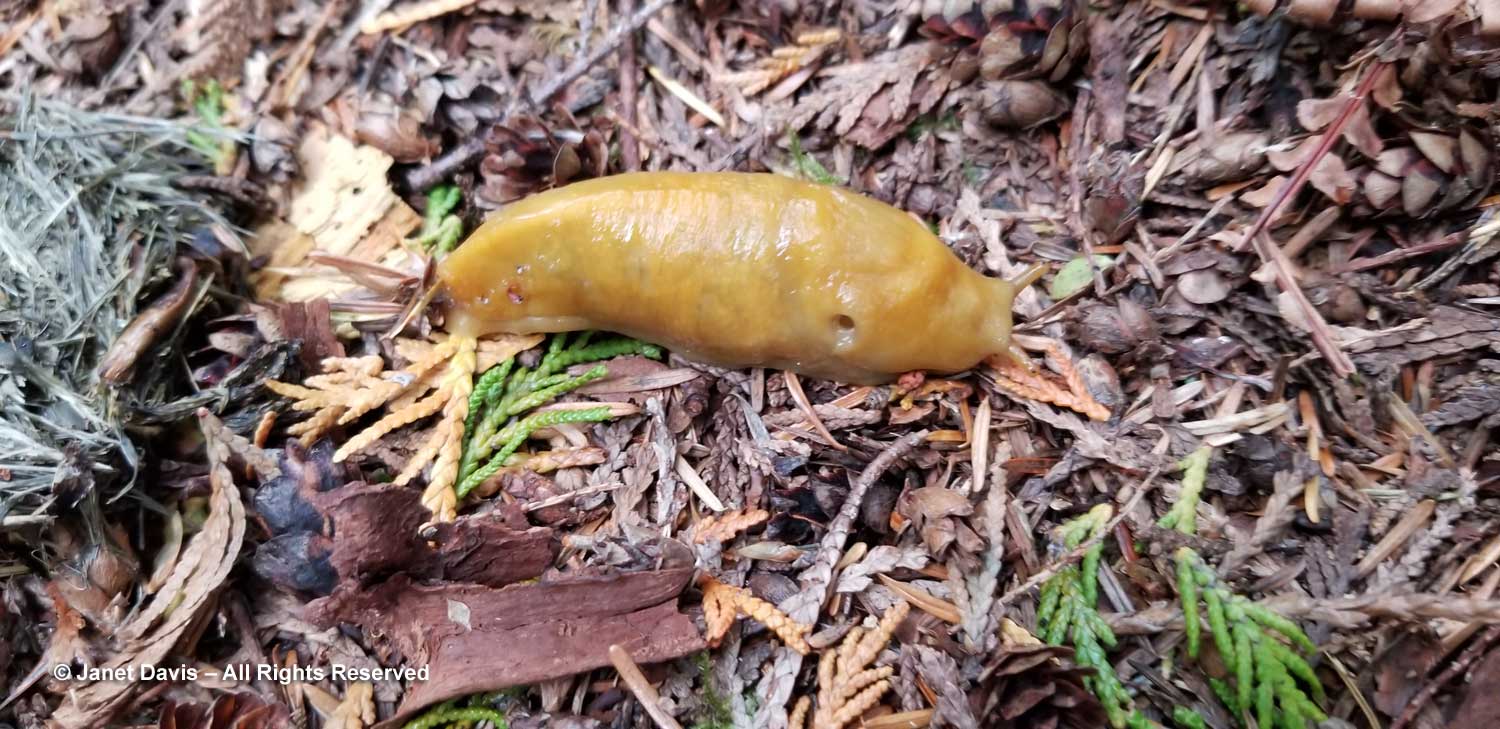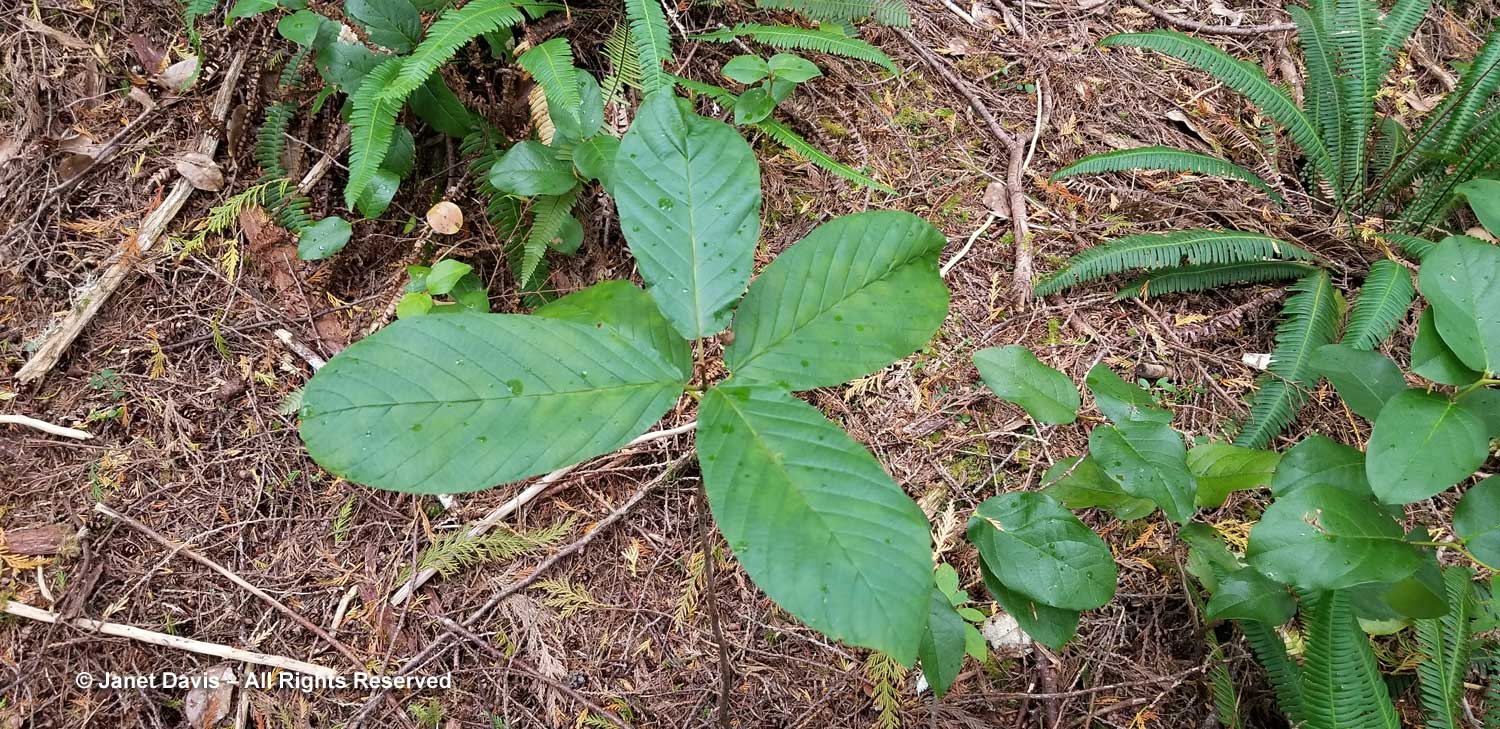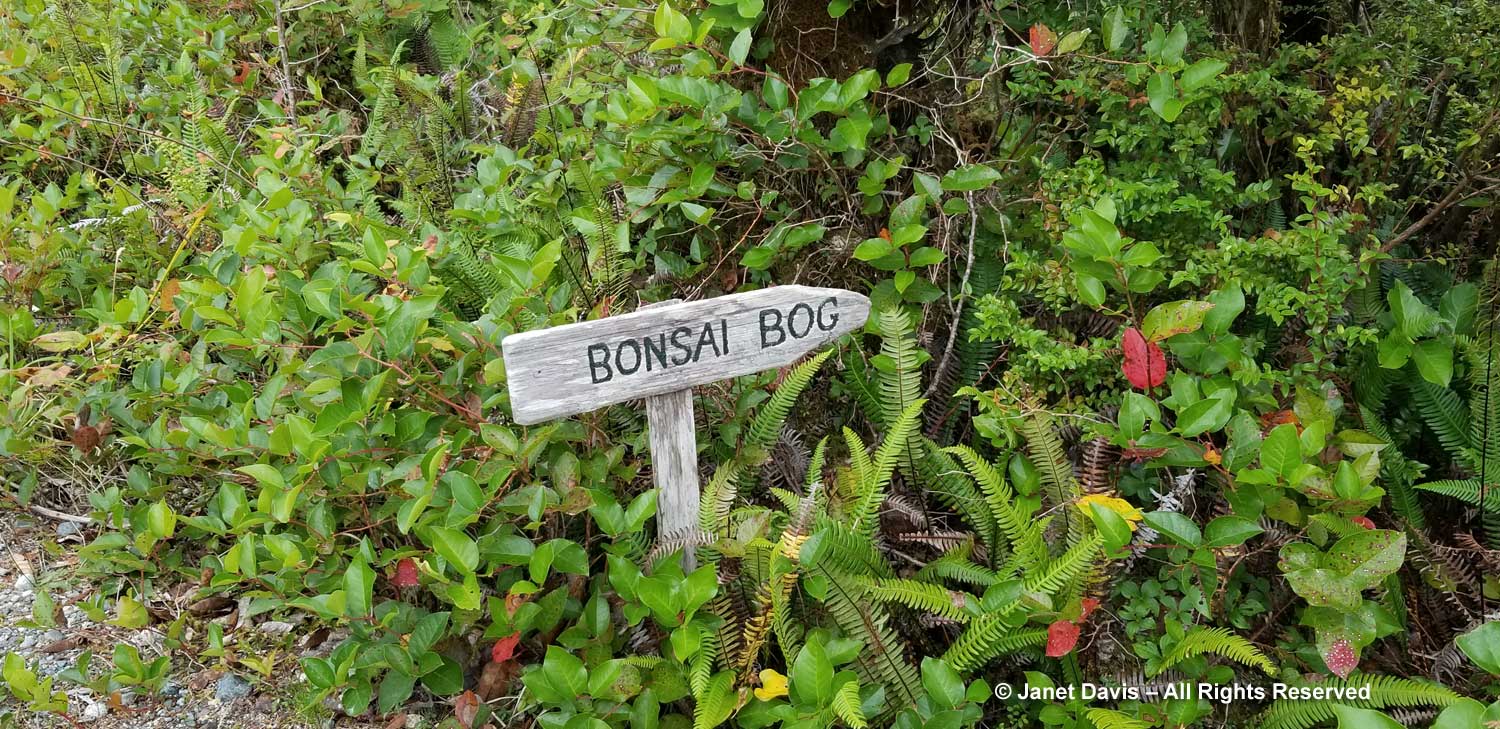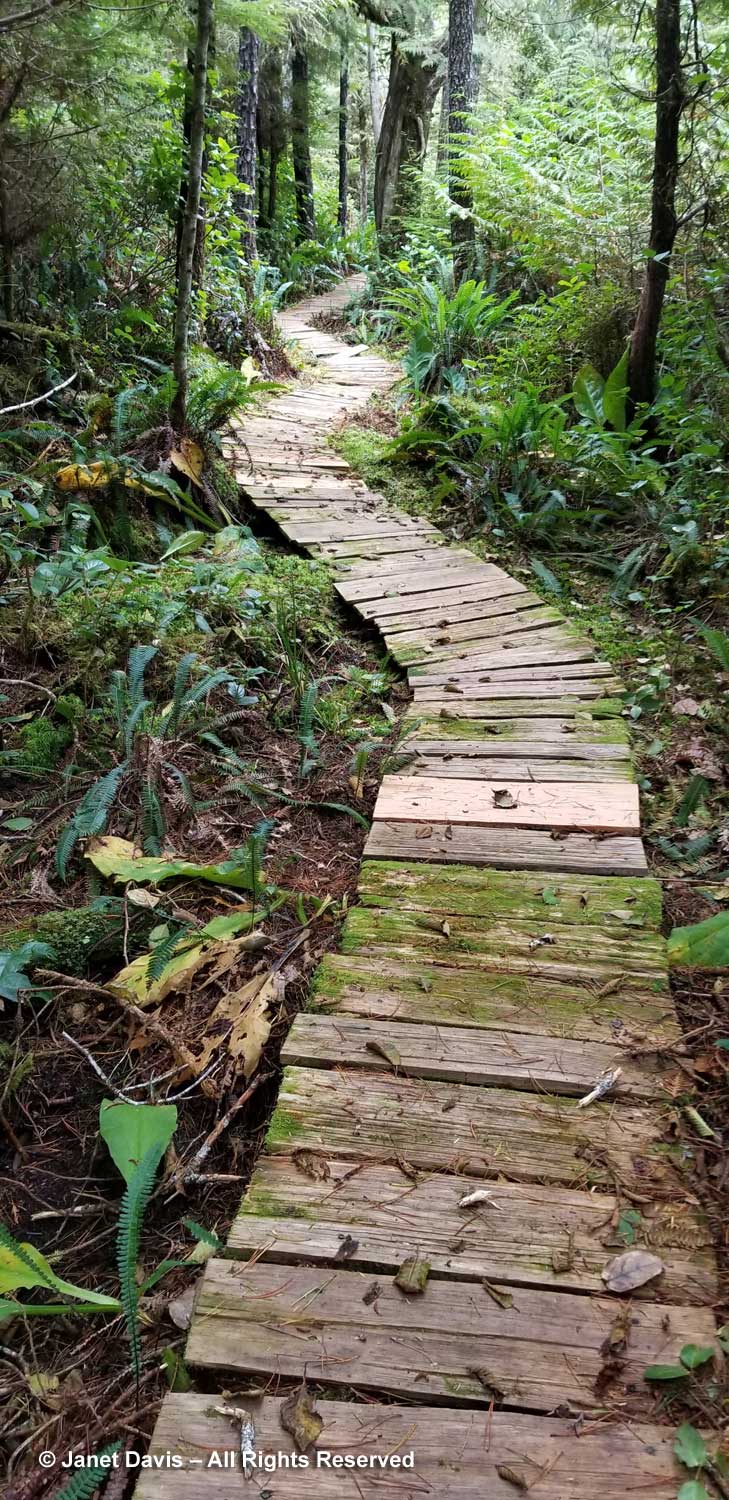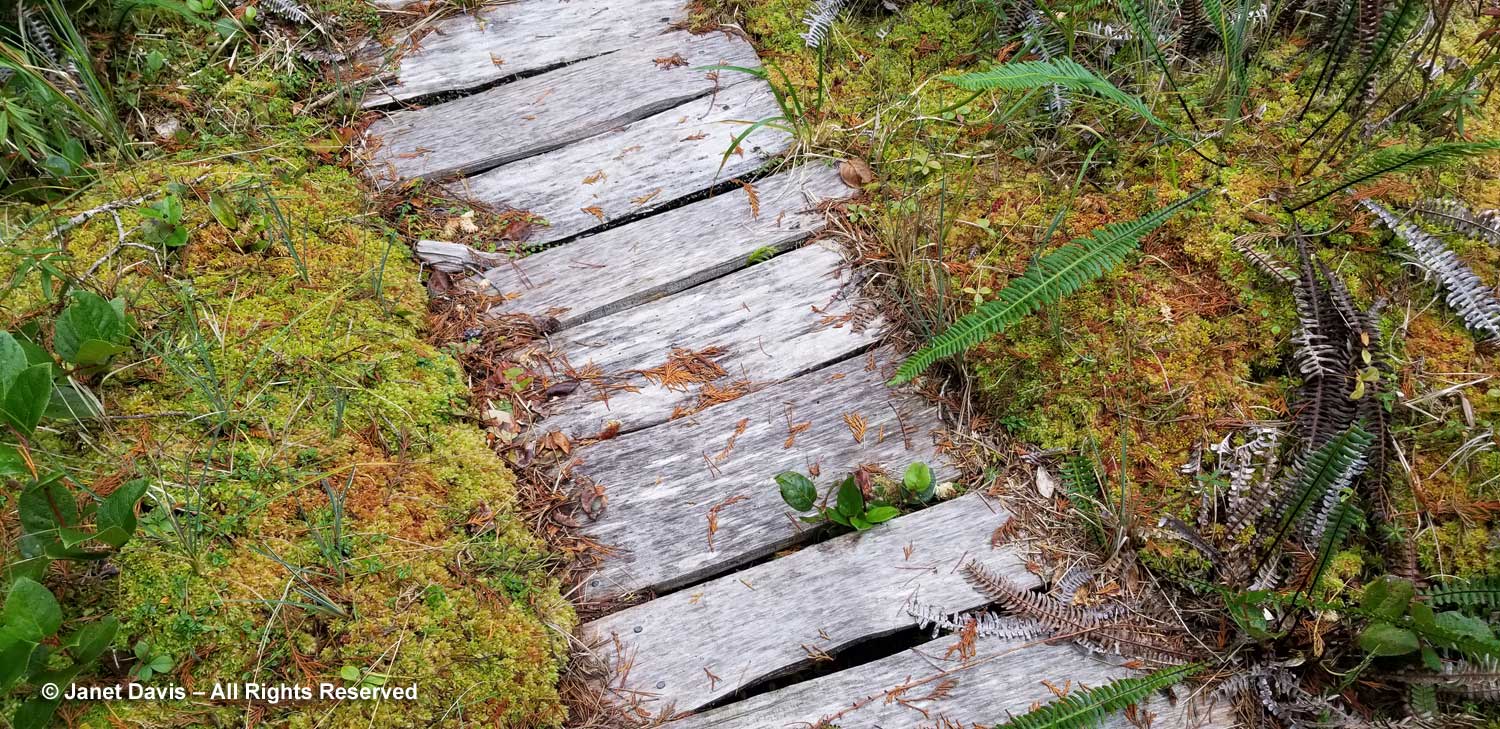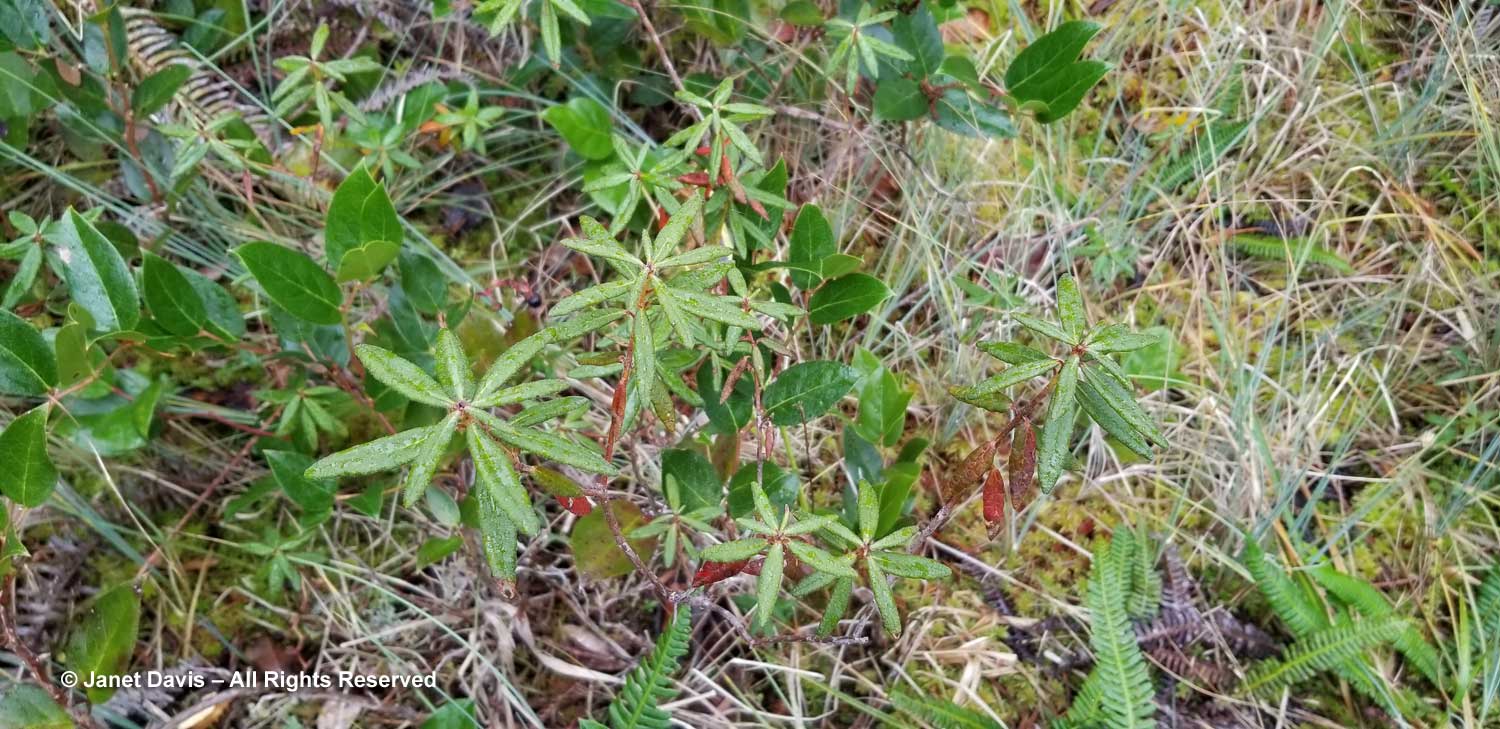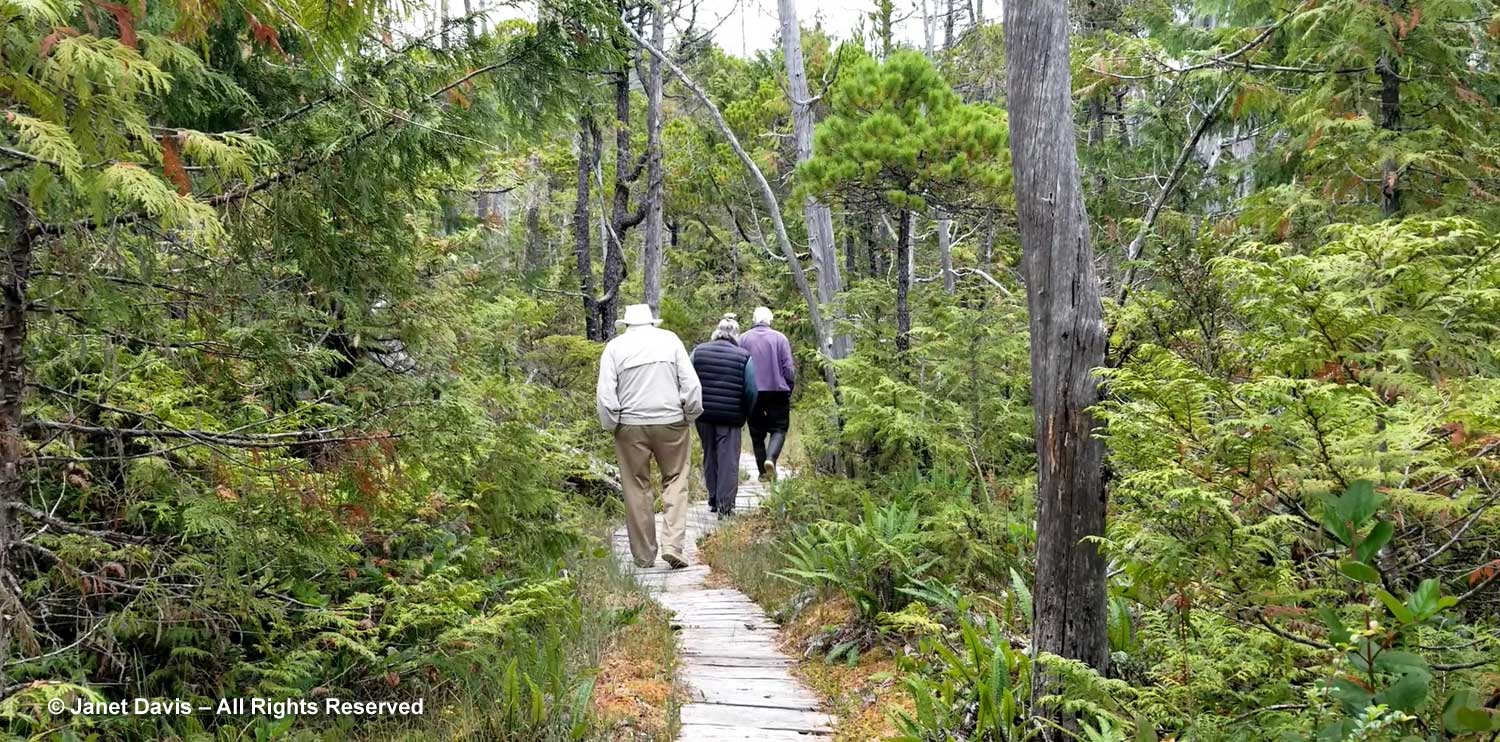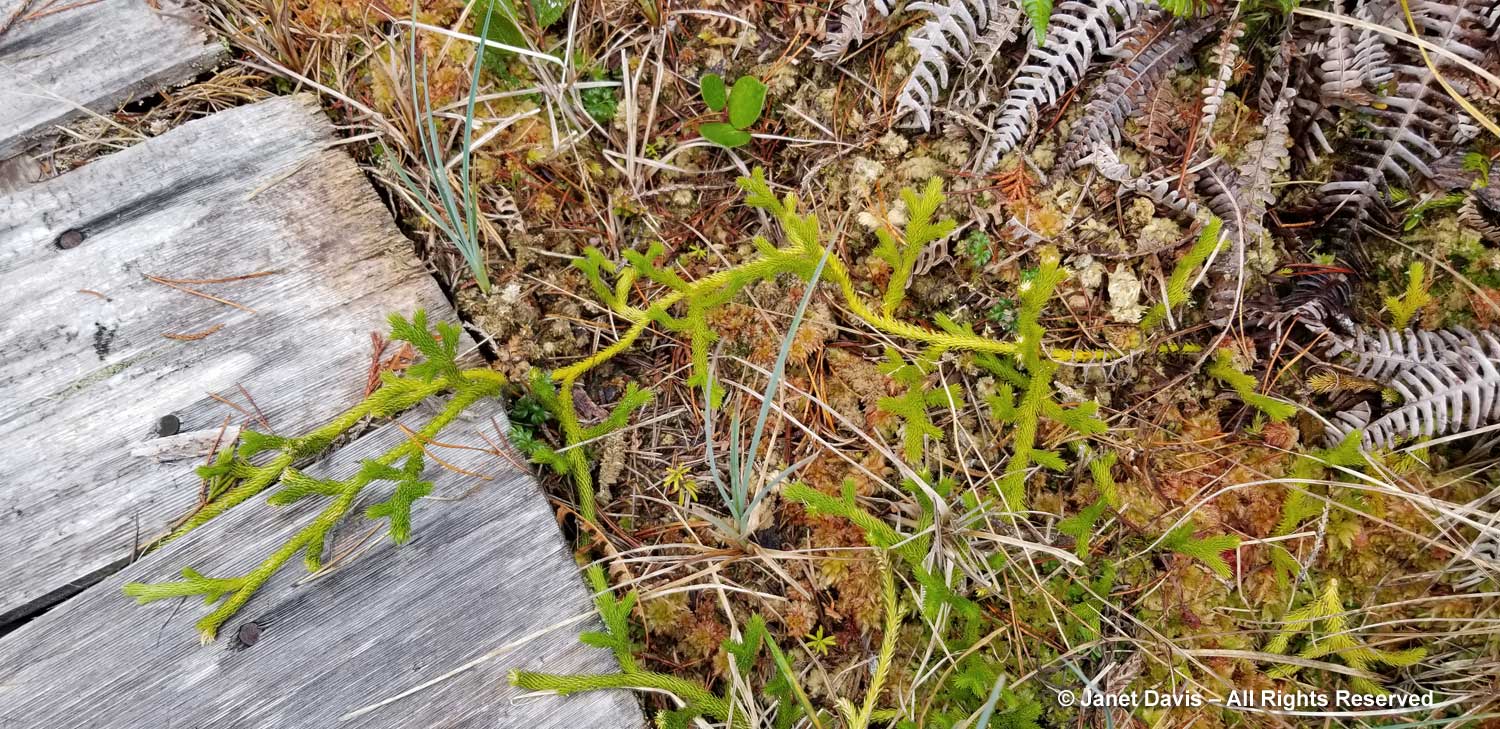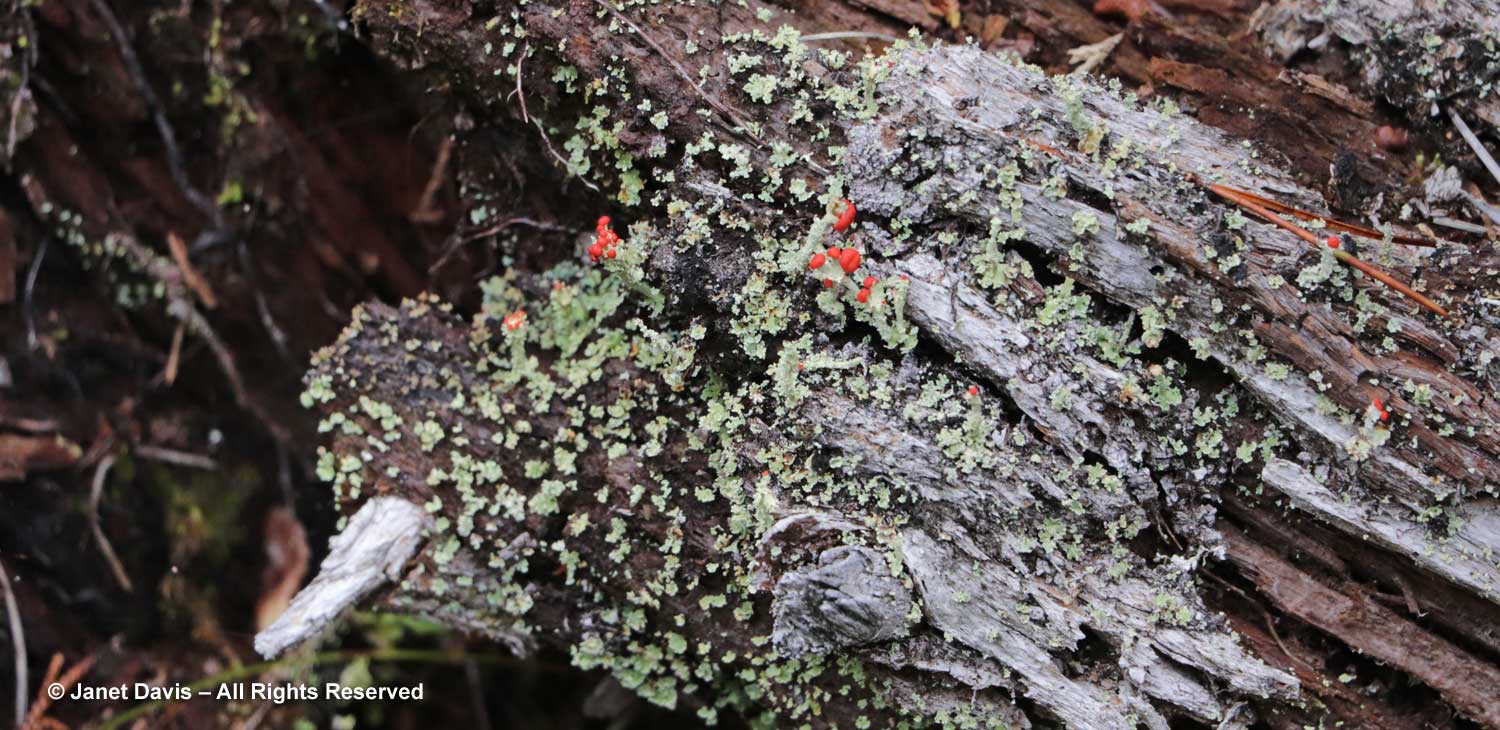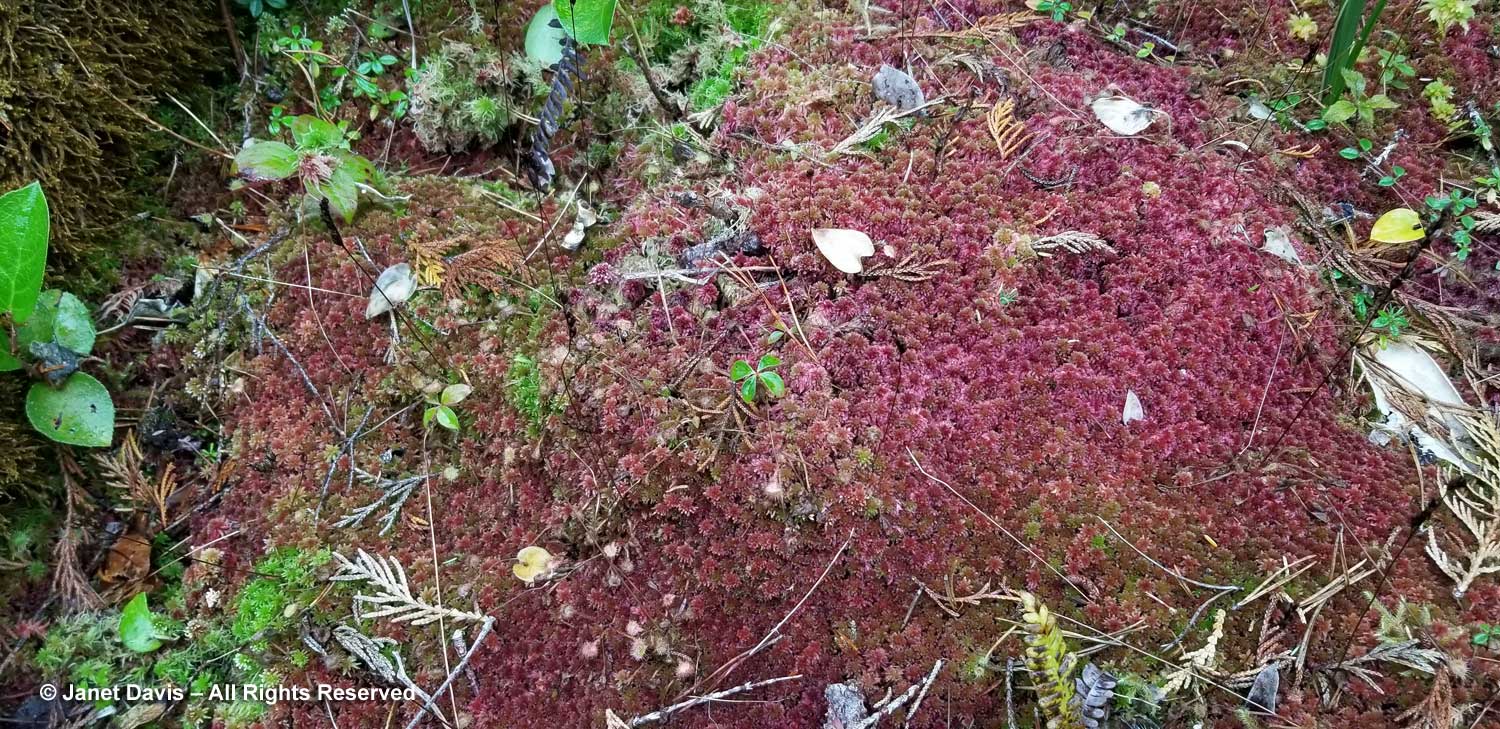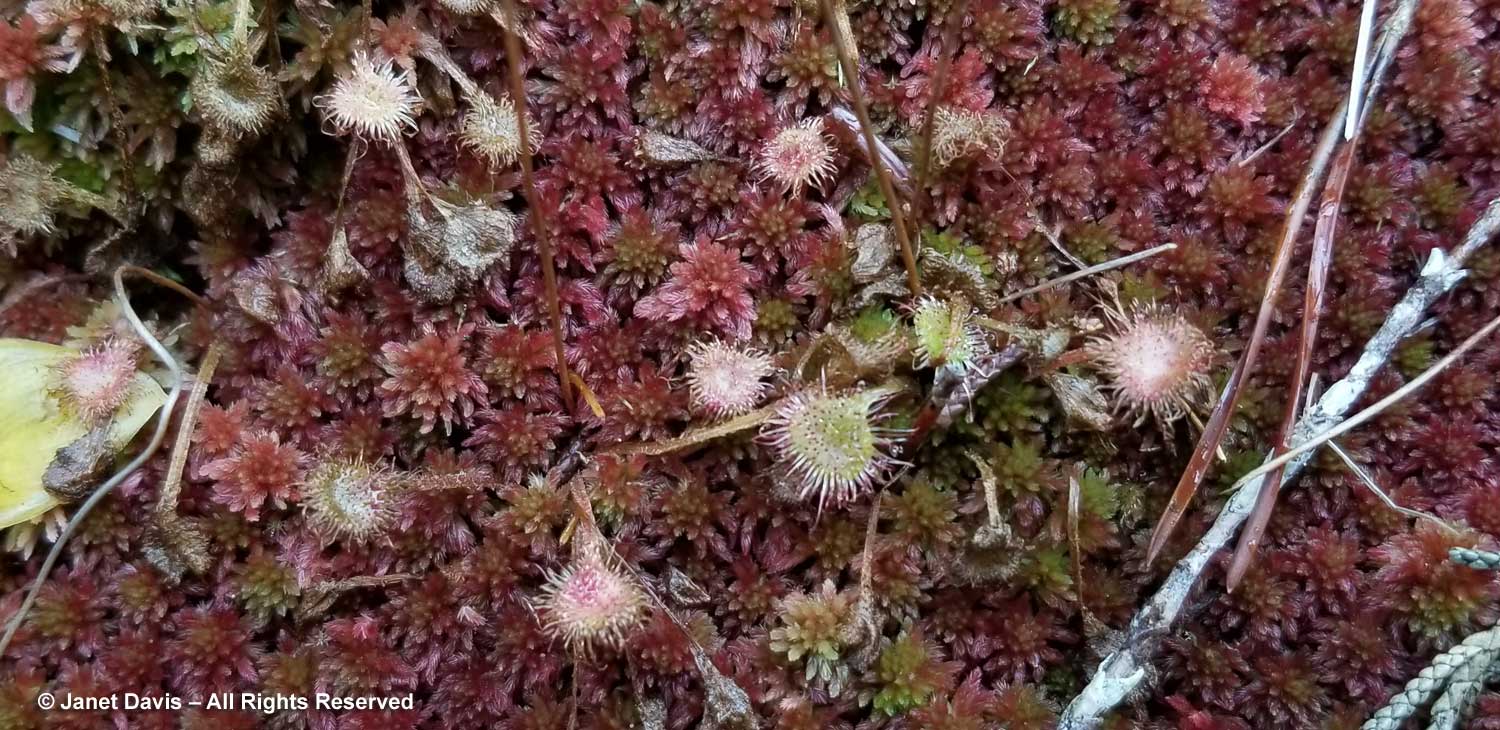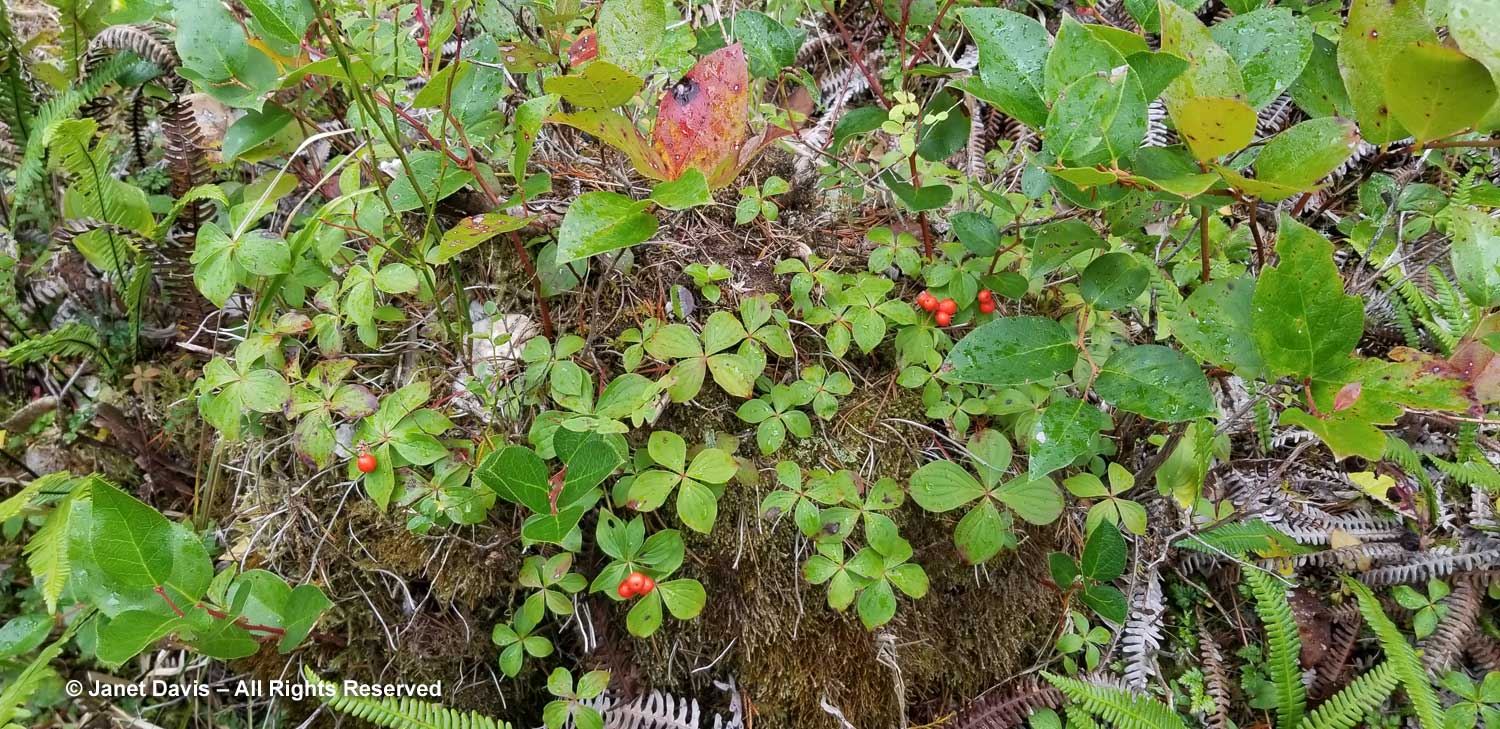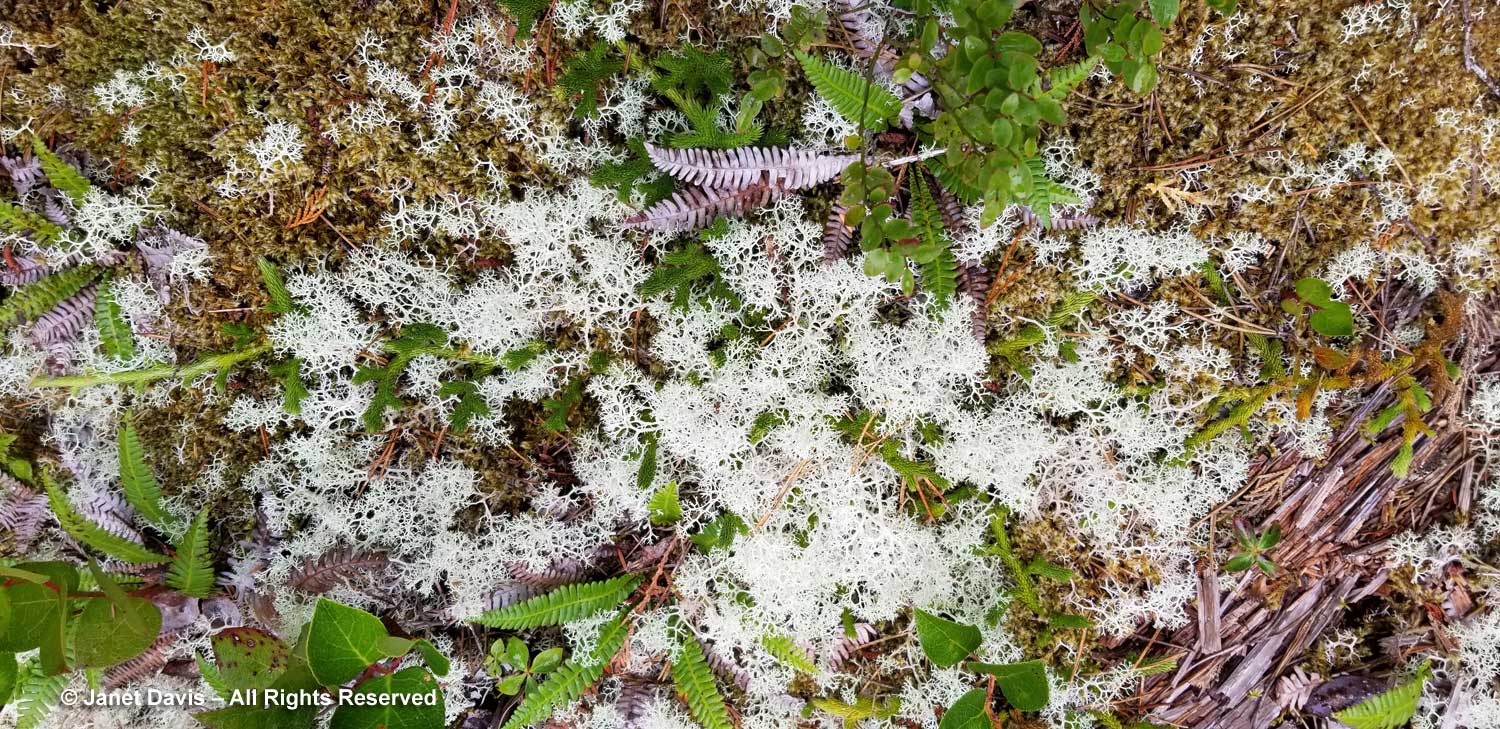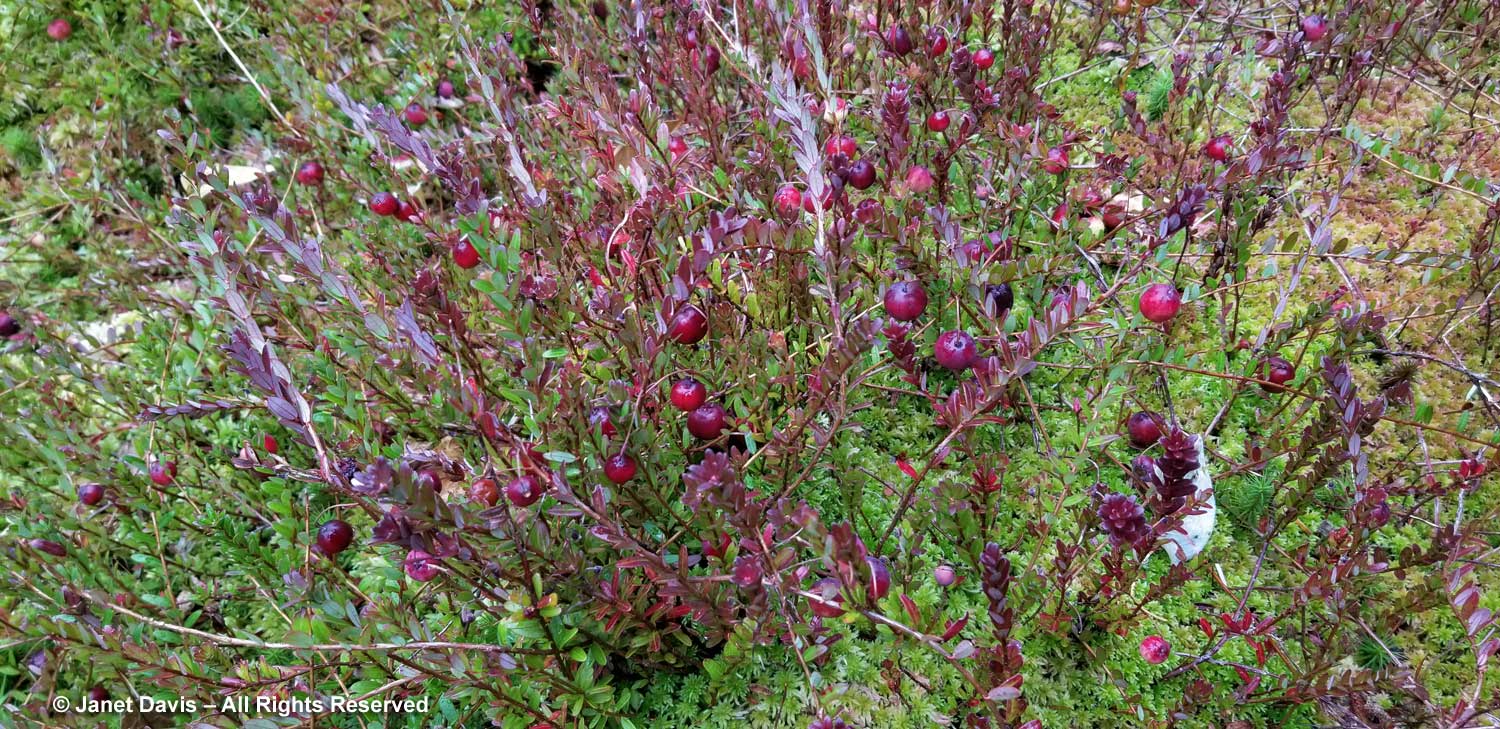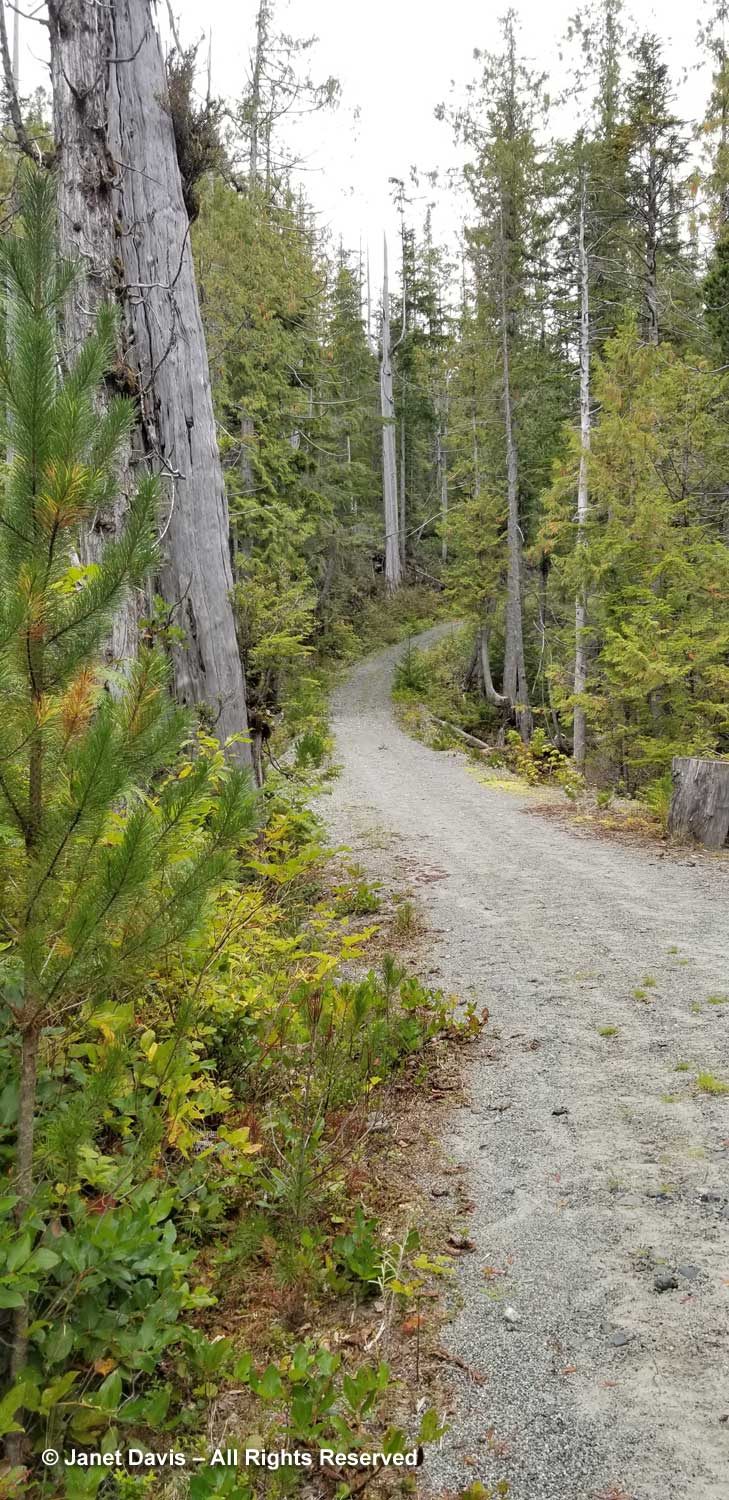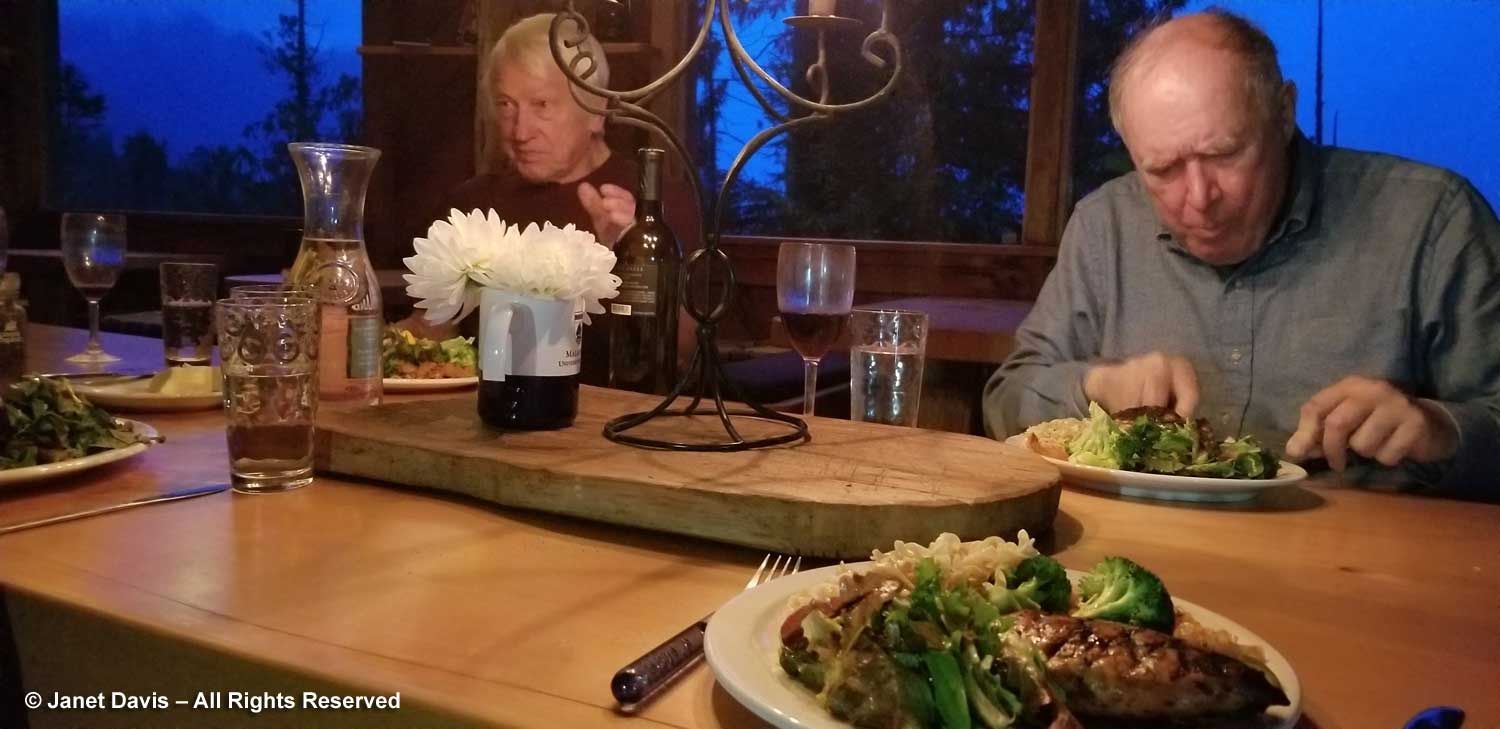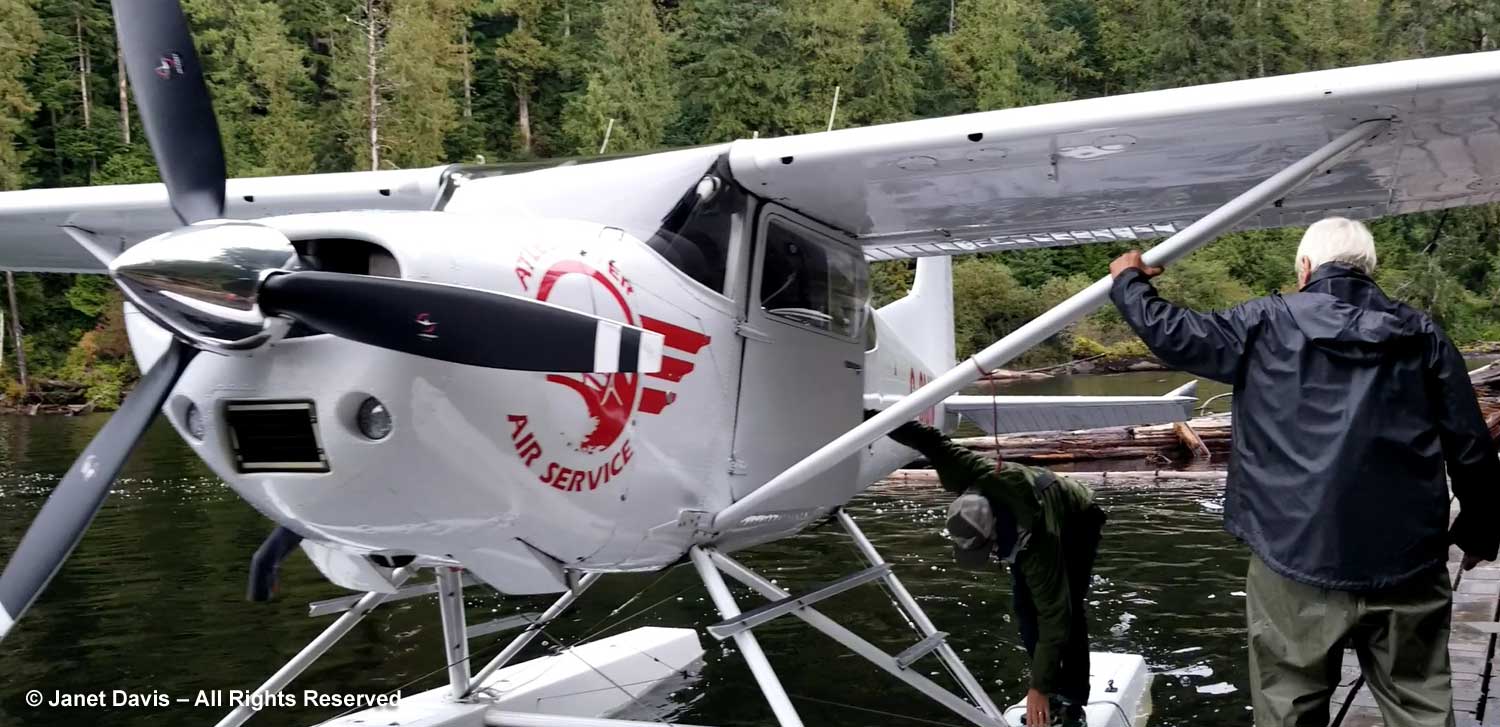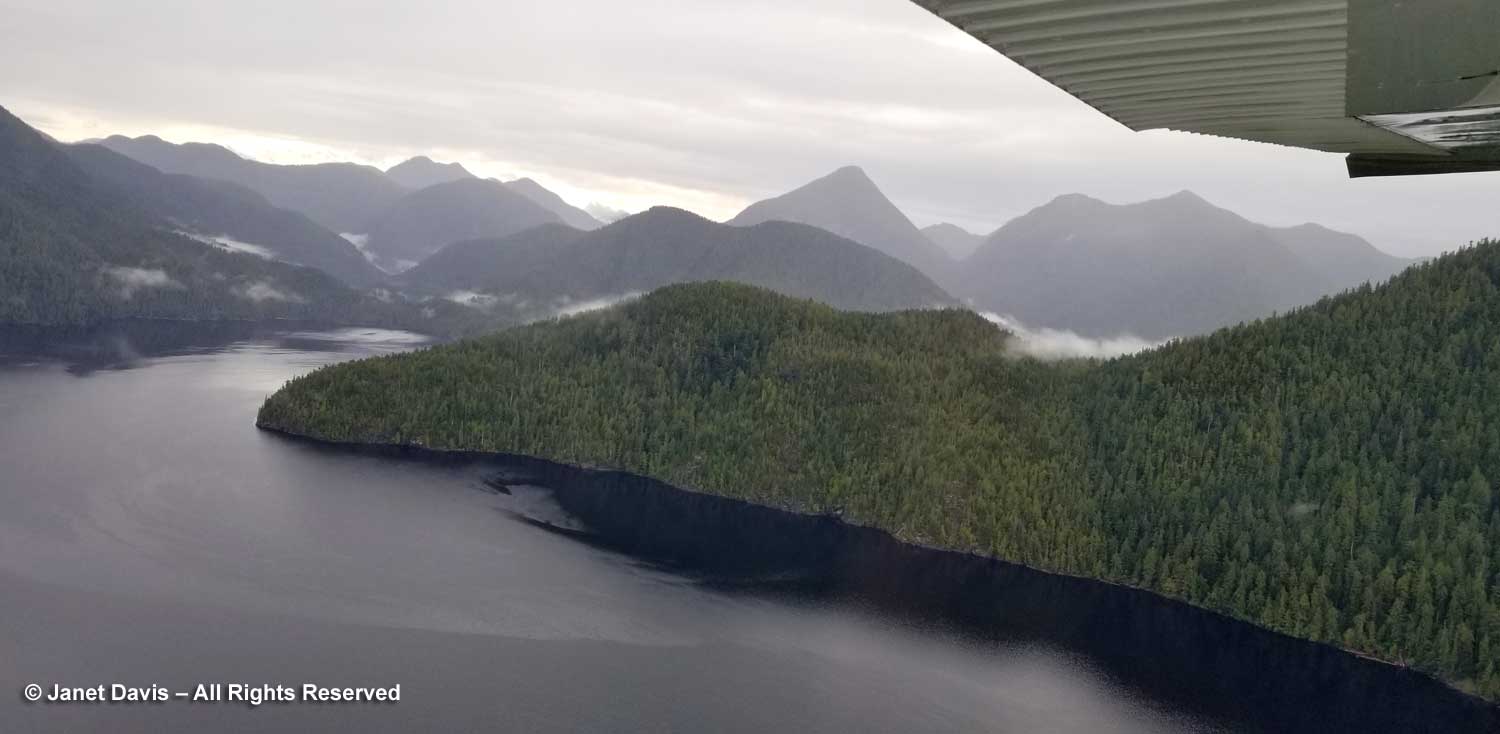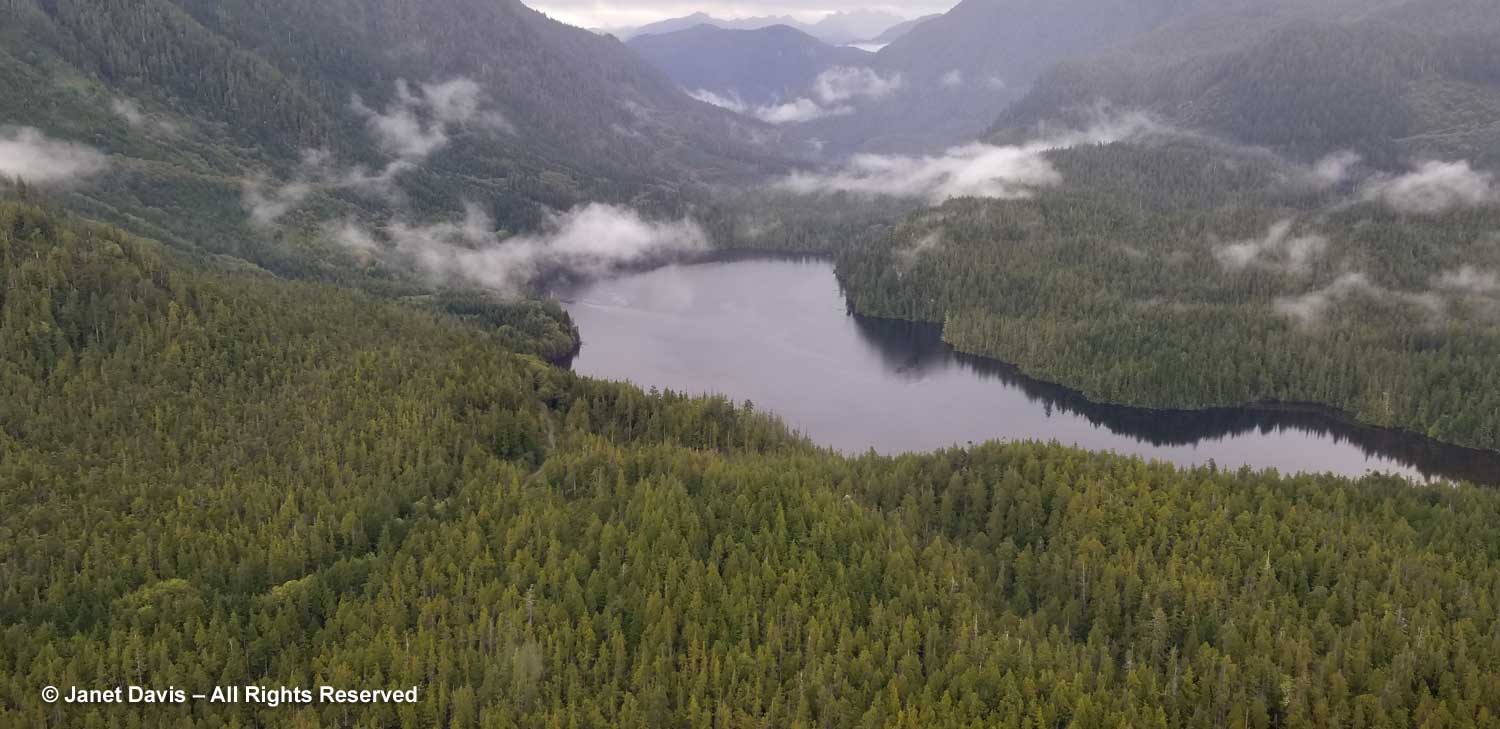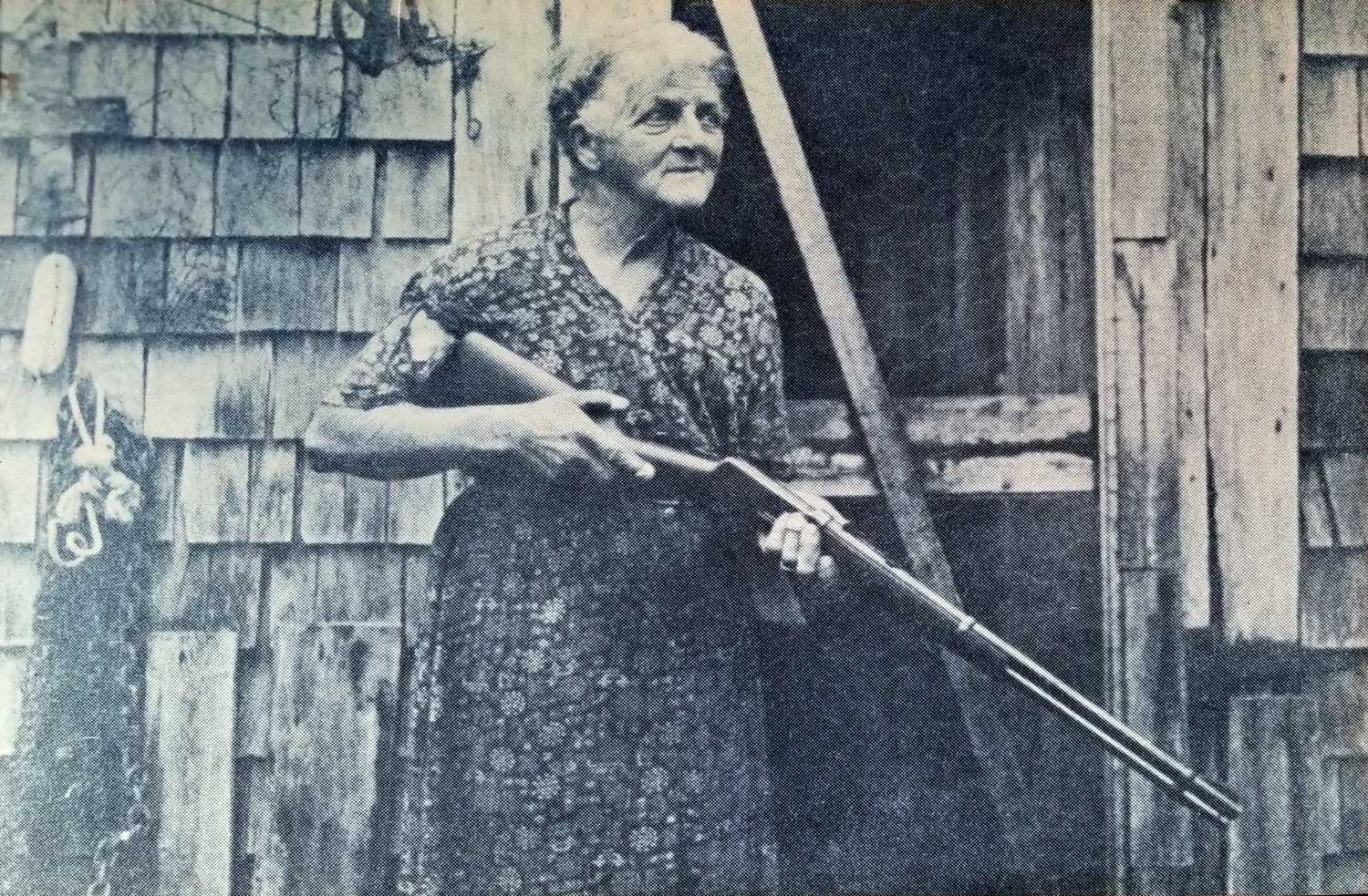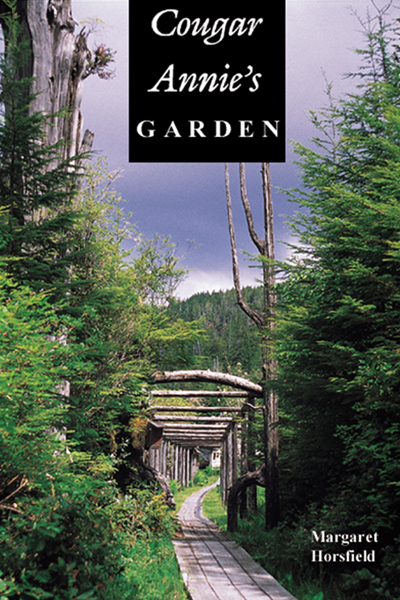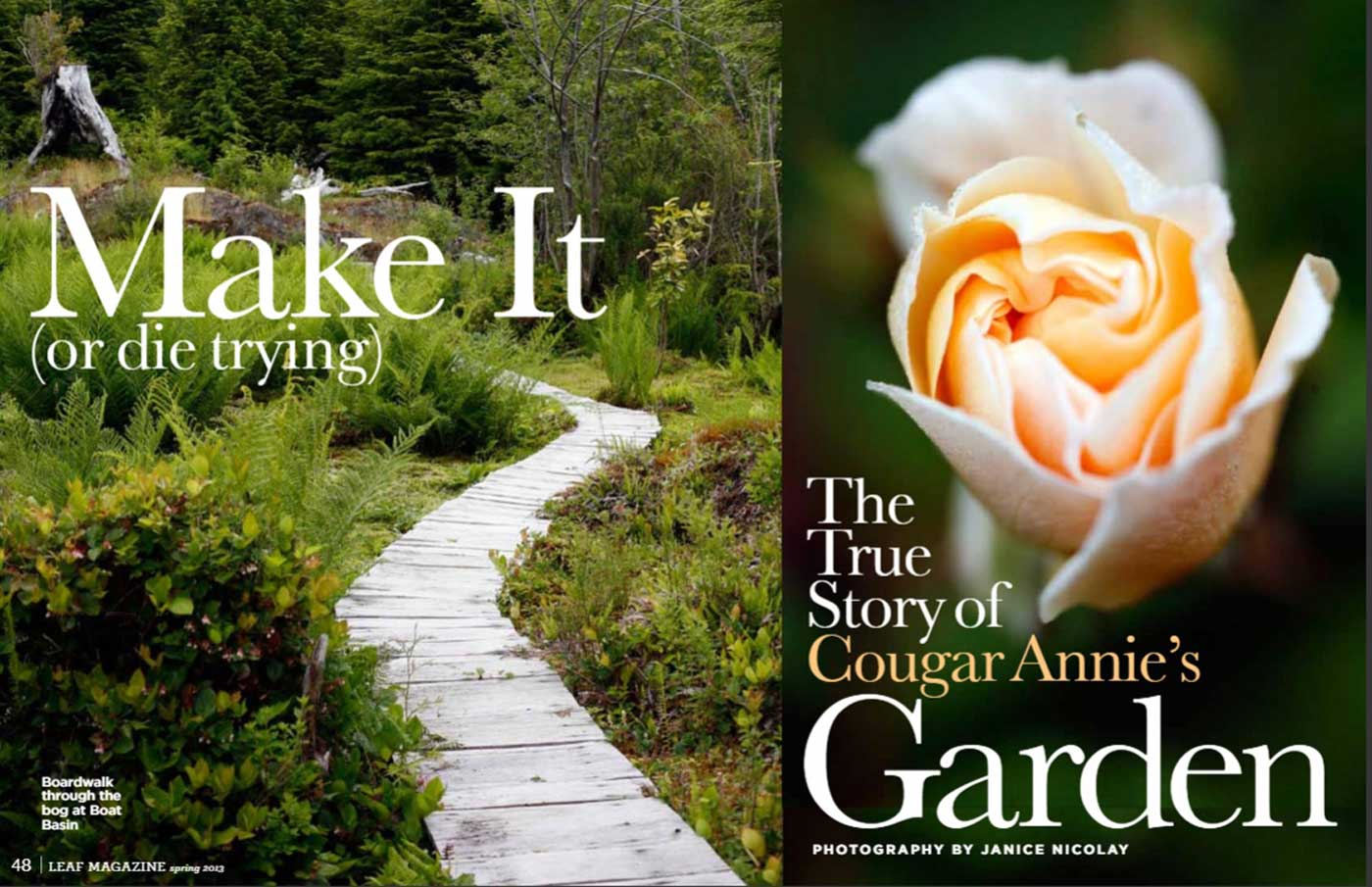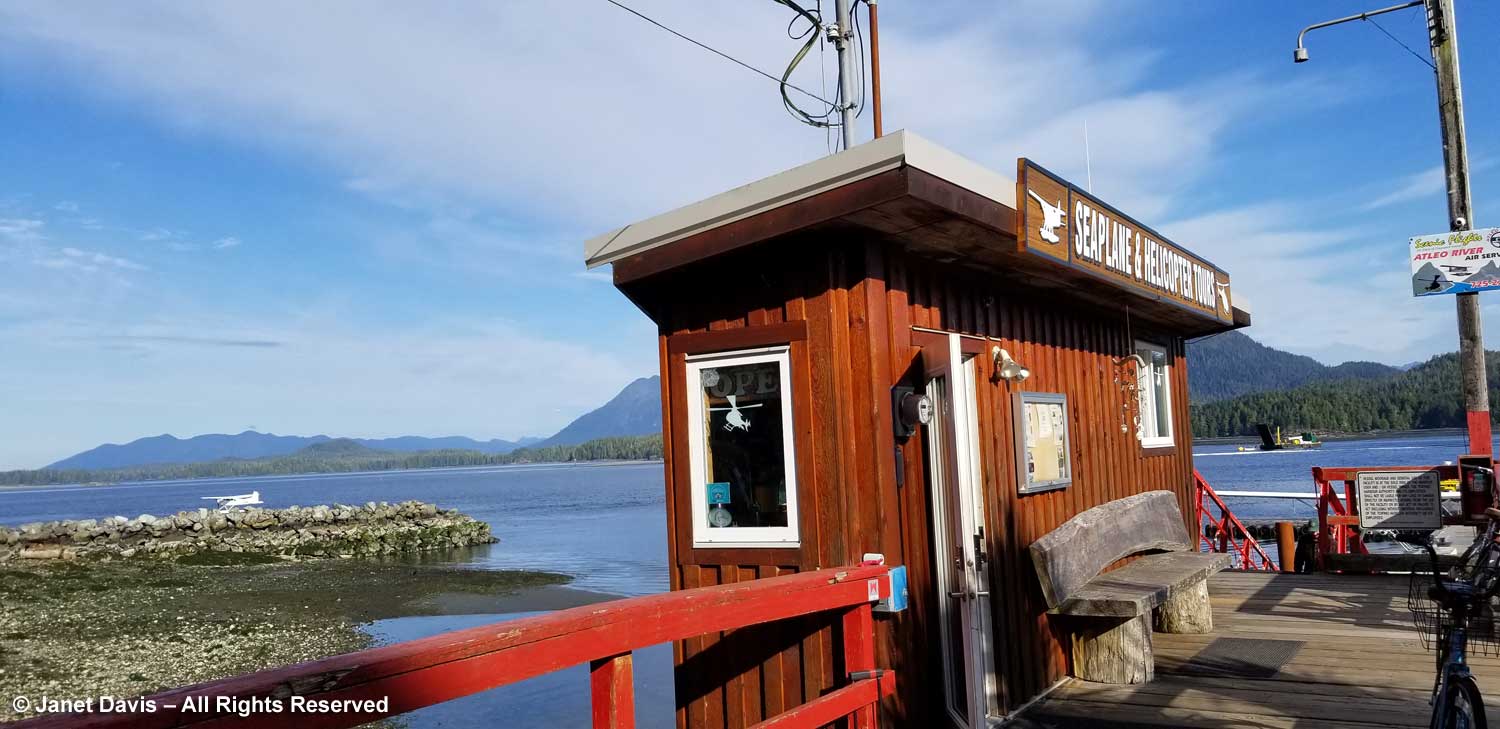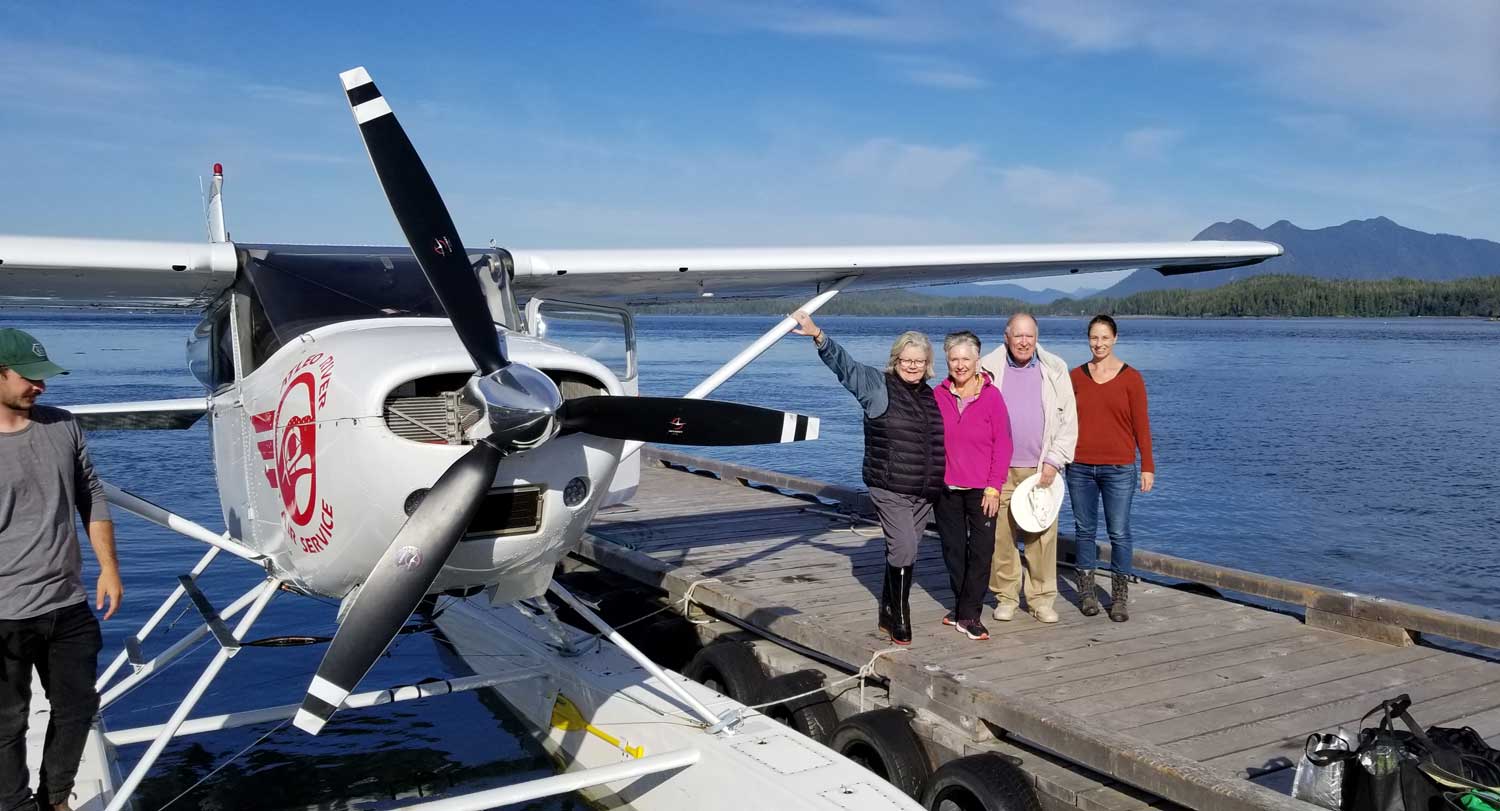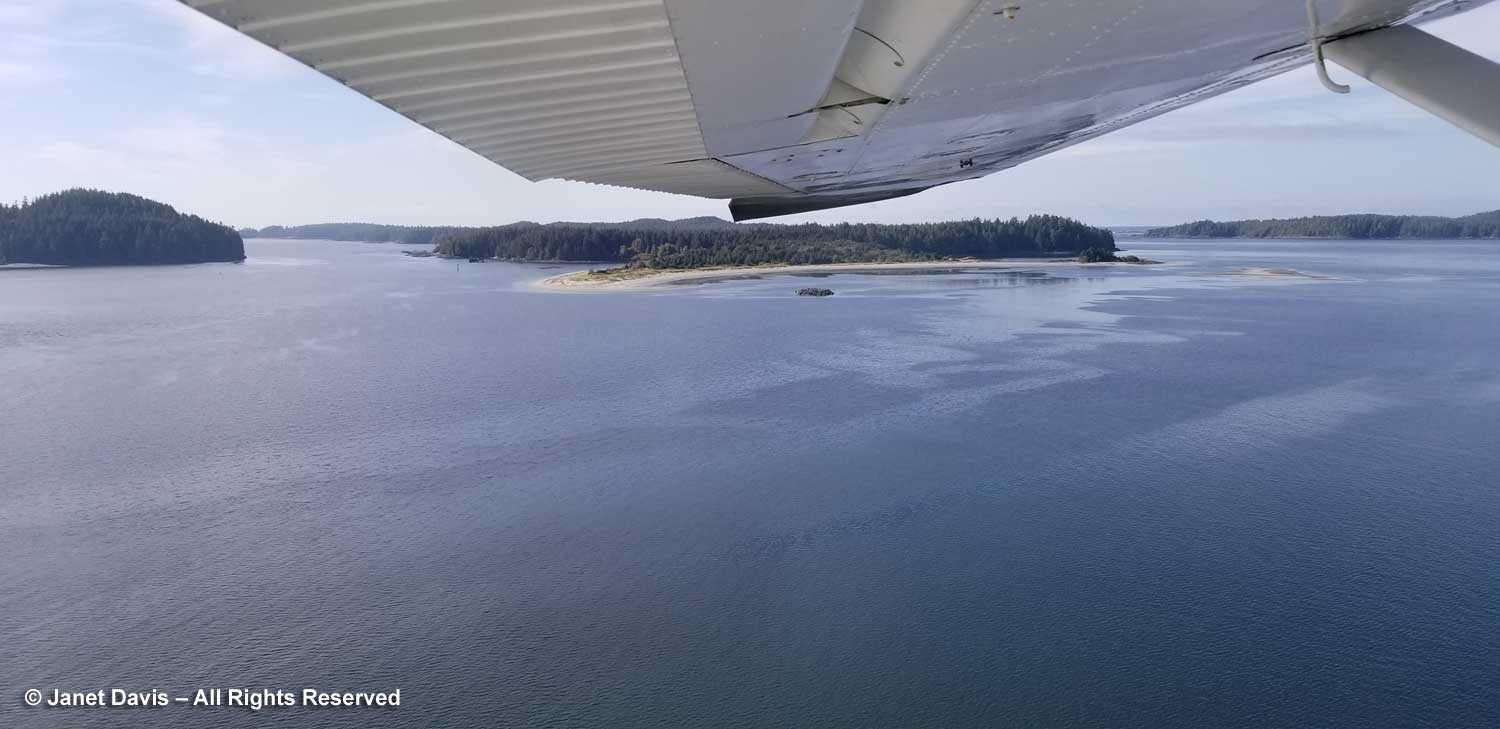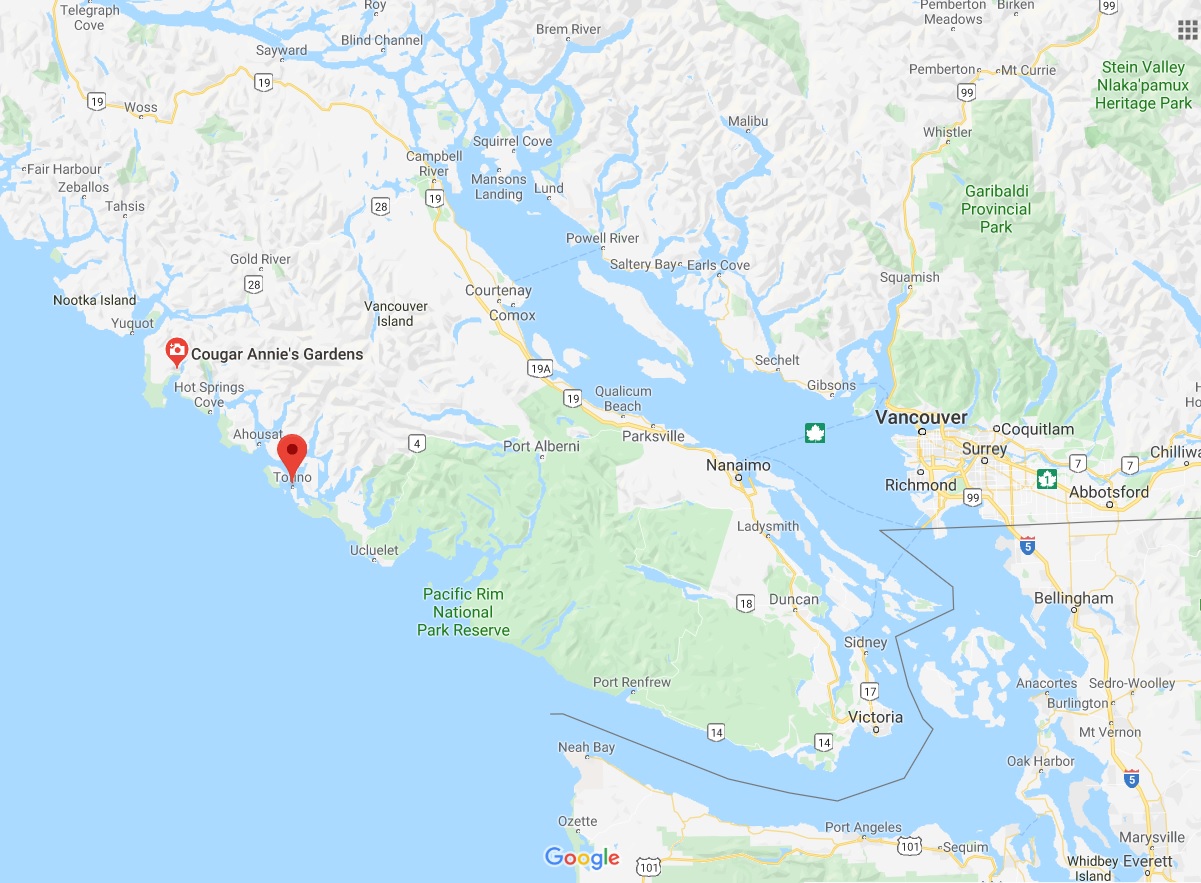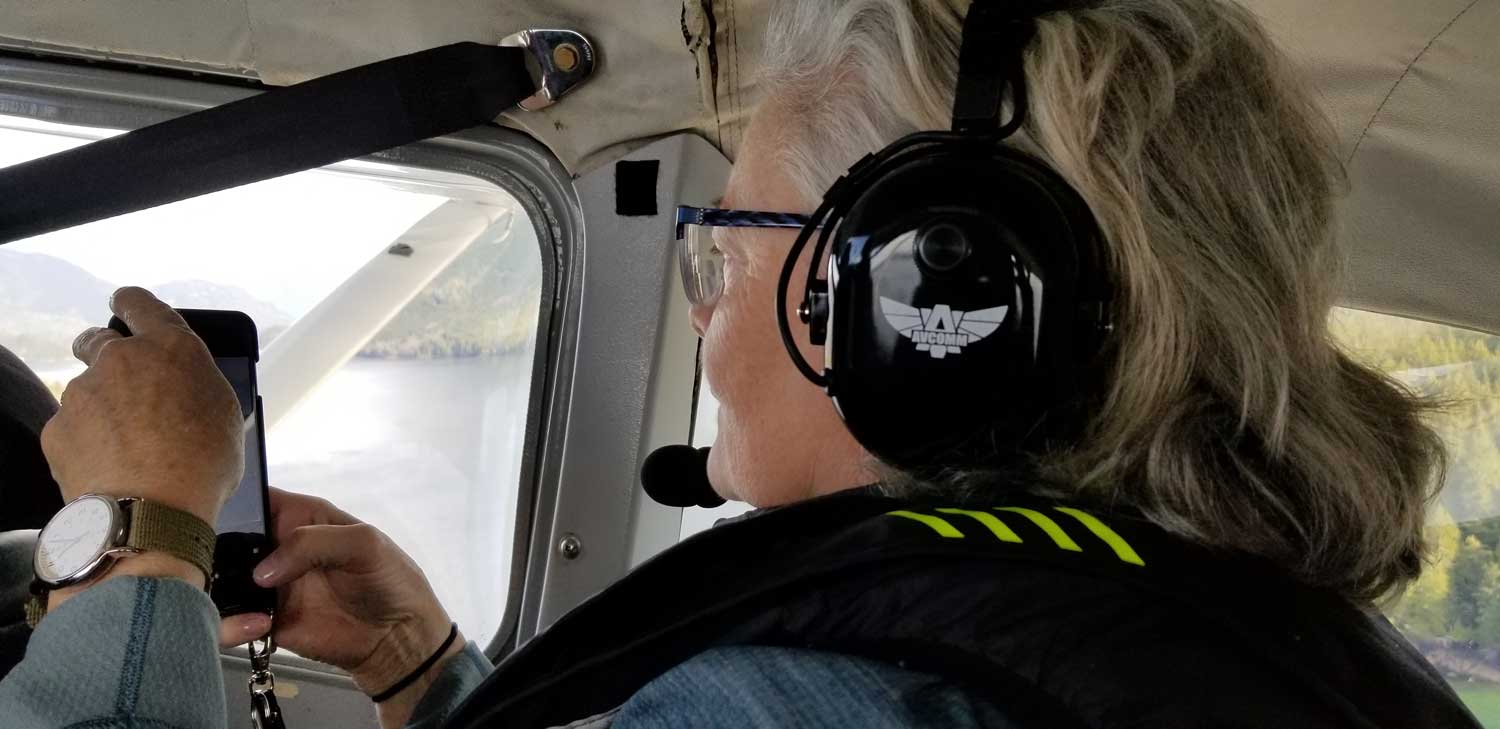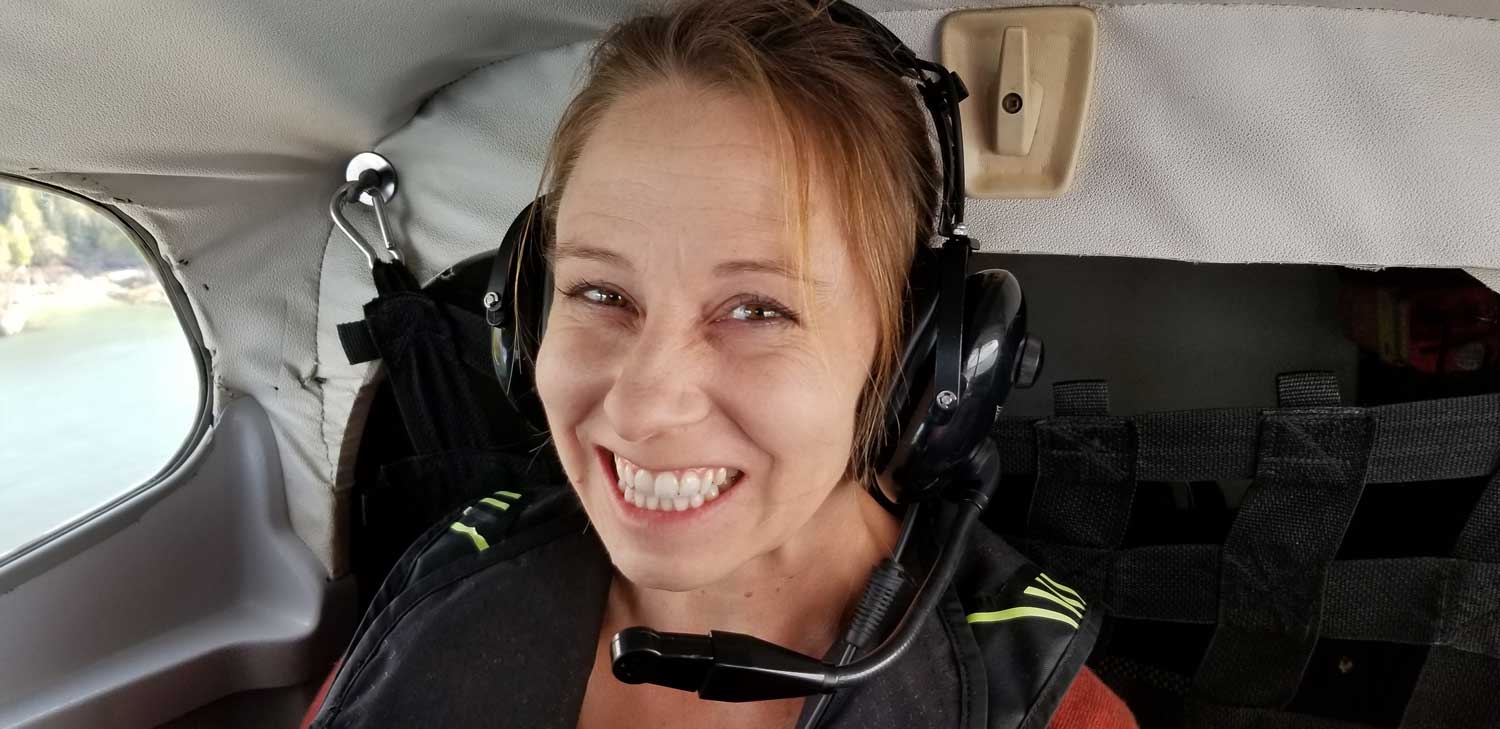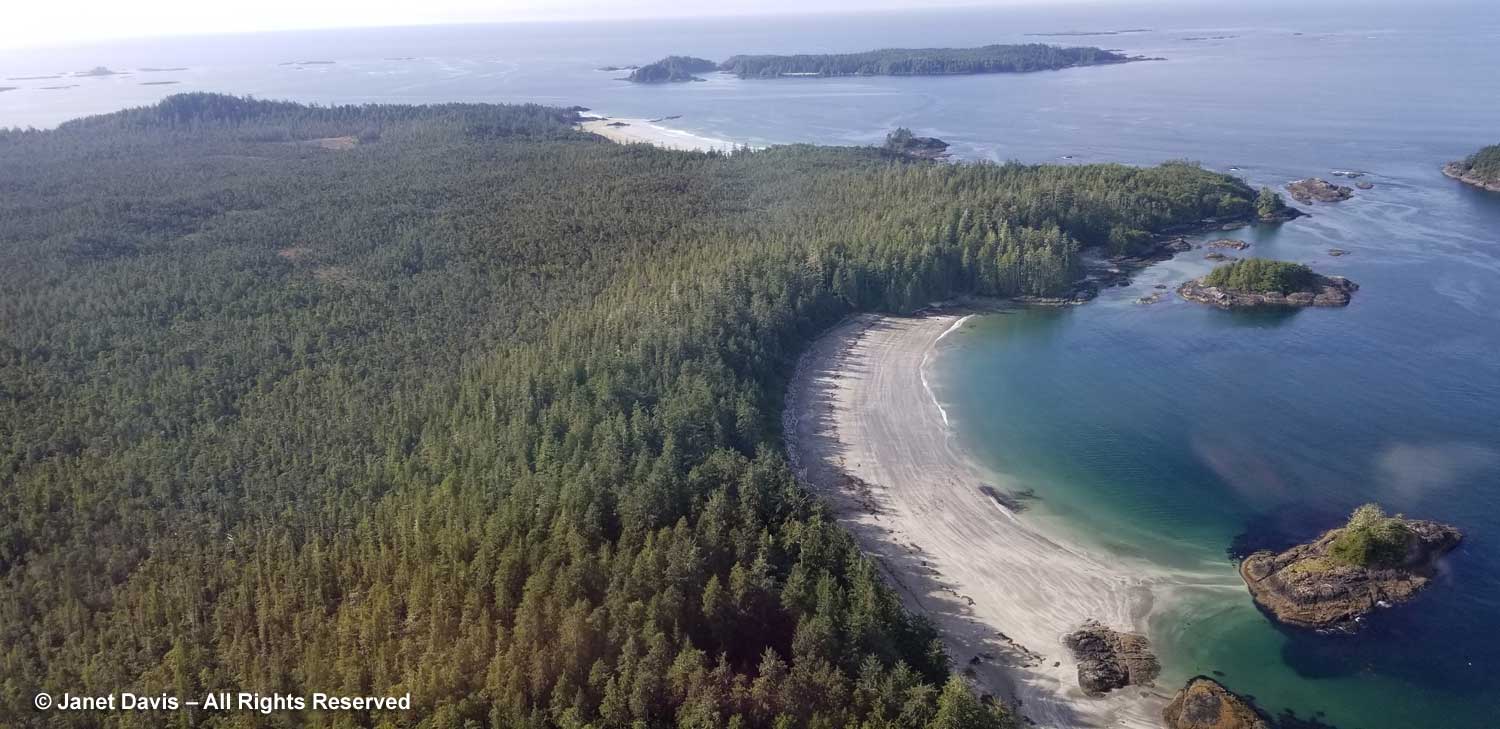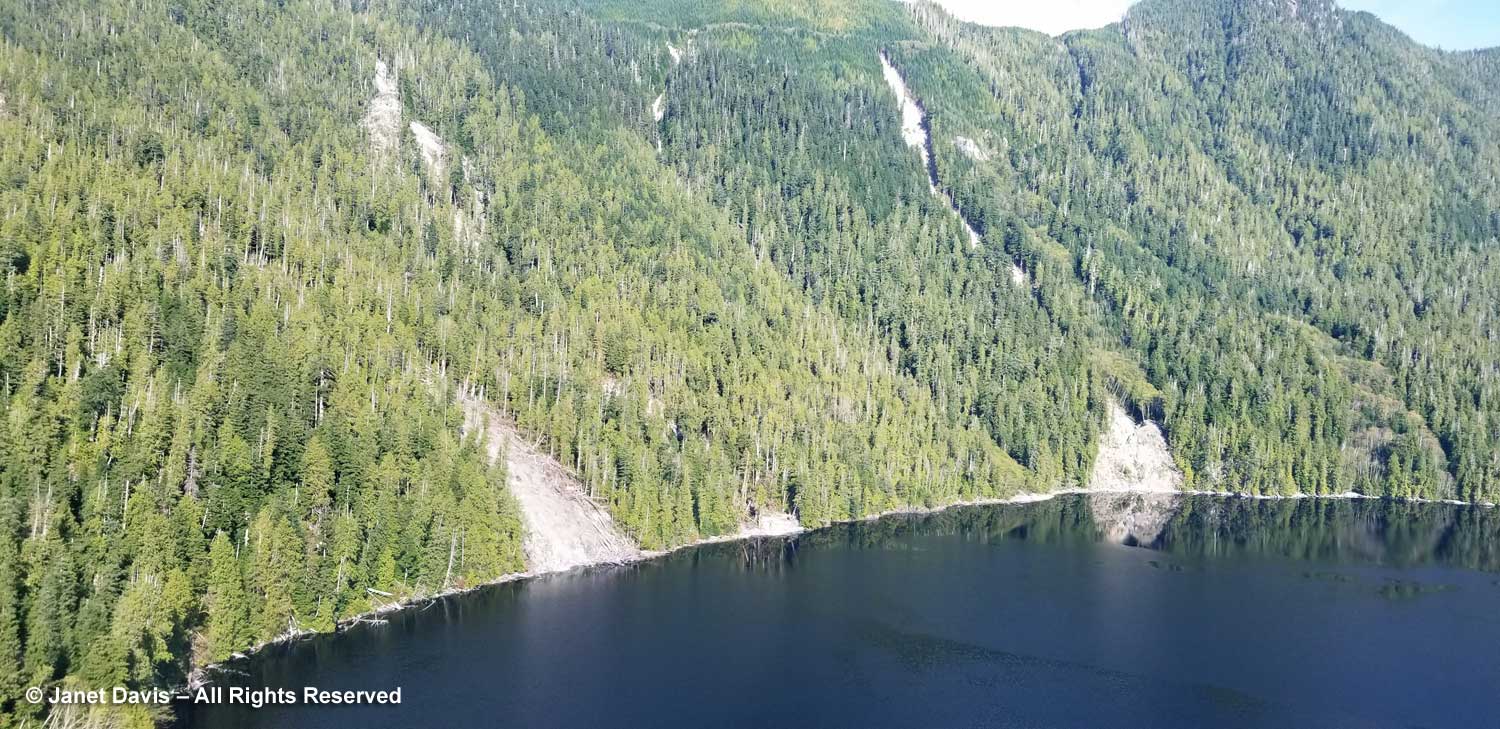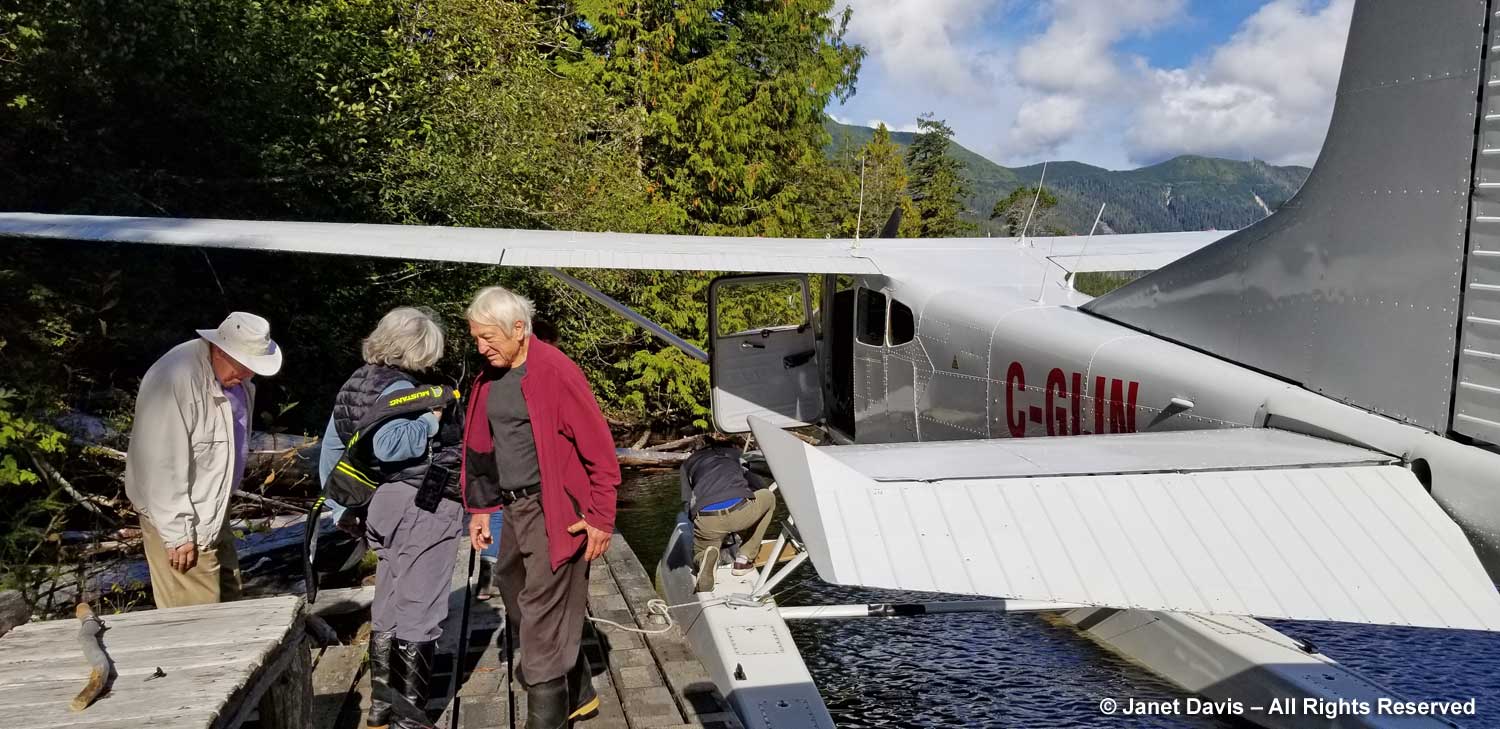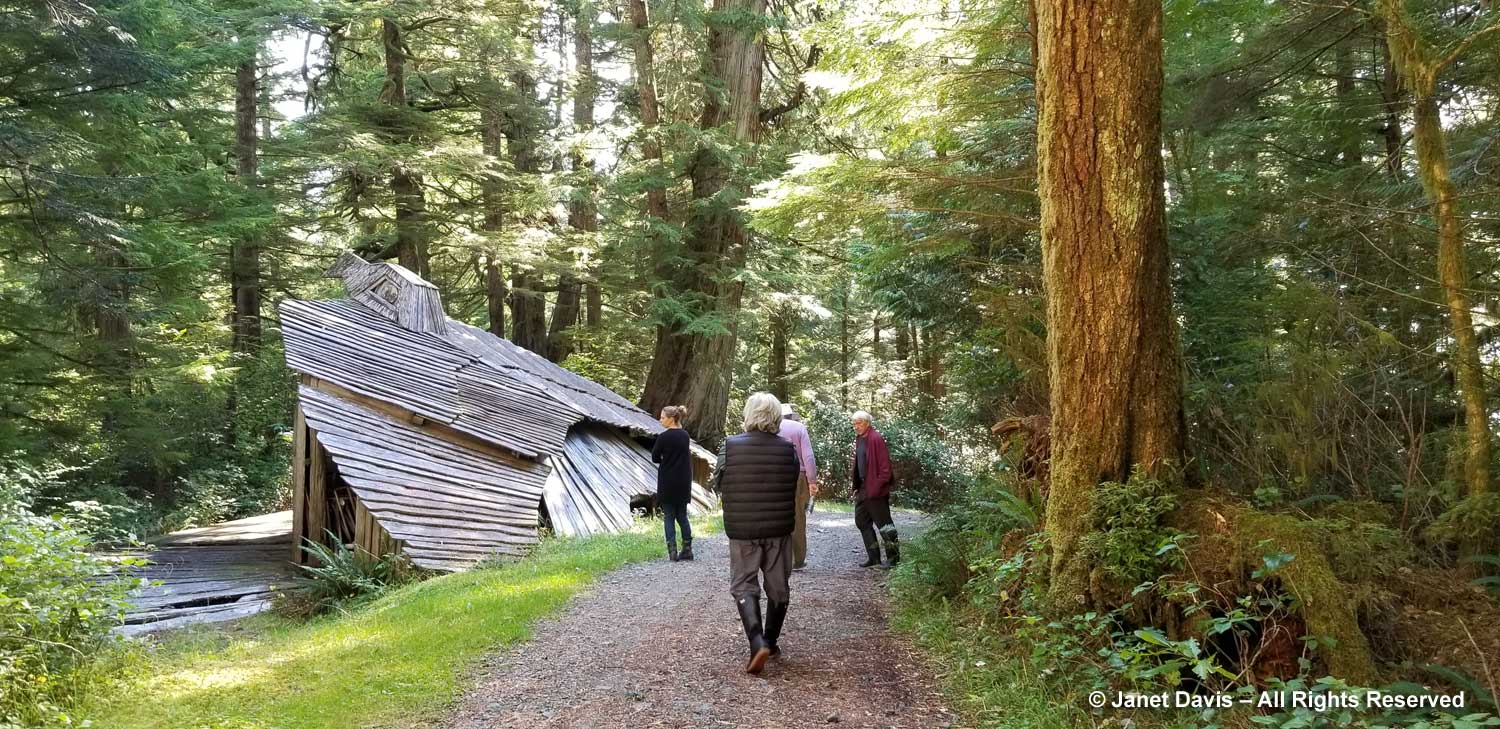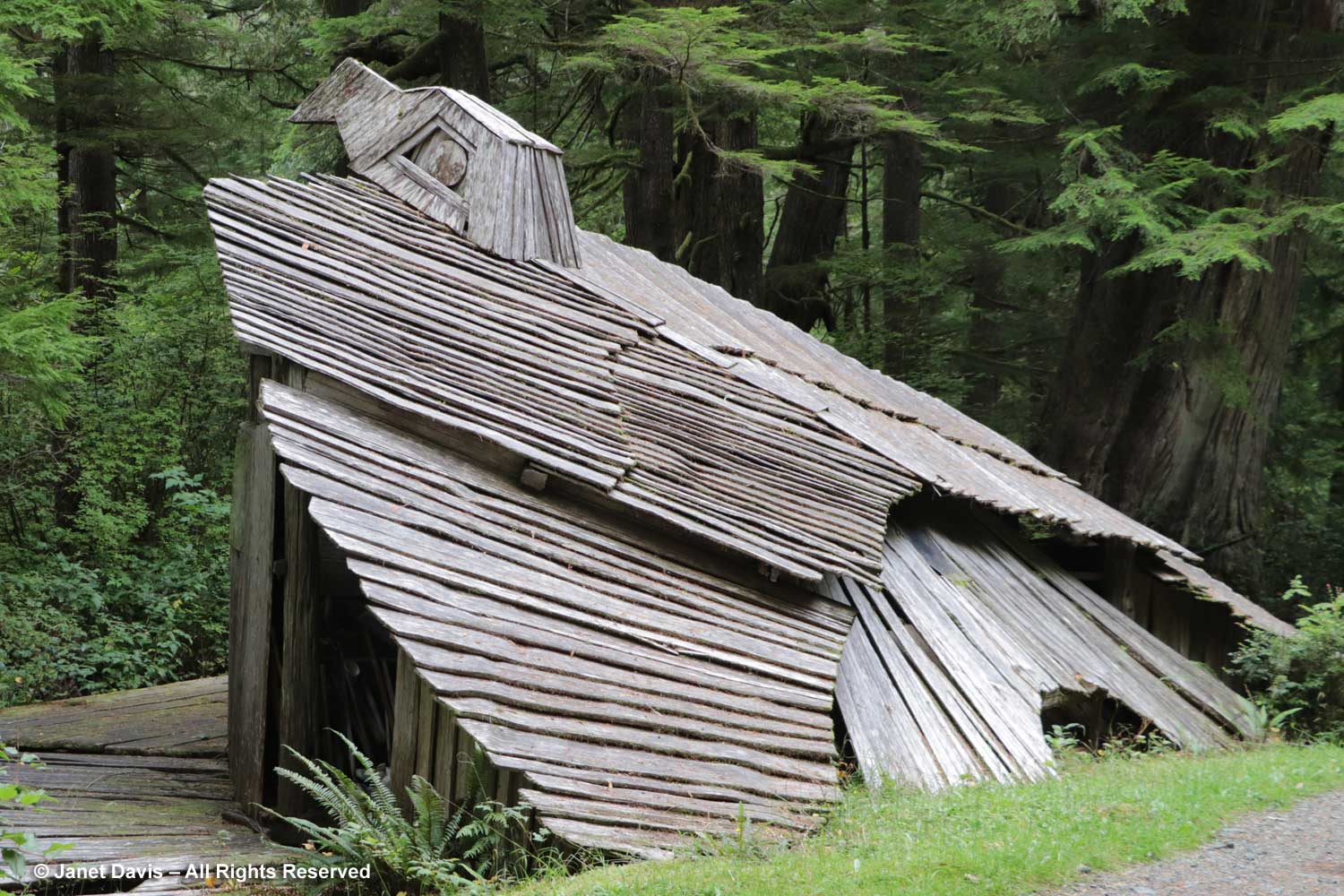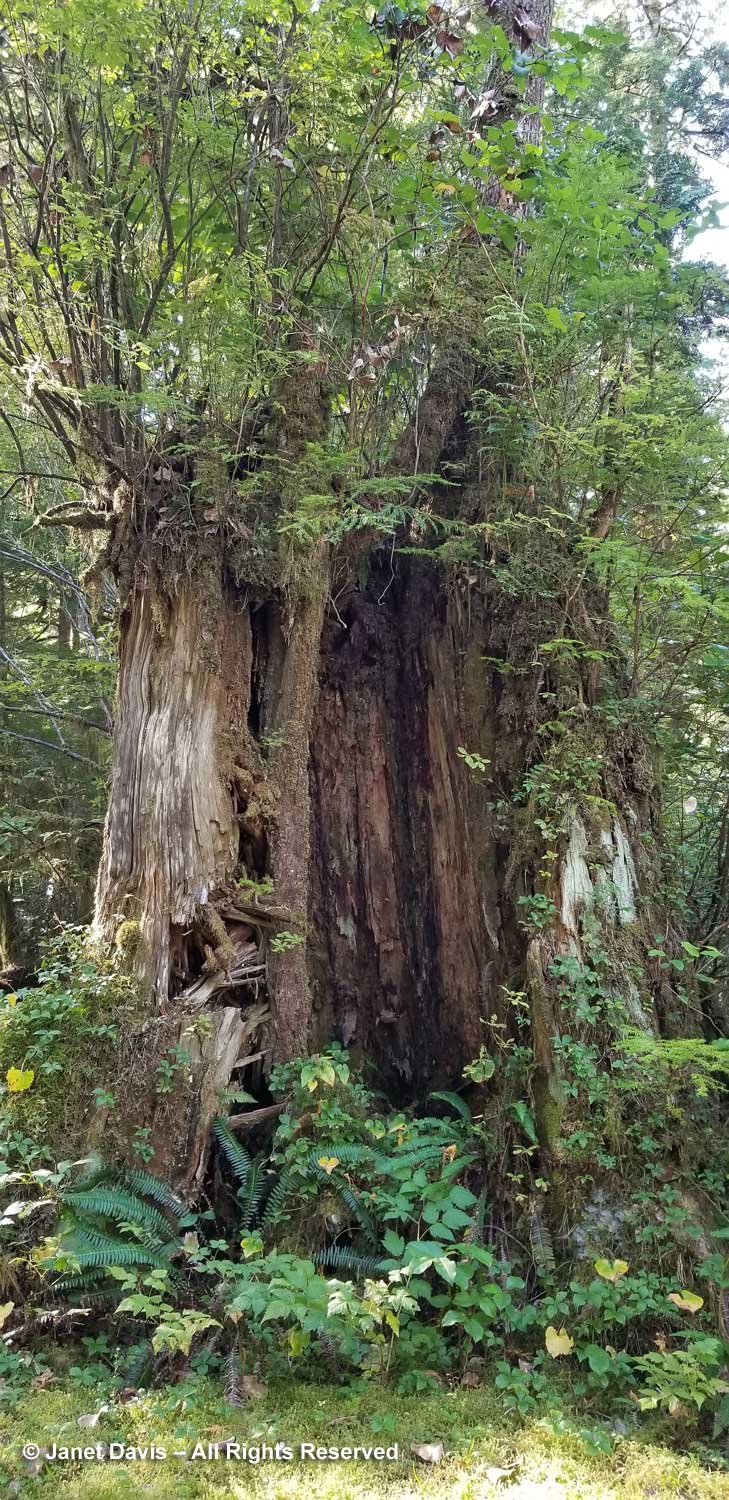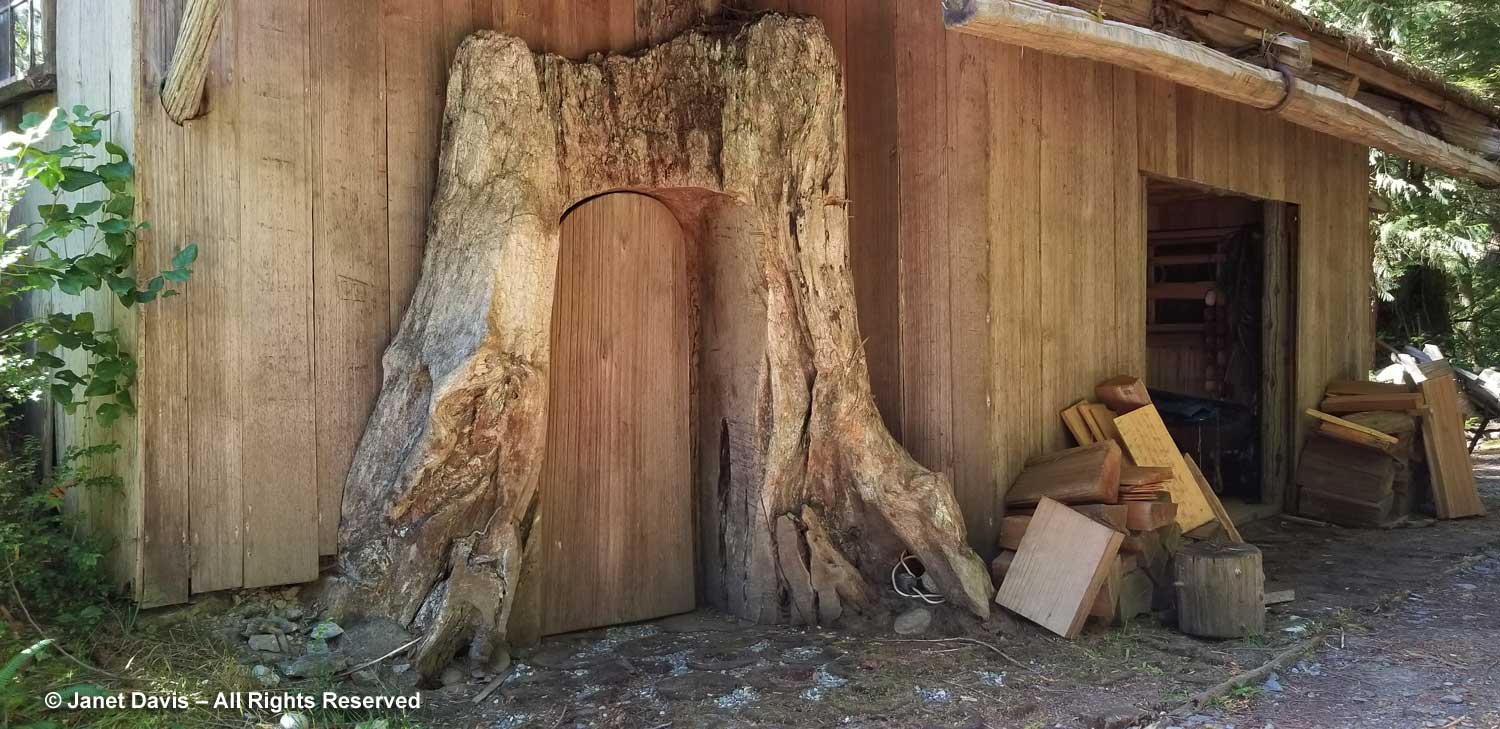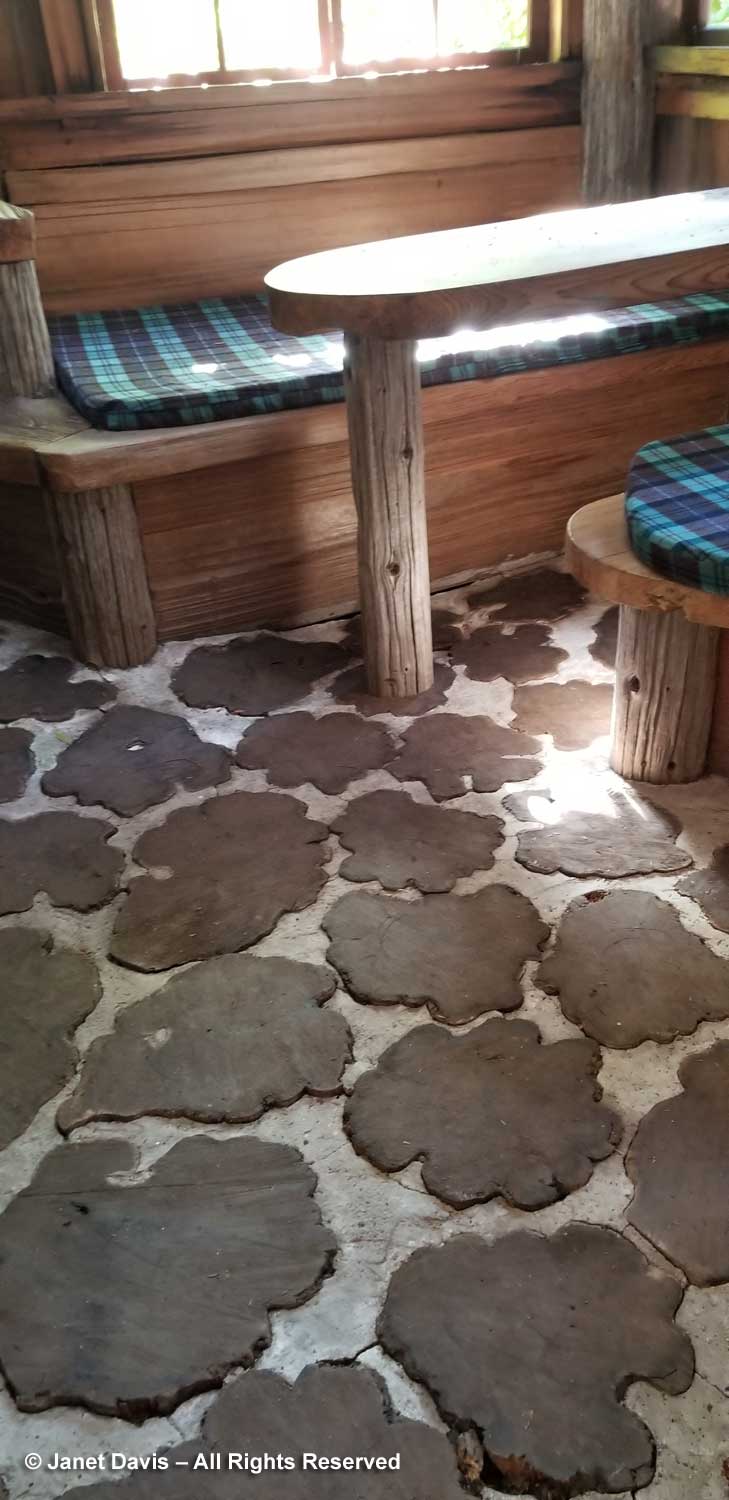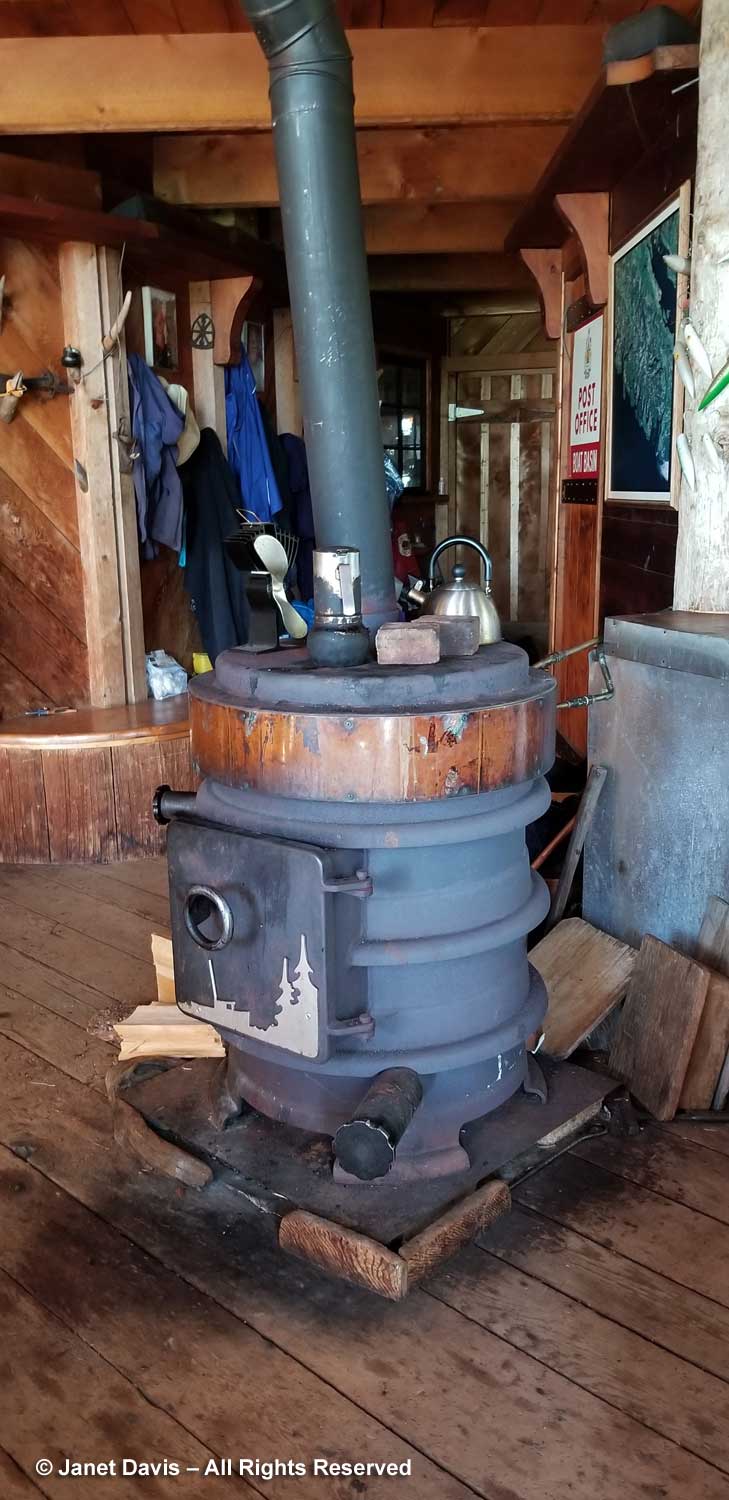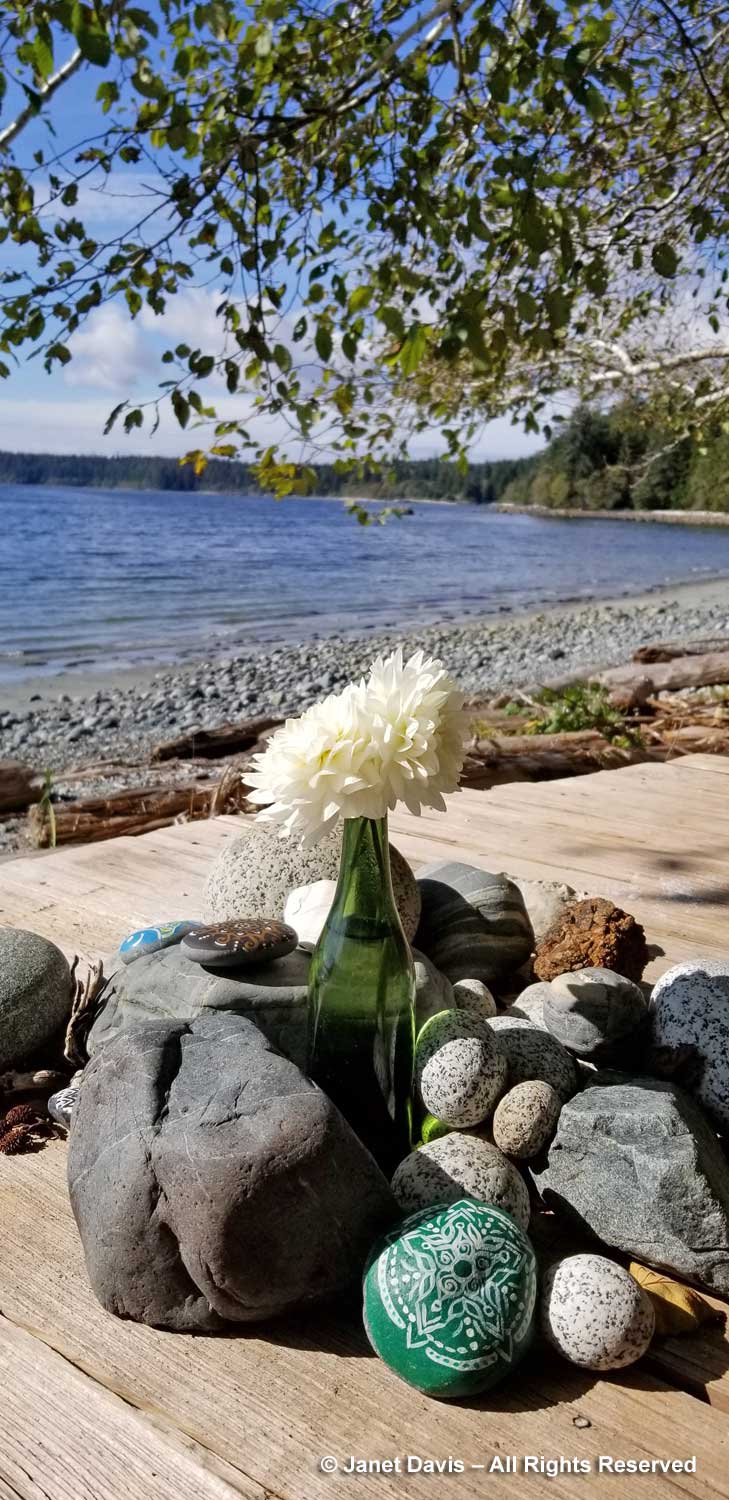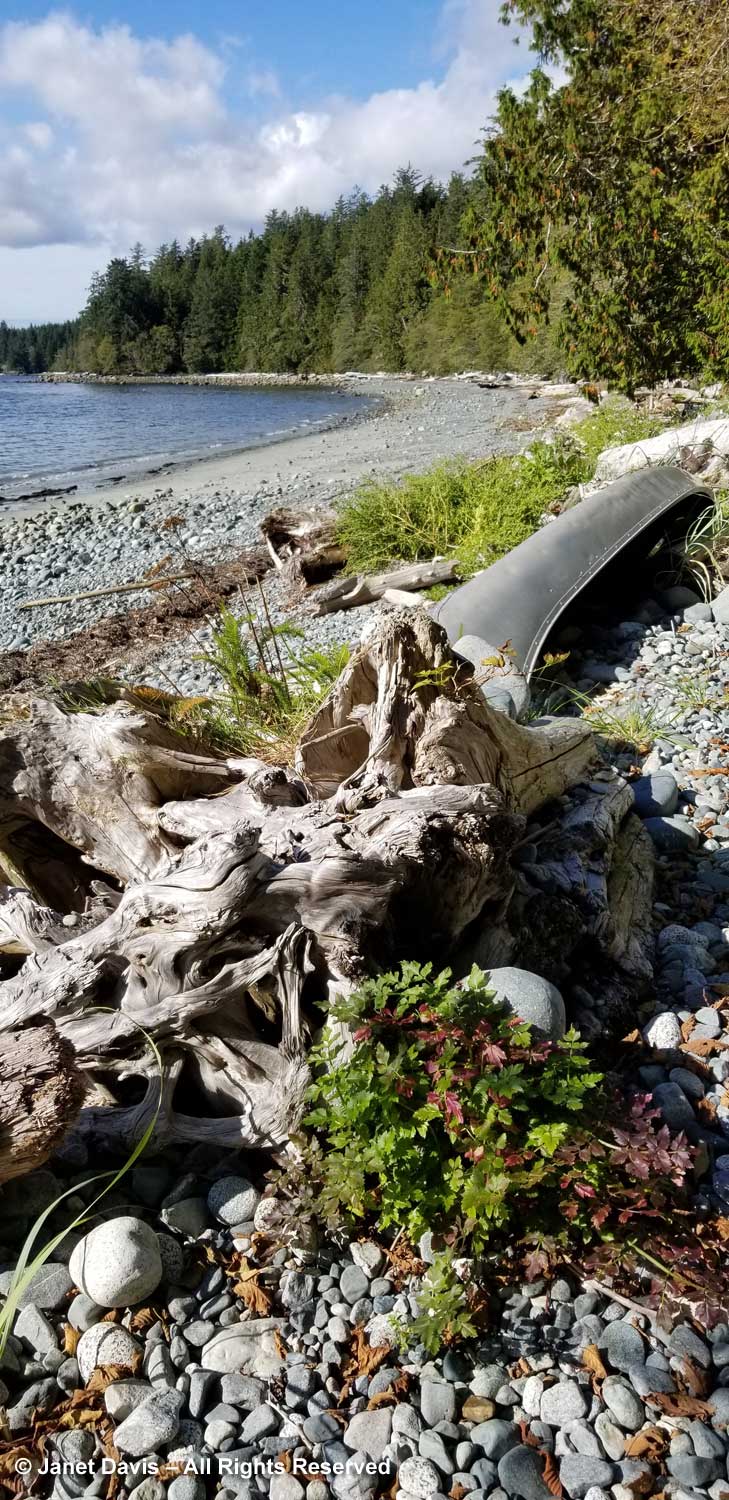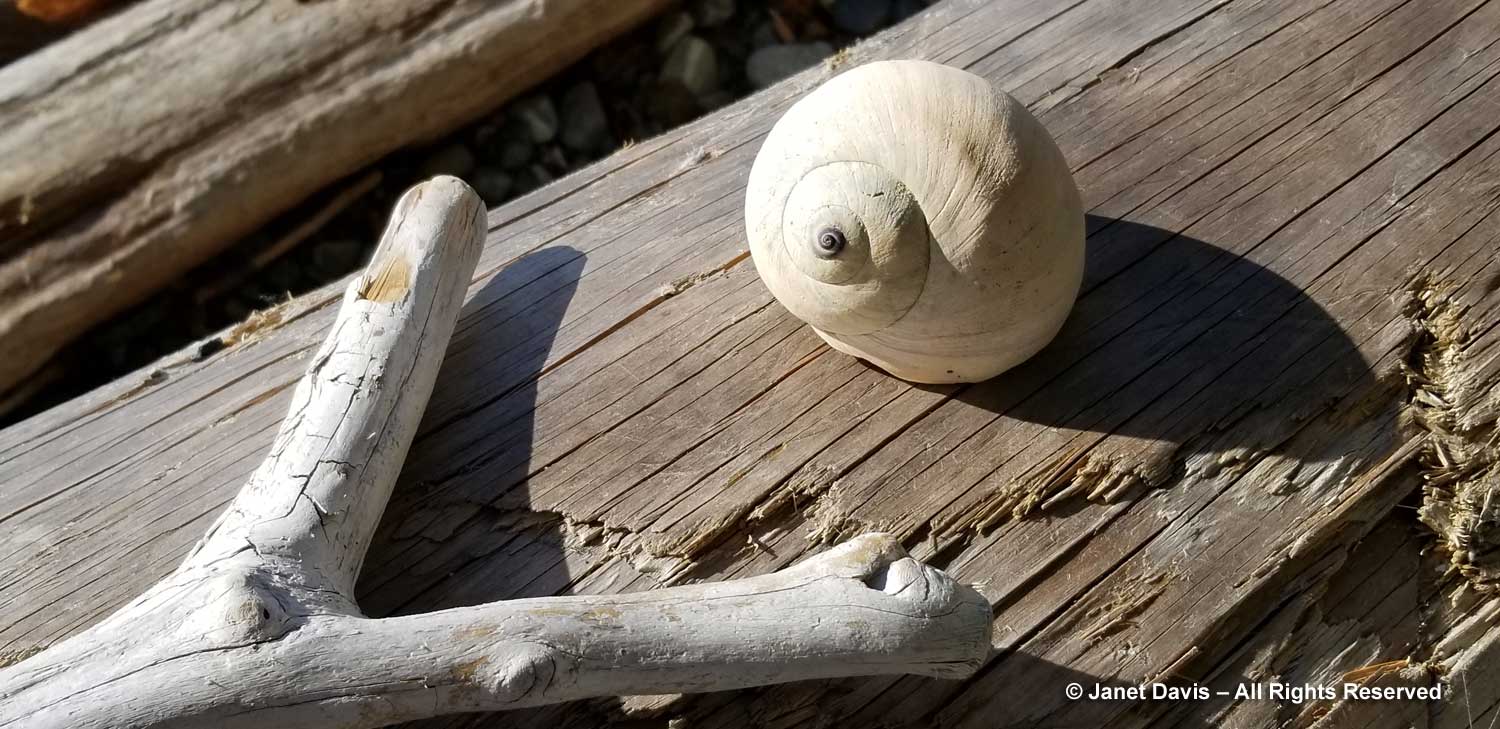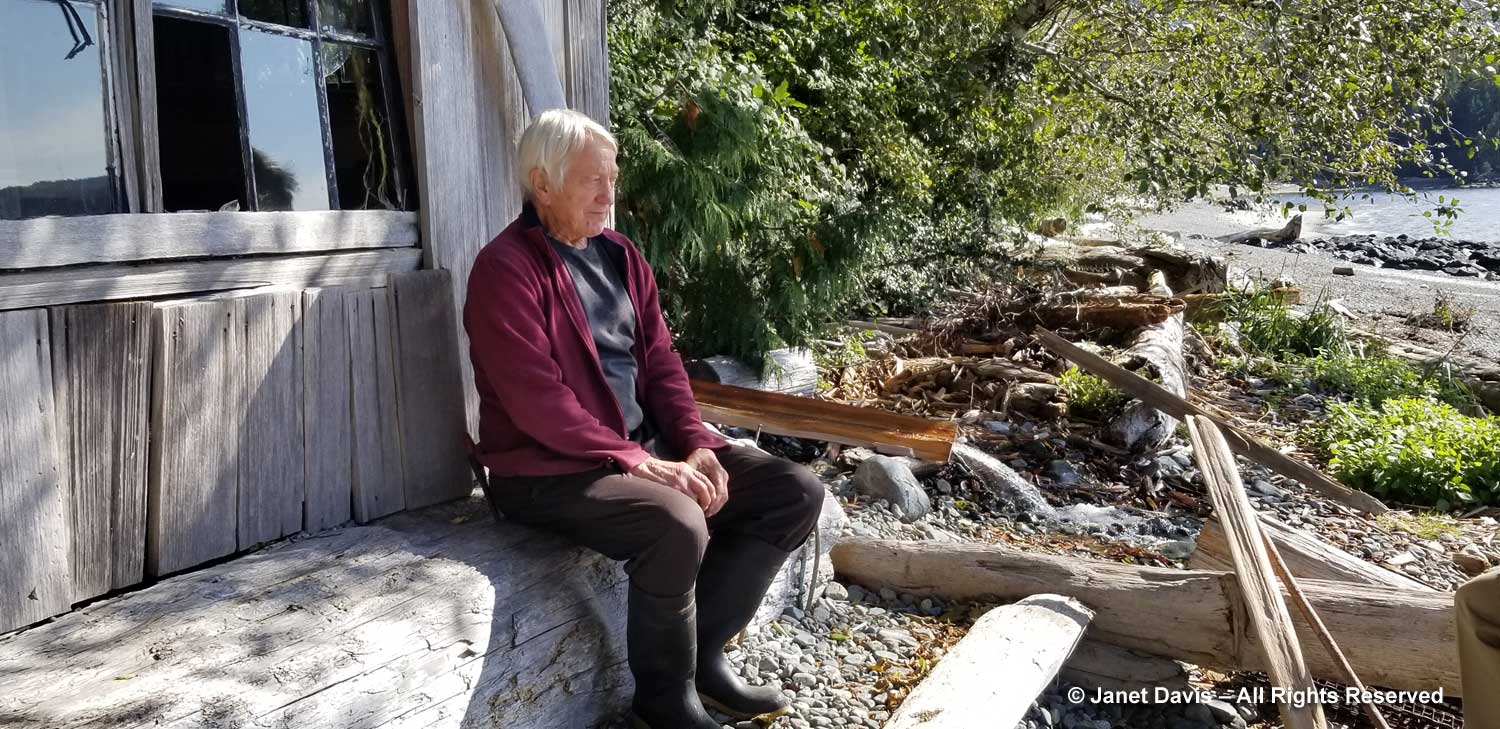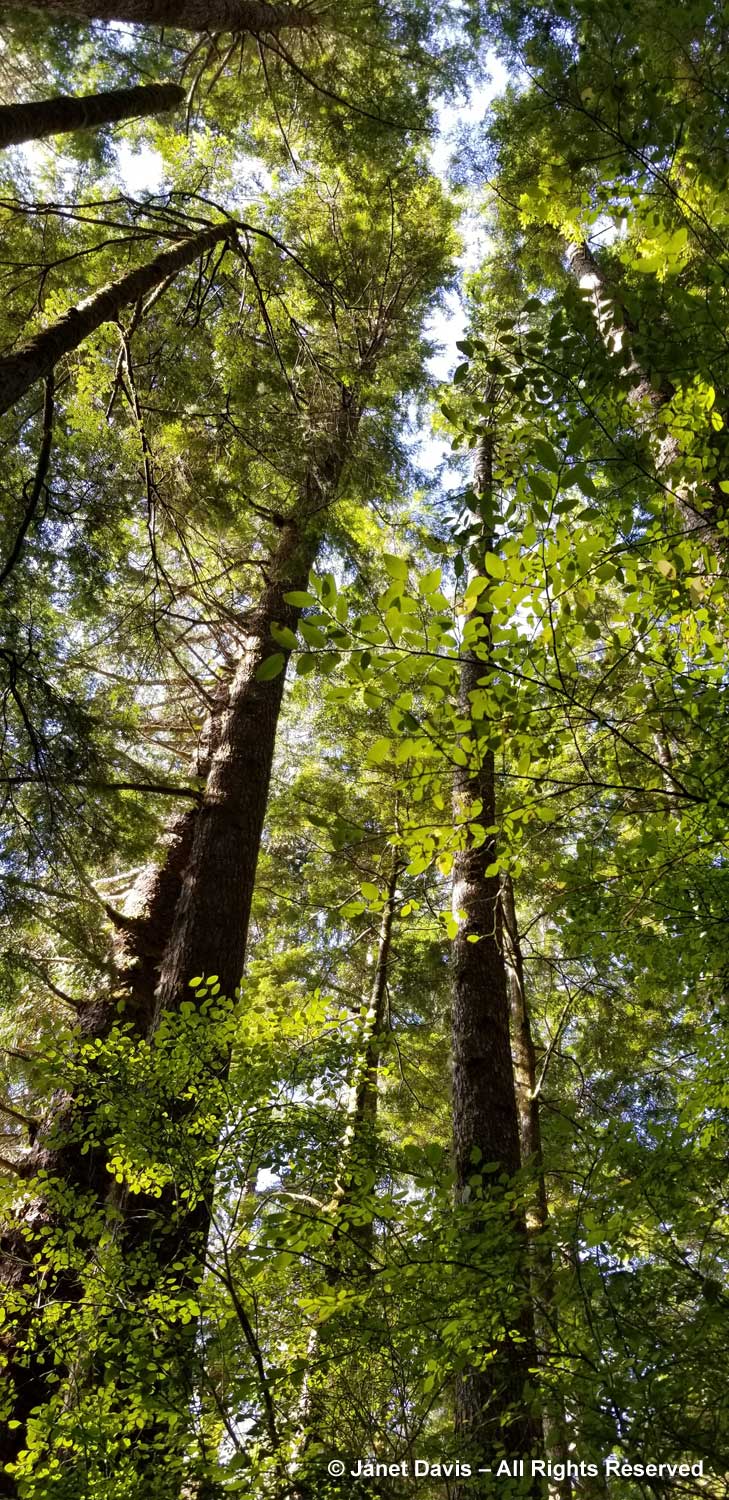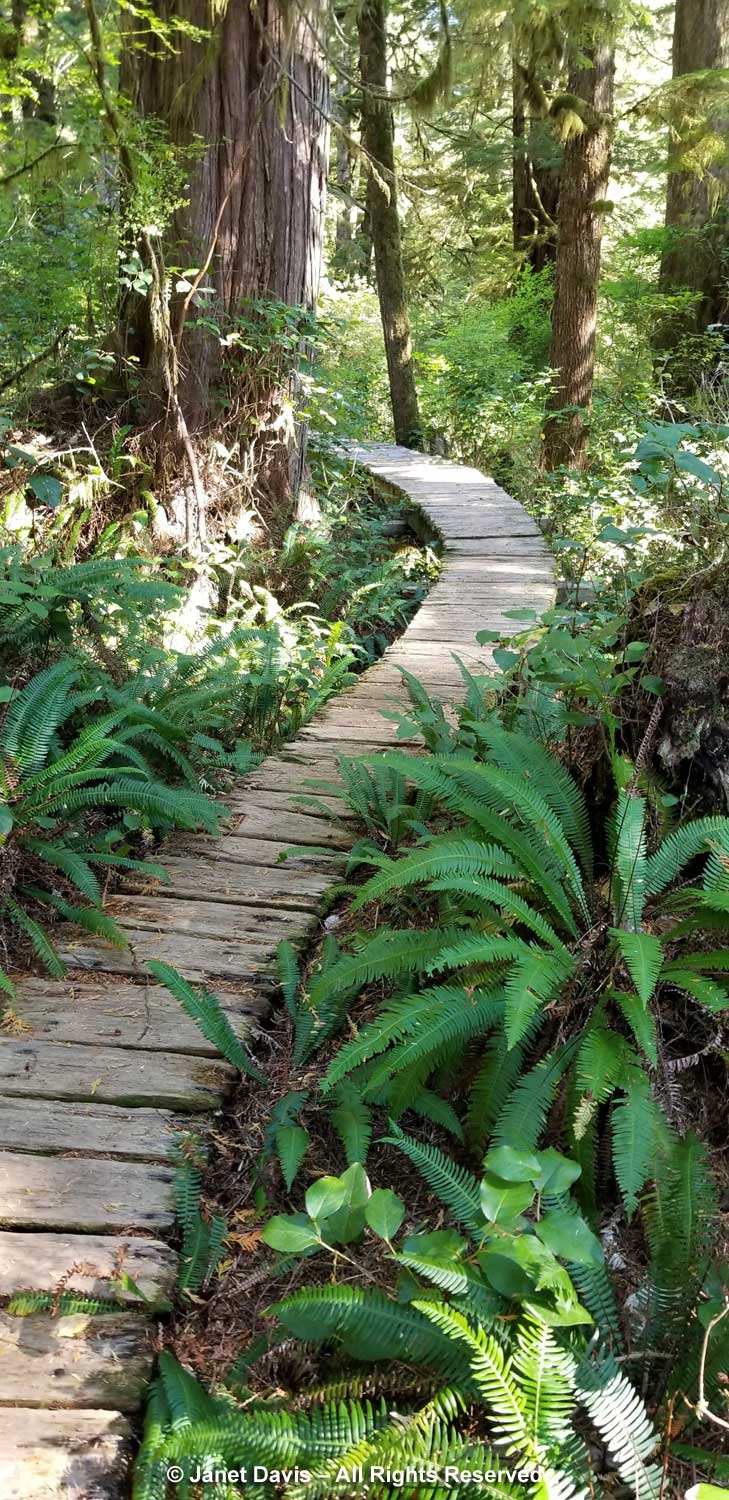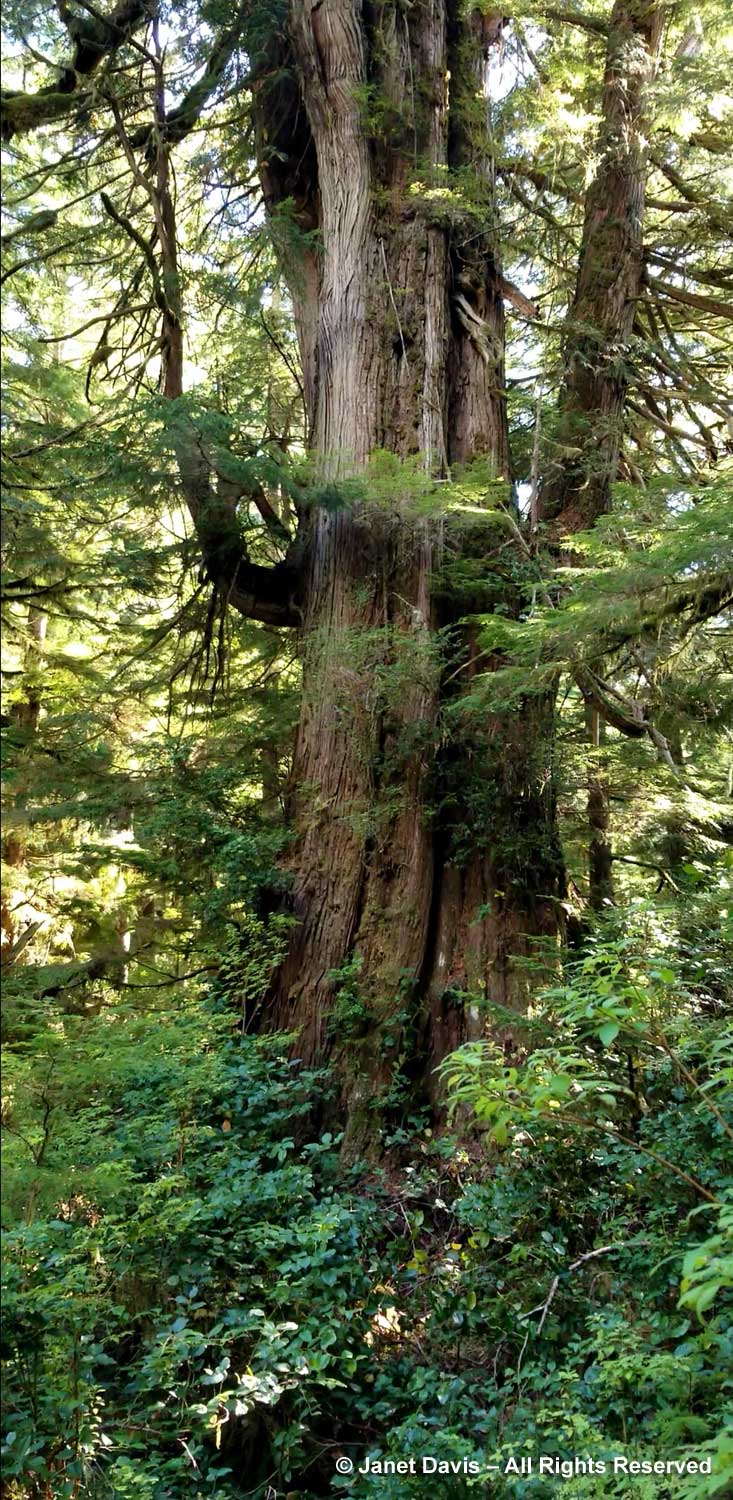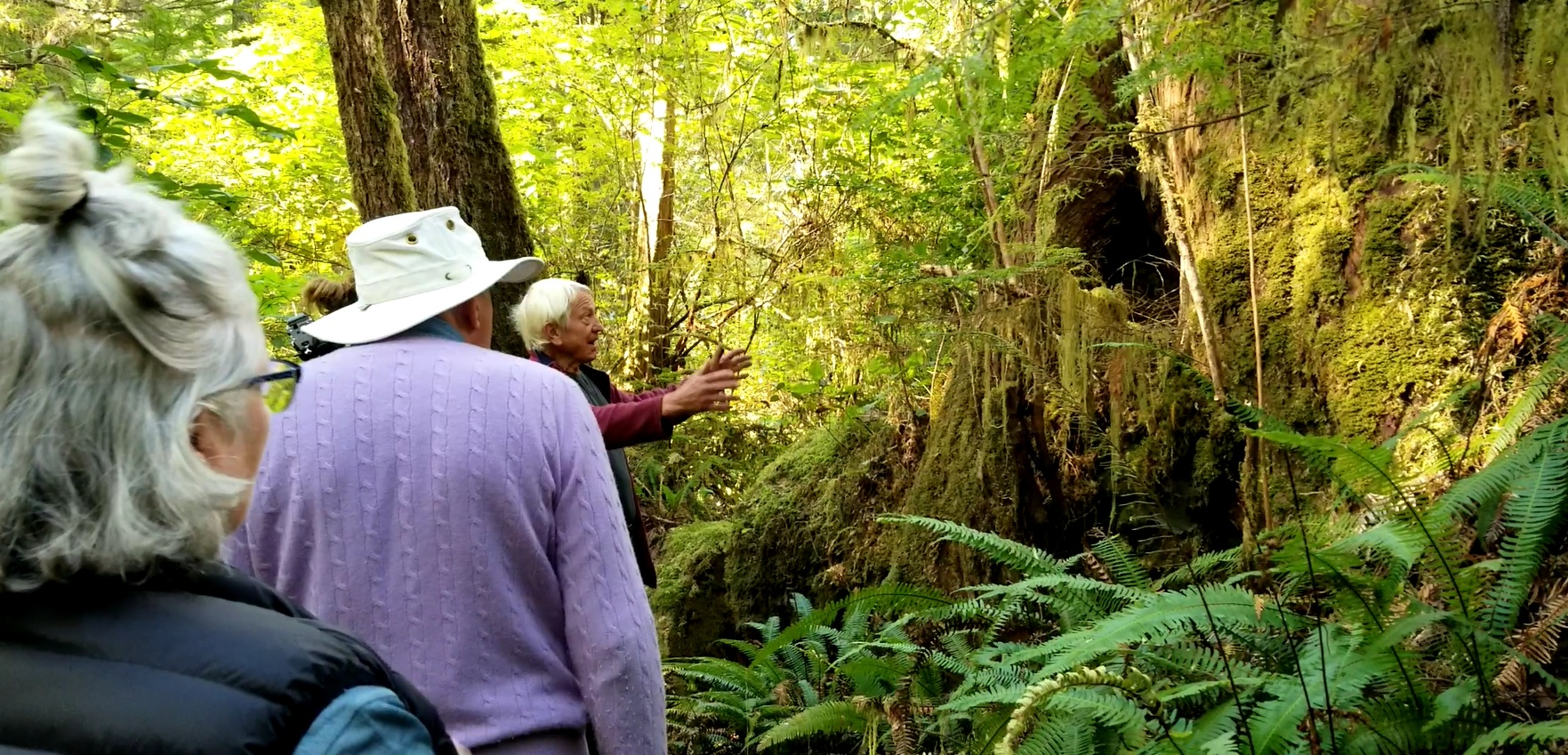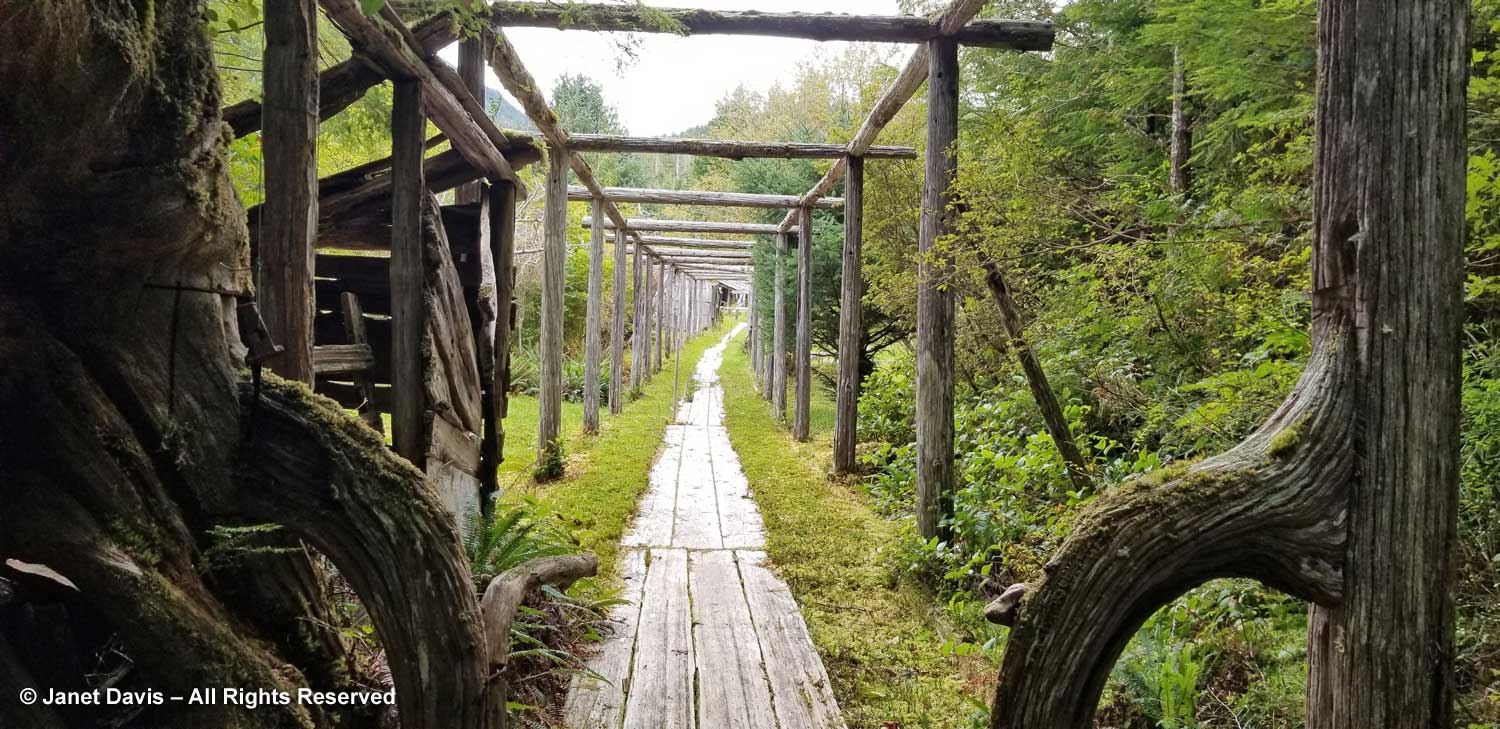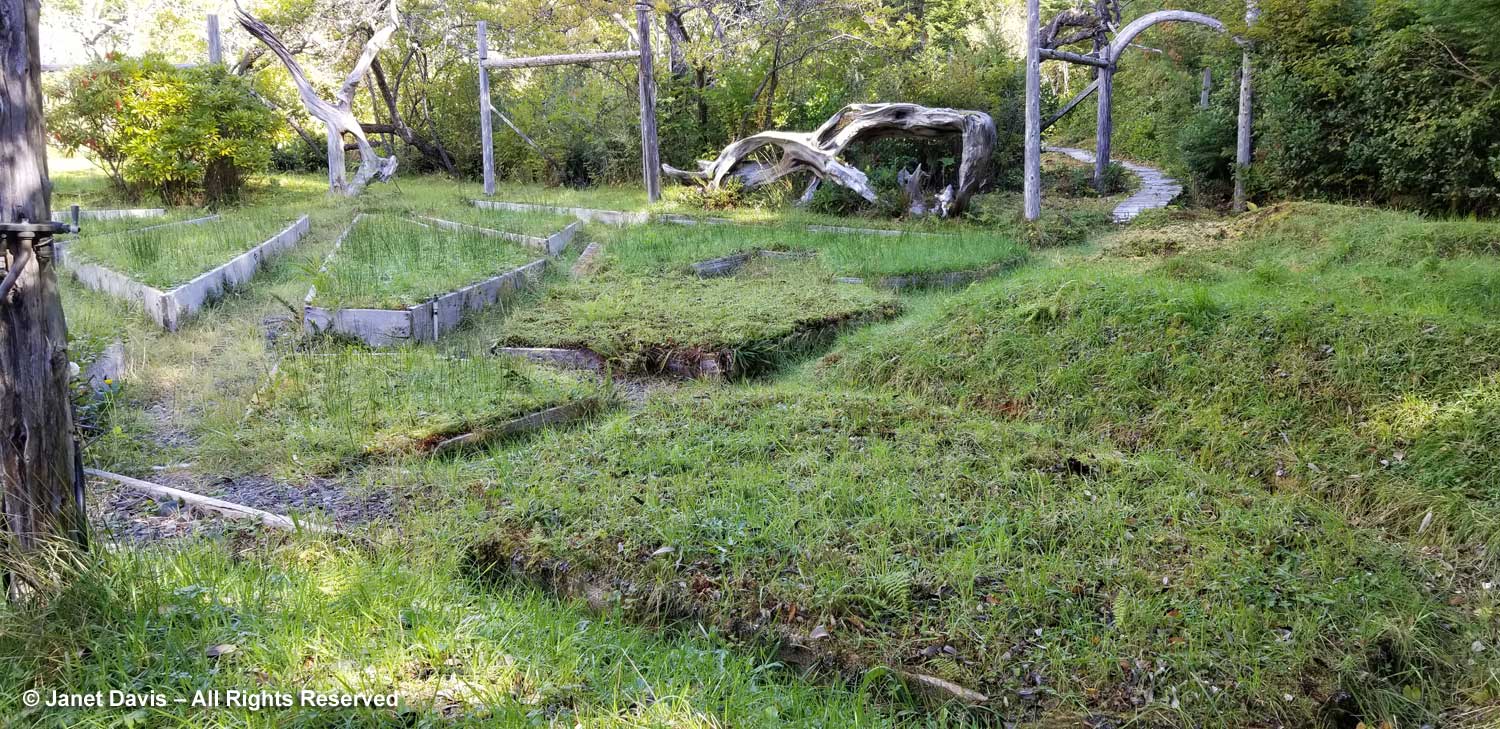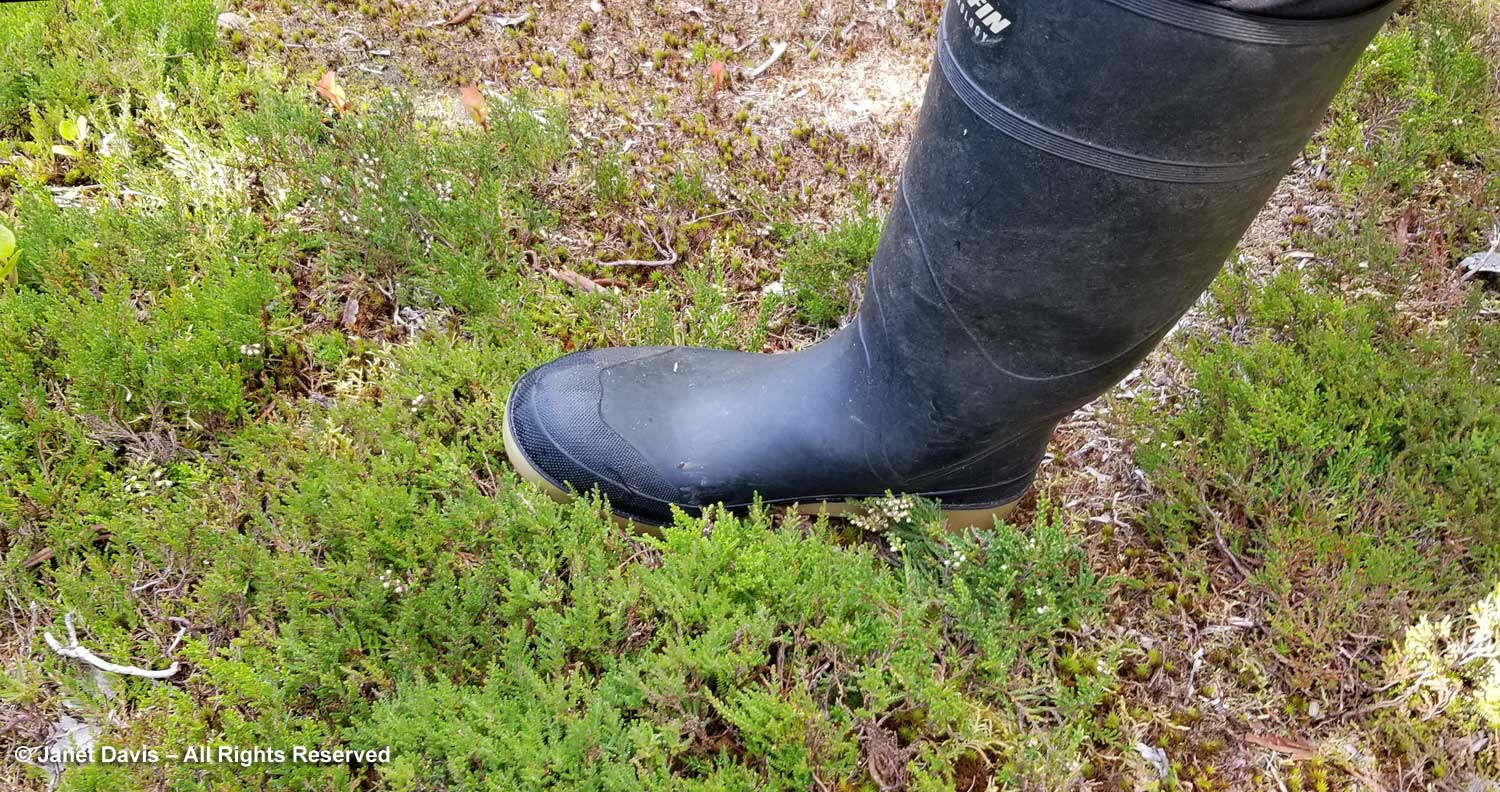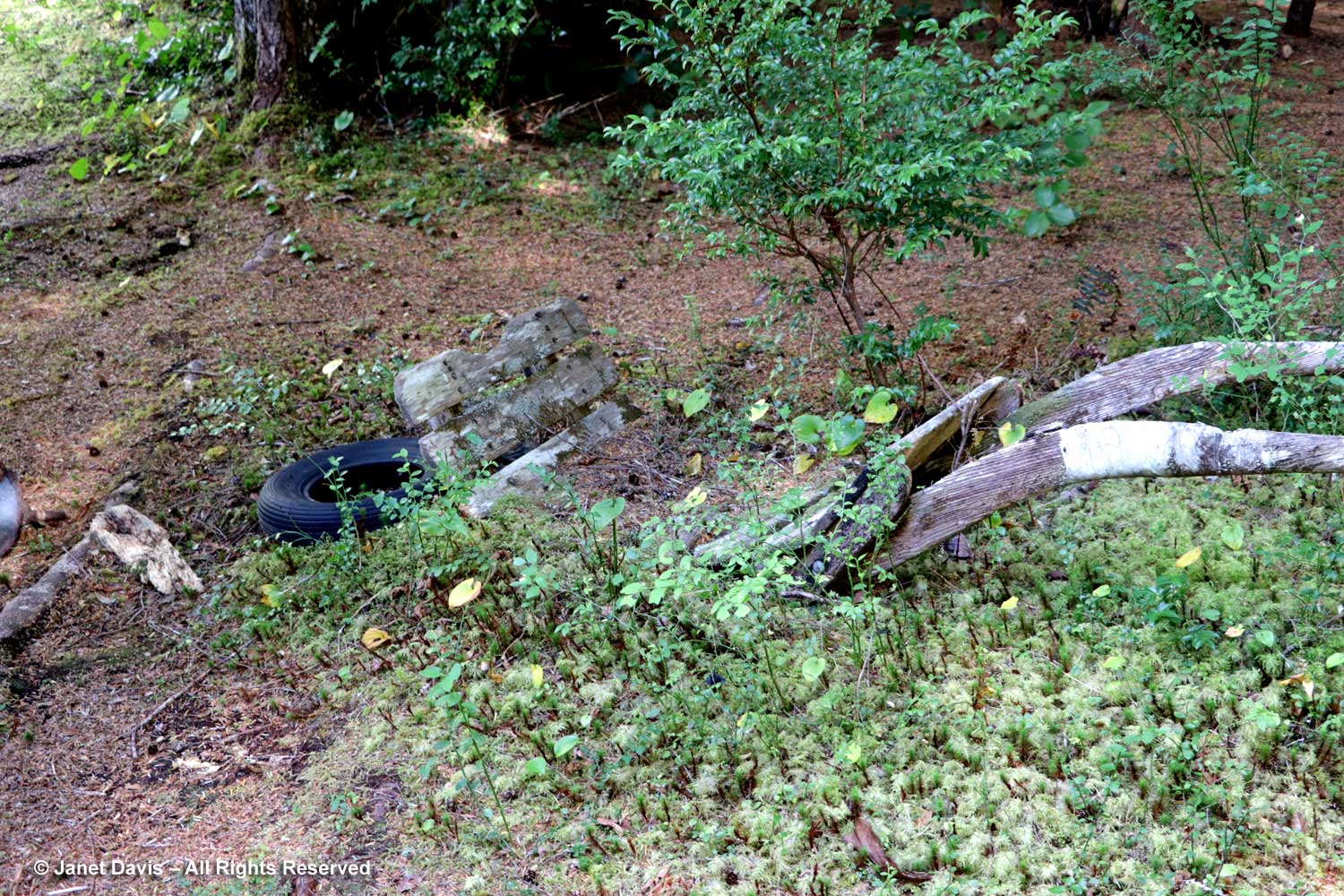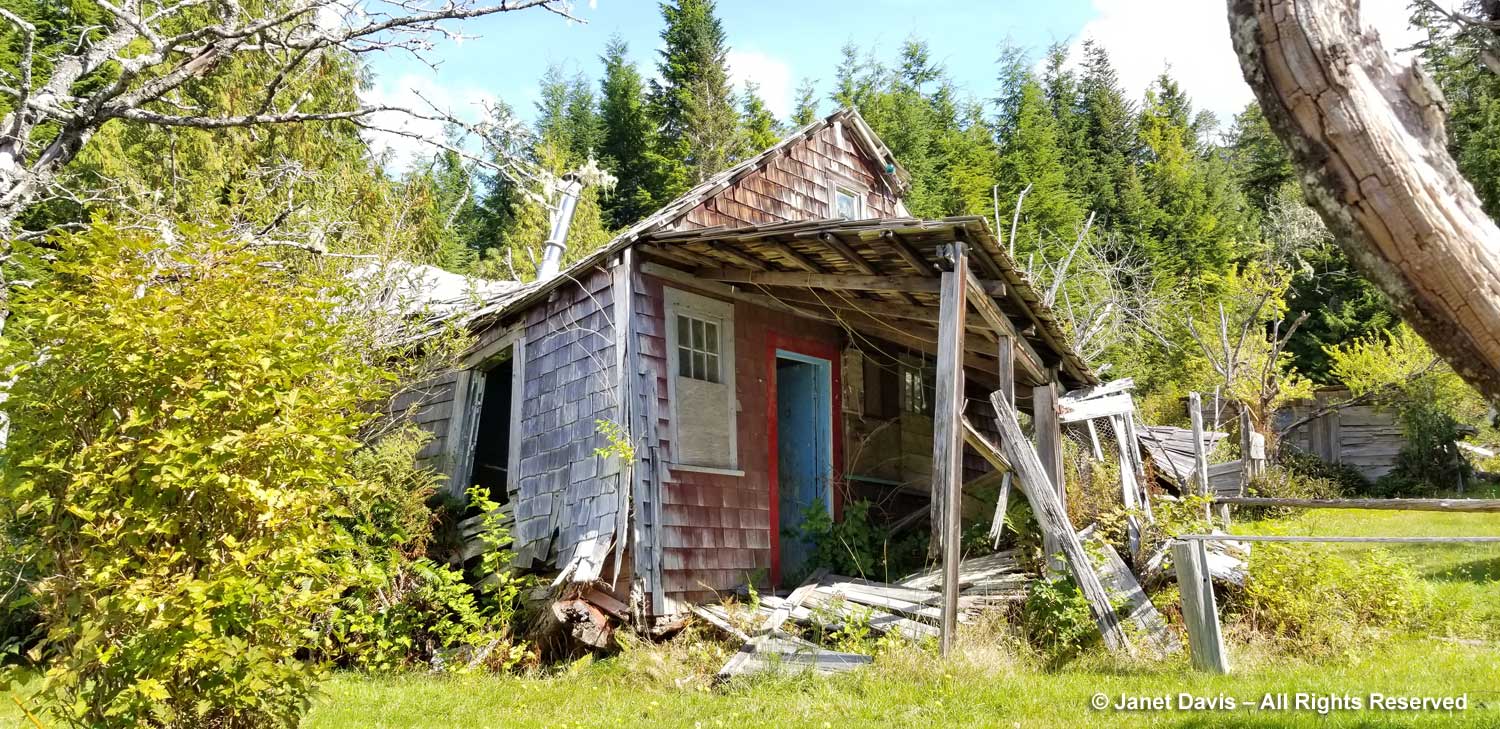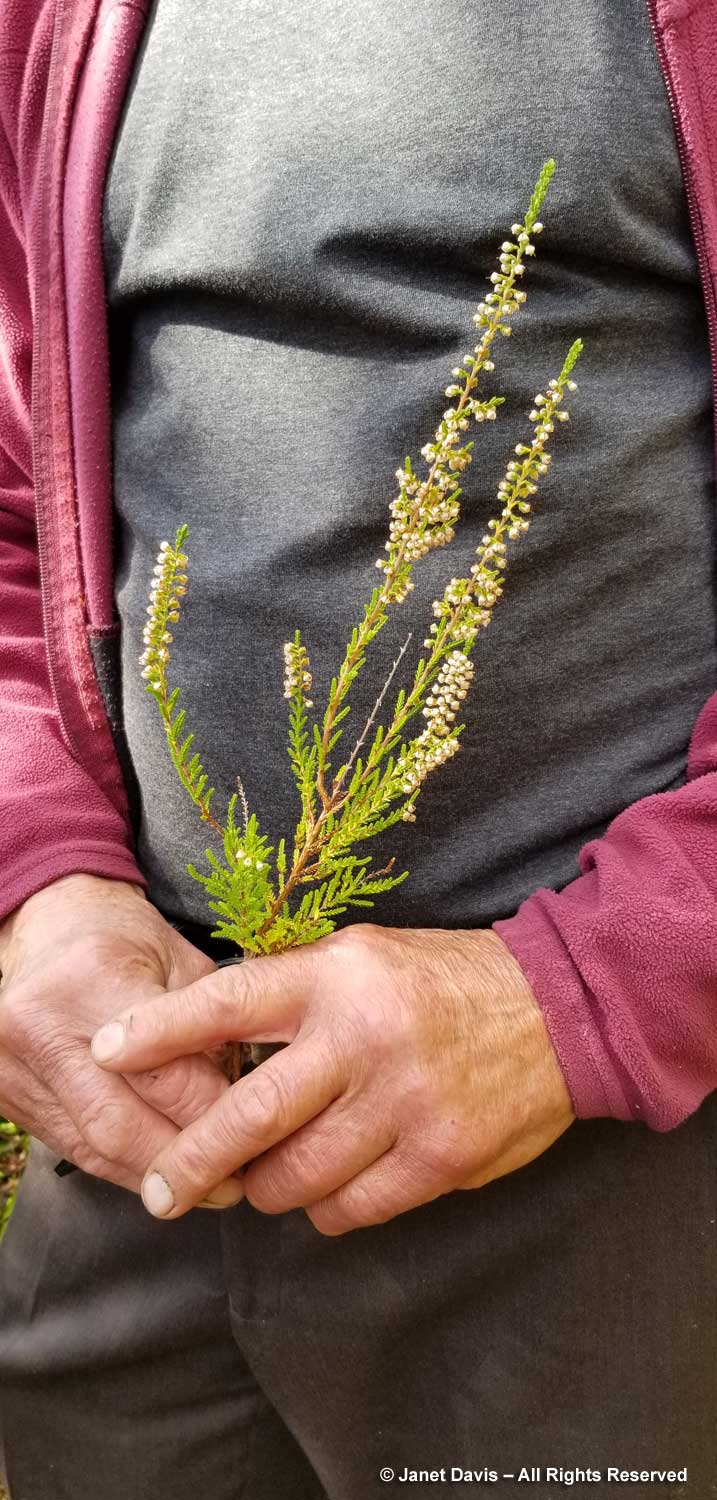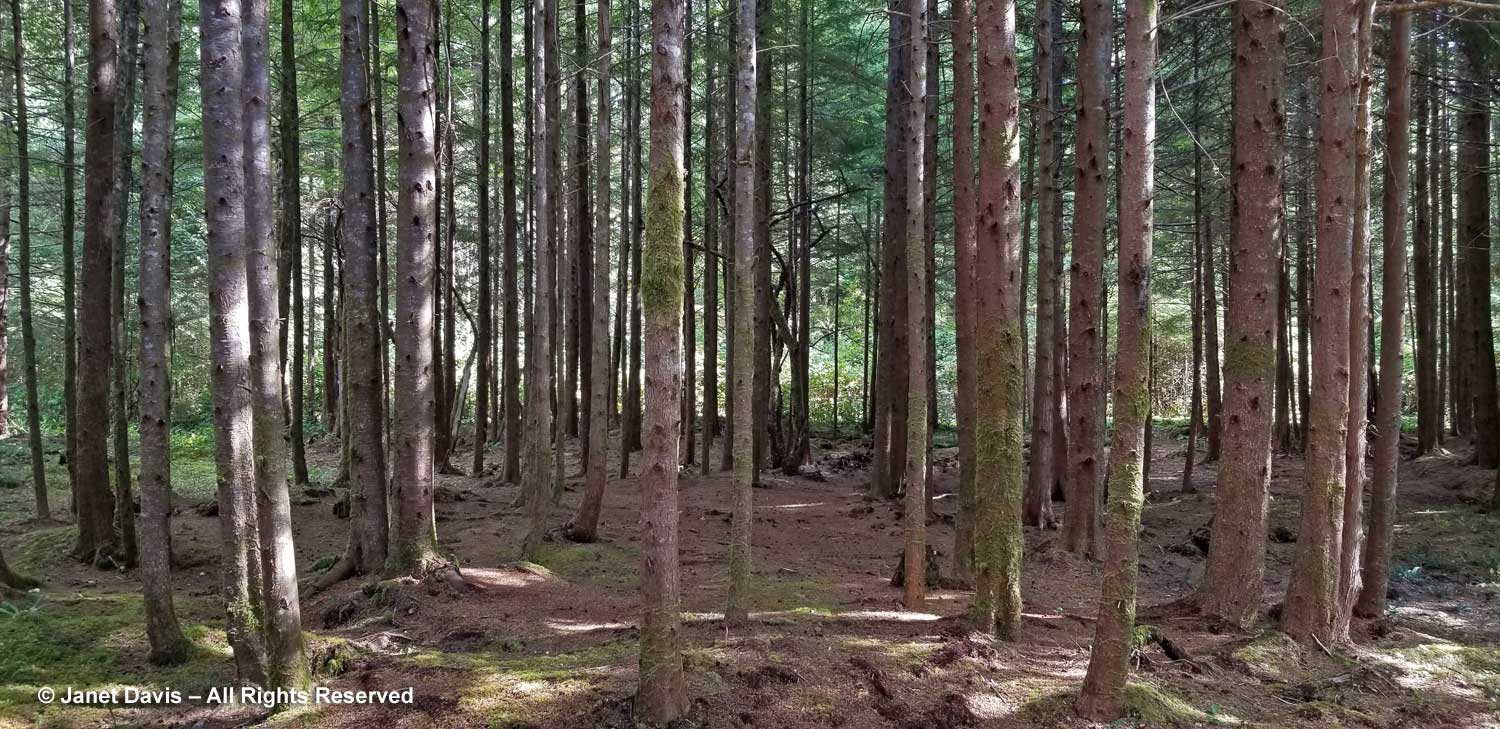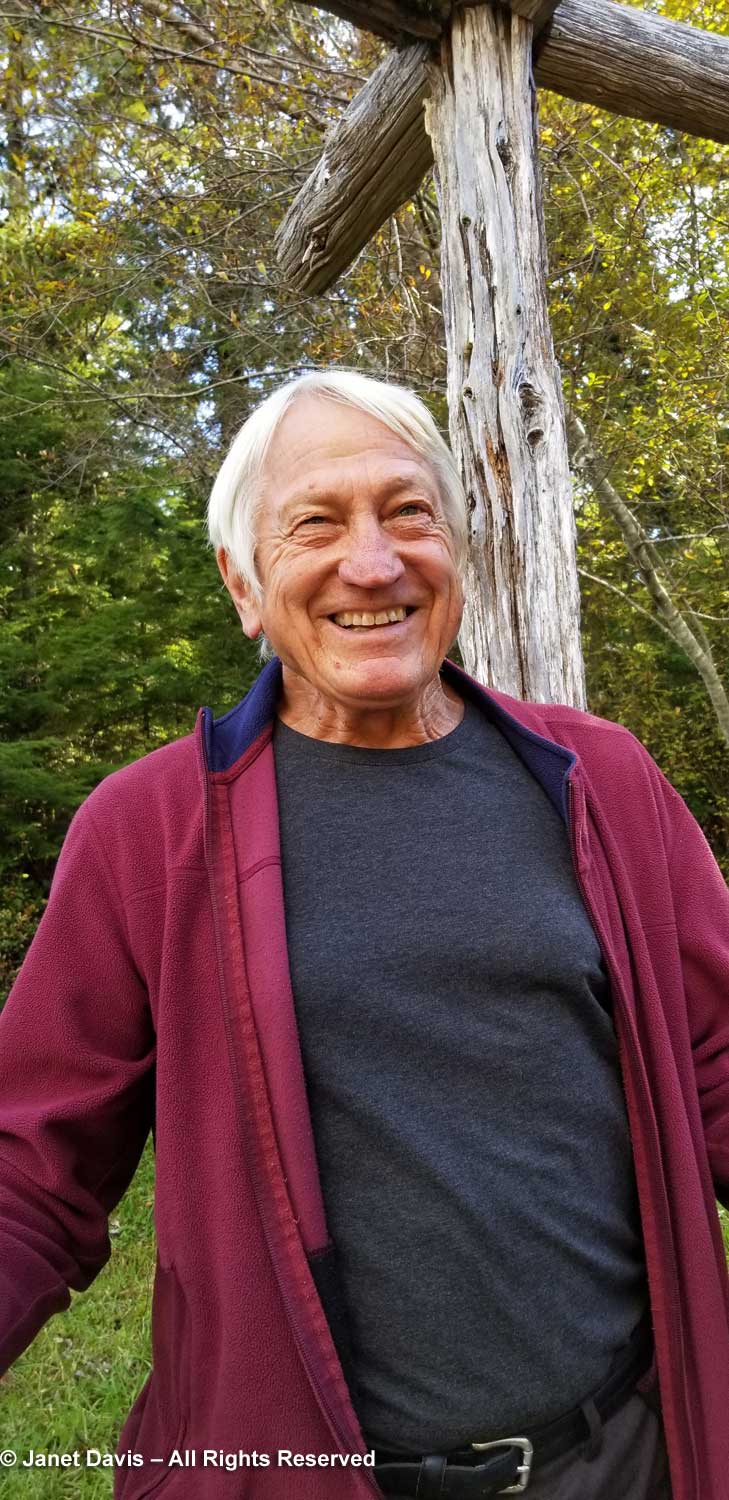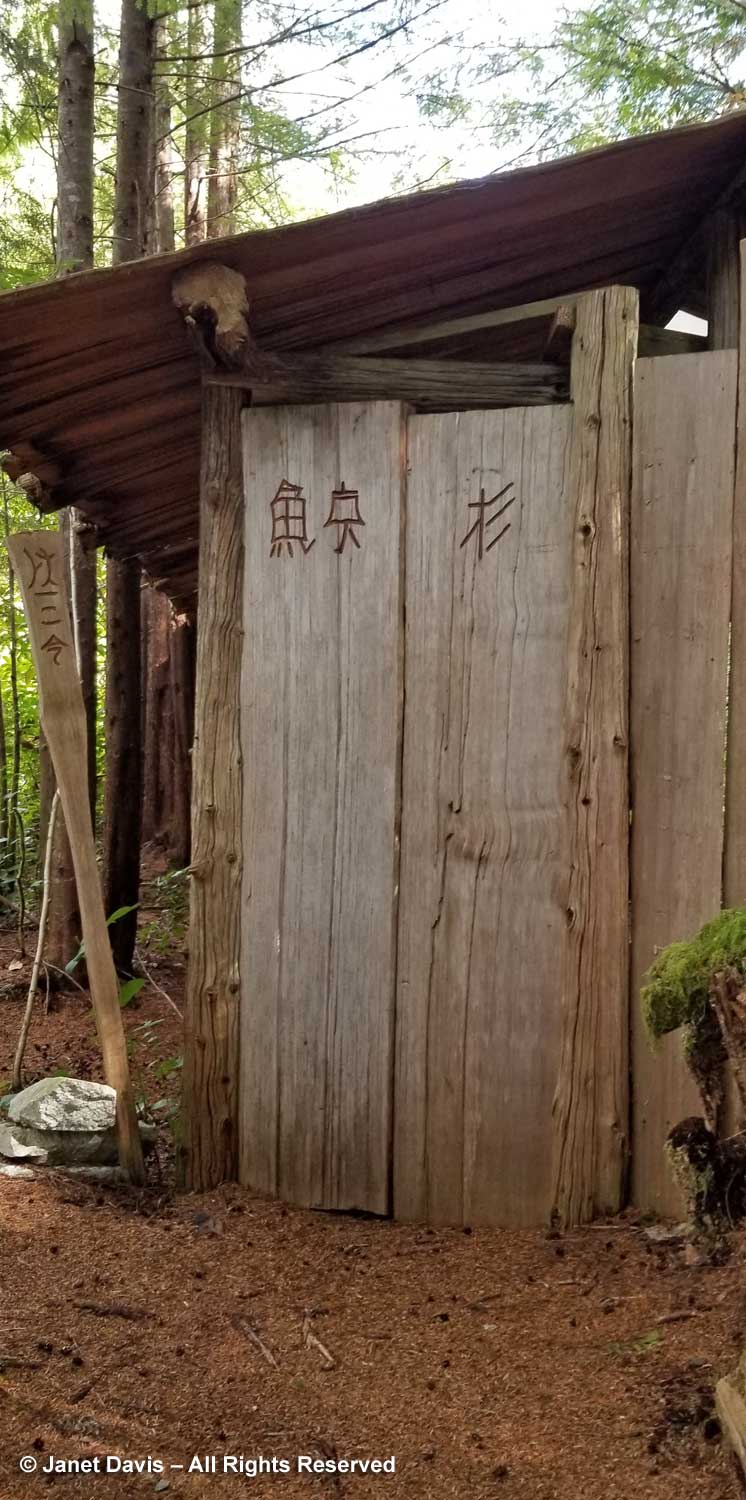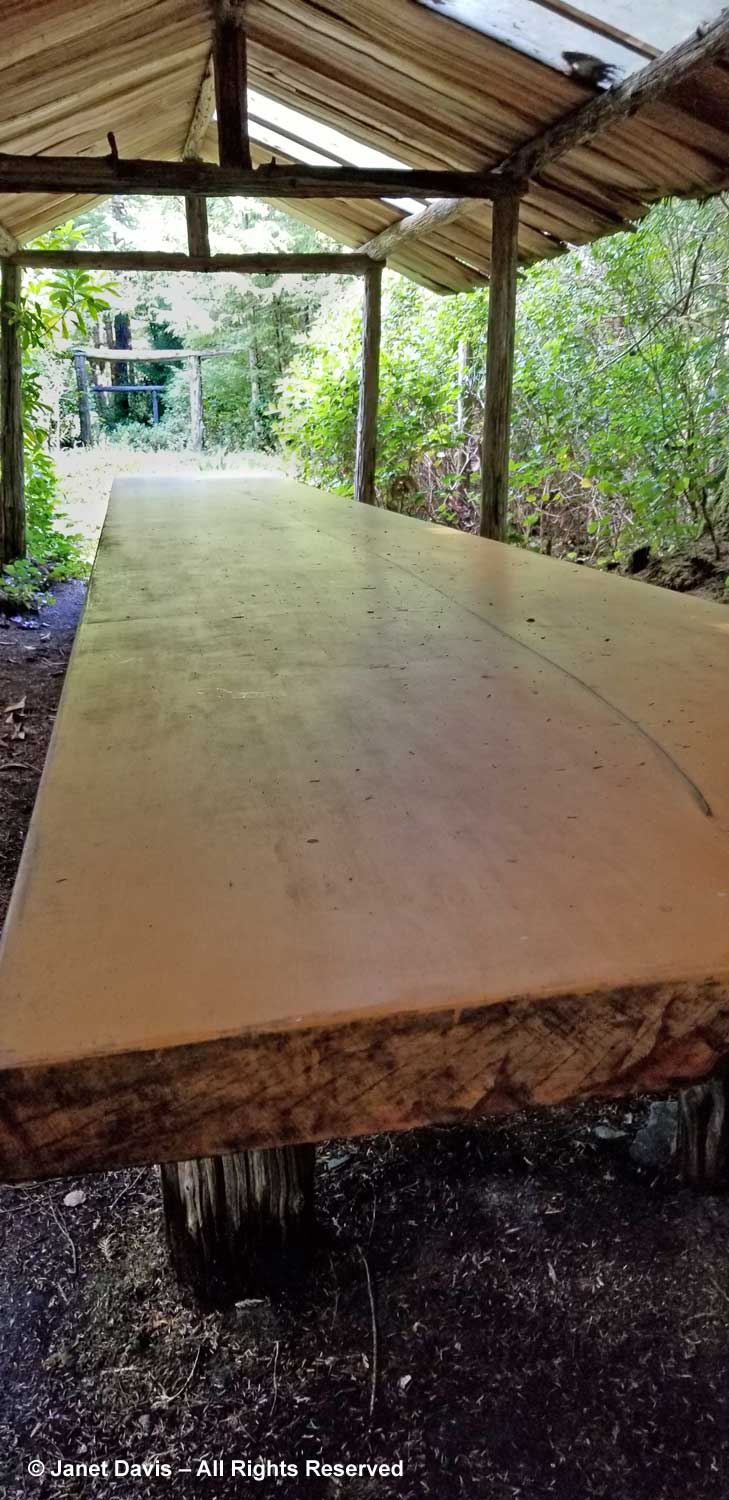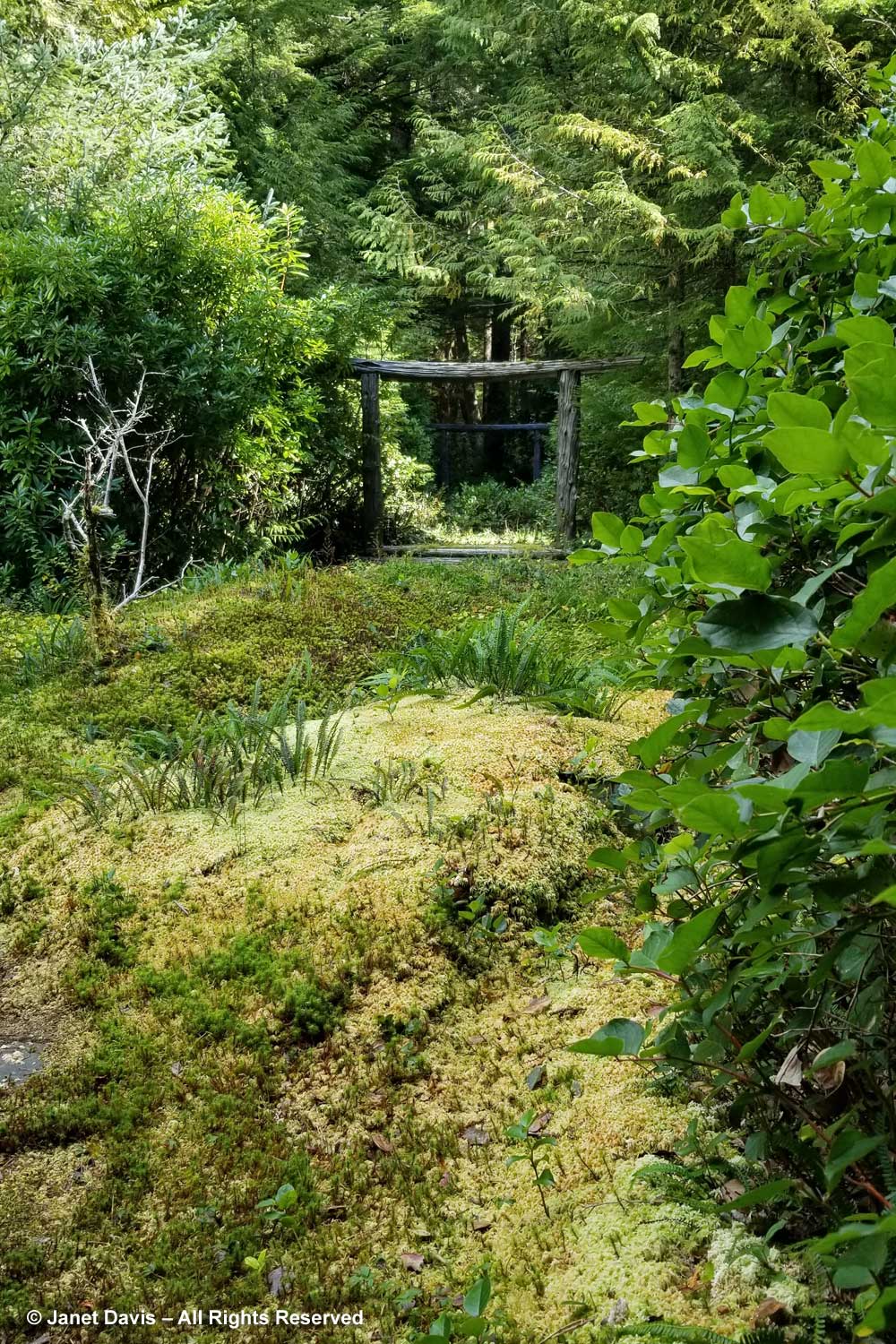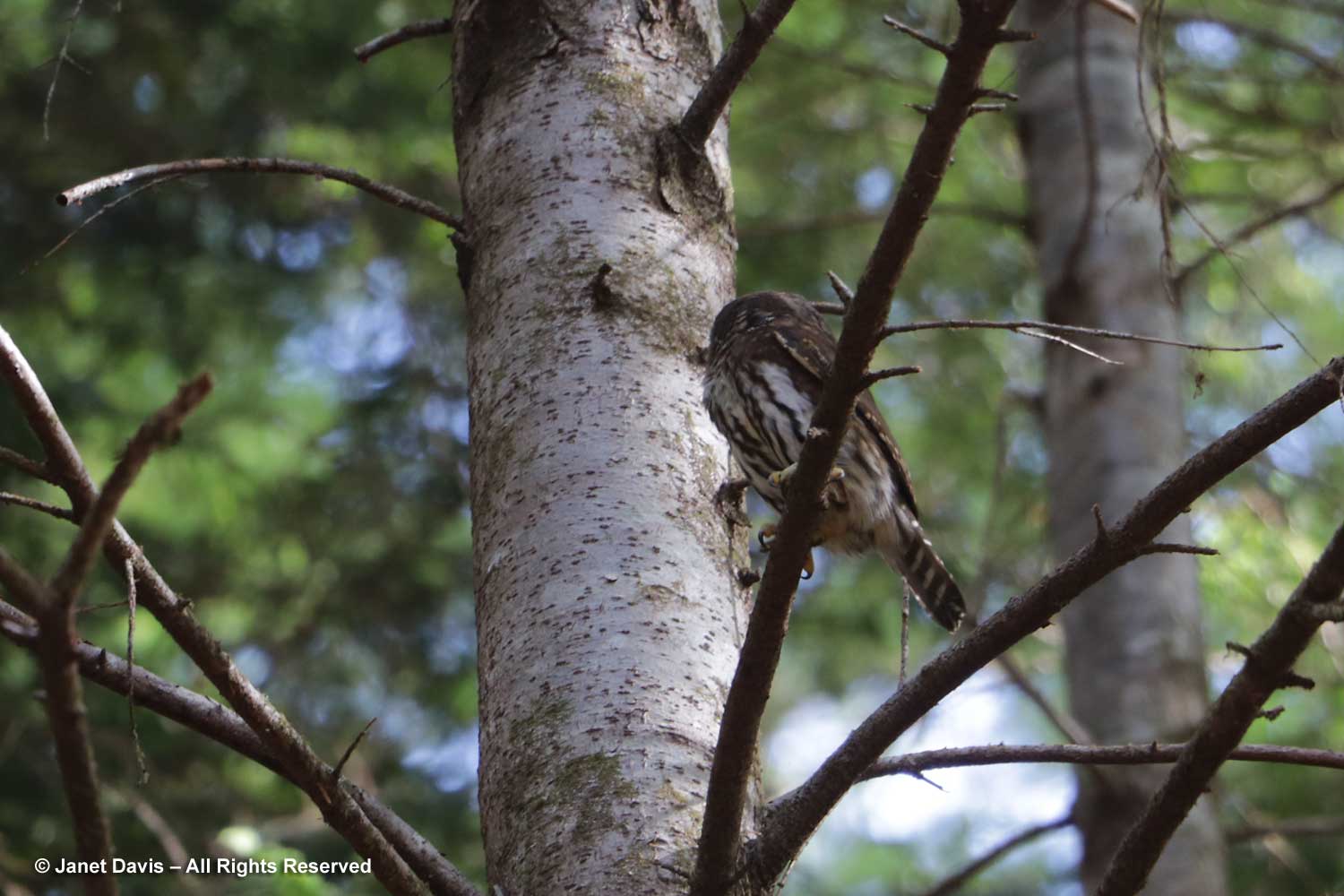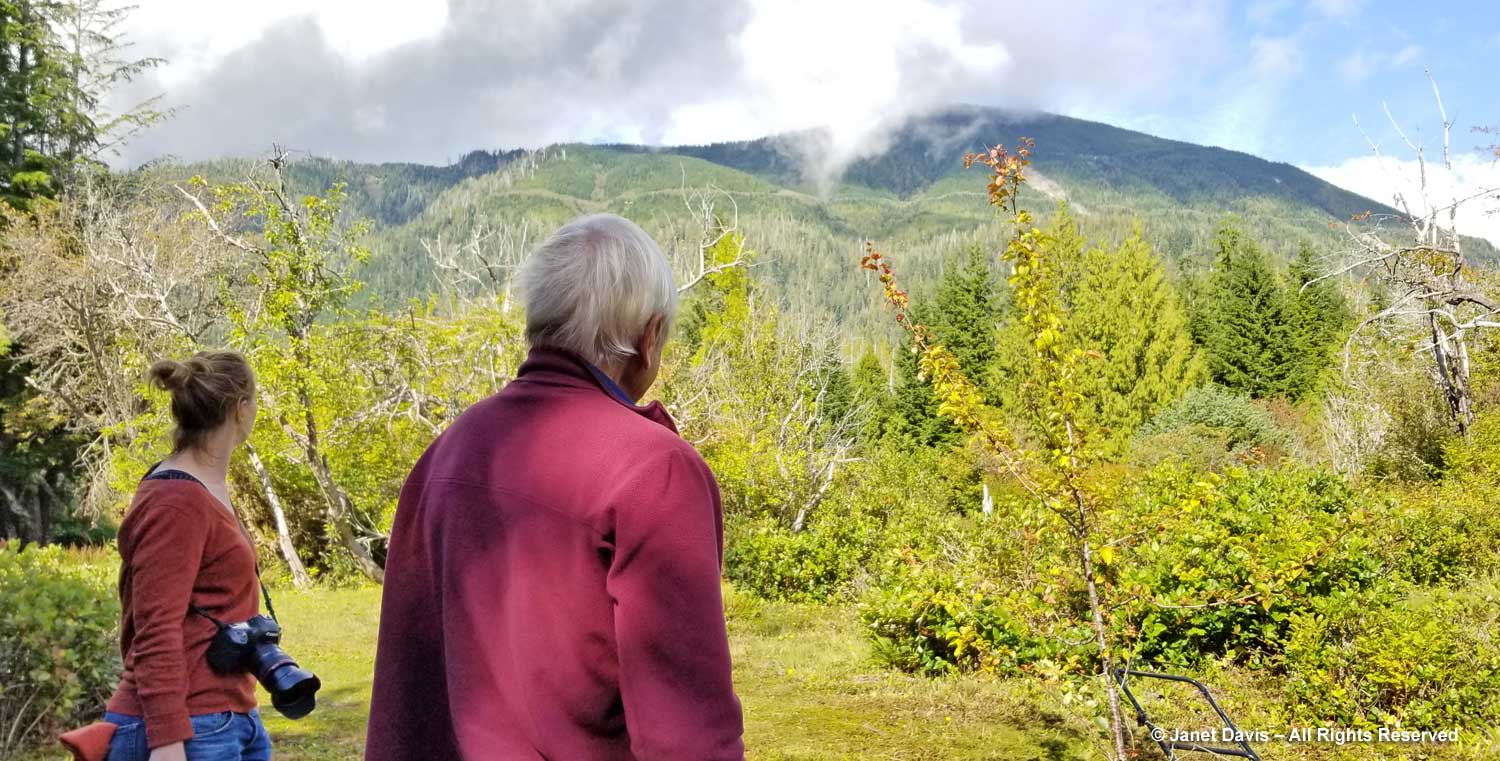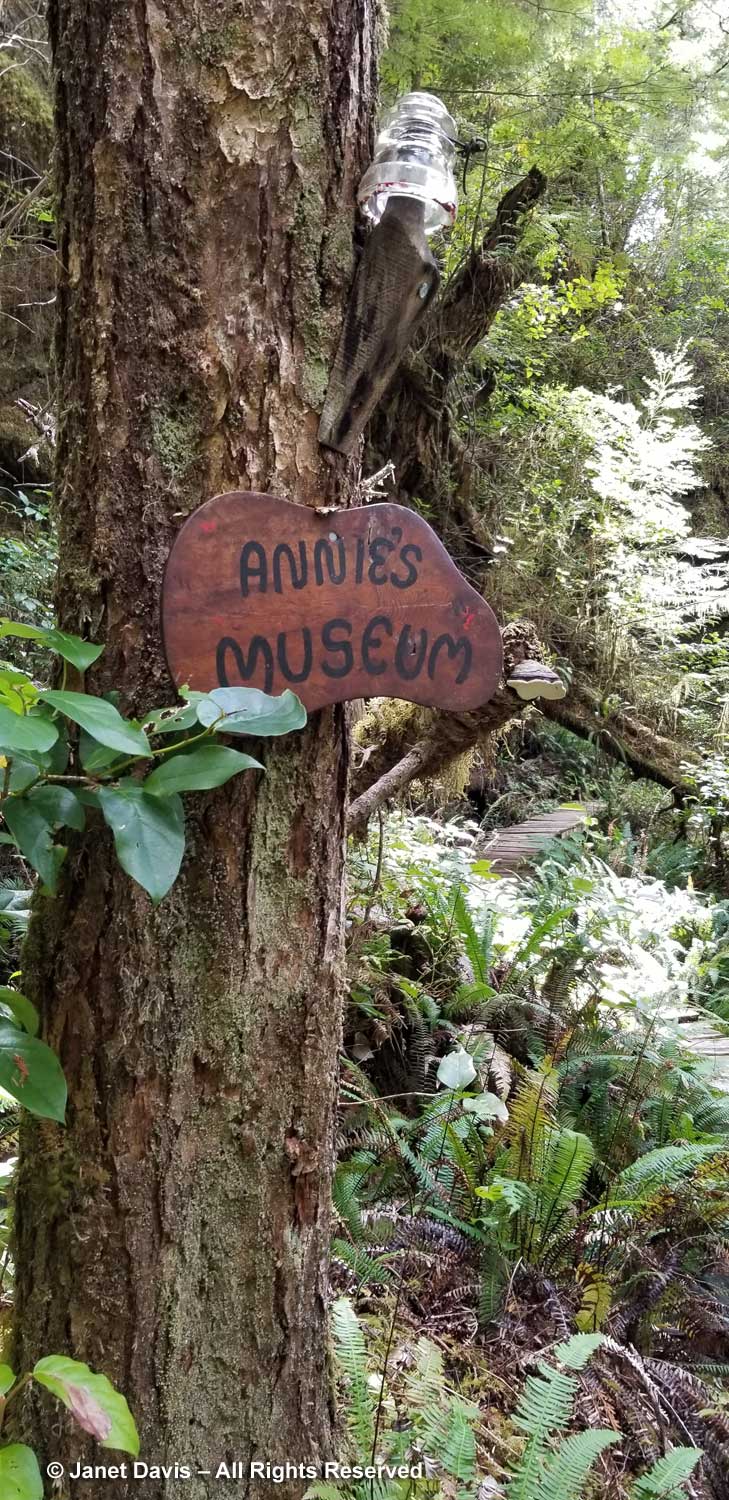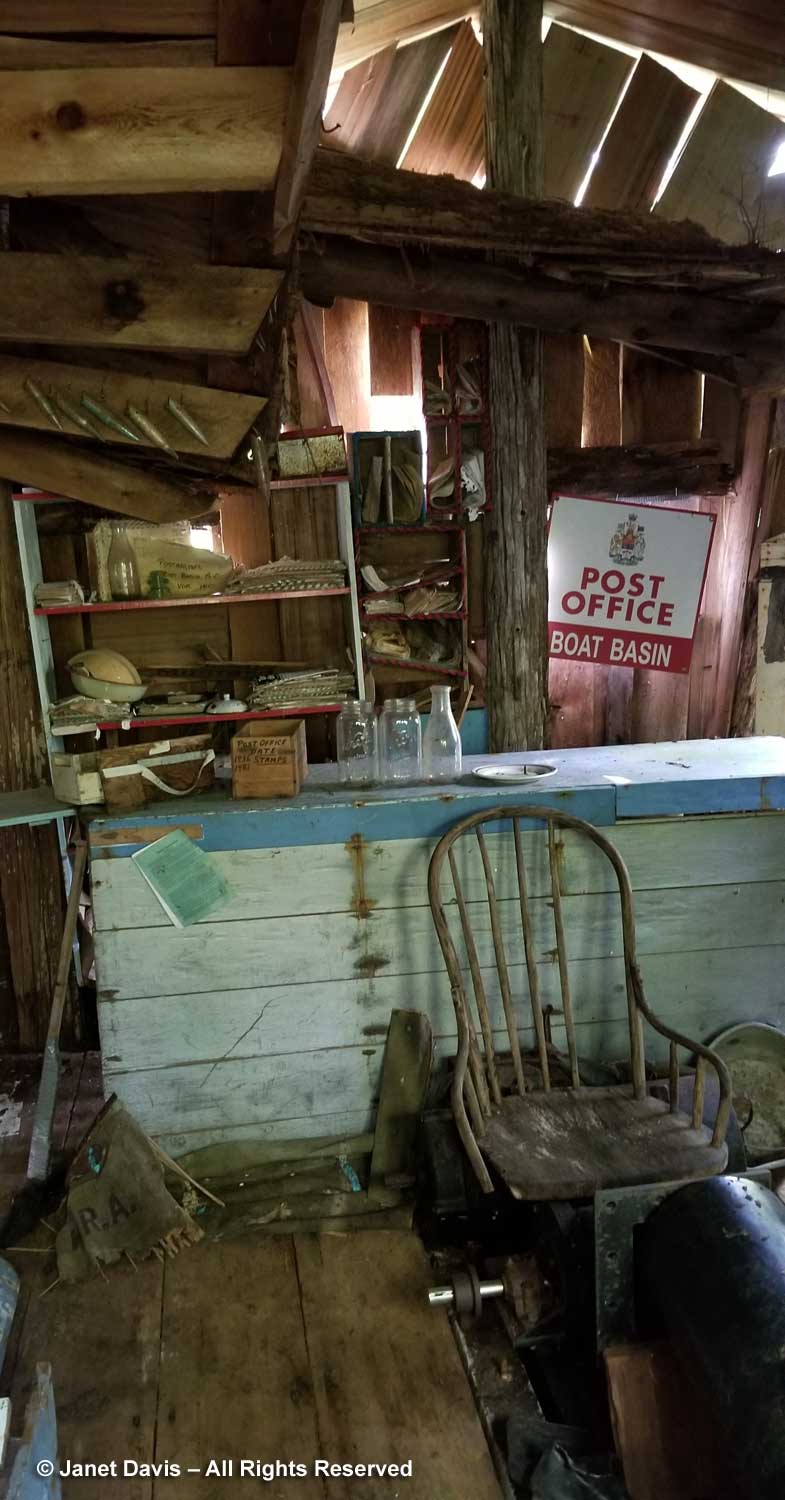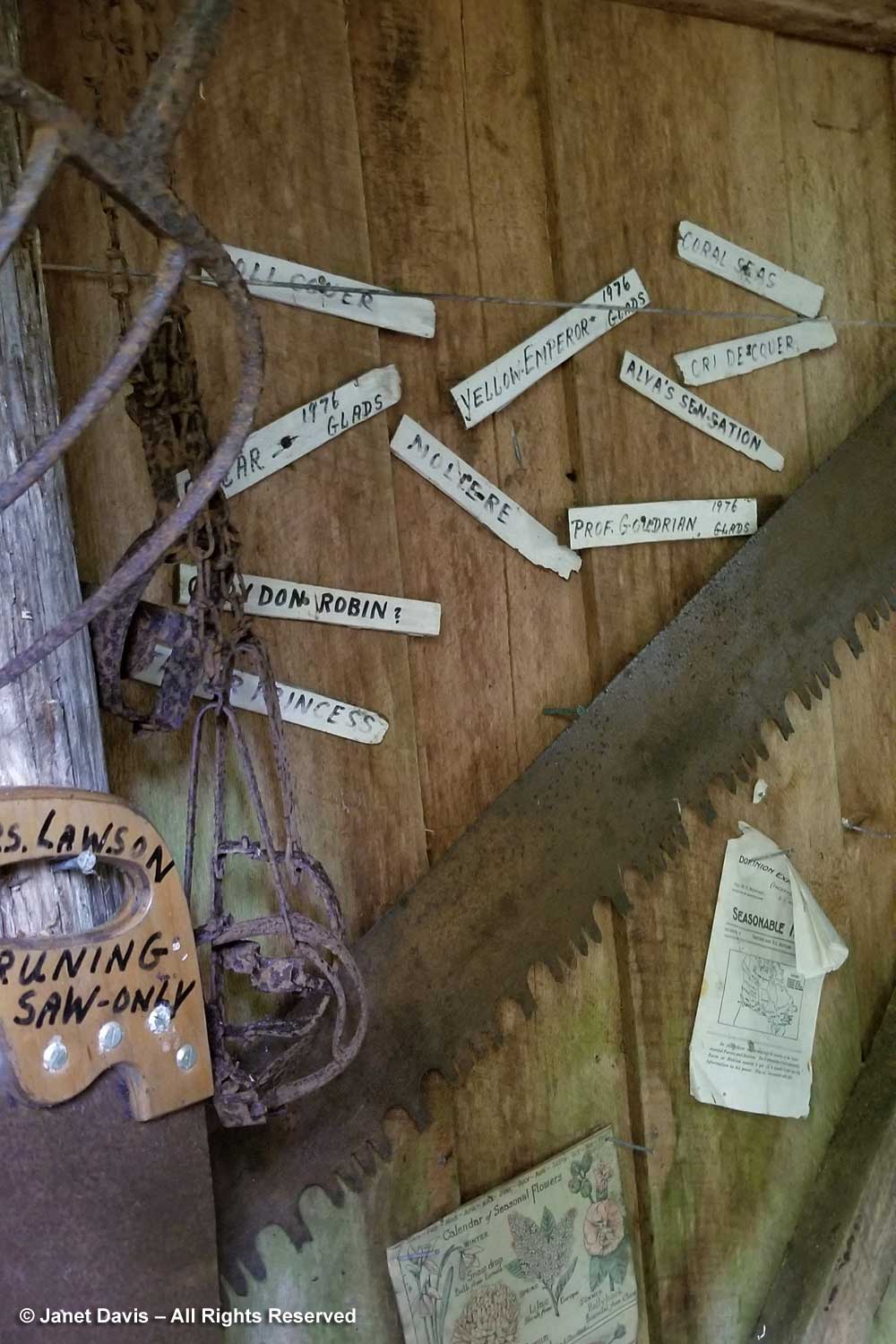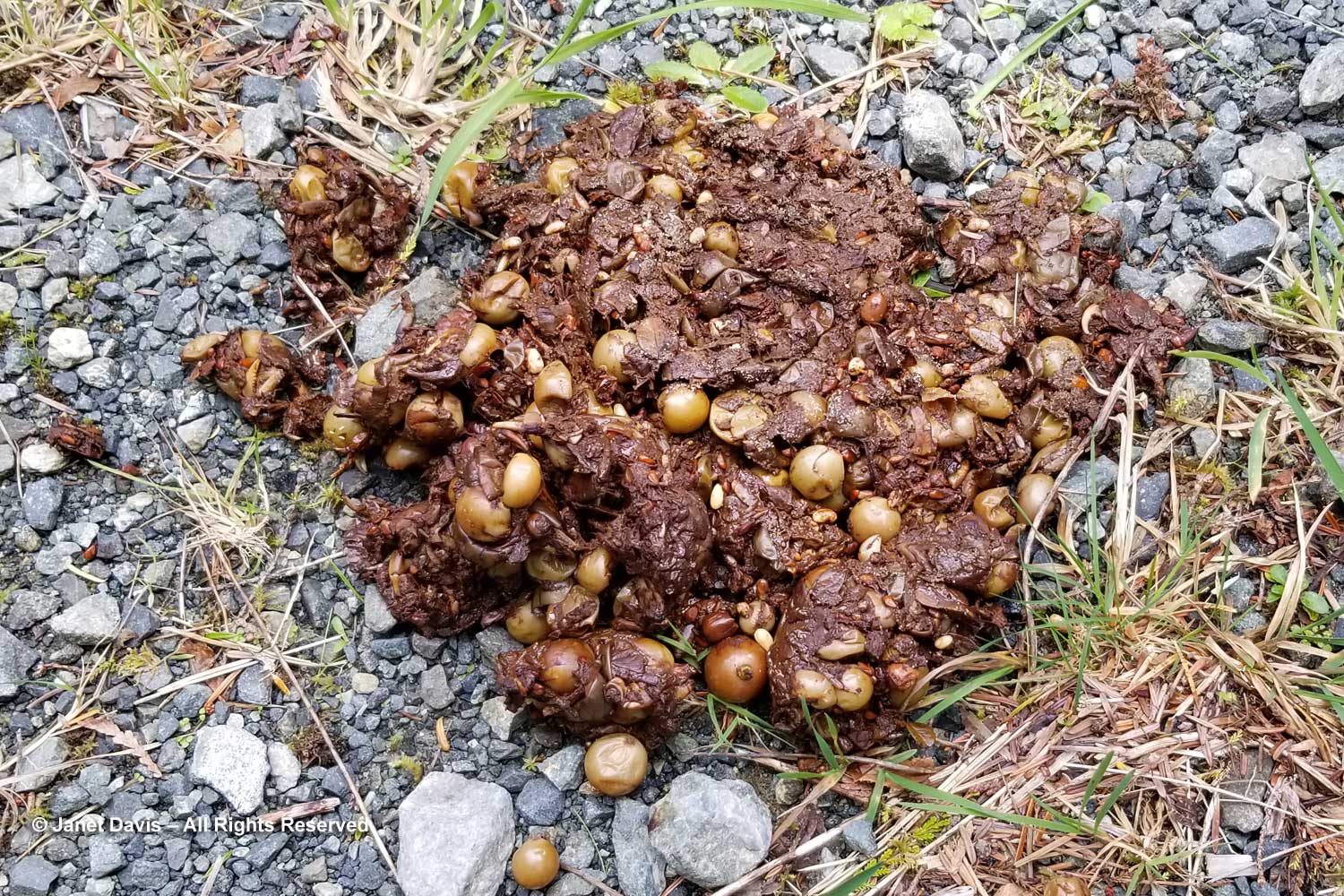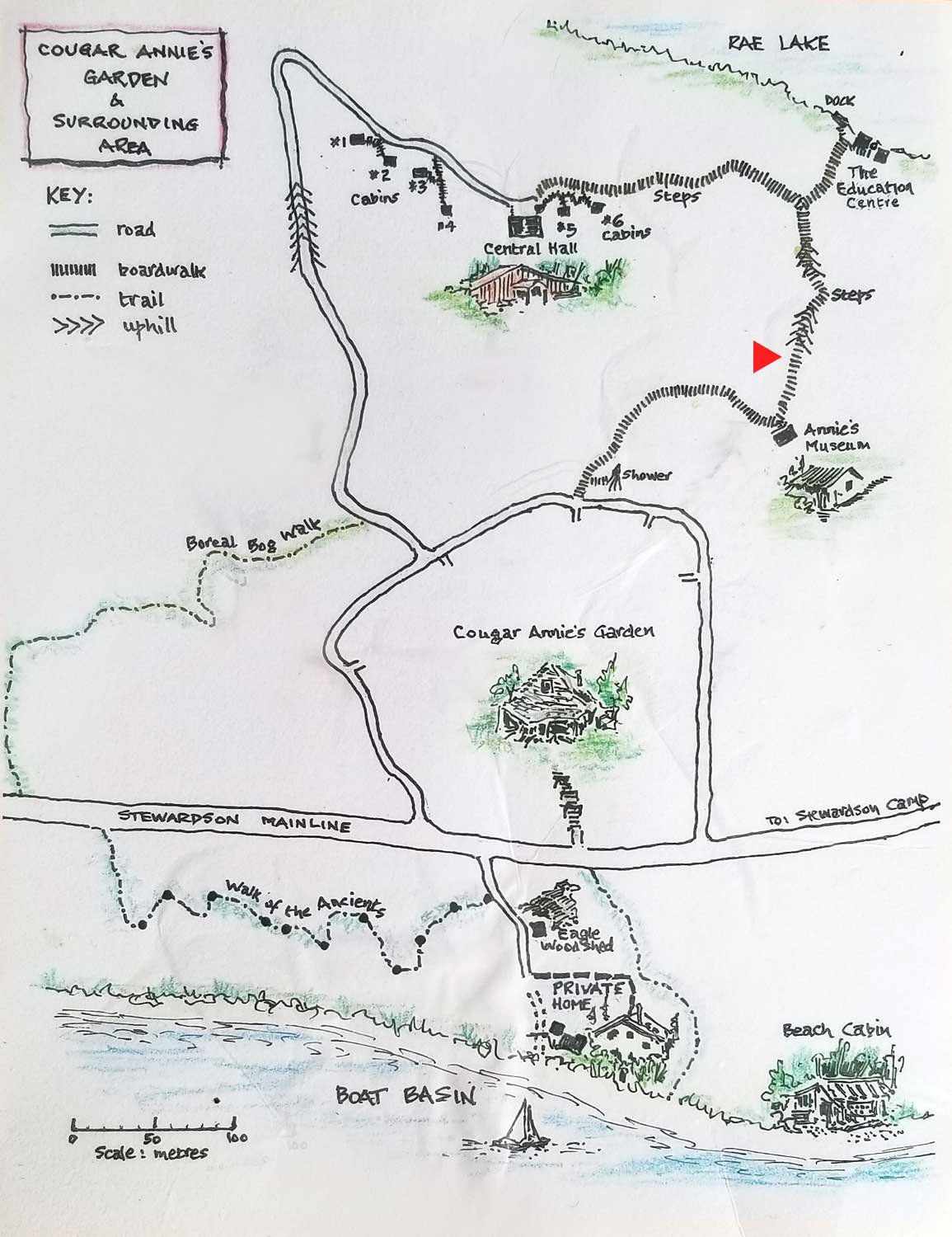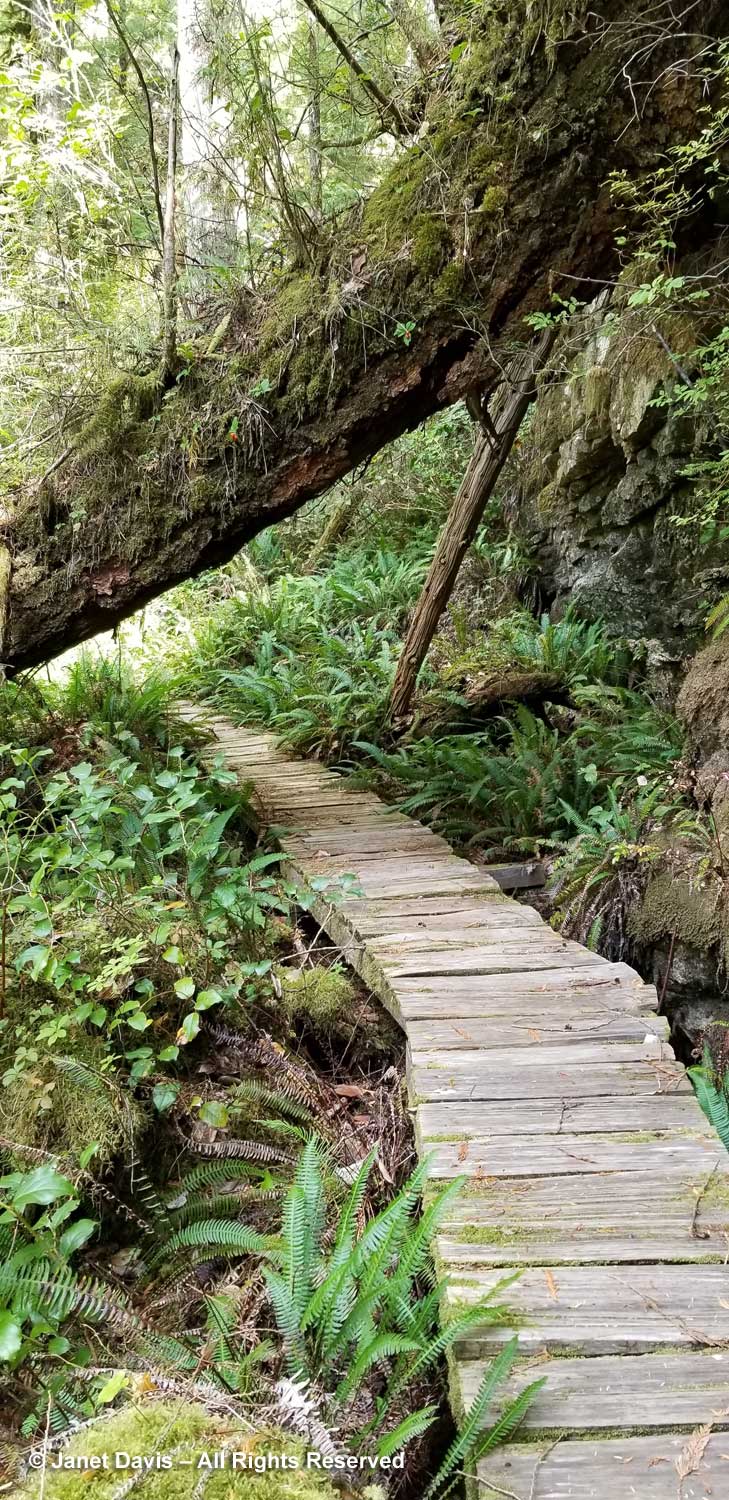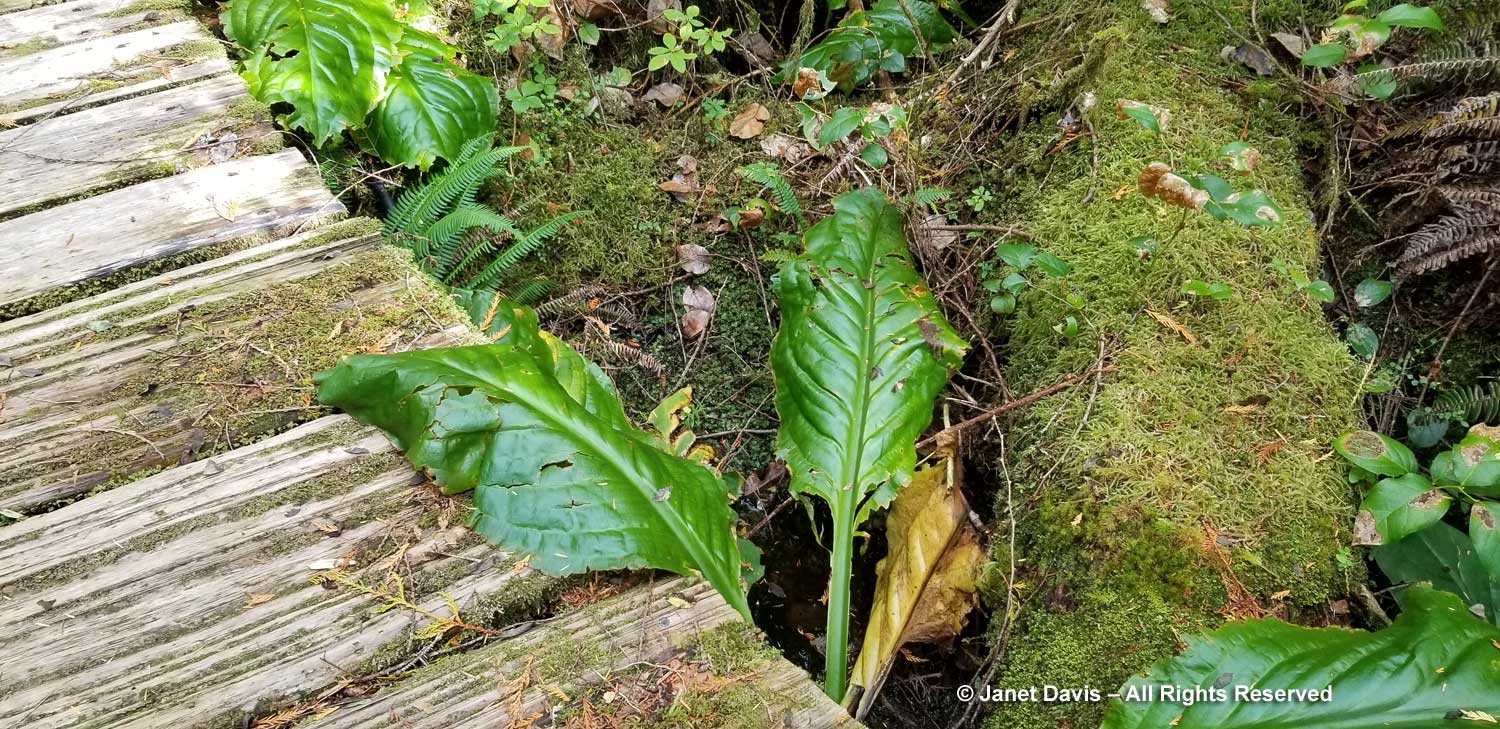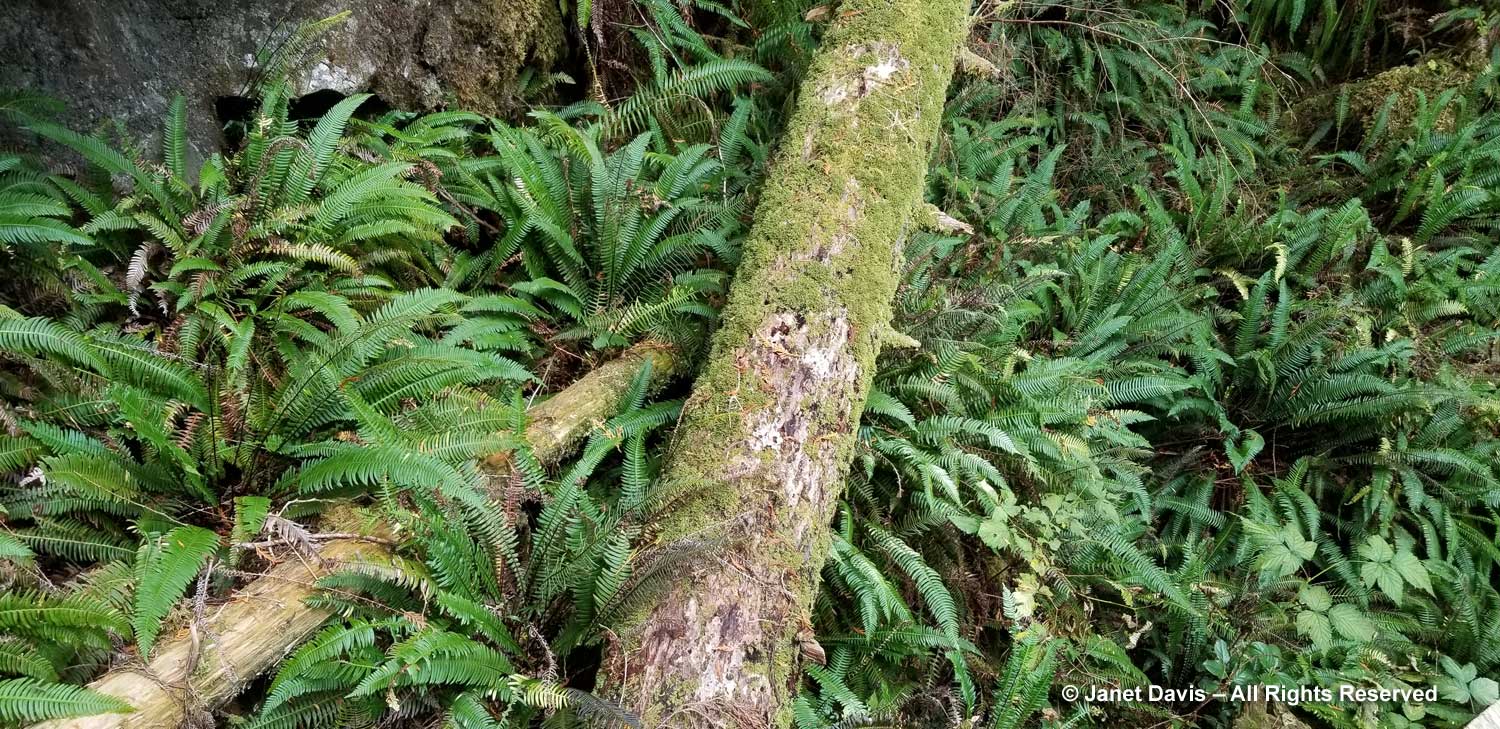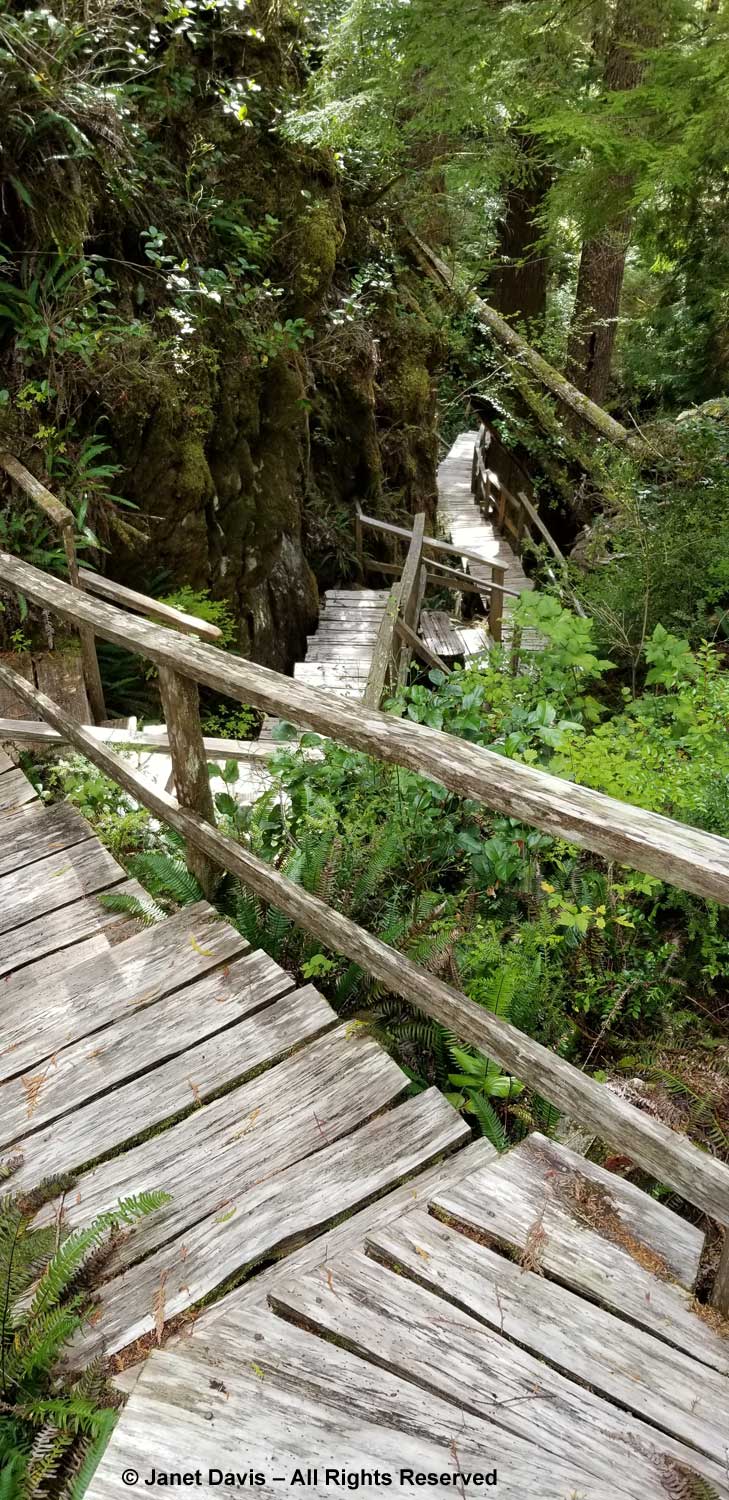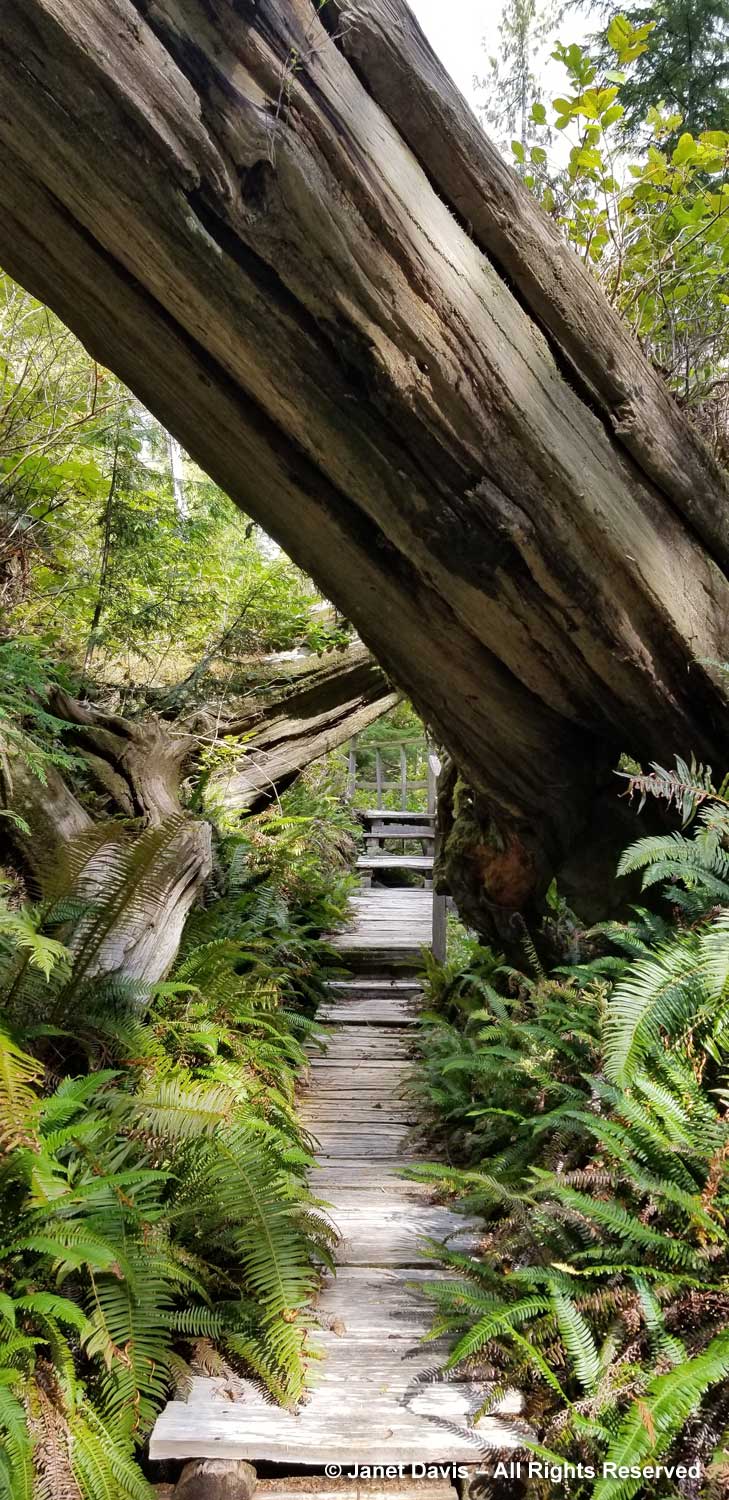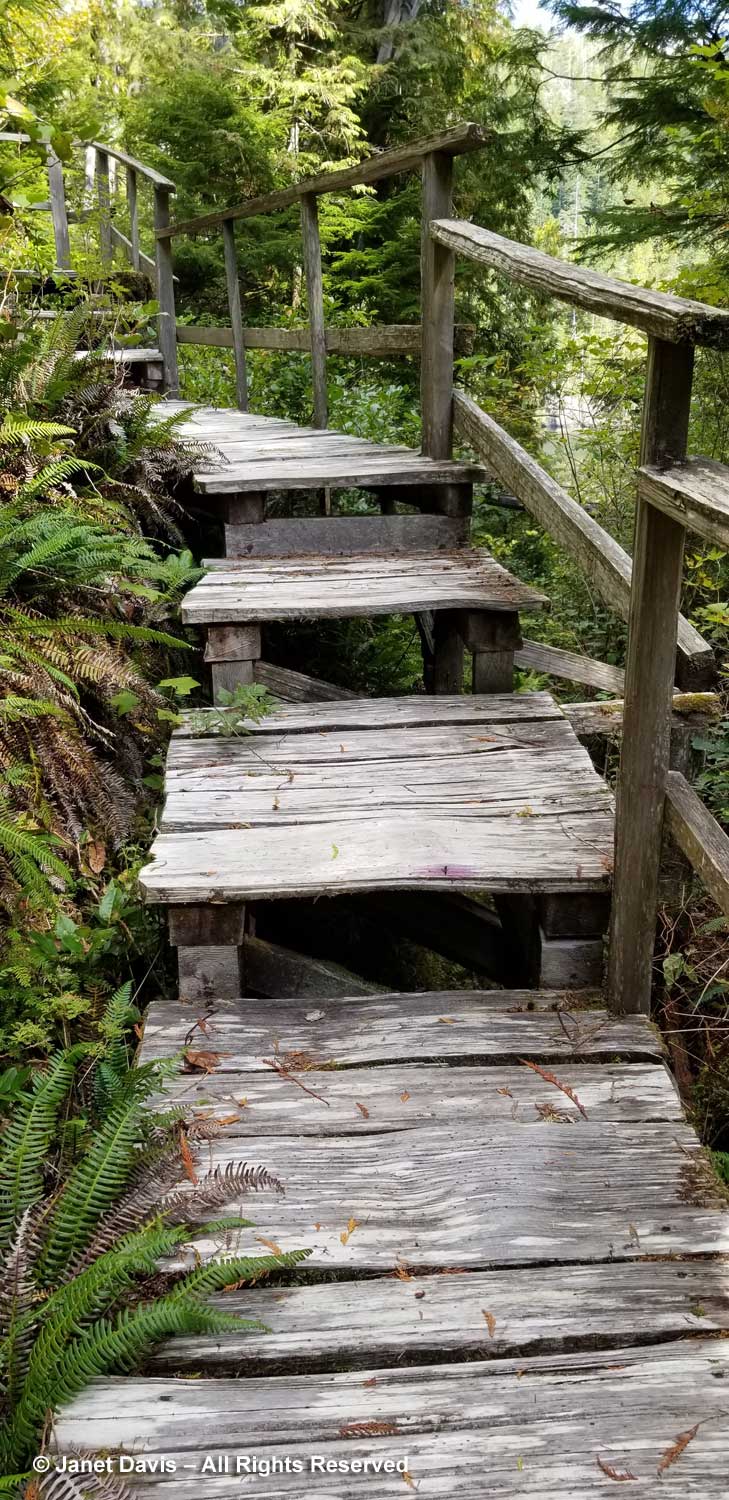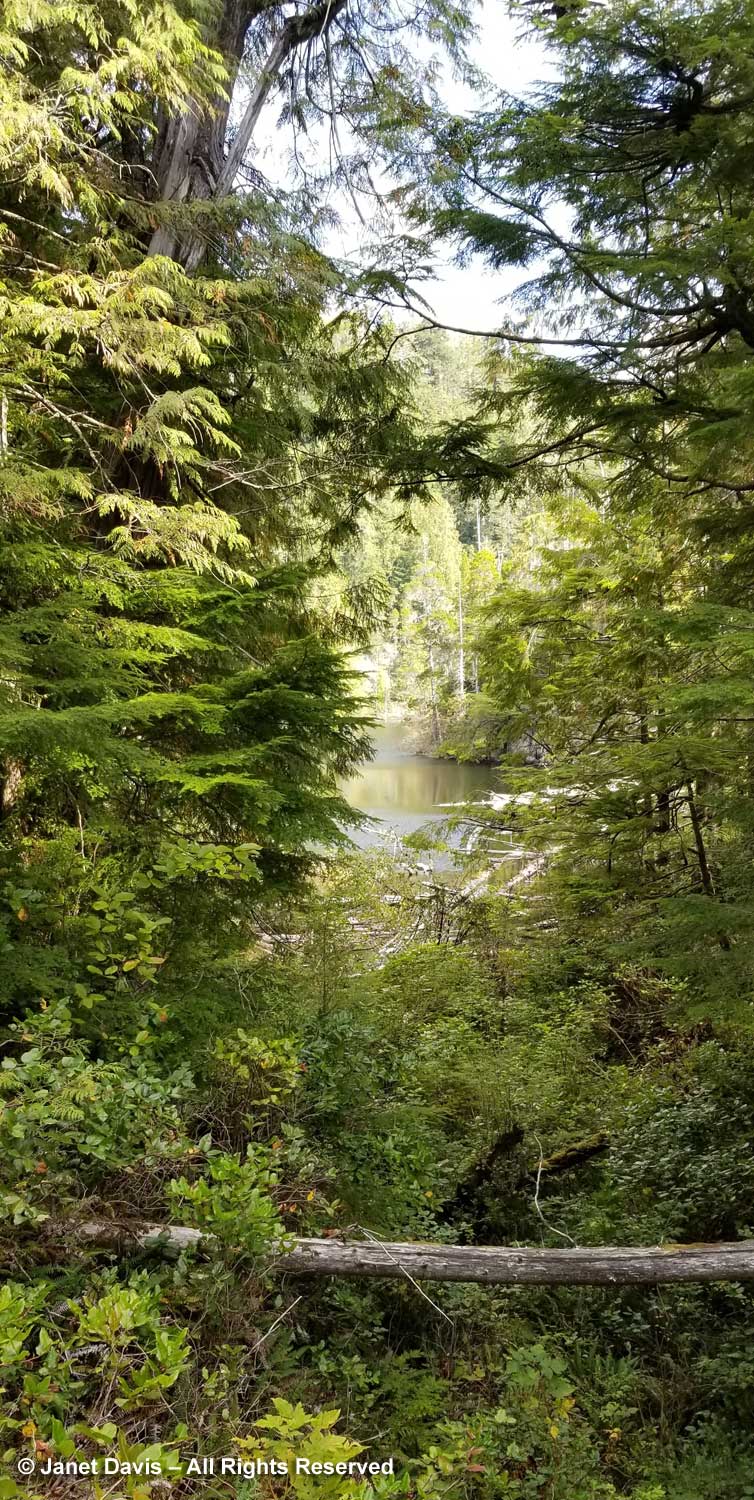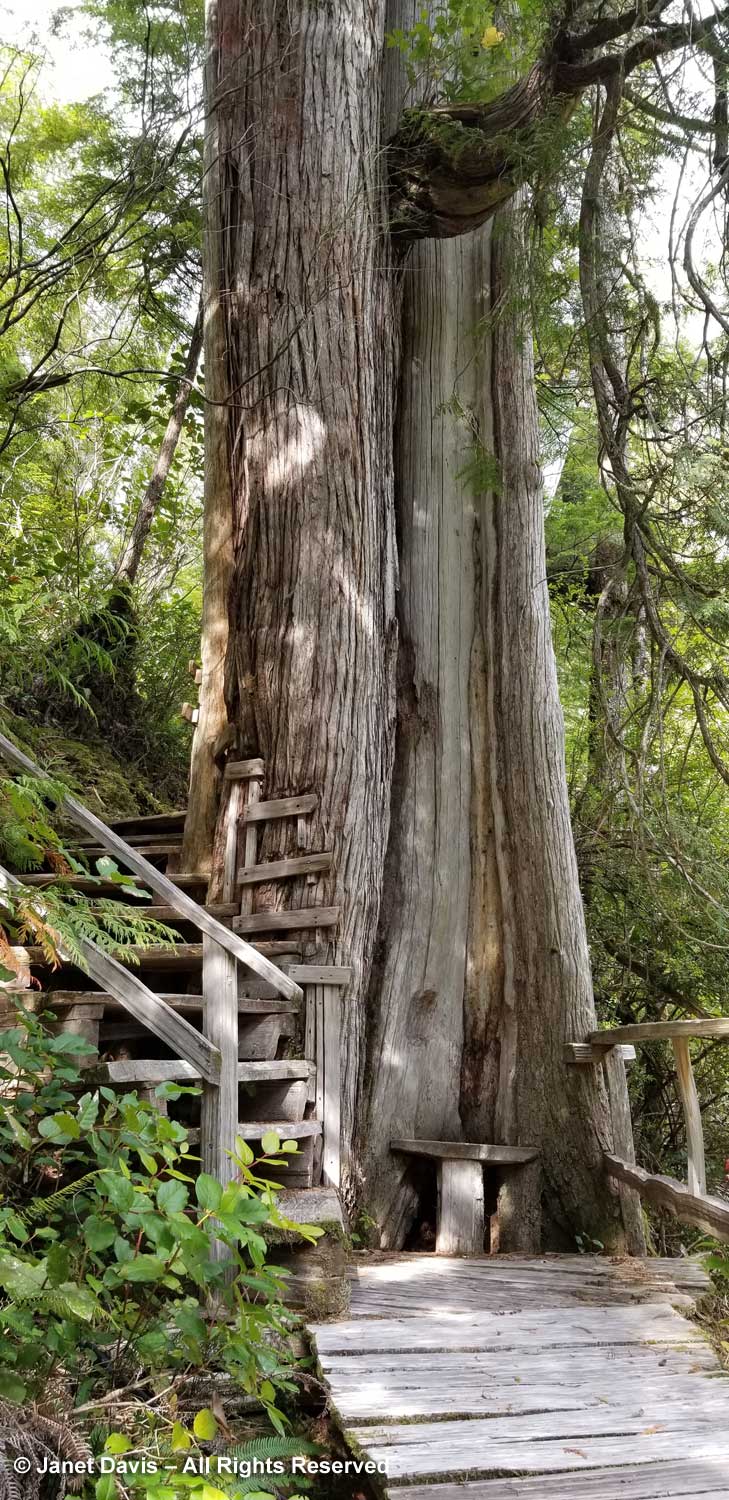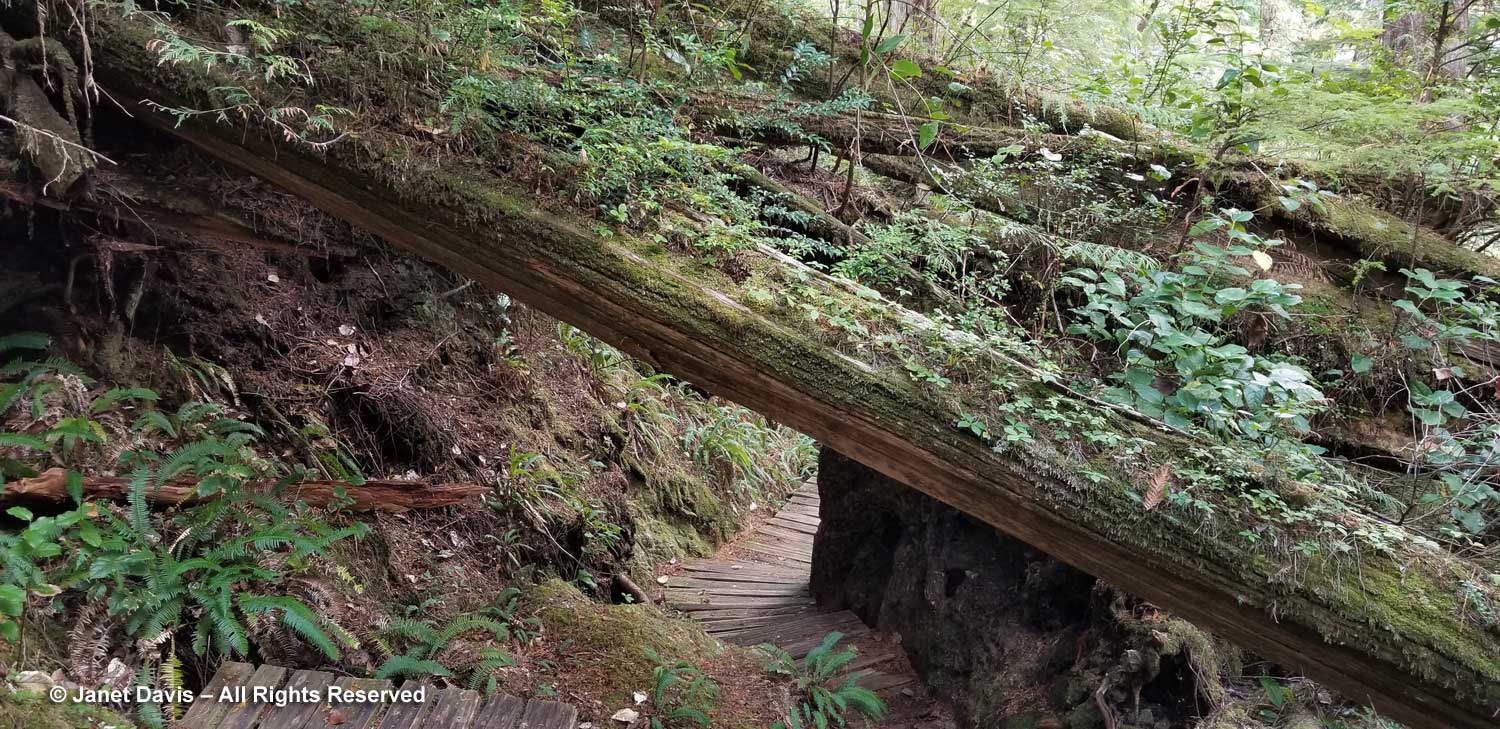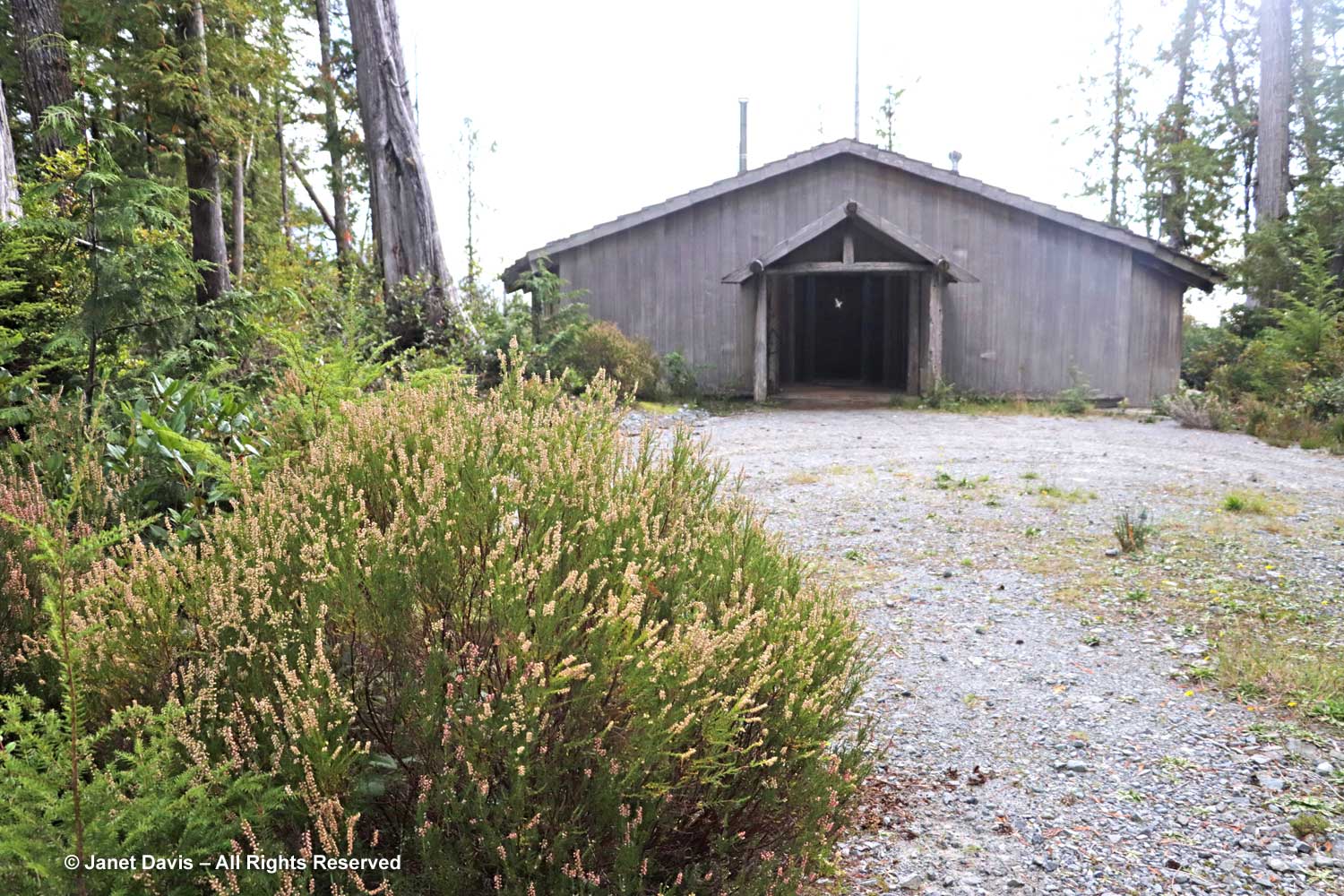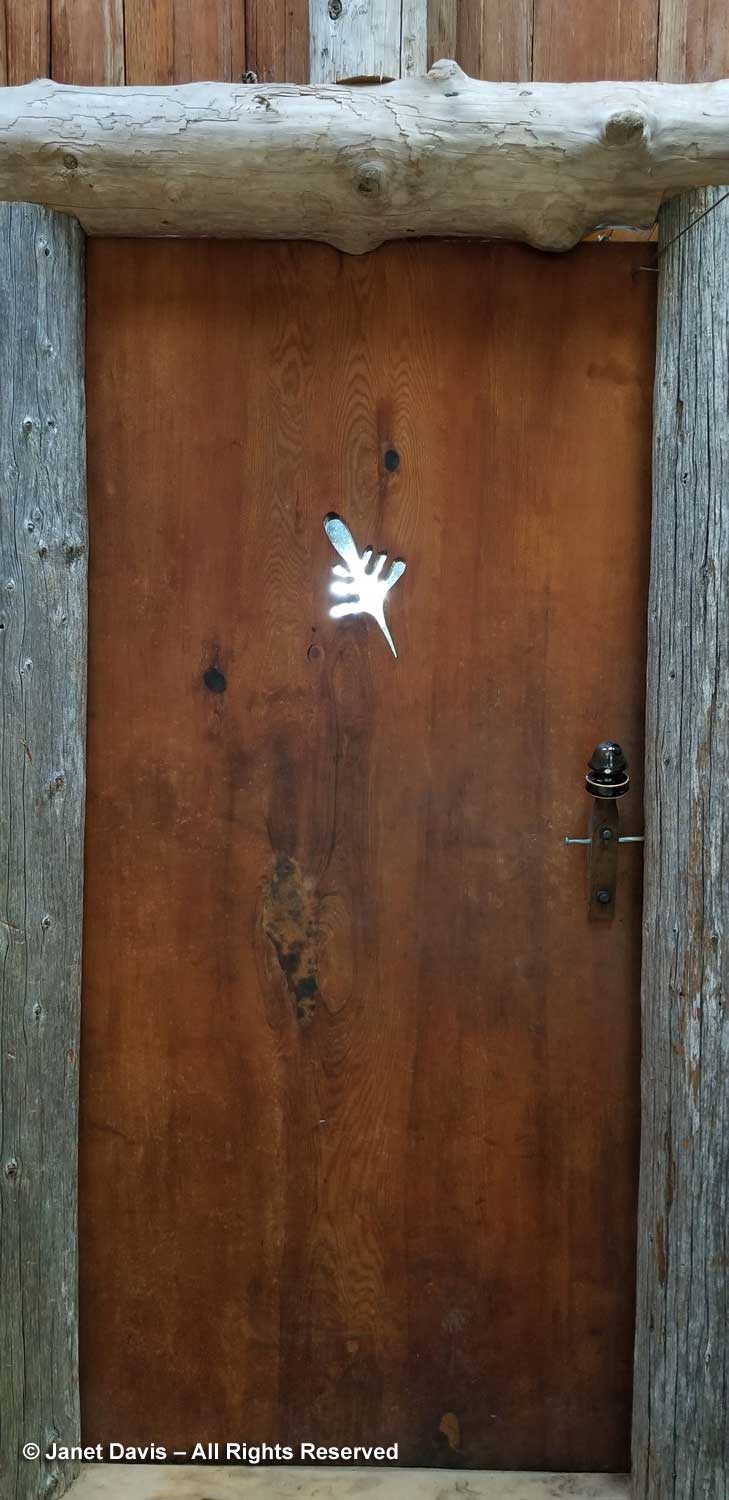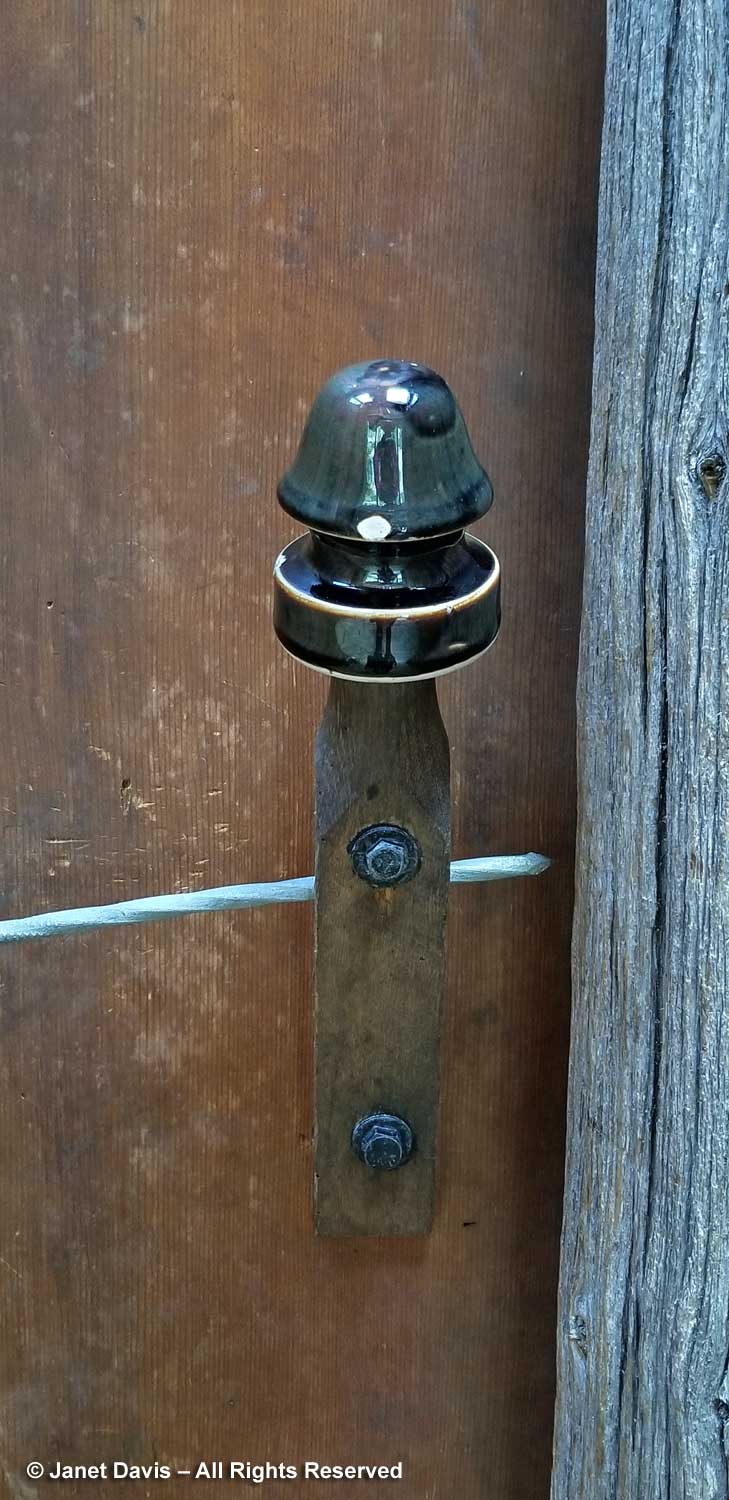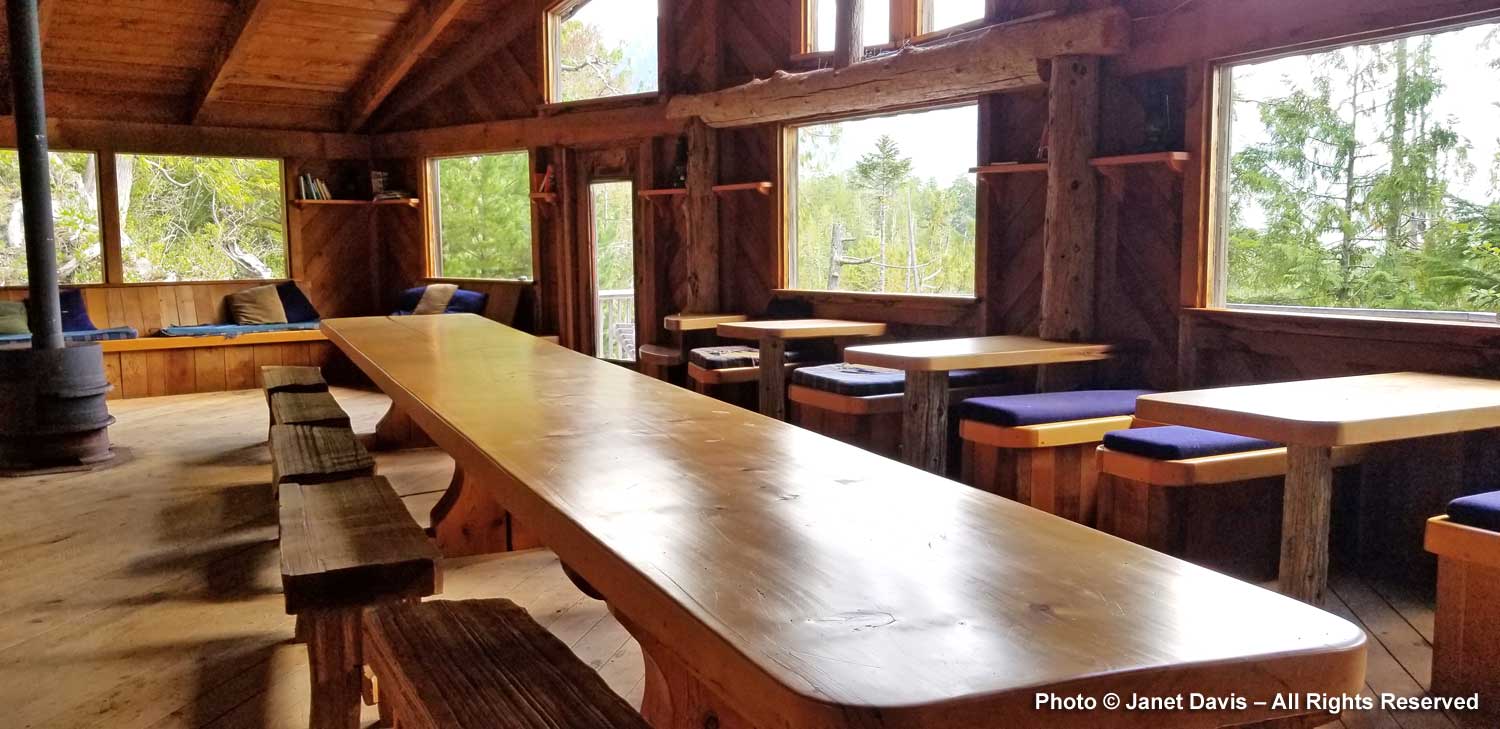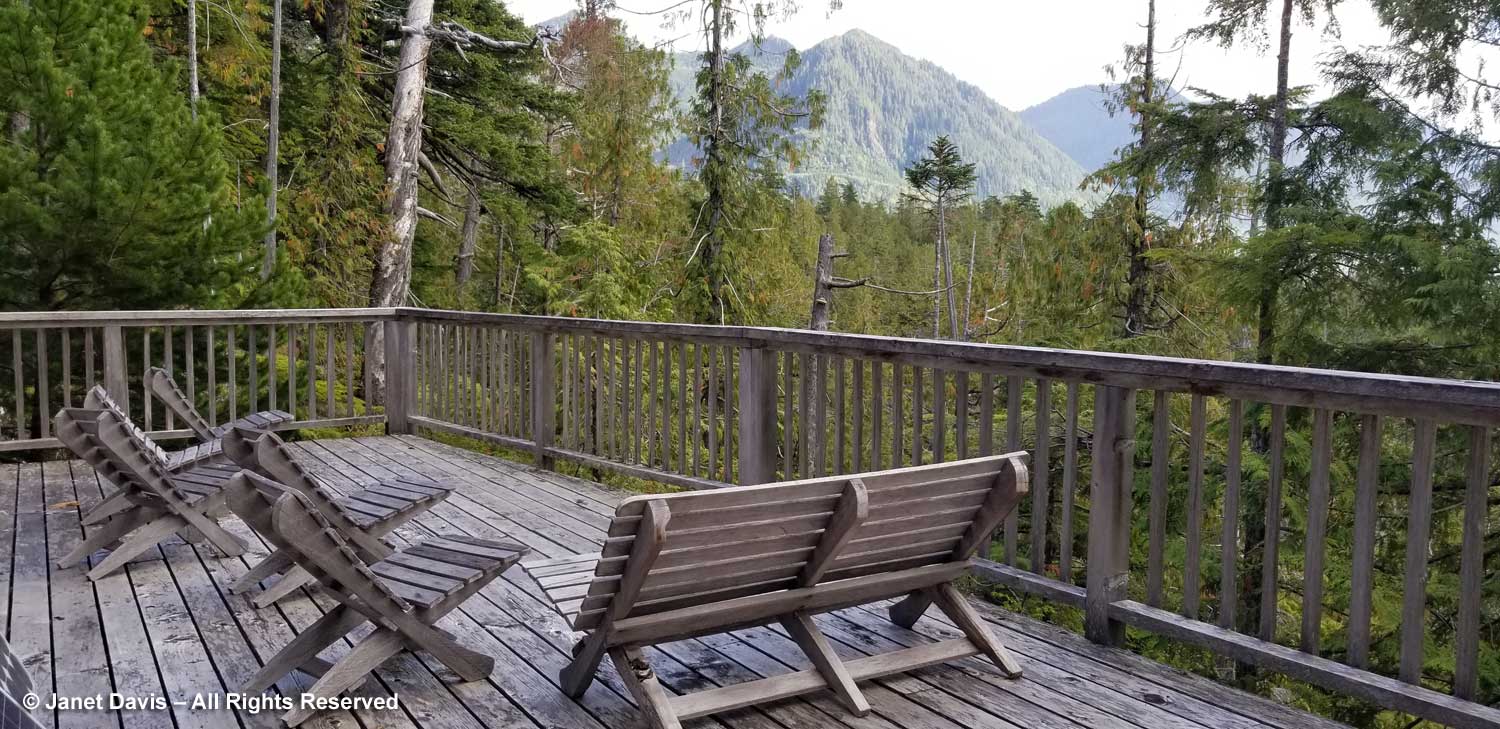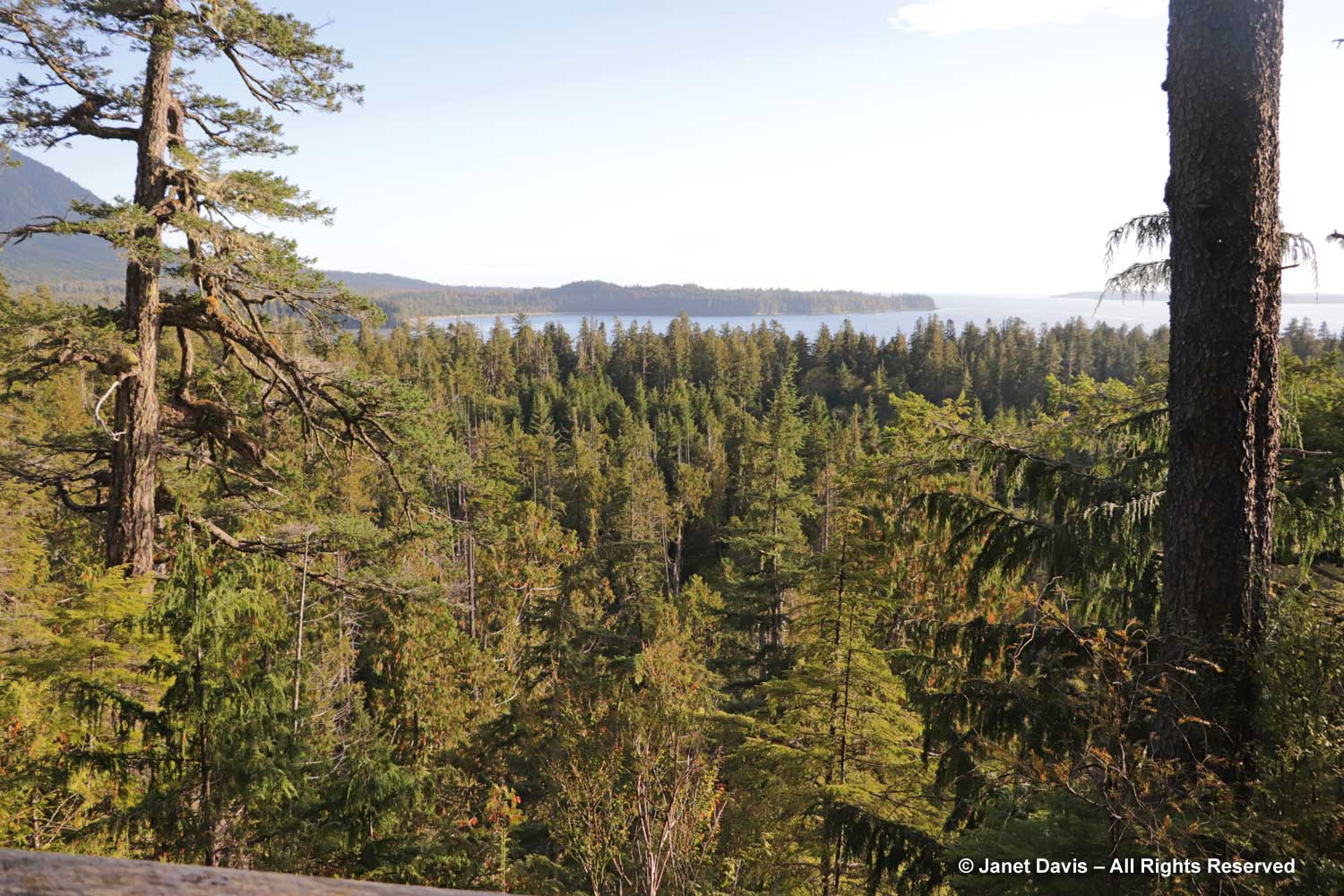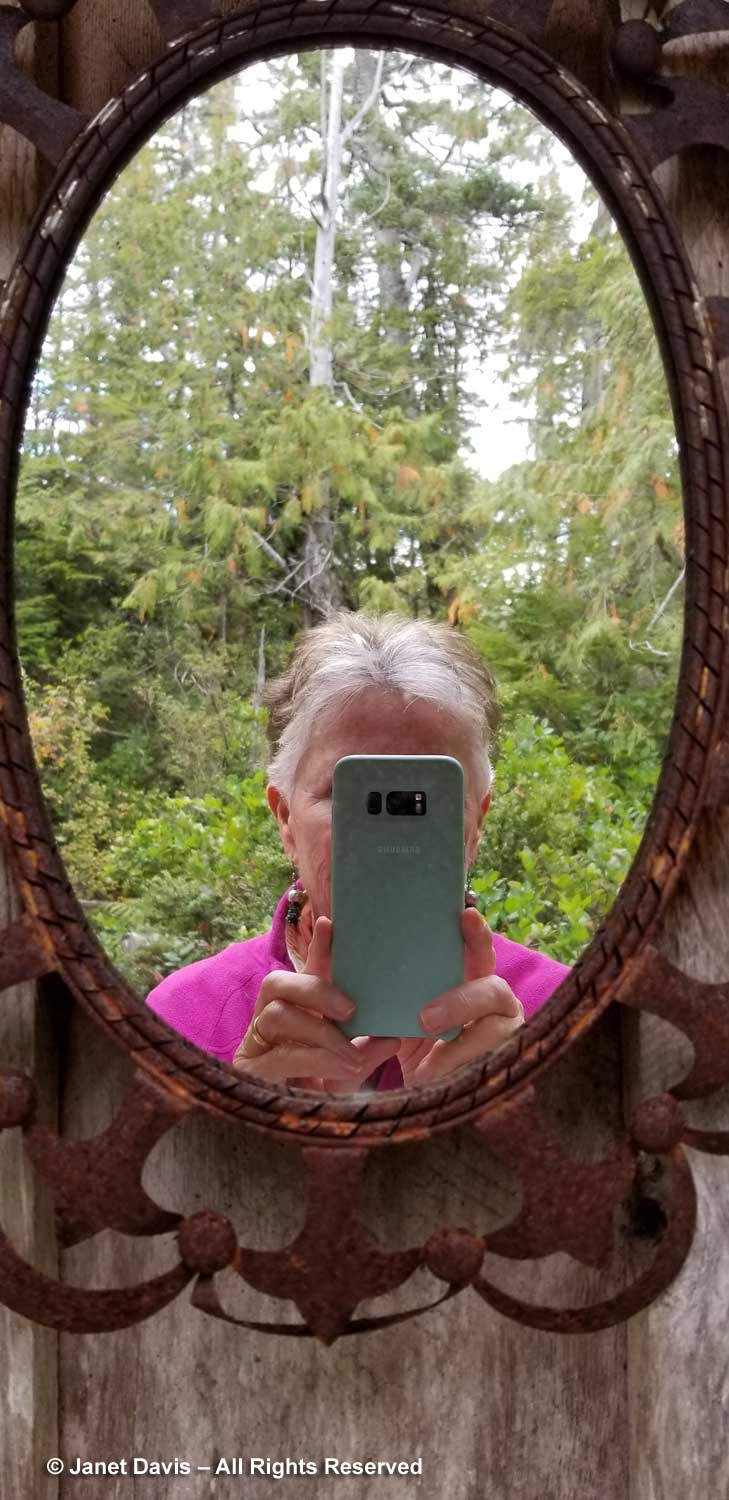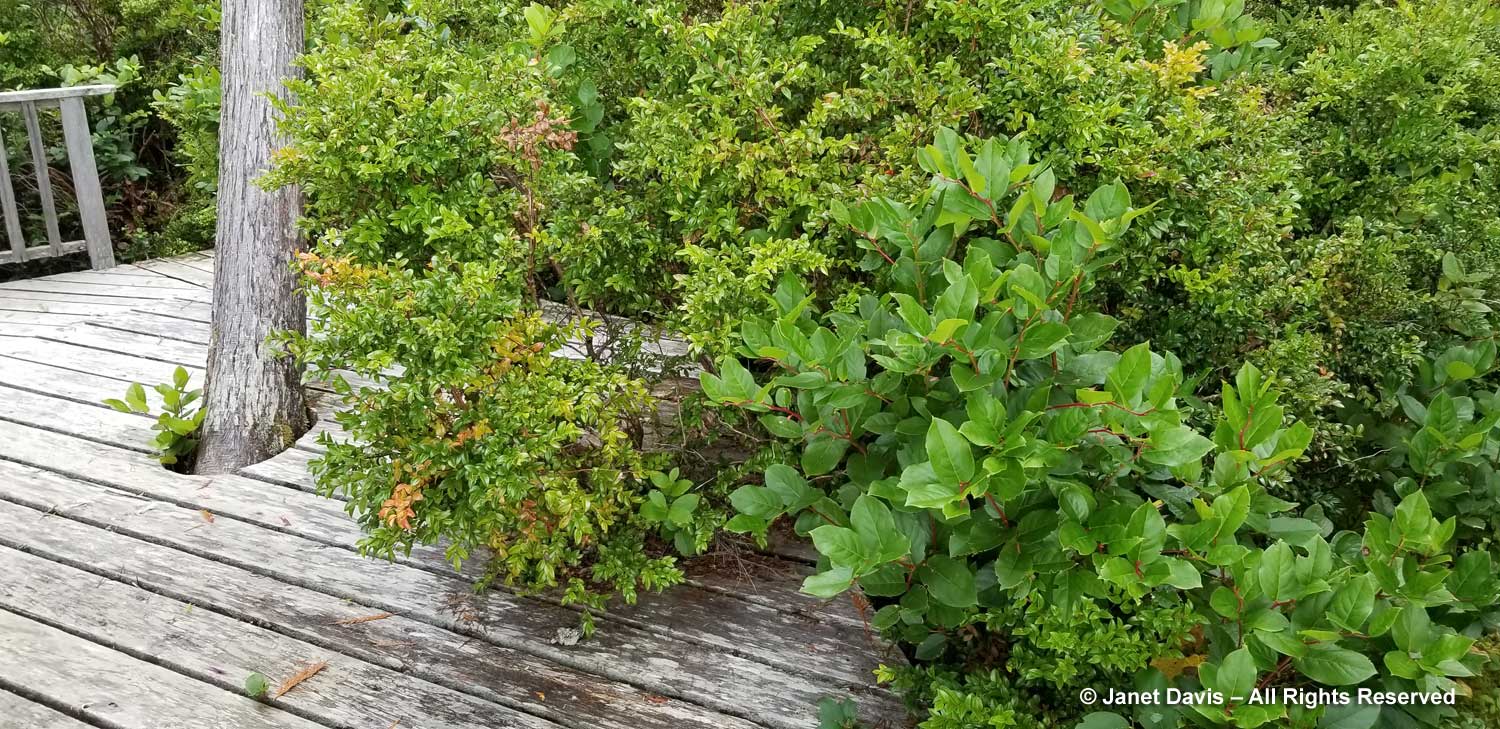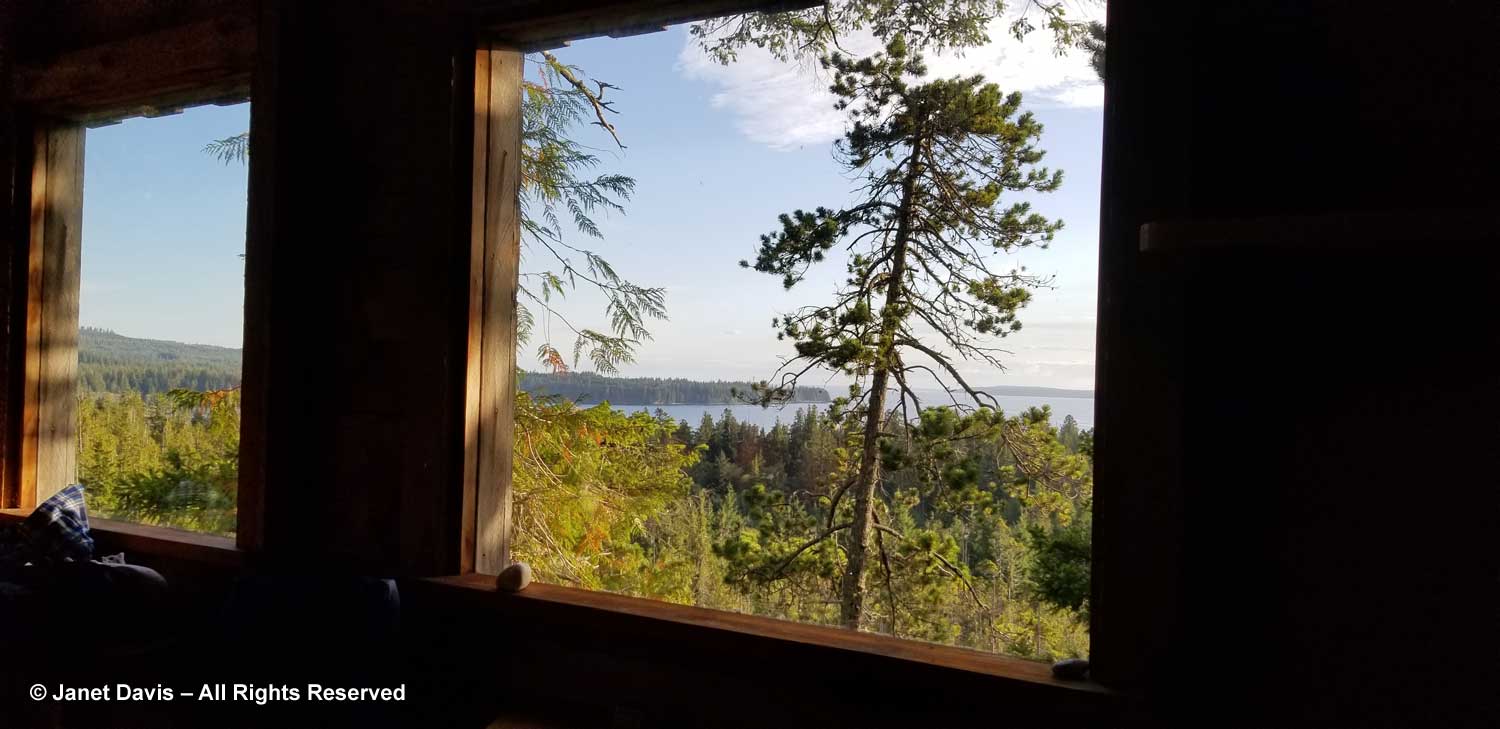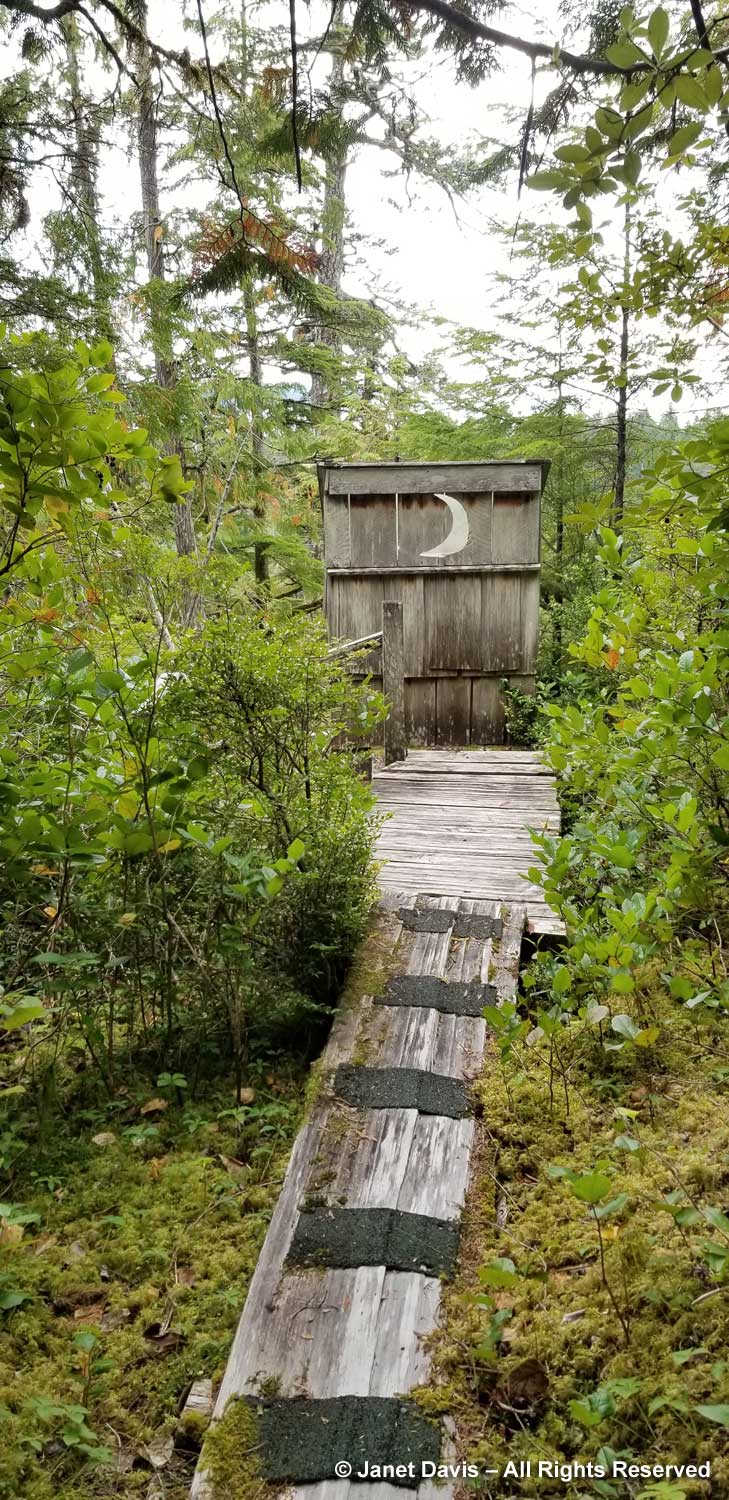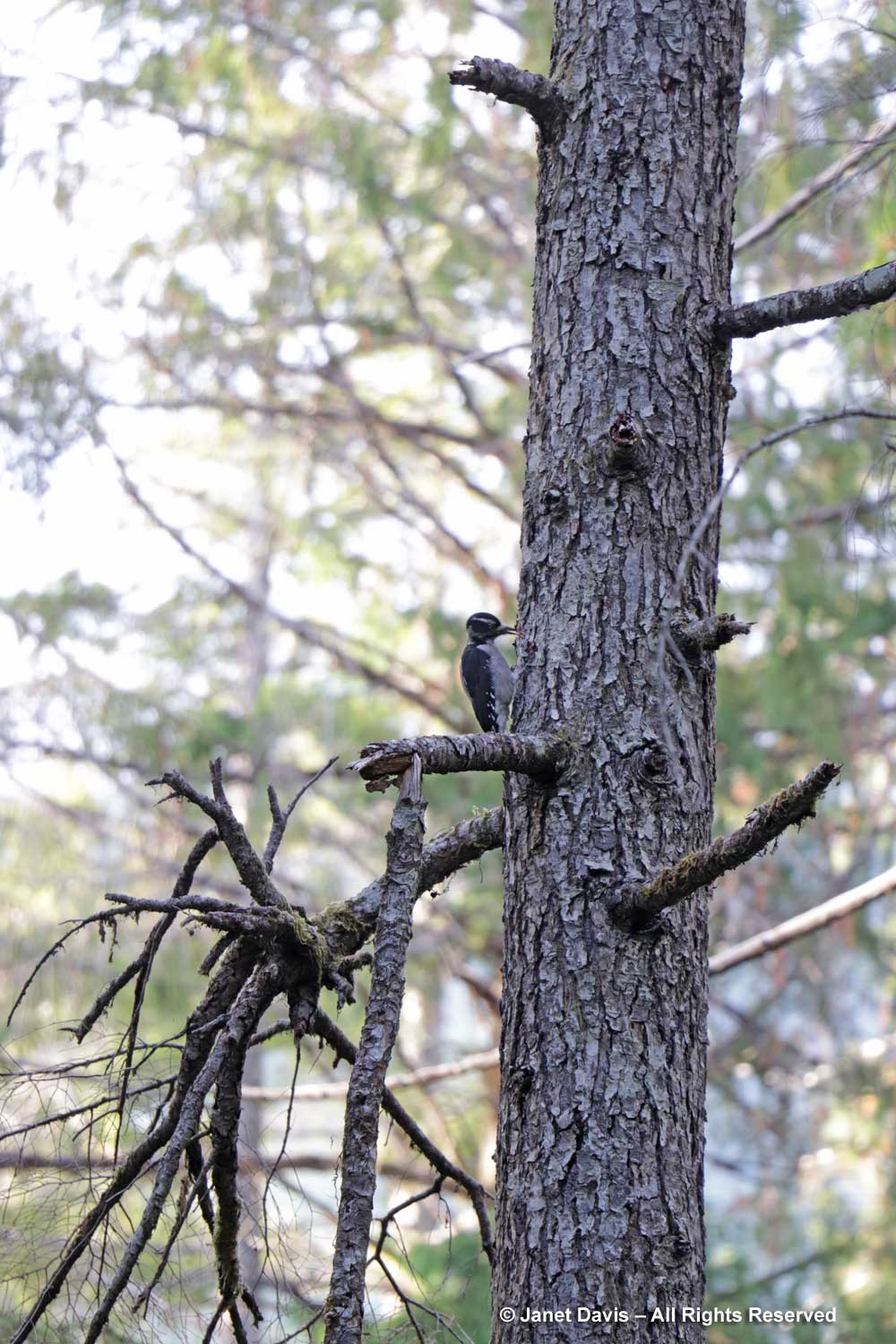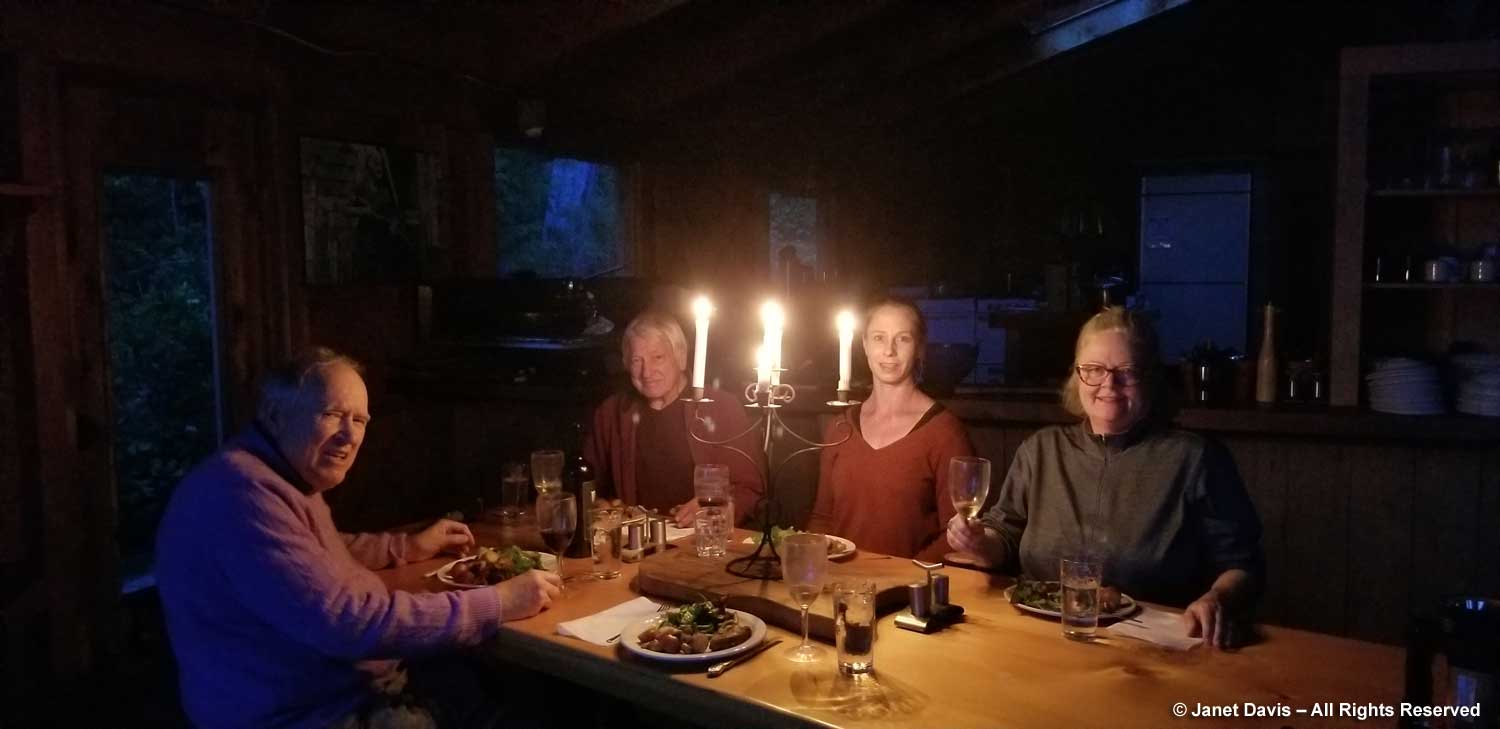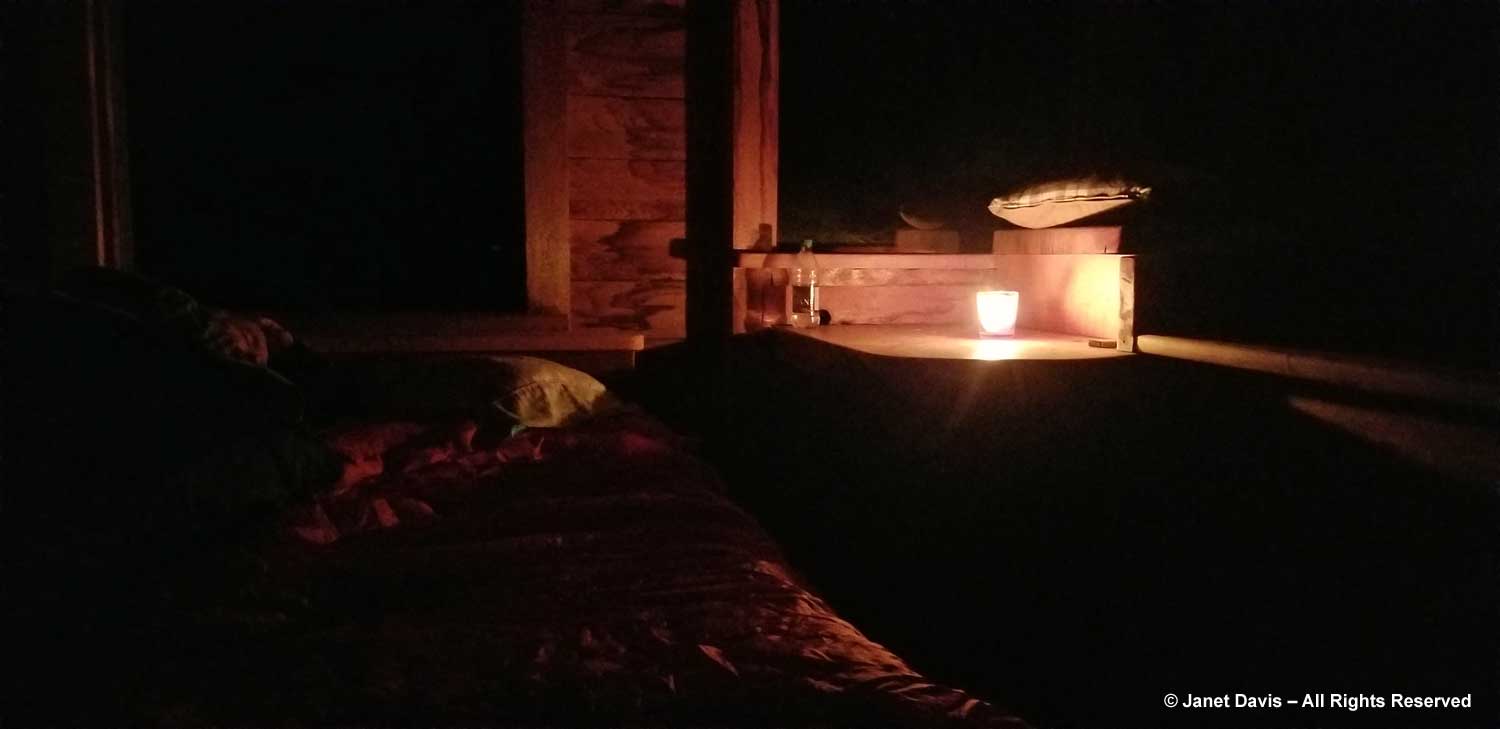I once wrote book reviews for a gardening magazine. I told the editor, my friend, that I wanted her assurance that if I found fault with a book, I would be free to state that. She agreed, but I’m not sure the publisher felt the same way since books promoted in popular magazines always get a lift in sales, and that’s just a good business relationship to cultivate. But if I’d been given ‘Under Western Skies’ to review it would have been a 5-star rave, even if I hadn’t been thanked in the book acknowledgements. And to think… it’s all because of Facebook.
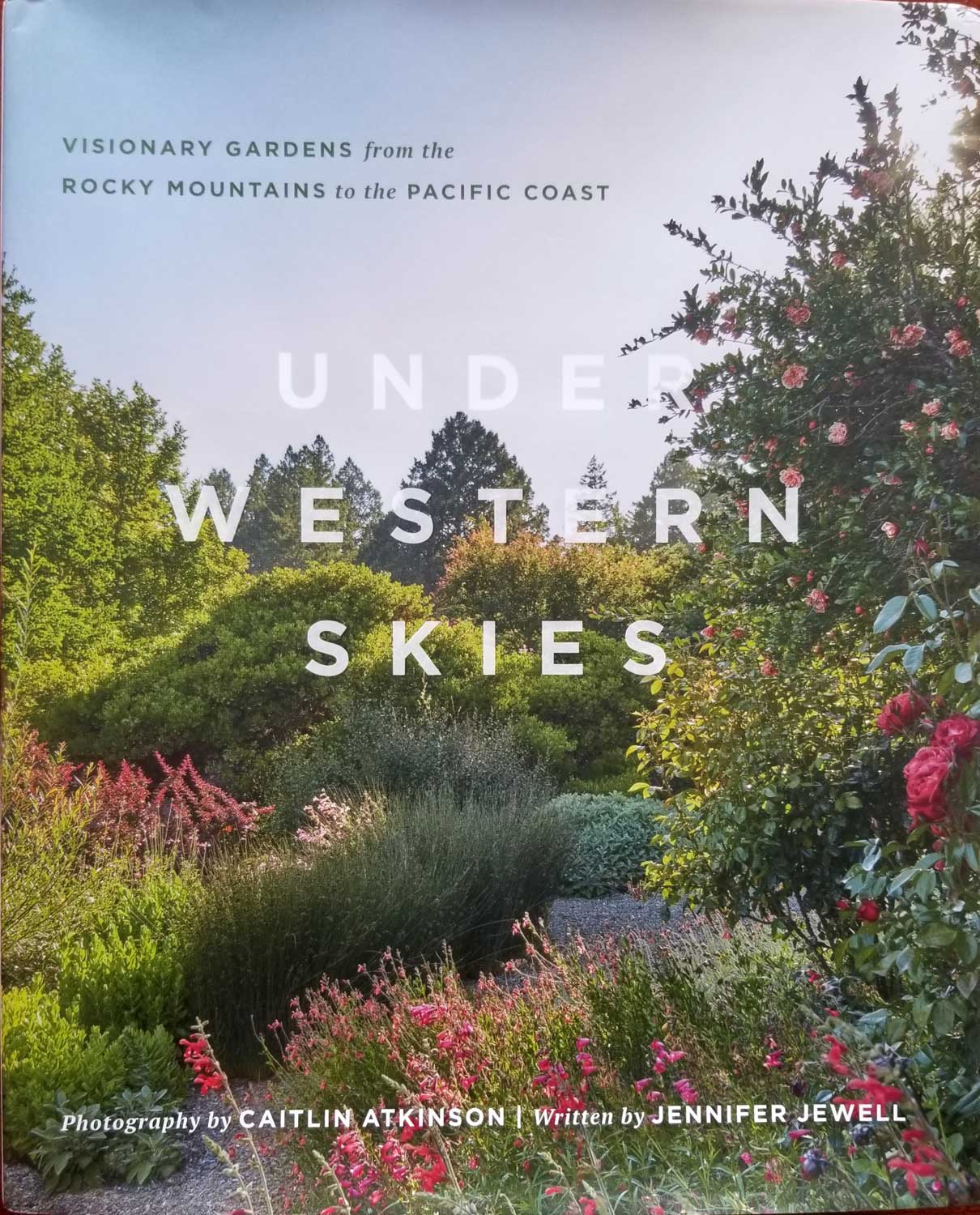
Let me back up a bit. I’ve been a Facebook member for almost 12 years. Apart from old friends, neighbours and family, pretty much all my 2700+ ‘friends’ community shares with me a love of gardening in some form. Writers, photographers, nursery owners, garden designers, plant breeders, active enthusiasts – they hail from all over North America and Europe and New Zealand, too. But it was a chance conversation in the Idaho Botanical Garden in September 2016 between my husband Doug and Boise garden writer/radio host Mary Ann Newcomer that put in motion a sweet event that happened three years later. We were heading home from visiting friends in Sun Valley via Boise and a pre-arranged meet-up with Mary Ann, one of those Facebook friends I’d never ‘met’ in real life (or IRL as they say on FB) but I’d ‘known’ virtually since 2014. After touring much of the garden (you can read my blog on Idaho Botanical Garden here), I decided to meander to the top of the wonderful Lewis & Clark Trail snapping shots of the Plants of the Canyons, below, while Doug and Mary Ann relaxed at a lower level.
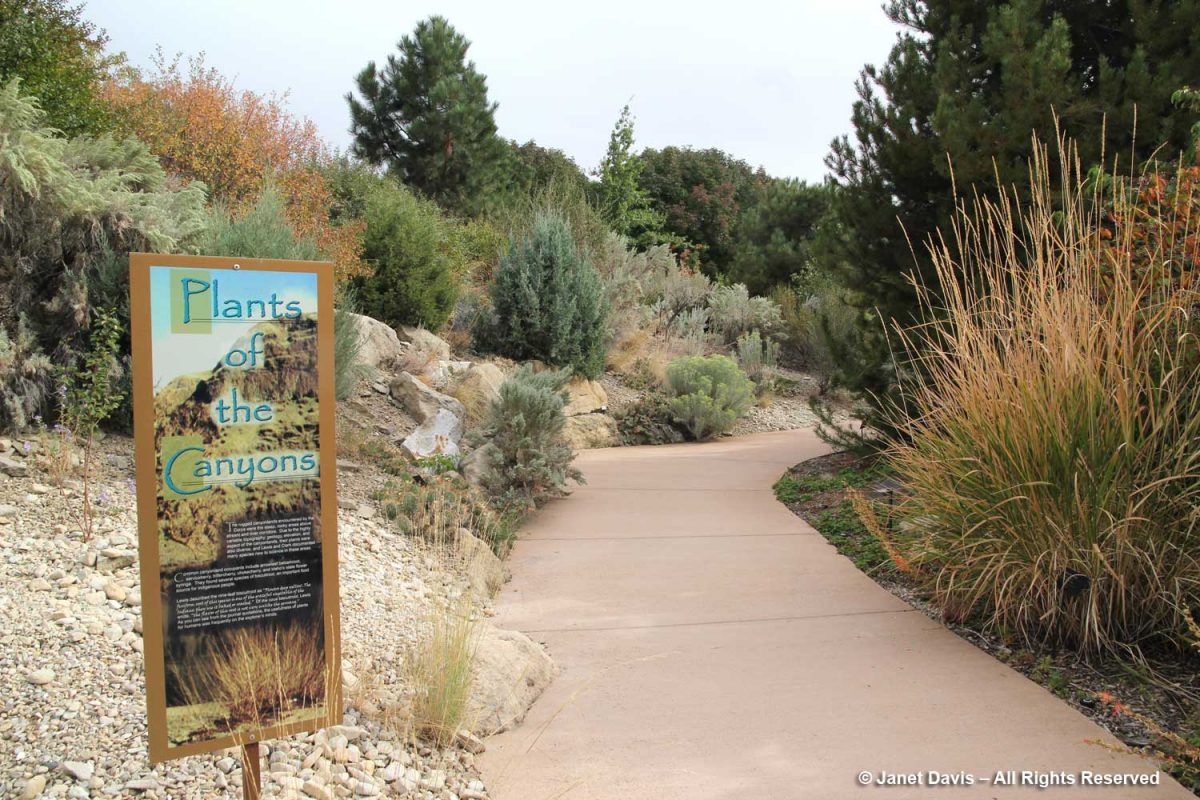
During their conversation, Mary Ann mentioned writing a story in 2013 for Leaf magazine about a famous British Columbia garden, Cougar Annie’s Garden, below (photo by Janis Nicolay). I had once told her that Doug and Peter Buckland, who now owns the garden via the Boat Basin Foundation, had been good friends since the 1960s. In fact, Doug remembered meeting Cougar Annie herself on a visit decades earlier.
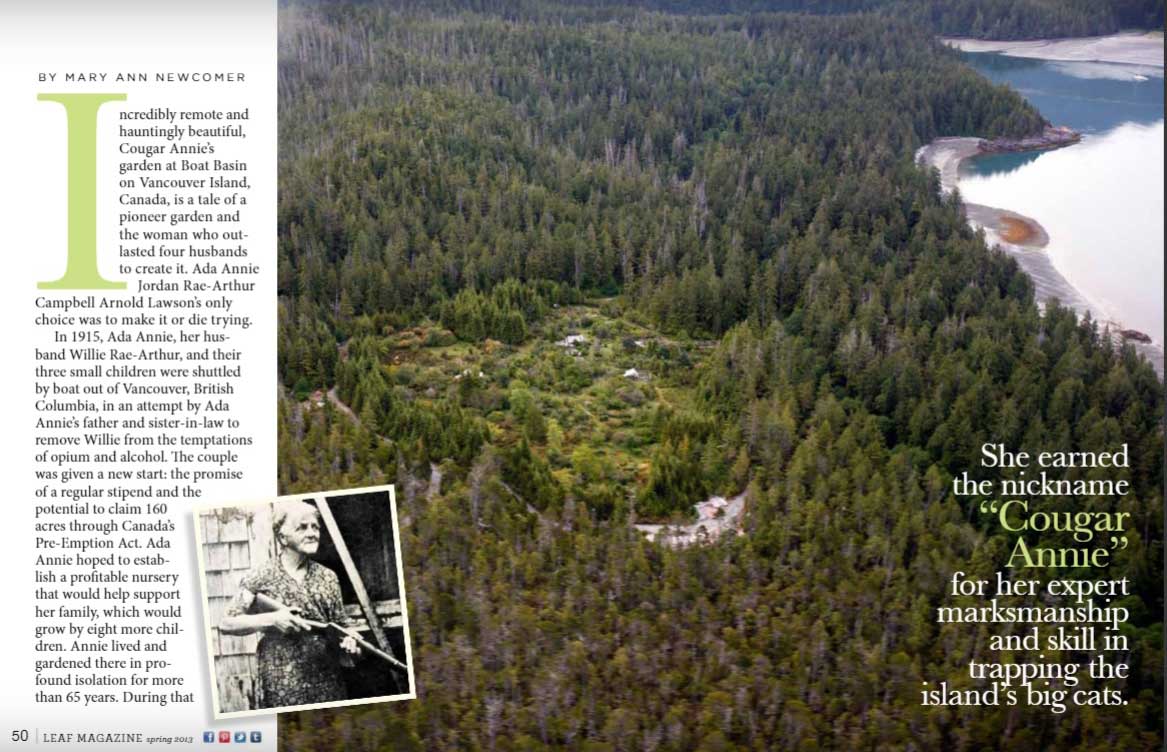
And that is how, a few years later in May 2019, Mary Ann contacted us to say a California photographer named Caitlin Atkinson was interested in photographing Cougar Annie’s Garden for a book project she had developed. As it happened, Doug and I were finalizing the details of an early autumn trip that would take us to see family in British Columbia before flying to San Francisco– and Peter had long wanted me to visit the garden. To make a long story short, the stars aligned, and in early October we met in Tofino and chartered a small plane to fly us 20 minutes north to the garden.
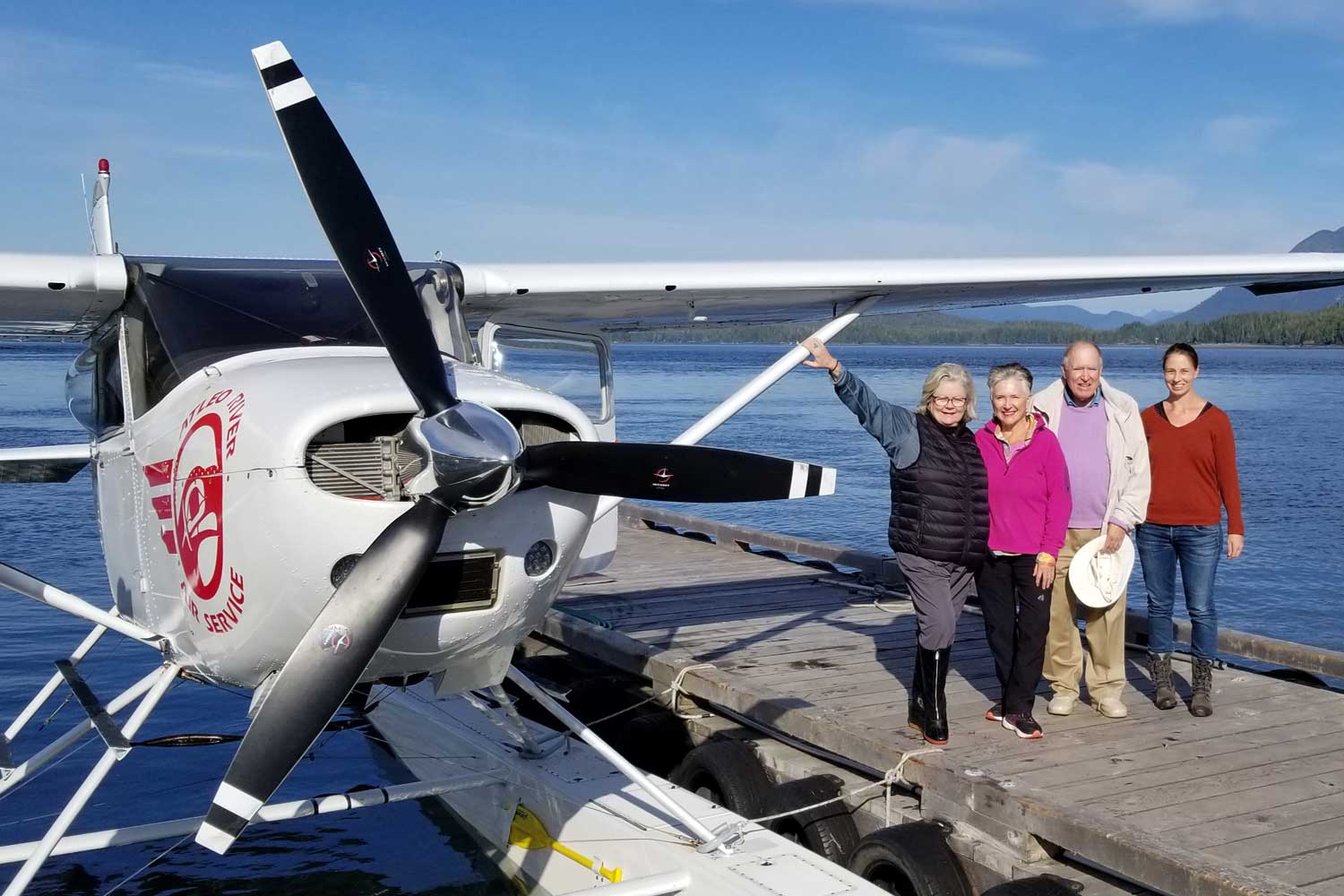
Doug sat in front with the pilot; Mary Ann had her phone out to make sure….
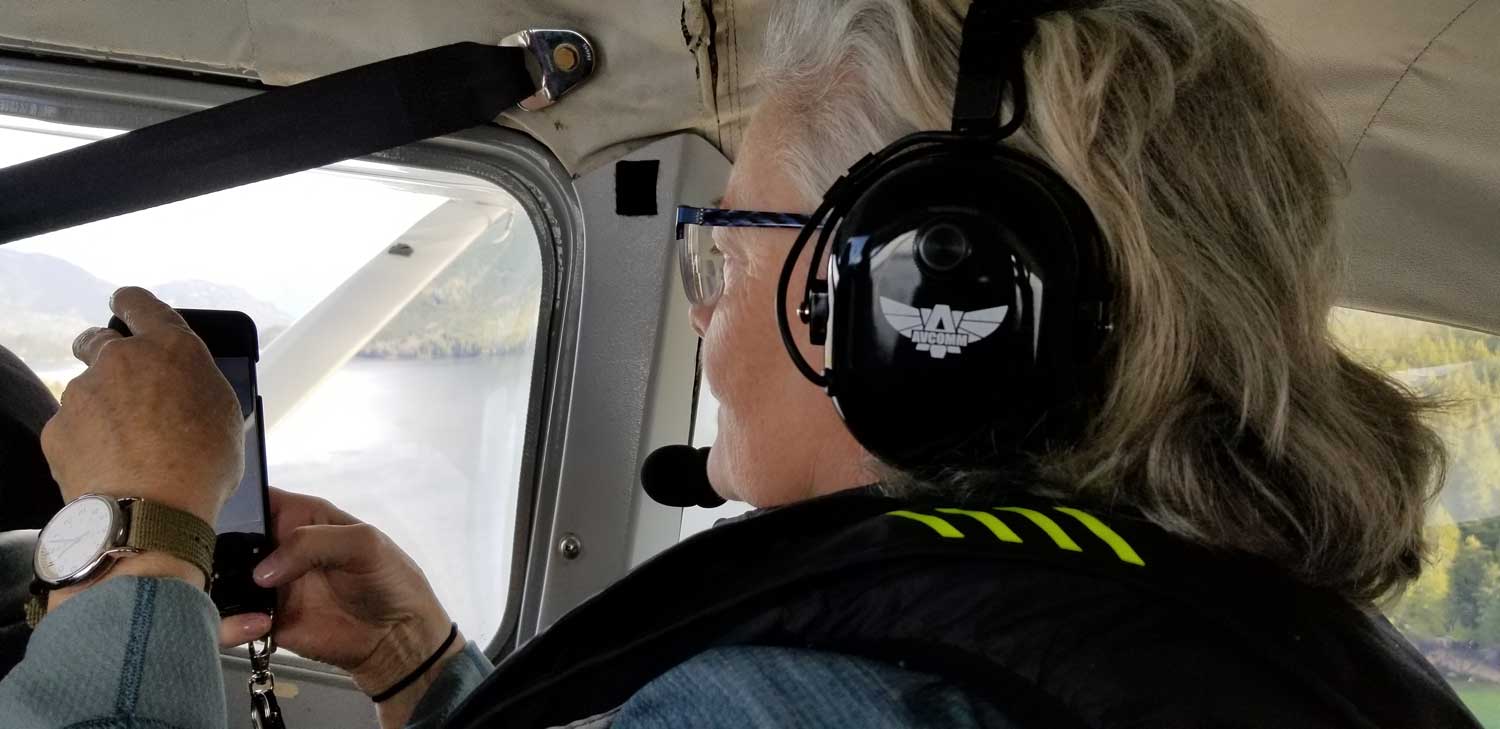
… she captured some of the stunning landscape of Clayoquot Sound below….
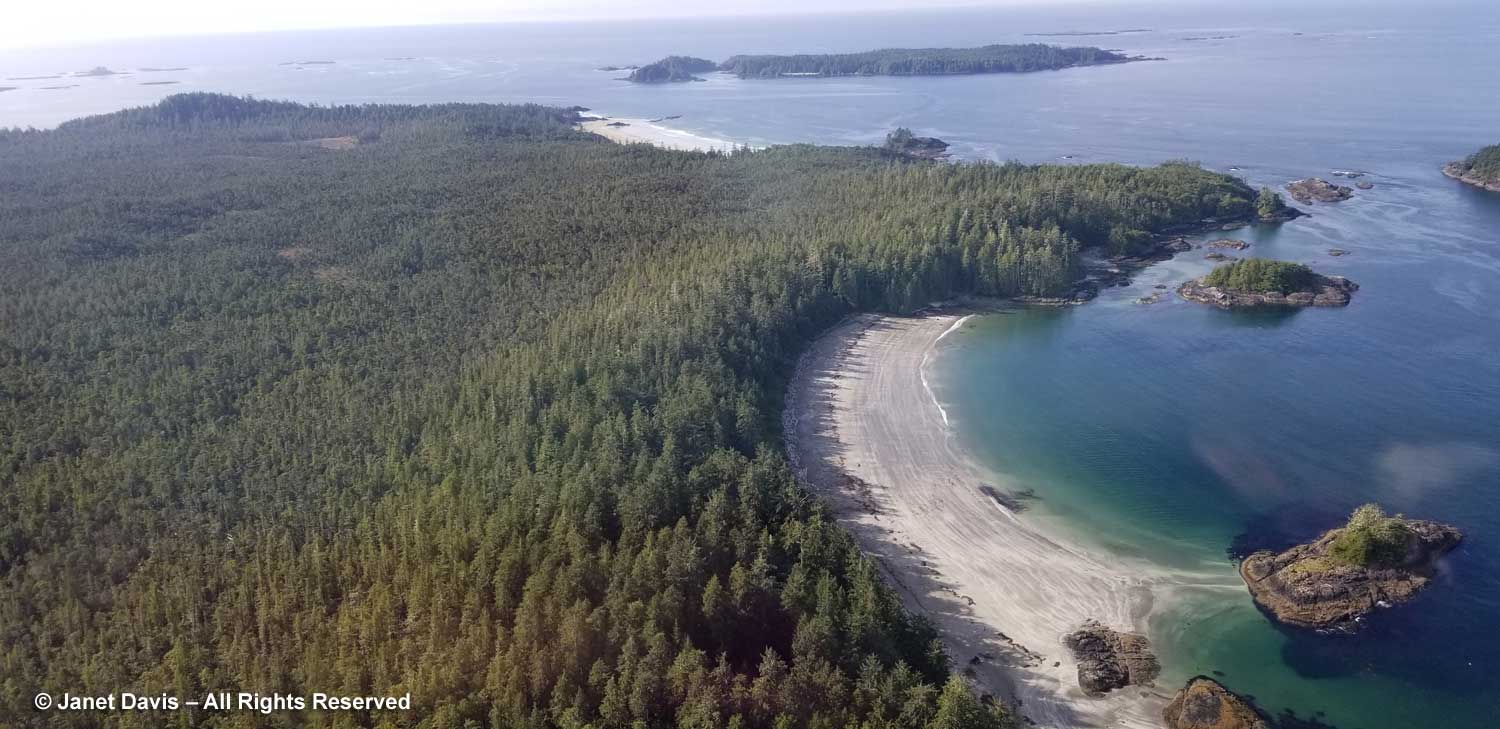
…. and Caitlin sat in the rear.
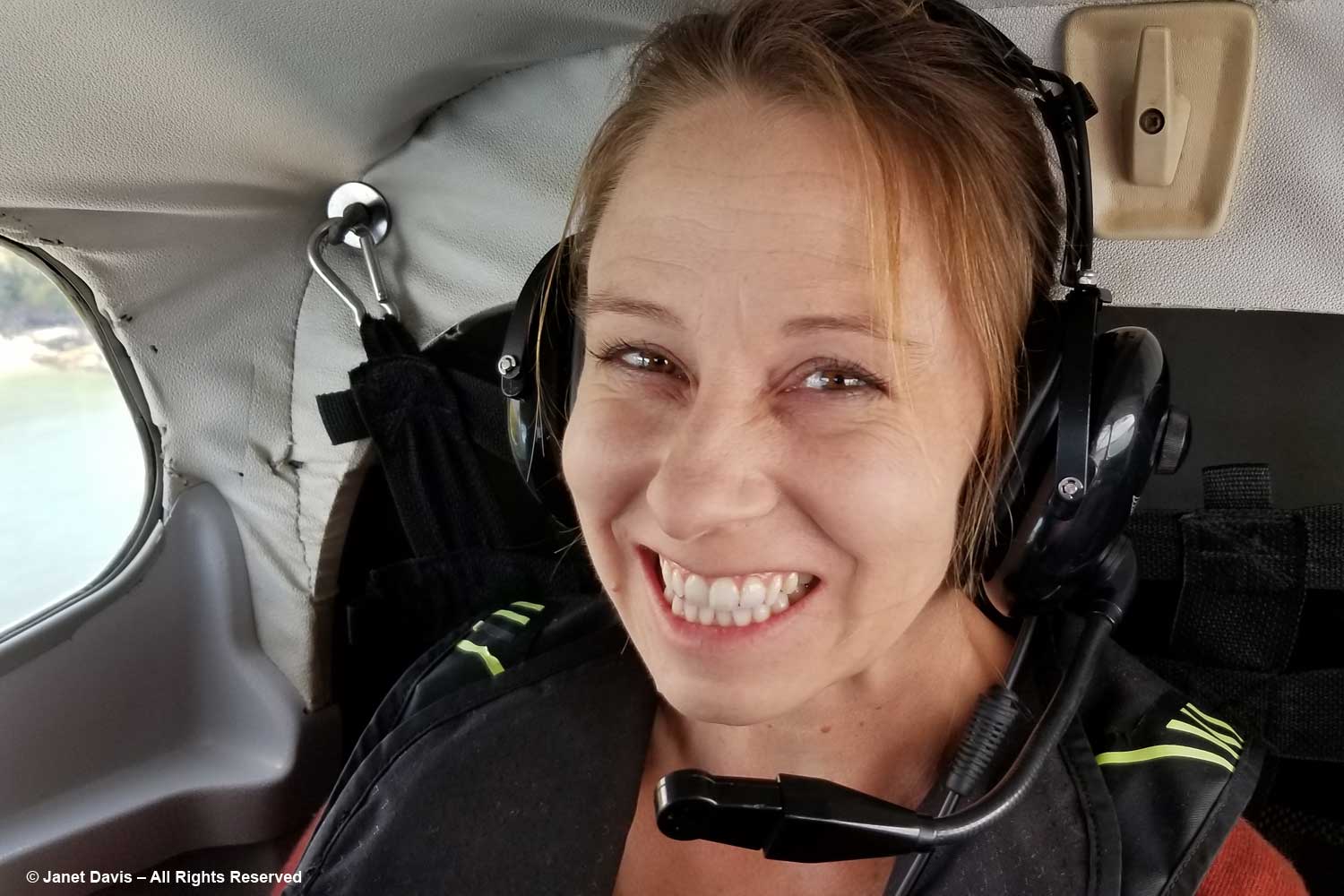
Just a few hours later, luggage stowed in our rustic rainforest cabins, Peter was giving us a tour of the property…..
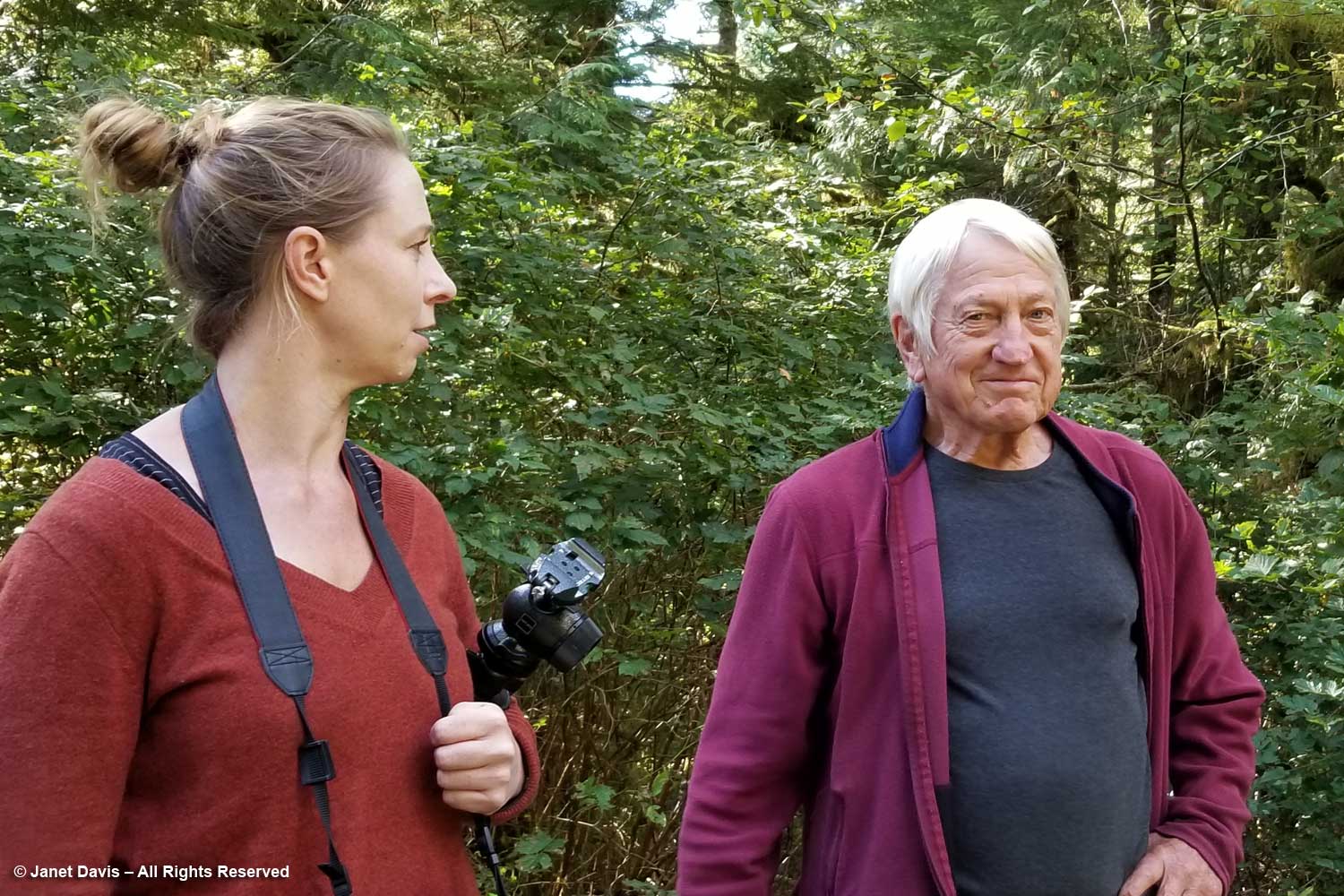
…. that included Cougar Annie’s house….
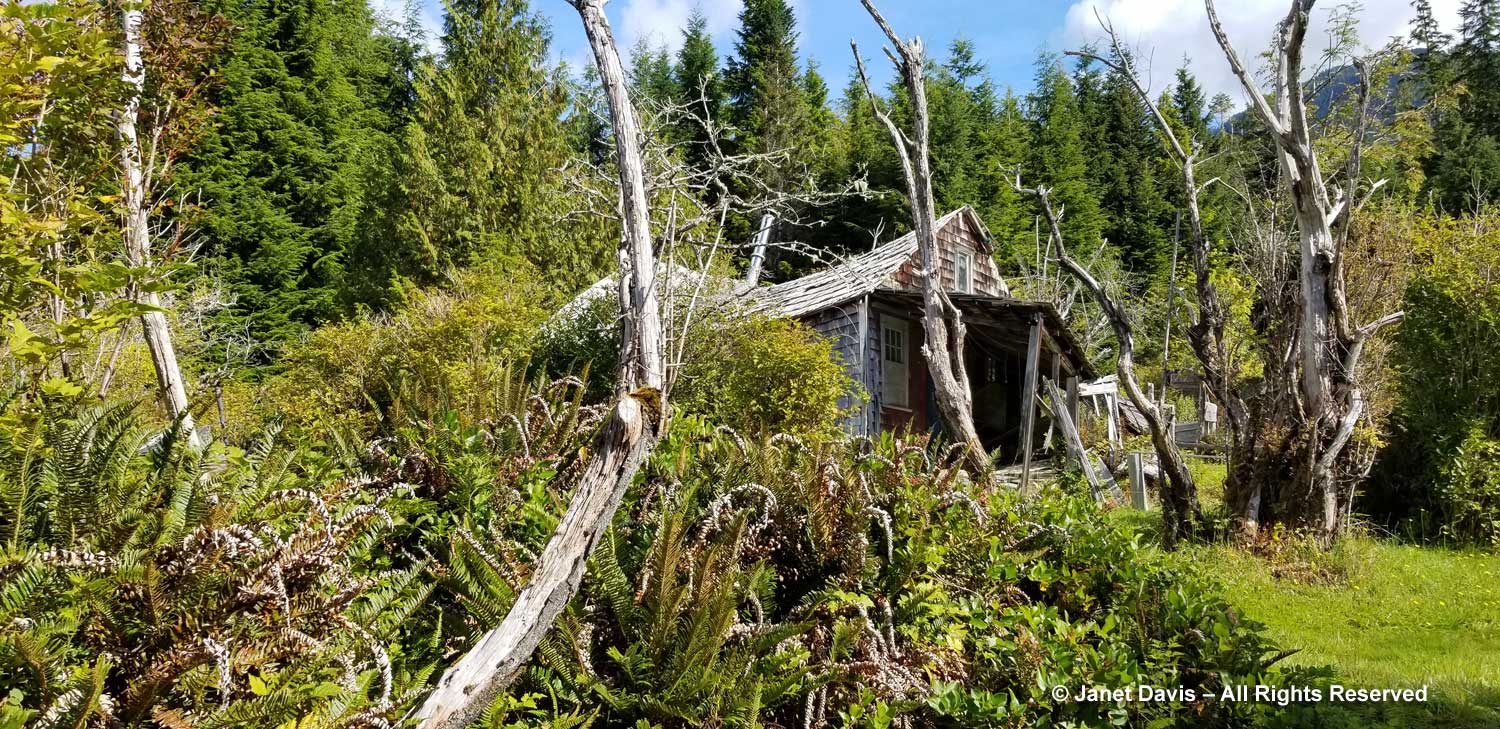
…. and explaining the significance of logging zones in the first growth forests on the mountain slopes nearby.
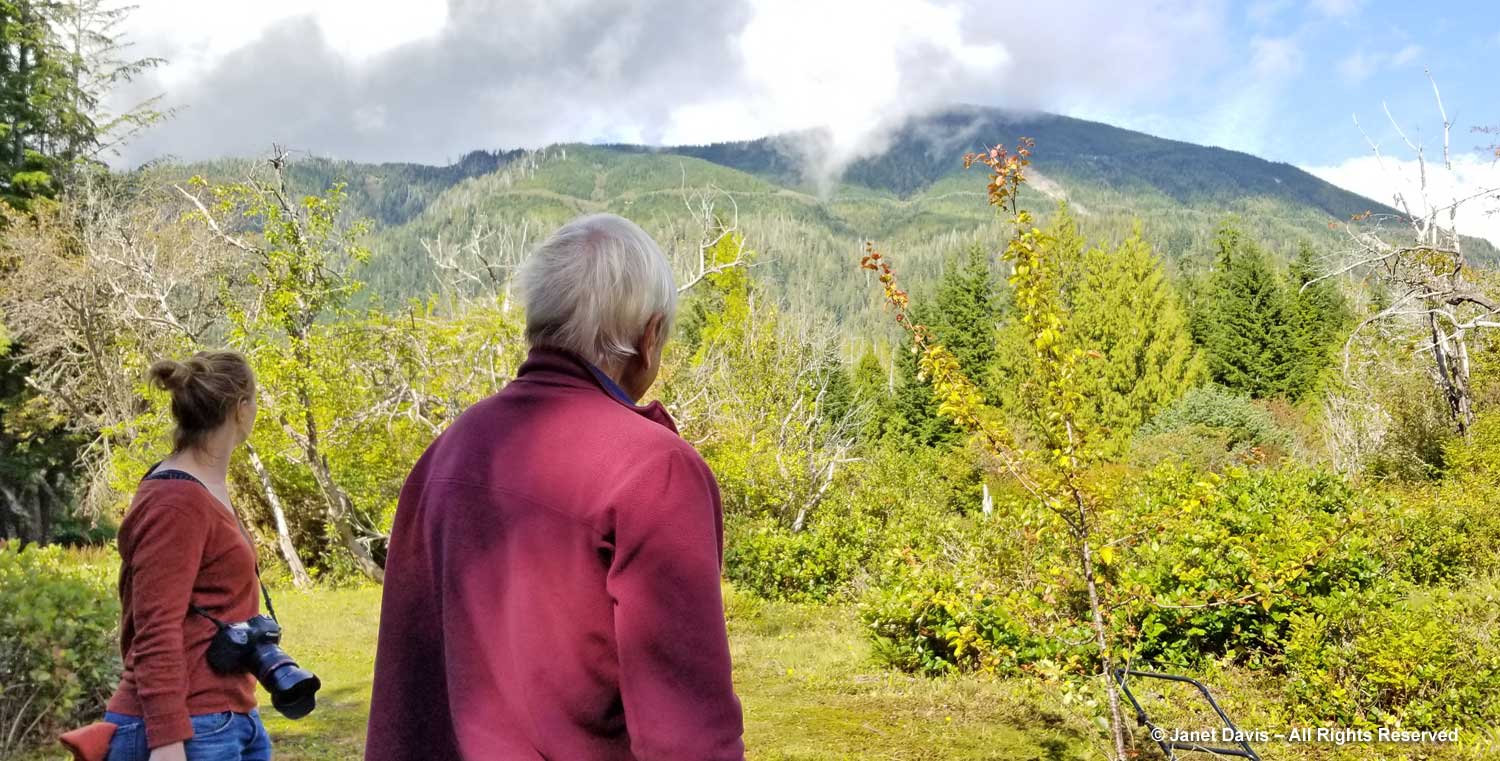
We went our separate ways and met late in the afternoon in the Great Hall of the Temperate Rainforest Study Centre.
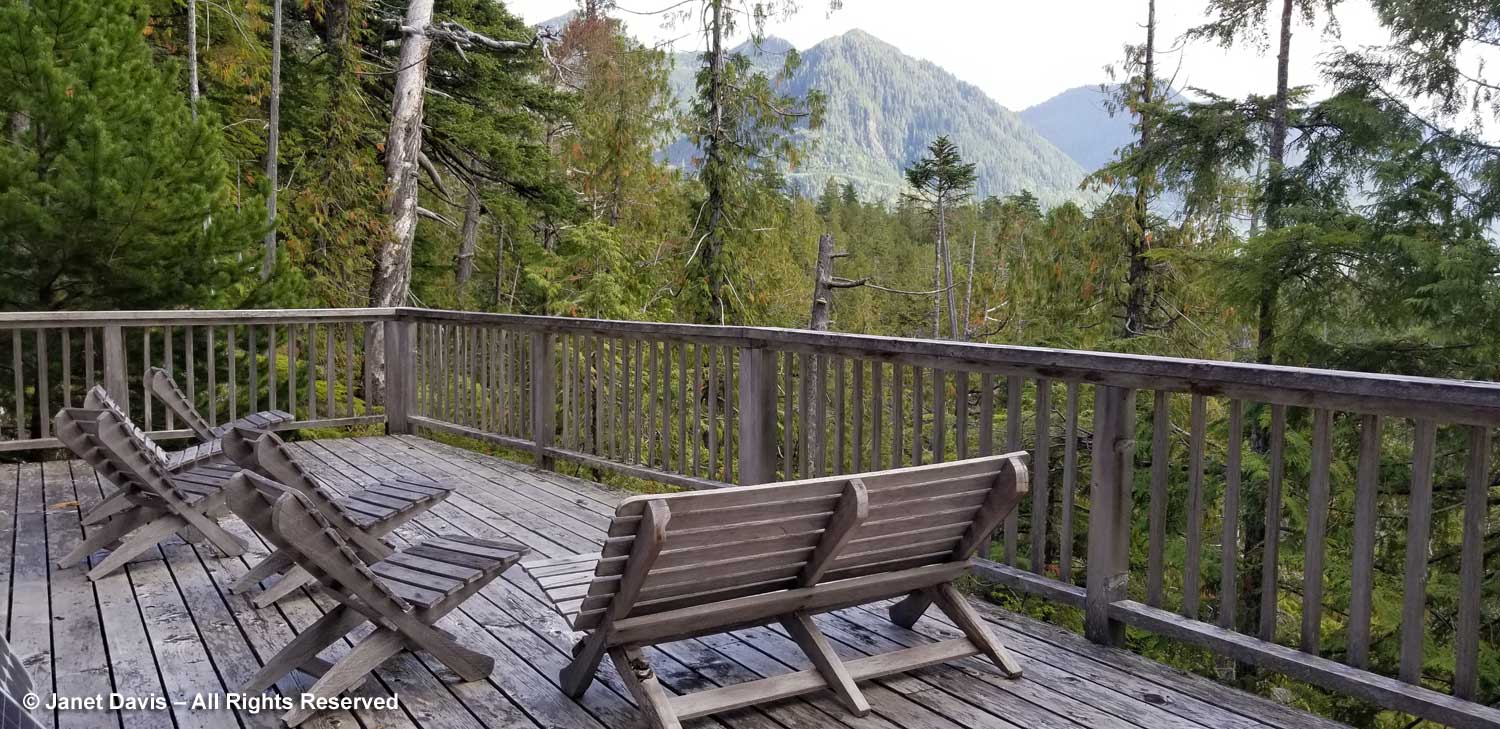
The property is completely off the grid with minimal propane use for cooking and washing up, so dinner in the hall was by candelight.
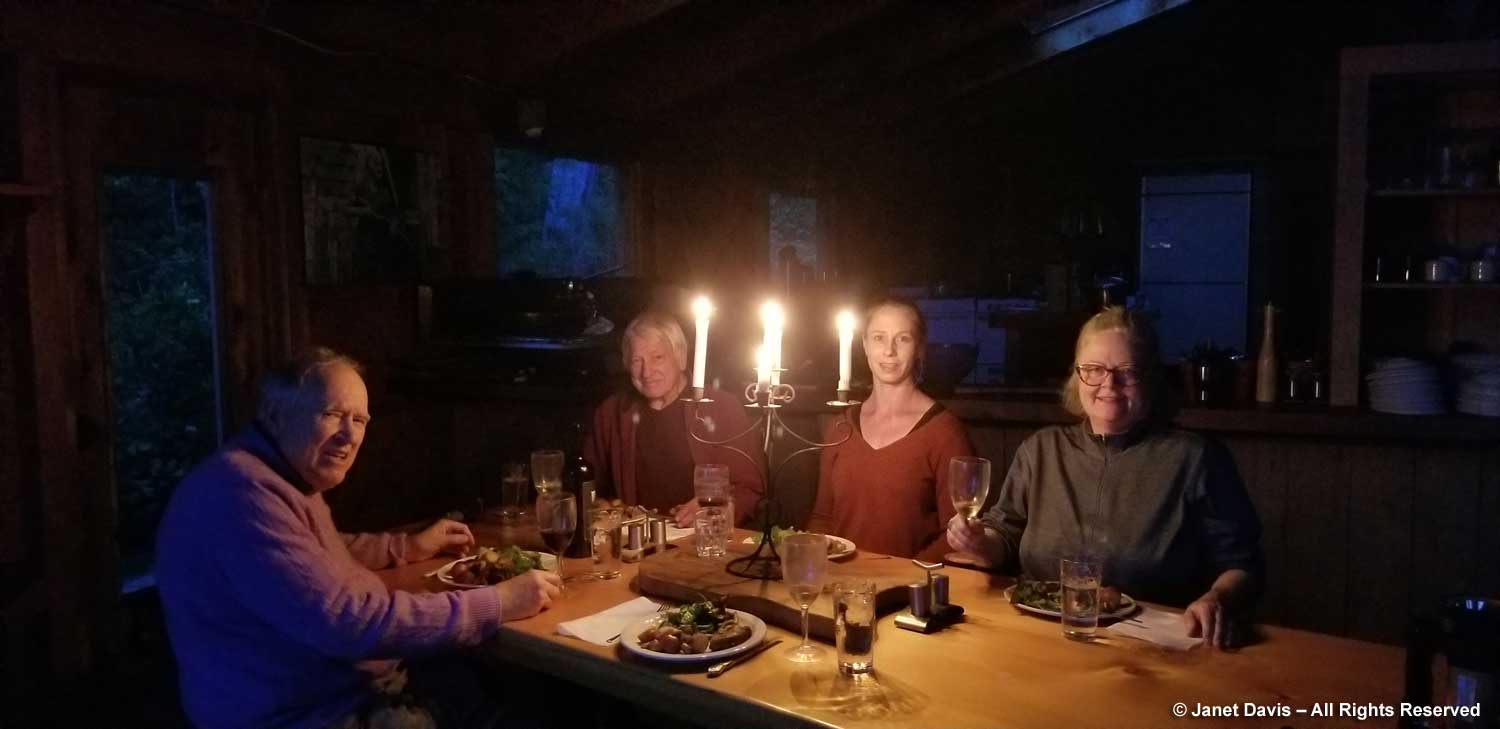
The next day, Peter toured us along the Walk of the Ancients, showing us 700-year old red cedars and “canoe trees” carved out by First Nations people. Beyond the inner history and relatively recent saga of Cougar Annie’s Garden, this ancient forest seemed to me to be Peter’s real story, his love and appreciation evident in his understanding of its ecology….
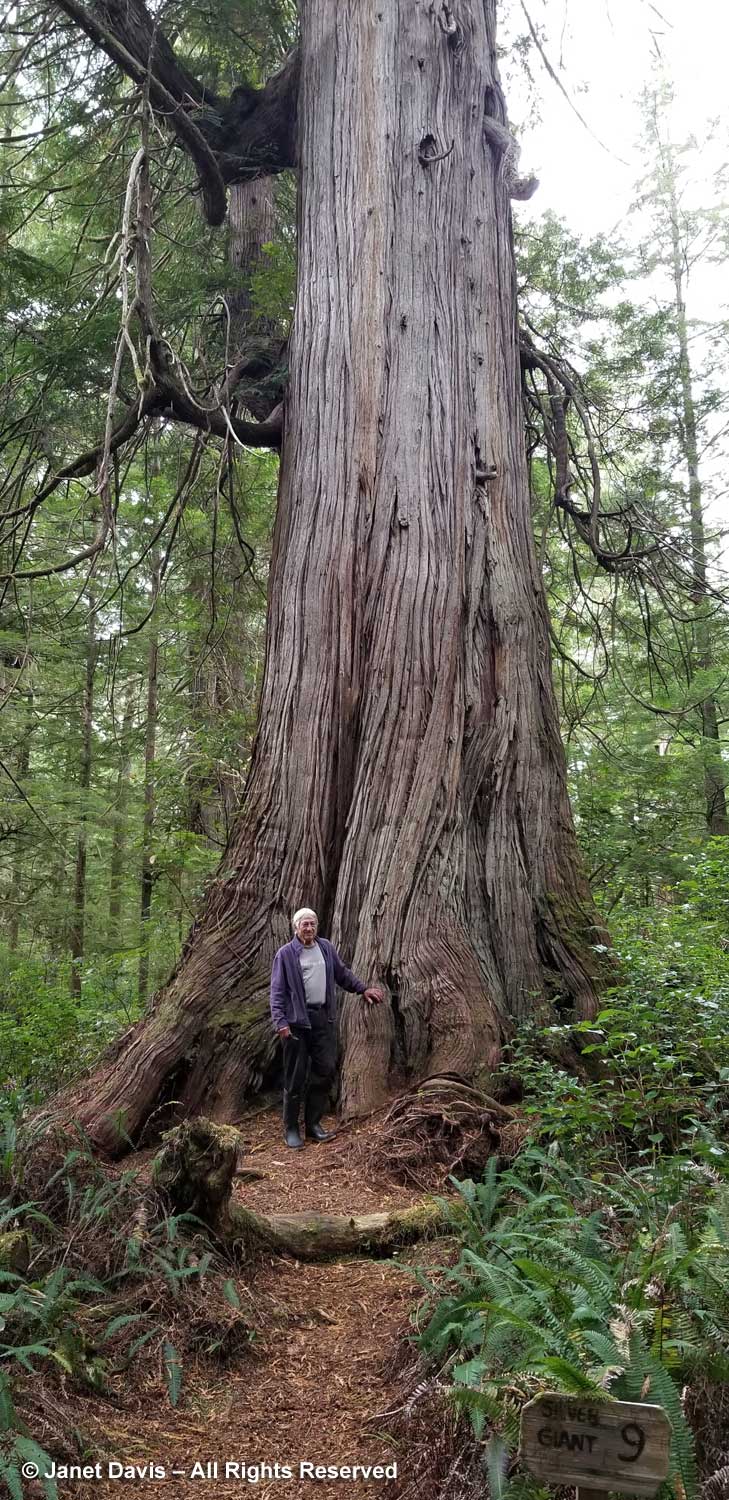
…. and the 2300 feet of hand-hewn cedar shake boardwalk, below, on which we trekked through giant trees to reach our cabins. To say it was a life-changing two days seems trite, but it was. And I felt compelled to write my impressions in a 2-part blog which you can find beginning here.
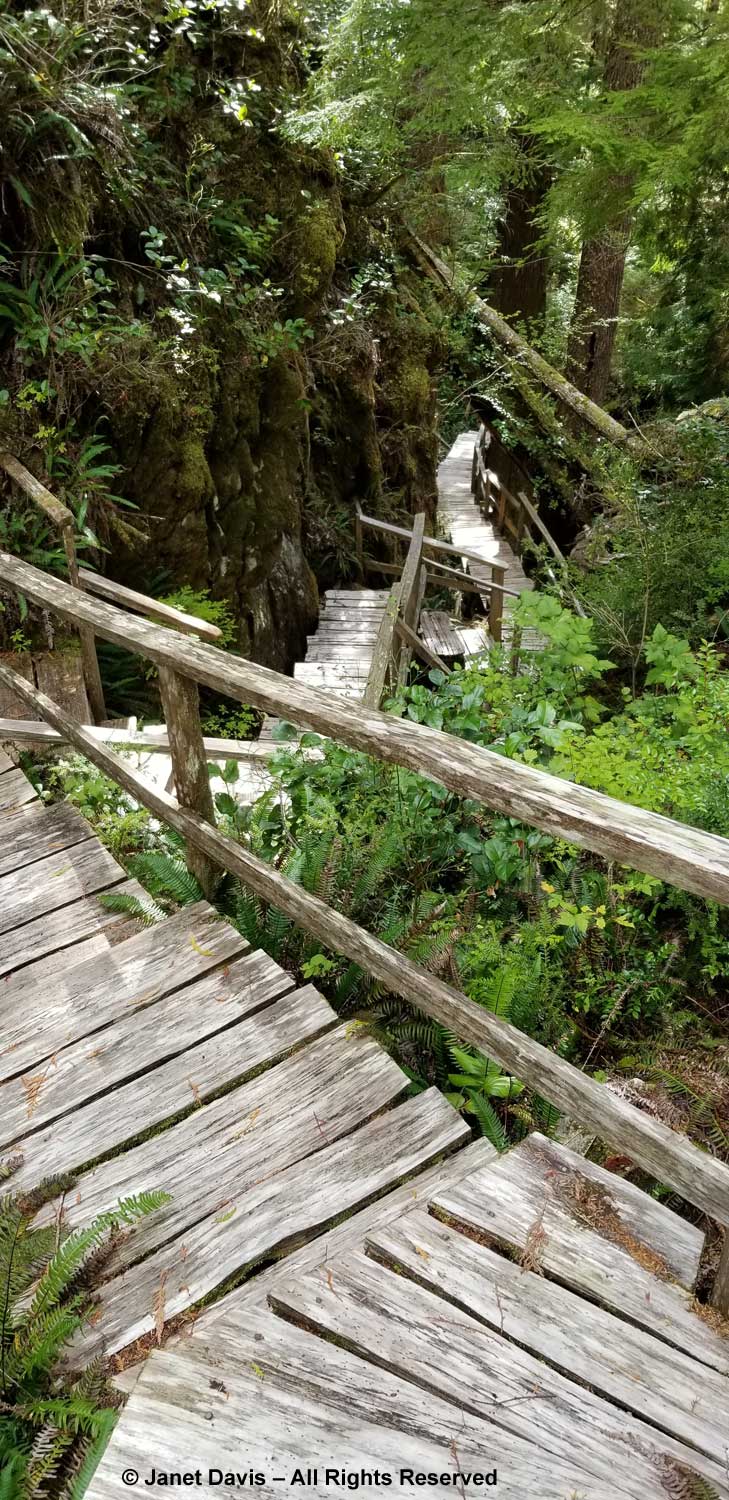
Throughout those two days in early October 2019, Caitlin disappeared with her camera and we would only see her at dinner. Her images and Jennifer Jewell’s words (Jennifer is well-known for her NPR radio show and podcast ‘Cultivating Place’) comprise the last story in the book and do Cougar Annie’s Garden at Boat Basin and Peter Buckland great justice.
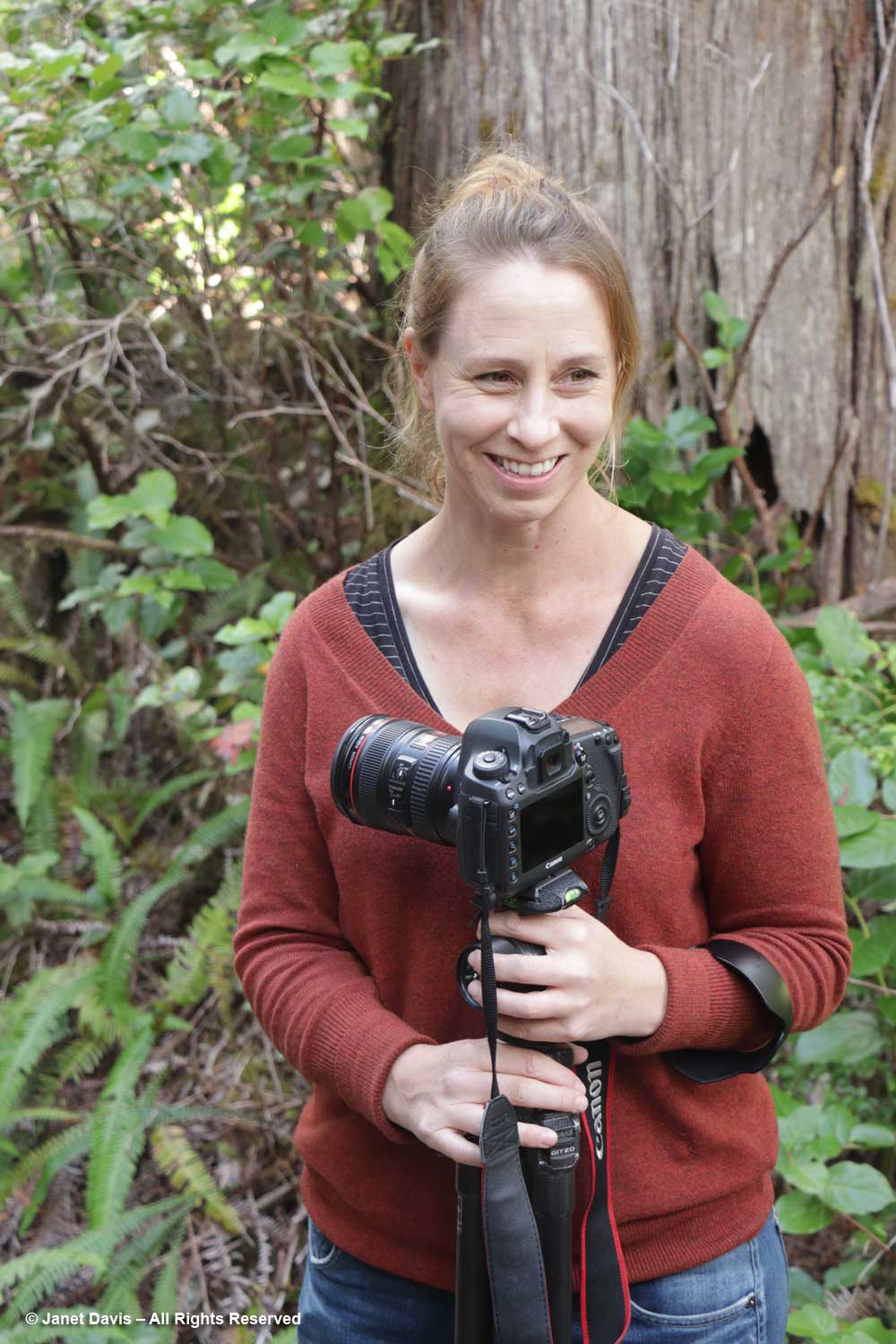
The Rest of the Book
The book’s subtitle is Visionary Gardens from the Rocky Mountains to the Pacific Coast, and it spotlights 36 such gardens from the Southwest, Southern California, Northern California, the Intermountain West and the Pacific Northwest. In the Southwest section, there are sophisticated desert gardens in Phoenix and stunning wildflower gardens in the foothills of the Sangre de Cristo Mountains near Santa Fe. But I was delighted to turn the page to find the Albuquerque garden of my New Mexico Facebook friend, landscape designer Hunter Ten Broeck and his wife Barb featured. Caitlin’s photos brought his garden, developed through xeriscaping principles reflected in his company’s name, WaterWise Landscapes, to life.
In the Southern California section, I was absorbed by the story of tech executive Dennis Mudd whose mountain biking in the hills near San Diego inspired him to research the endemic native plants near his Poway home and ultimately restore nature to his garden, telling Jennifer Jewell “I’m living in a truly interconnected web of life.”. But it was while reading the story of landscape architect David Godshall’s Edendale Garden in Echo Park in Los Angeles that I did a double take, seeing the name of a dear Toronto friend mentioned. As Jennifer wrote: “Reading City Form and Natural Process: Towards a New Urban Vernacular by Michael Hough taught him that most standard landscaping supports almost no life, a ‘searing’ revelation.” I interviewed Michael Hough (1928-2013) over many months 26 years ago for a magazine profile, accompanying him to his Environmental Studies classes; tagging along on site visits with his students; visiting his ecological landscape designs; sharing a glass of wine in his garden; and listening to him talk about his regeneration plan for the Don River, below, one of Toronto’s three watersheds.
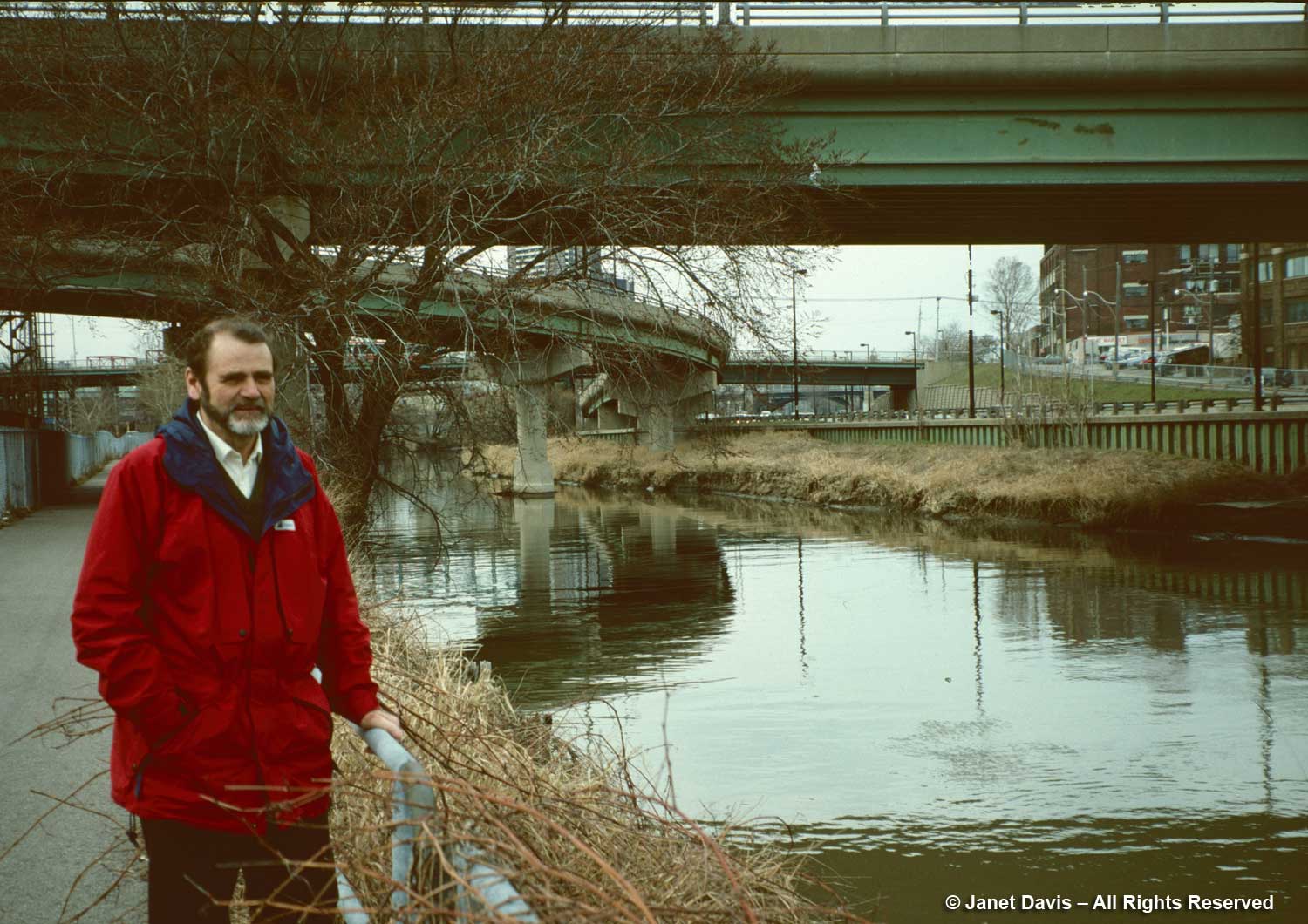
In the Northern California section, it was a delight to come upon ‘Sebastopol Local Love Story’, featuring the garden of my friend, native plant specialist Phil Van Soelen and his wife Mary Killian. When we were planning a trip to the Bay area and wine country in spring 2014, Phil suggested we build on our Facebook relationship and meet “IRL” and that’s what we did, visiting him in the lovely garden he then had, below, within sight of the garden Mary owned behind him, to which he moved in 2015. Caitlin’s photos feature some of their fabulous native plantings. Later we went for dinner, two Facebook pals and their spouses getting to know each other better.
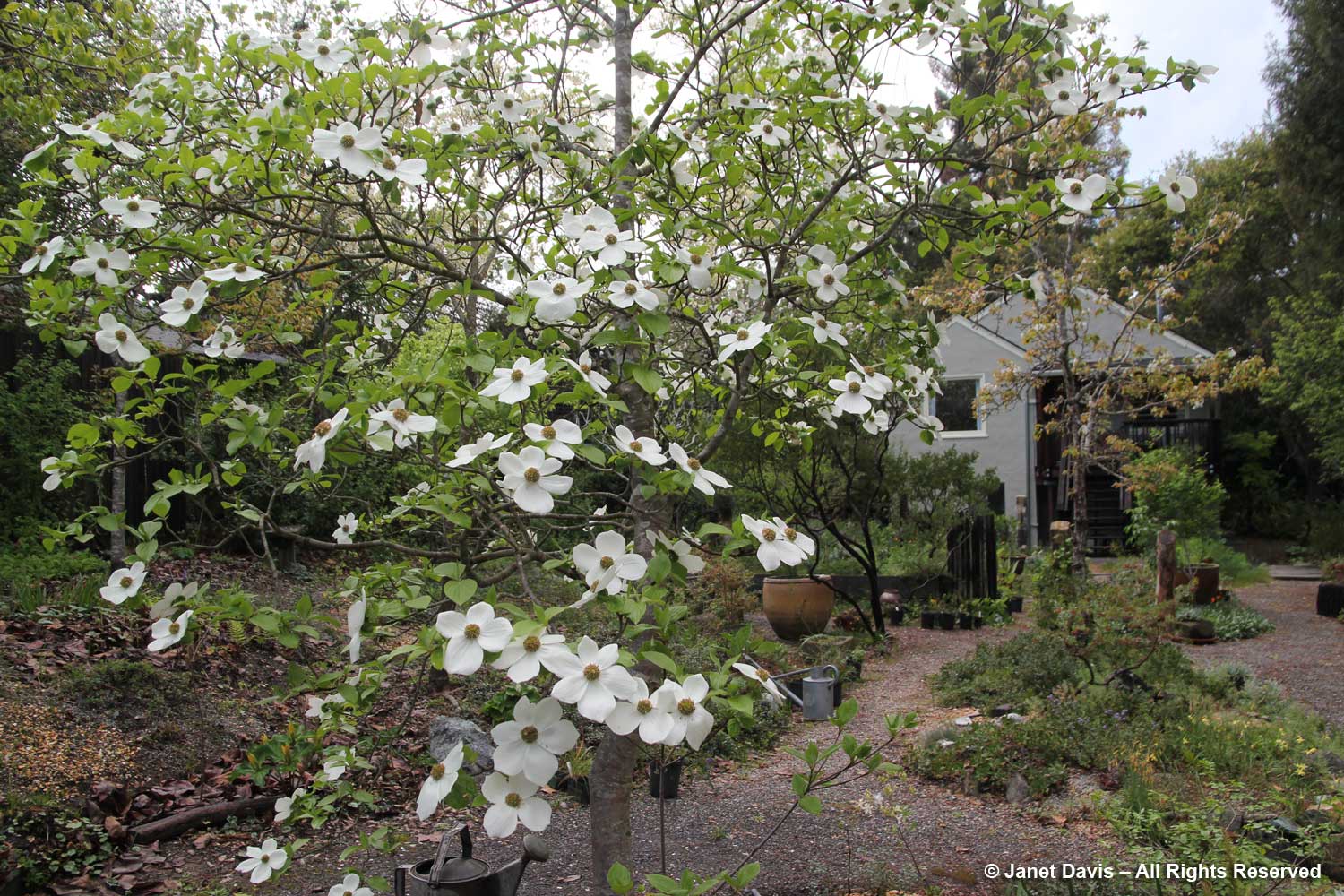
That week we also visited Phil at California Flora Nursery, which he opened with Sherrie Althouse in 1981. It was a rainy morning in Sonoma, but I’m so happy we got to see him in his element there, since he sold the nursery a few years ago.
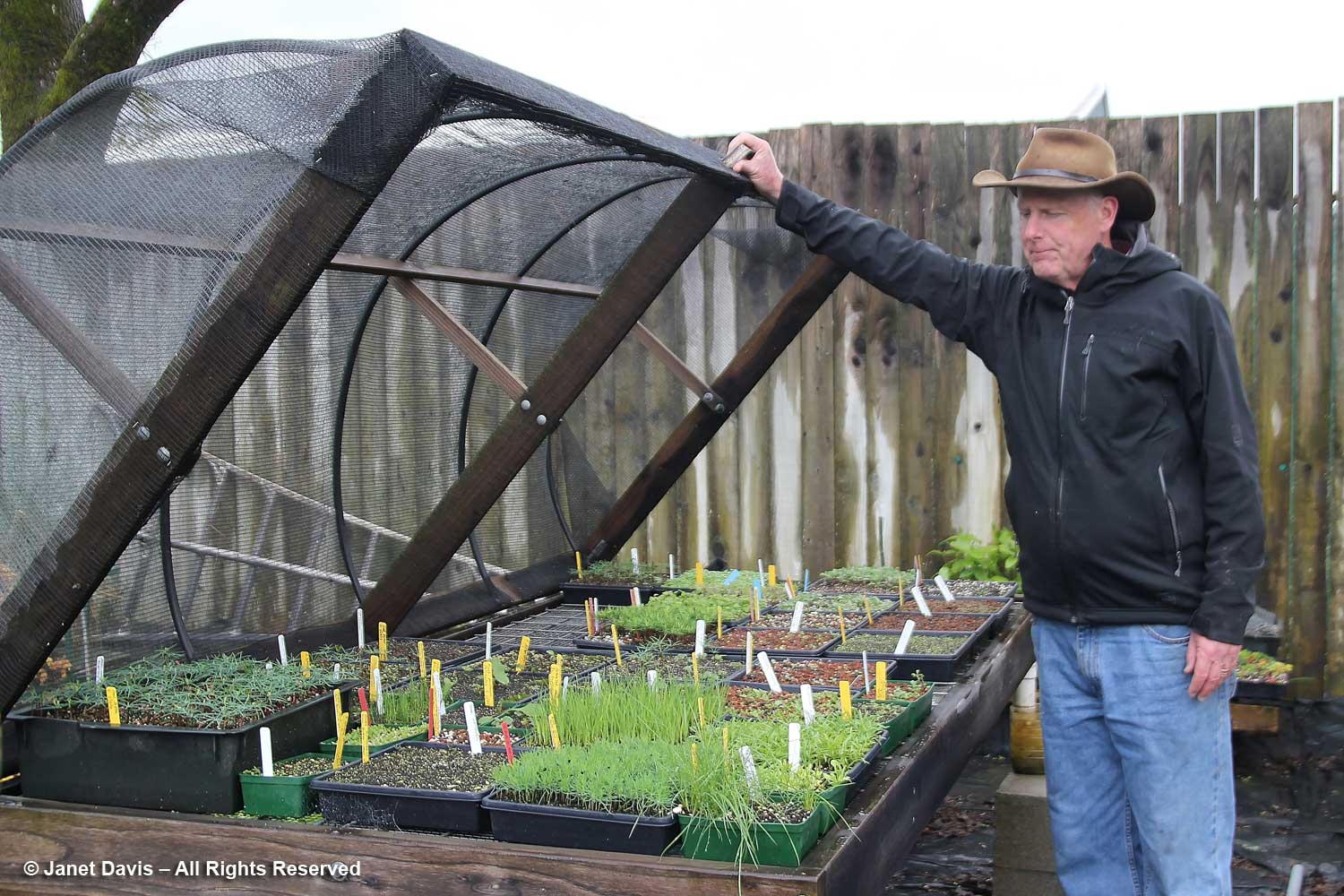
In the gardens of the Intermountain West, Mary Ann Newcomer’s Boise garden is featured, as well as the Idaho Botanical Garden. Renowned Colorado designer Lauren Springer’s name pops up in a few gardens in this section, most prominently in the Niwot, Colorado garden of Mary and Larry Scripter. Once again, Facebook and the Garden Bloggers group I joined through it, allowed me to visit the Scripter garden on a Denver trip a few years ago and it was a pleasure to be reminded in Caitlin’s photos of their enchanating prairie meadow garden overlooking their extensive hayfields and the Rocky Mountains. This is a garden I meant to blog about, but never quite got around to. So here is my photo of Mary and Larry, as accompaniment to the piece in the book.
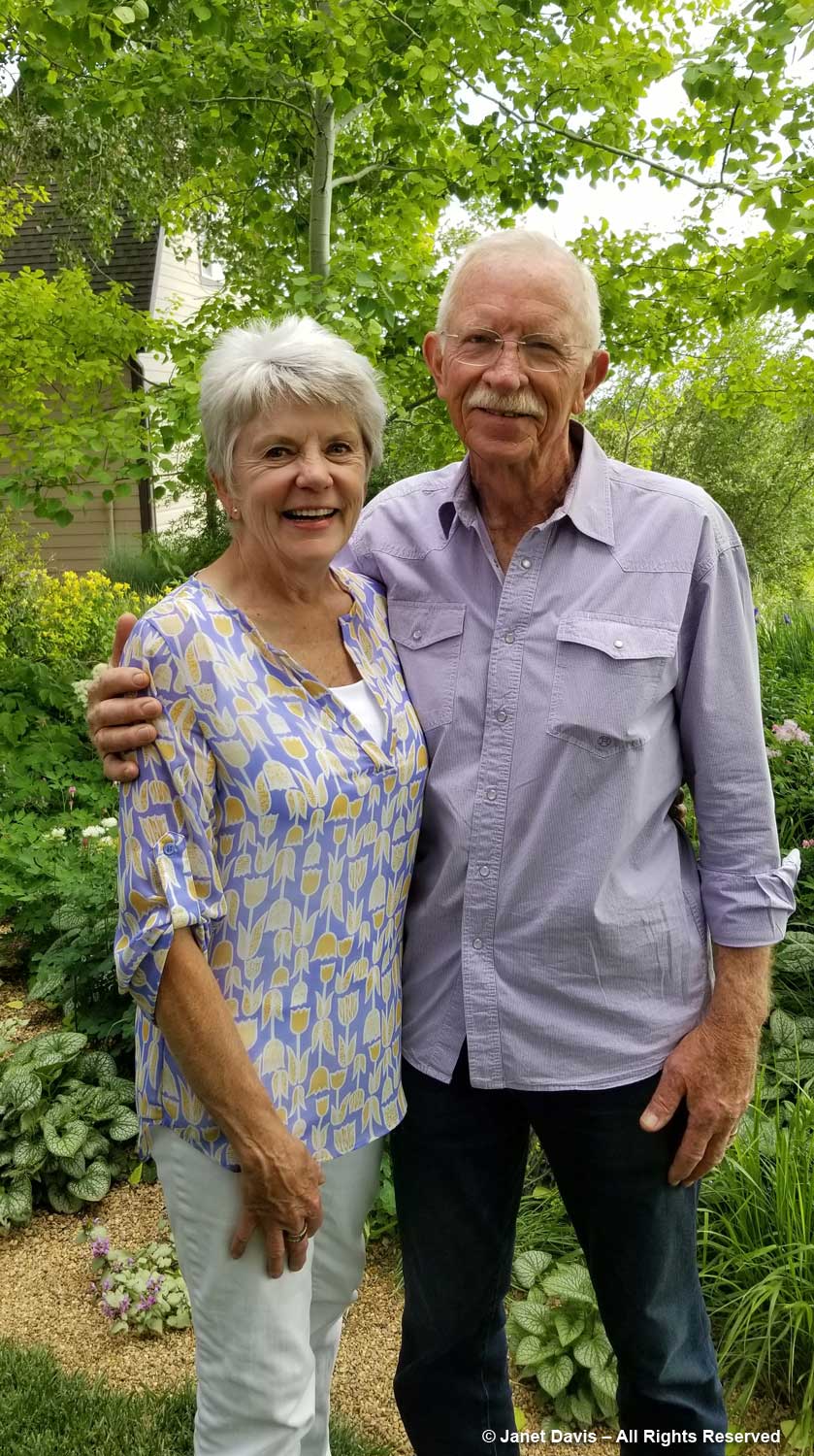
I found Lauren Springer’s famous breadseed poppy Papaver somniferum ‘Lauren’s Grape’ growing there, too.
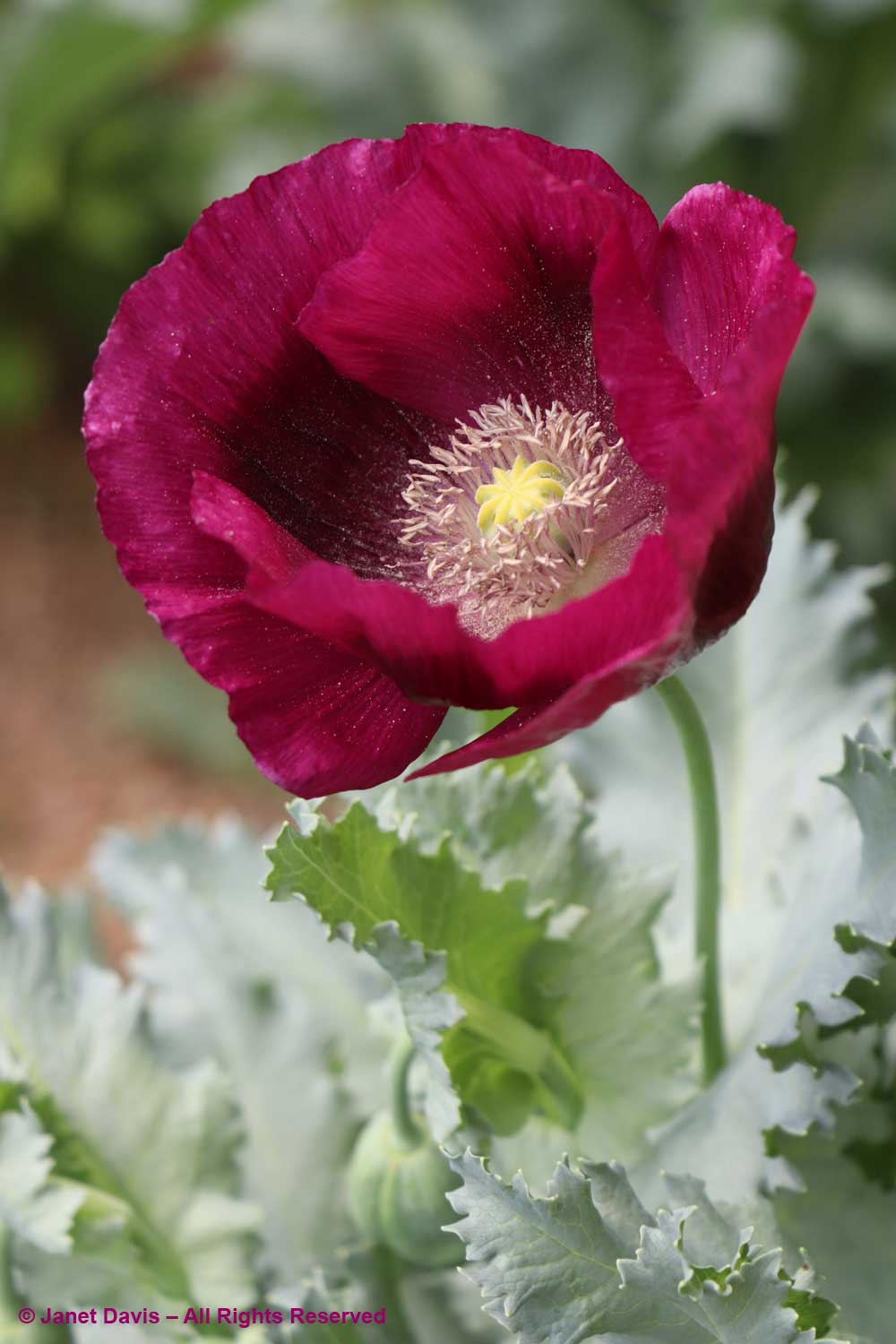
In the Pacific Northwest section of the book, Harborton Hill, the lush Portland garden of my Facebook pal Bob Hyland and his partner Andrew Beckman is featured. I also met Bob “IRL” in 2018 when I visited his shop Contained Exuberance, adjacent to Portland’s famous nursery Xera Plants. He’s in the photo below flanked by Xera’s co-owners, Paul Bonine and Greg Shepherd.
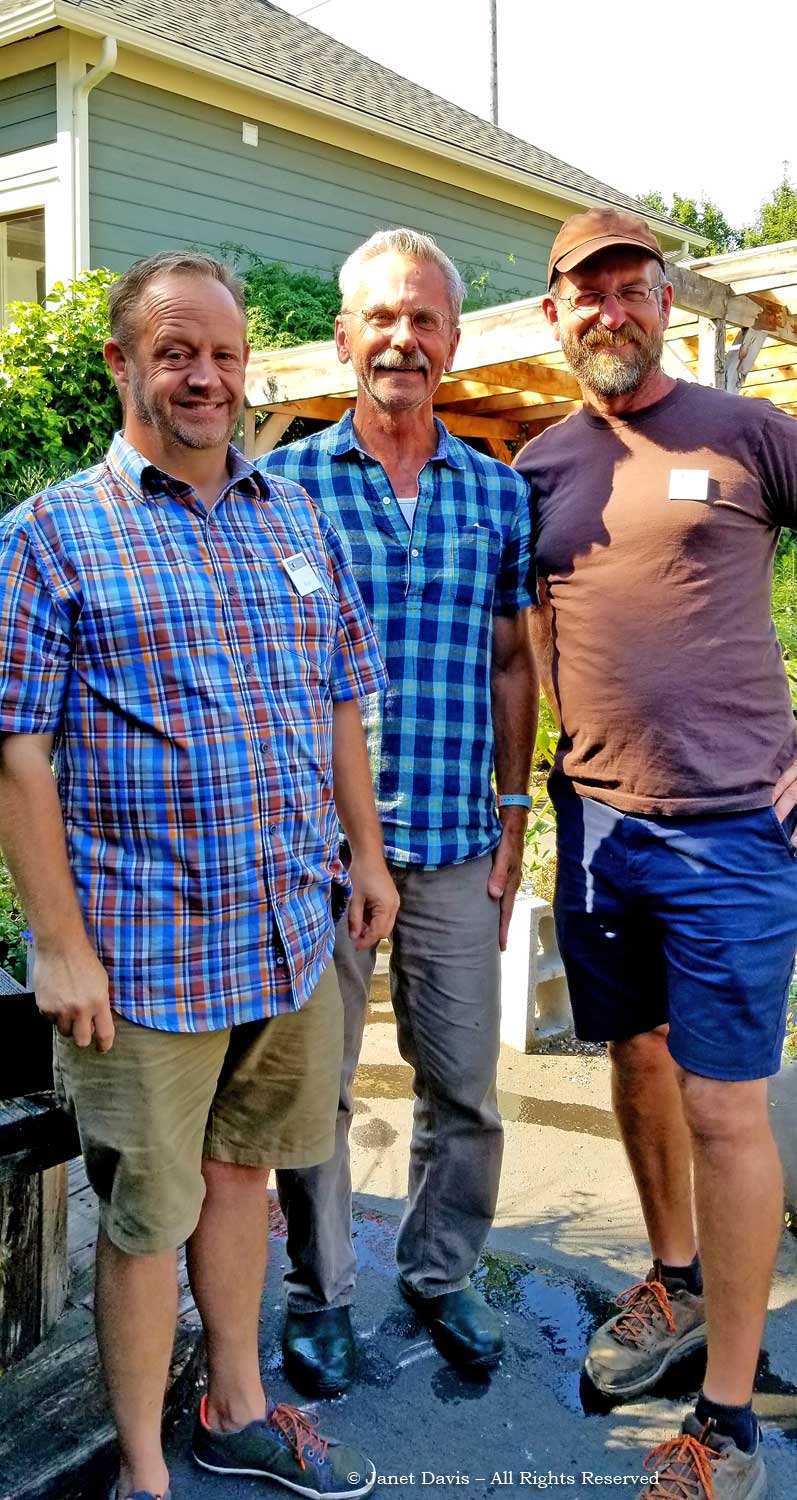
That was the day I also met a gaggle of Facebook gardening friends ‘in the flesh’, including from left below, Ann Amato, Vanessa Gardner Nagle, me, Kate Bryant and Patricia Cunningham.
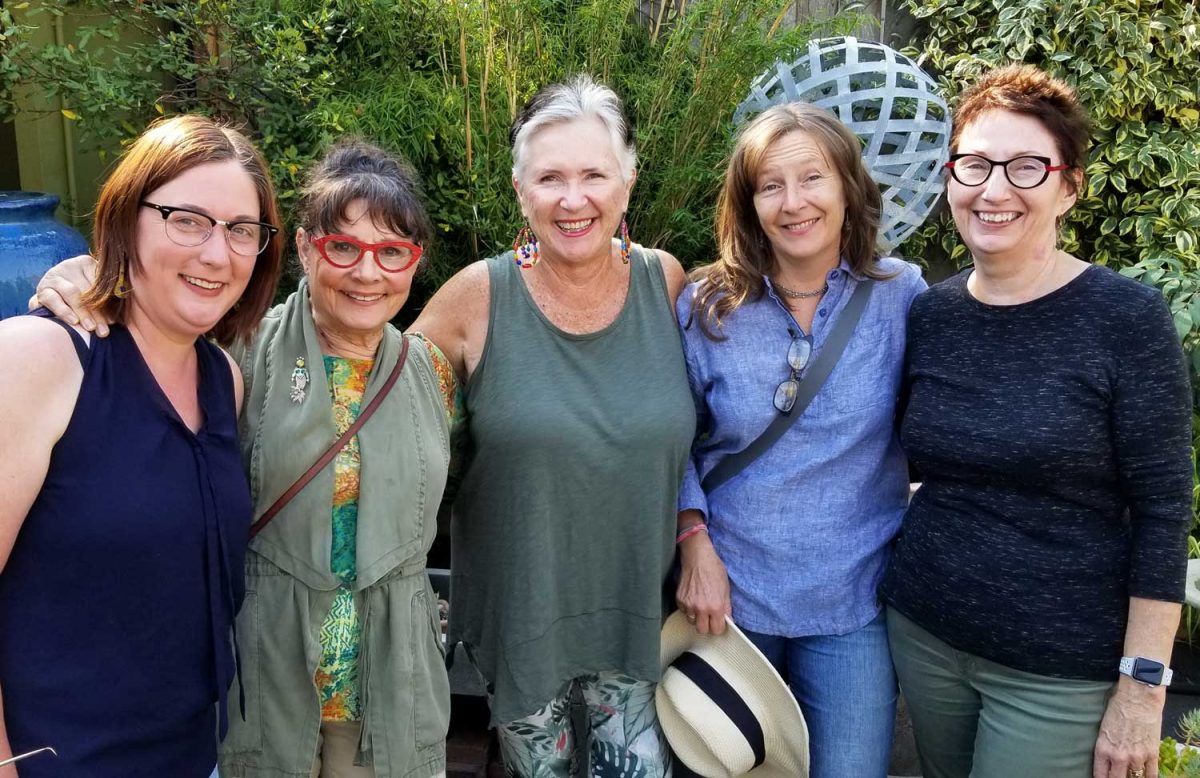
Facebook friend Evan Bean’s plant-rich garden near Washington’s Mount St. Helens is featured in this section, as is the Indianola garden of Nancy Heckler, also a Facebook friend. Prominent in this section is the renowned Heronswood Garden on the Kitsap Peninsula. I saw Heronswood in September 2005, when I picked up my mom and drove south from Vancouver, white-knuckling the freeway winding through Seattle towards the Bainbridge Ferry, on a garden-viewing adventure. Founded in 1987 by plant explorer Dan Hinkley and his partner, architect Robert Jones, Heronswood had been sold by then to Burpee Plants and was being managed by Dan, whom I photographed below (on his birthday). But, as Jennifer Jewell writes of what was a dark chapter in west coast horticulture: “By 2006, the Burpee company had declared bankruptcy and stopped maintaining the property.” The garden fell into disrepair until 2012, when it was purchased at auction by the Port Gamble S’Klallam Tribe. Today, Dan Hinkley is director and the garden is managed by the Port Gamble S’Klallam Foundation, with Joan Garrow as Executive Director. Caitlin’s photos capture its great beauty and the groundbreaking horticulture for which Heronswood has always been known.
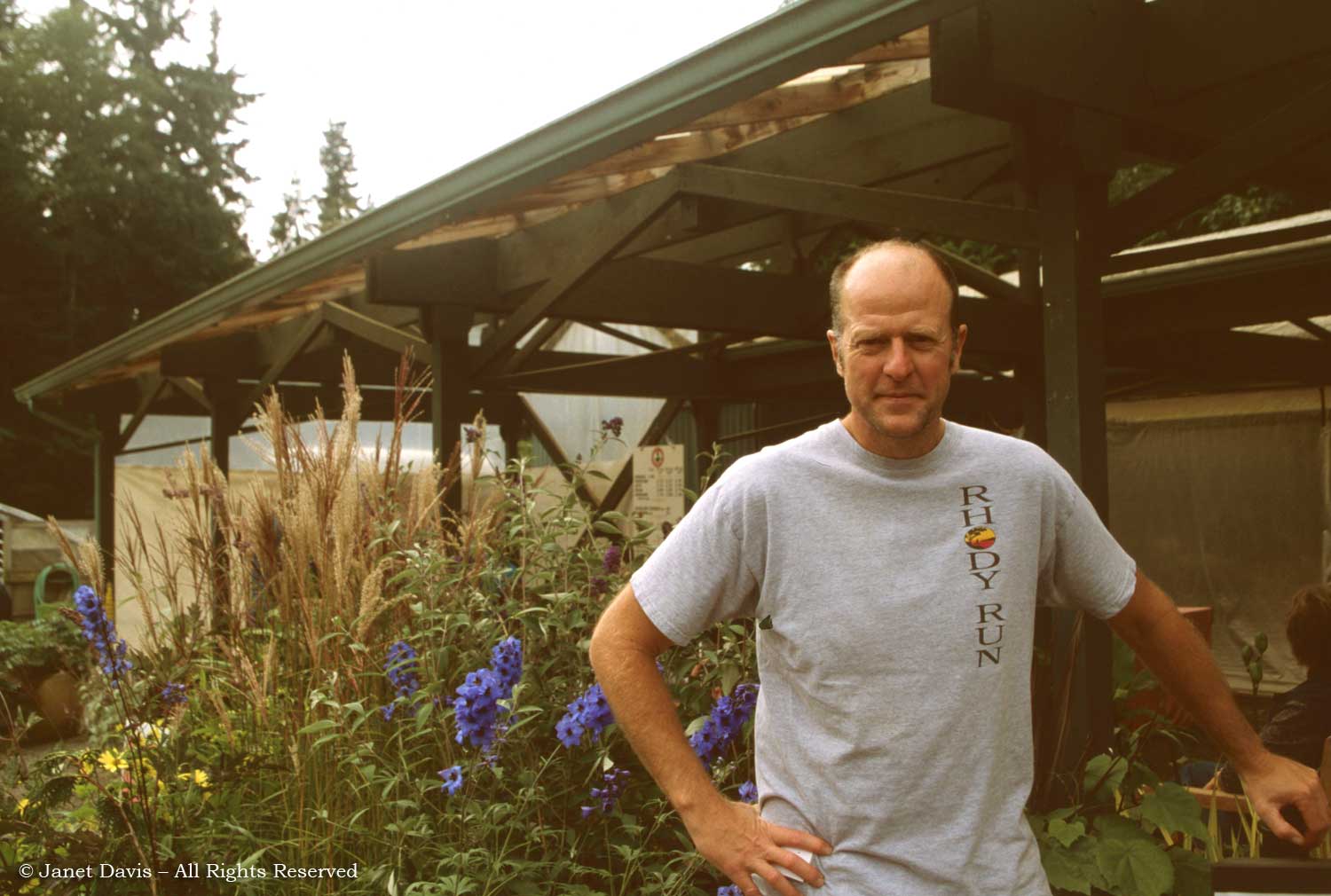
The Pacific Northwest section ends fittingly in Canada with Cougar Annie’s Garden at Boat Basin. Have I been dropping names in this blog? Oh yes, I certainly have, and also celebrating the many wonderful relationships I’ve made through Facebook. We are all reminded constantly how bad social media is; how it manipulates our lives. Perhaps, but I have a different view: it is the quicksilver that flows throughout the world, connecting passionate gardeners who would never have found each other without it.
So, is this an unbiased review? Of course not. Buy the book! Give it to a friend or family member on the west coast and inspire them with these 36 spectacular gardens and gardeners of the golden west. Oh, and Merry Christmas!

